Table of Contents
- Help Guide
- Table Of Contents
- Using the remote control
- Using the TV Menu Bar
- Home menu
- Using the Action Menu
- Introducing Android TV
- Troubleshooting
- Getting Started
- Using the Help Guide
- Remote control
- Keeping the TV updated
- Introducing Android TV
- Basic Operations
- Accessibility features
- Support Site
- Watching TV
- Using the TV with Other Devices
- USB devices
- Blu-ray and DVD players
- Set-top box (cable/satellite box) with an IR Blaster (IR Blaster compatible models only)
- Smartphones and tablets
- Computers, cameras, and camcorders
- Audio system
- Bluetooth devices
- Sony wireless subwoofer (optional) (Sony wireless subwoofer supported models only)
- BRAVIA Sync-compatible devices
- Viewing pictures in 4K from compatible devices (4K models only)
- Connecting to a Network
- Settings
- Troubleshooting
- Start here
- Picture (quality)/screen
- Picture quality is not as good as viewed at the store.
- Distorted picture.
- The screen flickers.
- No color/Dark picture/Color is not correct/Picture is too bright.
- Dark screen. How to brighten the screen.
- Color is not correct. How to adjust the color tone.
- Screen format/wide mode changes automatically.
- The screen suddenly changes to a video you do not recognize while watching TV.
- Suddenly the picture becomes small.
- Black bands appear at the edges of the screen.
- A black box appears on the screen.
- There are banners/tickers at the top or bottom of the screen.
- High resolution HDR pictures are not displayed.
- 3D pictures are not displayed. The 3D effect is weak. (3D models only)
- Black bars appear on both sides of the screen when watching 3D pictures. (3D models only)
- You cannot turn off 3D display while watching 3D content. (3D models only)
- The message [3D signal has been detected.] automatically appears when 3D signal is detected. (3D models only)
- A message about an app asking for permission to access a TV function is displayed.
- The screen becomes darker after a certain period of time. (only models equipped with an OLED panel)
- The message [Panel refresh did not finish] is displayed. (only models equipped with an OLED panel)
- You are concerned about an image retention. (only models equipped with an OLED panel)
- A white line appears on the screen. (only models equipped with an OLED panel)
- Panel refresh does not complete. (only models equipped with an OLED panel)
- Keyboard
- Broadcast reception
- Check these things first to troubleshoot your TV reception.
- Block noise or an error message appears and you cannot watch broadcasts.
- Ghosting or double images appear.
- Only snow noise or a black picture appears on the screen.
- There is picture or sound noise when viewing an analog TV channel.
- Some channels are blank.
- Poor reception or poor picture quality with digital broadcasts.
- You cannot view digital channels.
- You cannot receive or select channels.
- Some digital cable channels are not displayed.
- Broadcast HD formats have poor quality.
- Sound
- No sound but good picture.
- Audio noise.
- No audio or low audio with a home theater system.
- Distorted sound.
- Headphone/Bluetooth audio device volume cannot be adjusted.
- You want to output sound from both the headphones/Bluetooth audio device and the TV speakers.
- You are concerned about a delay between the picture and sound.
- Network (Internet/home)/apps
- The network name (SSID) of the wireless router to which you want to connect is not displayed.
- Sometimes video streaming quality is poor.
- Wi-Fi connection is lost or intermittent.
- Certain Internet video content displays a loss of detail.
- Good picture quality but no sound on Internet video content.
- Apps are inaccessible.
- The TV cannot access the Internet when IPv6 is set.
- Your TV cannot connect to the server.
- A message appears stating that the TV cannot connect to your network.
- You can connect to the Internet, but not to Google services.
- Remote control/accessories
- Power
- Connected devices
- No picture from a connected device.
- You cannot select a connected device in the Home Menu.
- Certain programs on digital sources display a loss of detail.
- Photo images or folders take time to display.
- You cannot find a connected BRAVIA Sync HDMI device.
- The STB MENU button on the remote control does not work.
- You cannot turn off the set-top box (cable/satellite box) using the TV's remote control through the IR Blaster function.
- You cannot control a second AV receiver.
- An external device (such as a set-top box or AV receiver) cannot be controlled via the IR Blaster. (IR Blaster compatible models only)
- Some media files in the USB device or server are not displayed.
- The TV cannot be found by a Wi-Fi Direct device.
- Operation cuts out, or a device does not work.
- The TV cannot connect to a Miracast device or Screen mirroring compatible device.
- Video or sound sometimes cuts out.
- Some paid content cannot be played.
- Illumination LED
- Index
- Help Guide
Sony KD-55X750F User Manual
Displayed below is the user manual for KD-55X750F by Sony which is a product in the TVs category. This manual has pages.
Related Manuals

Television
Use this Help Guide if you have any questions on how to use your TV.
The Online Help Guide includes the latest information. For details, see
“Using the Help Guide”.
Recommended Topics
Using the remote control
Using the TV Menu Bar
Home menu
Using the Action Menu
Introducing Android TV
Troubleshooting
Help Guide
Getting Started
Watching TV
Using the TV with Other Devices
Connecting to a Network
Settings
Troubleshooting
Index
SearchSearch

Table Of Contents
Help Guide i
Using the remote control 3
Using the TV Menu Bar 4
Home menu 5
Using the Action Menu 8
Introducing Android TV 11
Troubleshooting 12
Getting Started 13
Using the Help Guide 1
Remote control 152
Using the remote control 3
Functions of the remote control buttons 153
Upper buttons on the remote control 231
Middle buttons on the remote control 233
Lower buttons on the remote control 235
Searching by voice 217
Keeping the TV updated 189
Introducing Android TV 11
Displaying the picture in a small screen 167
Downloading apps from the GooglePlay 157
Moving apps to a USB memory device 169
Viewing Internet media 171
Enjoying content from your mobile device on the TV with Google Cast 172
Enjoying safe apps and video streaming services (Security & restrictions)
173
Basic Operations 156
Home menu 5
Using the TV Menu Bar 4
Using the “Content Bar”(DISCOVER) 207
Using the Action Menu 8
Selecting devices that are connectedto the TV 219
Changing the picture and soundquality to your preferences 237
Adjusting the picture quality 242
“Picture adjustments” advancedsettings 382
Adjusting the sound quality 244
“Sound adjustments” advancedsettings 386
TOC-1
Search

Illumination LED 238
Accessibility features 190
Support Site 191
Watching TV 14
Watching TV programs 192
Using the program guide 209
Using interactive broadcast TVservices 211
Watching in 3D (3D models only) 193
Understanding the basics of 3D TV(3D models only) 323
Preparing your 3D glasses (3Dmodels only) 325
Watching TV in 3D (3D models only) 327
Using the TV with Other Devices 15
USB devices 194
Playing content stored on a USBdevice 159
Information about USB devices usedfor storing photos and music 239
Supported files and formats 228
Photos 369
Music 370
Videos 372
Audio sampling rates (for videos) 379
External subtitles 381
Blu-ray and DVD players 195
Connecting a Blu-ray or DVD player 329
Watching Blu-ray and DVD discs 332
Set-top box (cable/satellite box) with an IR Blaster (IR Blaster compatible
models only) 196
Connecting an IR Blaster (IR Blastercompatible models only) 333
Setting up the IR Blaster to controlthe set-top box (cable/satellite box)(IR
Blaster compatible models only) 335
Smartphones and tablets 197
Displaying the screen of asmartphone/tablet on the TV usingthe Screen
mirroring function 161
Computers, cameras, and camcorders 198
Connecting a computer and viewingstored content 224
Connecting a camera or camcorderand viewing stored content 226
Computer video signal specifications 337
Audio system 199
Connecting an audio system 339
TOC-2
Search

Adjusting audio system-relatedsettings 342
Bluetooth devices 200
Connecting a Bluetooth device 344
Adjusting the AV sync setting 346
Supported Bluetooth profiles 348
Sony wireless subwoofer (optional) (Sony wireless subwoofer supported
models only) 201
Connecting a wireless subwoofer(optional) 349
Adjusting wireless subwoofer-relatedsettings (optional) 351
BRAVIA Sync-compatible devices 202
BRAVIA Sync overview 220
Using features available for BRAVIASync-compatible devices 353
Adjusting BRAVIA Sync settings 355
Viewing pictures in 4K from compatible devices (4K models only) 203
Viewing pictures in 4K resolution (4Kmodels only) 357
Settings for viewing pictures in 4Kresolution with higher quality (4Kmodels
only) 360
Connecting to a Network 16
Connecting to a network using aLAN cable 148
Connecting to a network using awireless connection 204
Using Wi-Fi to connect the TV toyour network 150
Using Wi-Fi Direct to connect to theTV (no wireless router required) 221
Home network features 205
Adjusting home network settings 362
Playing content from a computer 364
Playing content from a media server 366
RVU statement (RVU compliantmodels only) 367
Settings 17
Configuring the TV 206
[TV] 163
[Network & Accessories] 165
[System Preferences] 213
[Personal] 212
[Accounts] 368
[Expert panel settings](only modelsequipped with an OLED panel) 215
Setting a timer 166
Troubleshooting 12
Start here 174
TOC-3
Search

Self diagnostics 246
Software updates 146
If a full reset (restart) of the TV isrequired 229
Picture (quality)/screen 175
Picture quality is not as good as viewed at the store. 247
Distorted picture. 248
The screen flickers. 249
No color/Dark picture/Color is not correct/Picture is too bright. 250
Dark screen. How to brighten the screen. 251
Color is not correct. How to adjust the color tone. 252
Screen format/wide mode changes automatically. 253
The screen suddenly changes to a video you do not recognize while watching
TV. 254
Suddenly the picture becomes small. 255
Black bands appear at the edges of the screen. 256
A black box appears on the screen. 257
There are banners/tickers at the top or bottom of the screen. 258
High resolution HDR pictures are not displayed. 259
3D pictures are not displayed. The 3D effect is weak. (3D models only) 260
Black bars appear on both sides of the screen when watching 3D pictures.
(3D models only) 262
You cannot turn off 3D display while watching 3D content. (3D models only)
263
The message [3D signal has been detected.] automatically appears when 3D
signal is detected. (3D models only) 264
A message about an app asking for permission to access a TV function is
displayed. 265
The screen becomes darker after a certain period of time. (only models
equipped with an OLED panel) 266
The message [Panel refresh did not finish] is displayed. (only models
equipped with an OLED panel) 267
You are concerned about an image retention. (only models equipped with an
OLED panel) 268
A white line appears on the screen. (only models equipped with an OLED
panel) 269
Panel refresh does not complete. (only models equipped with an OLED panel)
270
Keyboard 178
TOC-4
Search

Broadcast reception 179
Check these things first to troubleshoot your TV reception. 271
Block noise or an error message appears and you cannot watch broadcasts.
272
Ghosting or double images appear. 273
Only snow noise or a black picture appears on the screen. 274
There is picture or sound noise when viewing an analog TV channel. 275
Some channels are blank. 276
Poor reception or poor picture quality with digital broadcasts. 277
You cannot view digital channels. 278
You cannot receive or select channels. 279
Some digital cable channels are not displayed. 280
Broadcast HD formats have poor quality. 281
Sound 181
No sound but good picture. 282
Audio noise. 283
No audio or low audio with a home theater system. 284
Distorted sound. 285
Headphone/Bluetooth audio device volume cannot be adjusted. 286
You want to output sound from both the headphones/Bluetooth audio device
and the TV speakers. 287
You are concerned about a delay between the picture and sound. 288
Network (Internet/home)/apps 182
The network name (SSID) of the wireless router to which you want to connect
is not displayed. 289
Sometimes video streaming quality is poor. 290
Wi-Fi connection is lost or intermittent. 291
Certain Internet video content displays a loss of detail. 292
Good picture quality but no sound on Internet video content. 293
Apps are inaccessible. 294
The TV cannot access the Internet when IPv6 is set. 295
Your TV cannot connect to the server. 296
A message appears stating that the TV cannot connect to your network.
297
You can connect to the Internet, but not to Google services. 298
Remote control/accessories 184
The remote control does not operate. 154
You cannot turn the Active 3DGlasses on. (3D models only) 299
TOC-5
Search

The LED indicator on the Active 3DGlasses blinks. (3D models only) 300
Power 185
The TV turns off automatically. 301
The TV turns on automatically. 302
After turning on the TV, it turns offimmediately. 303
The TV does not turn on. 304
Connected devices 186
No picture from a connected device. 306
You cannot select a connected device in the Home Menu. 307
Certain programs on digital sources display a loss of detail. 308
Photo images or folders take time to display. 309
You cannot find a connected BRAVIA Sync HDMI device. 310
The STB MENU button on the remote control does not work. 311
You cannot turn off the set-top box (cable/satellite box) using the TV's remote
control through the IR Blaster function. 312
You cannot control a second AV receiver. 313
An external device (such as a set-top box or AV receiver) cannot be
controlled via the IR Blaster. (IR Blaster compatible models only) 314
Some media files in the USB device or server are not displayed. 315
The TV cannot be found by a Wi-Fi Direct device. 316
Operation cuts out, or a device does not work. 317
The TV cannot connect to a Miracast device or Screen mirroring compatible
device. 318
Video or sound sometimes cuts out. 319
Some paid content cannot be played. 320
Illumination LED 188
The illumination LED sometimeslights up. 321
You want to disable the illuminationLED so that it does not light up orblink.
322
Index 18
Help Guide 20
TOC-6
Search

1
2
>Getting Started >Using the Help Guide
Print
Using the Help Guide
This Help Guide explains how to use this TV. Additionally, you can also
refer to the Setup Guide for descriptions about TV installation, and the
Reference Guide for parts descriptions and specifications of this TV.
In this Help Guide, you can read the desired information in order or
search for it directly. To search, select at the top of the
screen.
Help Guide versions
There are two versions of the Help Guide for your TV: the Built-in Help
Guide and the Online Help Guide. To view the Online Help Guide, your
TV must be connected to the Internet. To switch between the Built-in and
Online versions, use the switch button (A) at the top of the screen. You
can check which Help Guide is currently displayed by looking at the title at
the top of the screen.
Connect the TV to the Internet.
Select (A) to switch the Help Guide version.
Note
To use the latest features described in the Help Guide, you may
need to update the TV's software. For details about software
updates, see the Software updates page.
The images and illustrations used in the Help Guide may differ
depending on your TV model.
Help Guide
Getting Started
Watching TV
Using the TV with Other Devices
Connecting to a Network
Settings
Troubleshooting
Index
1
Search

Design and specifications are subject to change without notice.
Hint
To see if your TV is equipped with one of the functions described in
the Help Guide, refer to the paper manual or a Sony product
catalog.
This Help Guide is written for all regions/countries. Some
descriptions contained in this Help Guide do not apply to some
regions and countries.
Related topics
Connecting to a network using a LAN cable
Using Wi-Fi to connect the TV to your network
>Getting Started >Using the Help Guide
Go to page top
C-785-100-13(1)
Copyright 2018 Sony Visual Products Inc.
2
Search

1
2
>Getting Started >Remote control >Using the remote control
Print
Using the remote control
You can operate many of the TV’s features by using the / / /
and buttons.
The included remote control varies depending on your model. For
descriptions of the remote control buttons, refer to the Functions of the
remote control buttons.
Use the , , and buttons to “focus” on the
desired item.
Press the center of the button to select the item currently
in focus.
To return to the previous screen
Press the BACK button.
Related topics
Functions of the remote control buttons
The remote control does not operate.
Connecting to a Network
>Getting Started >Remote control >Using the remote control
Go to page top
Help Guide
Getting Started
Watching TV
Using the TV with Other Devices
Connecting to a Network
Settings
Troubleshooting
Index
3
SearchSearch

1
2
3
4
1
2
3
>Getting Started >Basic Operations >Using the TV Menu Bar
Print
Using the TV Menu Bar
This feature is available for TVs in which the included remote control does
not have a DISCOVER button.
Press the TV button while watching a TV broadcast to display the TV
Menu Bar. The TV Menu Bar allows access to your Favorite channels and
displays the TV Menu, which allows access to the program list.
Press the TV button while watching a TV broadcast.
The TV Menu Bar is displayed at the bottom of the screen.
Move the focus up or down to select the desired category.
Move the focus left or right to select the desired item.
Press the button to launch the selected item.
Adding channels to favorites
Press the TV button while watching a TV broadcast.
The TV Menu Bar is displayed at the bottom of the screen.
Move the focus down to select [Add channels to Favorites].
Add your favorite channels.
>Getting Started >Basic Operations >Using the TV Menu Bar
Go to page top
Help Guide
Getting Started
Watching TV
Using the TV with Other Devices
Connecting to a Network
Settings
Troubleshooting
Index
4
SearchSearch

1
2
3
>Getting Started >Basic Operations >Home menu
Print
Home menu
The screen that is displayed when you press the HOME button on the
remote control is called the Home Menu. The Home Menu allows you to
search for content, provides content recommendations, and provides
access to apps and settings. Available items vary depending on your
region/country and the current screen.
Searching (A)
You can search for various content by entering a search keyword using
the on-screen keyboard or by voice. The availability of the remote control
with a built-in microphone depends on your model/region/country.
Press the HOME button.
Select the microphone icon or Google Assistant icon at the top
of the screen.
Enter a search keyword by speaking into the microphone on
the remote control, or by pressing the button and
then using the on-screen keyboard.
Recommended (B)
Displays content recommended by installed apps.
Featured apps (C)
Displays apps recommended for installation.
Help Guide
Getting Started
Watching TV
Using the TV with Other Devices
Connecting to a Network
Settings
Troubleshooting
Index
5
SearchSearch

Apps (D)
Displays pre-installed and installed apps.
Hint
To install apps on the TV, refer to Downloading apps from the
Google Play.
The following apps are pre-installed at the time of purchase.
Video, Album, Music
Play back video files, pictures, and music files in a USB memory device.
For details, refer to Playing content stored on a USB device.
Screen mirroring
Display content from a computer or mobile device such as a smartphone
or tablet on the TV screen. You can enjoy pictures, video files, and web
browsing. For details, refer to Displaying the screen of a
smartphone/tablet on the TV using the Screen mirroring function.
Games (E)
Displays installed games.
Hint
To install games on the TV, refer to Downloading apps from the
Google Play.
Inputs (F)
You can select a device connected to the TV such as via HDMI or video
jacks, and switch input.
Settings (G)
You can configure the following settings.
Settings
Configures settings such as TV picture quality and sound. For details,
6
Search

refer to [TV].
Network Settings
Configures wireless LAN (Wi-Fi) and wired LAN settings. For details, refer
to [Network & Accessories].
Timers
Configures the schedule to turn on the TV and time until it is turned off.
For details, refer to Setting a timer.
Help
Displays the Help Guide (the instruction manual you are reading now) or
troubleshooting, and runs [Self diagnostics].
Hint
By connecting the TV to the Internet, you can access various
network services and features.
Related topics
Connecting to a network using a LAN cable
Using Wi-Fi to connect the TV to your network
>Getting Started >Basic Operations >Home menu
Go to page top
C-785-100-13(1)
Copyright 2018 Sony Visual Products Inc.
7
Search

1
2
3
4
>Getting Started >Basic Operations >Using the Action Menu
Print
Using the Action Menu
By pressing the ACTION MENU button, a menu appears and provides
quick access to the functions that are available for the currently displayed
screen, such as picture adjustments, sound adjustments, volume
adjustment for a connected device (such as headphones), and
display/audio settings. The items in the menu differ depending on the
selected screen.
Press the ACTION MENU button.
Move the focus left or right to select the desired category.
Move the focus up or down to select the desired item.
Press the button to launch the selected item.
Main ACTION MENU items
Pressing the ACTION MENU button while watching TV broadcasts or
content from external input displays settings that you can change while
watching at the top edge of the screen. This allows you to change settings
without having to go to the Home screen.
Hint
The menu items displayed in the ACTION MENU vary depending
on the device you use when watching and the type of broadcast or
image. The ACTION MENU may also not be displayed depending
on the display status of the TV or the app used.
Help Guide
Getting Started
Watching TV
Using the TV with Other Devices
Connecting to a Network
Settings
Troubleshooting
Index
8
SearchSearch

Display & Sound
Display
Display information about the channel/program/input you are viewing.
Picture-in-picture
Displays the picture that you are watching (TV programs or content from
HDMI-connected devices) as a small screen in the corner.
Picture Off
Turns off the picture while the sound remains on.
Live Football mode
Removes commentary from sports programs to make it sound like you
are watching in a stadium.
Picture adjustments
Changes settings related to picture quality.
3D
Configures settings related to 3D display. In 3D models, 3D content is
displayed while you are watching.
Wide mode
Adjust the picture size.
Sound adjustments
Changes settings related to sound.
Speakers
Select TV or external speakers.
Headphone volume
Adjusts the headphone volume.
Sync Menu
Set up BRAVIA Sync compatible devices for streamlined control.
TV
Watch TV
Switches to TV broadcasting.
Add to Favorites
Registers the program you are watching as a favorite. When you register
9
Search

a favorite, you can select it from the menu that is displayed when you
press the DISCOVER button.
Remove from Favorites
Removes a registered favorite.
Favorites setup
Registers favorites and changes the display name of favorites registered
using [Add to Favorites].
Menu
Home (Menu)
Displays the home screen of the set-top box (cable/satellite box)
connected to the TV for configuration.
Options
Displays the options menu of the set-top box (cable/satellite box)
connected to the TV.
>Getting Started >Basic Operations >Using the Action Menu
Go to page top
C-785-100-13(1)
Copyright 2018 Sony Visual Products Inc.
10
Search

>Getting Started >Introducing Android TV
Print
Introducing Android TV
Displaying the picture in a small screen
Downloading apps from the Google Play
Moving apps to a USB memory device
Viewing Internet media
Enjoying content from your mobile device on
the TV with Google Cast
Enjoying safe apps and video streaming
services (Security & restrictions)
>Getting Started >Introducing Android TV
Go to page top
Help Guide
Getting Started
Watching TV
Using the TV with Other Devices
Connecting to a Network
Settings
Troubleshooting
Index
C-785-100-13(1)
Copyright 2018 Sony Visual Products Inc.
11
SearchSearch

>Troubleshooting
Print
Troubleshooting
Start here
Experiencing trouble? Start here.
Picture (quality)/screen
Keyboard
Broadcast reception
Sound
Network (Internet/home)/apps
Remote control/accessories
Power
Connected devices
Illumination LED
>Troubleshooting
Go to page top
Help Guide
Getting Started
Watching TV
Using the TV with Other Devices
Connecting to a Network
Settings
Troubleshooting
Index
12
SearchSearch

>Getting Started
Print
Getting Started
Using the Help Guide
Remote control
Keeping the TV updated
Introducing Android TV
Basic Operations
Accessibility features
Support Site
>Getting Started
Go to page top
Help Guide
Getting Started
Watching TV
Using the TV with Other Devices
Connecting to a Network
Settings
Troubleshooting
Index
C-785-100-13(1)
Copyright 2018 Sony Visual Products Inc.
13
SearchSearch

>Using the TV with Other Devices
Print
Using the TV with Other Devices
USB devices
Blu-ray and DVD players
Set-top box (cable/satellite box) with an IR
Blaster (IR Blaster compatible models only)
Smartphones and tablets
Computers, cameras, and camcorders
Audio system
Bluetooth devices
Sony wireless subwoofer (optional) (Sony
wireless subwoofer supported models only)
BRAVIA Sync-compatible devices
Viewing pictures in 4K from compatible
devices (4K models only)
>Using the TV with Other Devices
Help Guide
Getting Started
Watching TV
Using the TV with Other Devices
Connecting to a Network
Settings
Troubleshooting
Index
15
SearchSearch

>Connecting to a Network
Print
Connecting to a Network
Connecting to a network using a LAN cable
Connecting to a network using a wireless
connection
Home network features
>Connecting to a Network
Go to page top
Help Guide
Getting Started
Watching TV
Using the TV with Other Devices
Connecting to a Network
Settings
Troubleshooting
Index
C-785-100-13(1)
Copyright 2018 Sony Visual Products Inc.
16
SearchSearch

>Index
Print
Index
TV programs
DISCOVER
GUIDE
Interactive broadcasts
Channels
Parental lock
Picture/display
Picture-in-picture
3D
4K pictures
HOME
Picture & Display
Date & time
Language
Expert panel settings
Pixel shift
Panel refresh
Sound/voice
Voice search, using
Sound
Speech recognition
Remote control
Remote control, using
Voice search
HOME
DISCOVER
ACTION MENU
Inputs
SYNC MENU
Connections
Google Cast Wi Fi Direct
Help Guide
Getting Started
Watching TV
Using the TV with Other Devices
Connecting to a Network
Settings
Troubleshooting
Index
18
SearchSearch

Miracast
Screen mirroring
Bluetooth
BRAVIA Sync
Internet
External devices
Blu-ray/DVD players, connecting
USB memory devices, etc.
Smartphones/tablets
Computers
Digital cameras, camcorders
Audio systems
Wireless subwoofer
Apps
Moving to USB memory devices
Google Play Store
YouTube
Netflix
A list of recently used apps
File playback
Computers
Digital cameras, camcorders
Supported files and formats
Other
Restart System software update
>Index
Go to page top
C-785-100-13(1)
Copyright 2018 Sony Visual Products Inc.
19
Search

Television
Getting Started [1]
Using the Help Guide [2]
Remote control [3]
Using the remote control [4]
Functions of the remote control buttons [5]
Upper buttons on the remote control [6]
Middle buttons on the remote control [7]
Lower buttons on the remote control [8]
Searching by voice [9]
Keeping the TV updated [10]
Introducing Android TV [11]
Displaying the picture in a small screen [12]
Downloading apps from the Google Play [13]
Moving apps to a USB memory device [14]
Viewing Internet media [15]
Enjoying content from your mobile device on the TV with Google Cast [16]
Enjoying safe apps and video streaming services (Security & restrictions) [17]
Basic Operations [18]
Home menu [19]
Using the TV Menu Bar [20]
Using the “Content Bar” (DISCOVER) [21]
Using the Action Menu [22]
Selecting devices that are connected to the TV [23]
Changing the picture and sound quality to your preferences [24]
Adjusting the picture quality [25]
“Picture adjustments” advanced settings [26]
Adjusting the sound quality [27]
“Sound adjustments” advanced settings [28]
Illumination LED [29]
Accessibility features [30]
Support Site [31]
20
Search

Watching TV [32]
Watching TV programs [33]
Using the program guide [34]
Using interactive broadcast TV services [35]
Watching in 3D (3D models only) [36]
Understanding the basics of 3D TV (3D models only) [37]
Preparing your 3D glasses (3D models only) [38]
Watching TV in 3D (3D models only) [39]
Using the TV with Other Devices [40]
USB devices [41]
Playing content stored on a USB device [42]
Information about USB devices used for storing photos and music [43]
Supported files and formats [44]
Photos [45]
Music [46]
Videos [47]
Audio sampling rates (for videos) [48]
External subtitles [49]
Blu-ray and DVD players [50]
Connecting a Blu-ray or DVD player [51]
Watching Blu-ray and DVD discs [52]
Set-top box (cable/satellite box) with an IR Blaster (IR Blaster compatible
models only) [53]
Connecting an IR Blaster (IR Blaster compatible models only) [54]
Setting up the IR Blaster to control the set-top box (cable/satellite box) (IR Blaster
compatible models only) [55]
Smartphones and tablets [56]
Displaying the screen of a smartphone/tablet on the TV using the Screen mirroring
function [57]
Computers, cameras, and camcorders [58]
Connecting a computer and viewing stored content [59]
Connecting a camera or camcorder and viewing stored content [60]
Computer video signal specifications [61]
Audio system [62]
21
Search

Connecting an audio system [63]
Adjusting audio system-related settings [64]
Bluetooth devices [65]
Connecting a Bluetooth device [66]
Adjusting the AV sync setting [67]
Supported Bluetooth profiles [68]
Sony wireless subwoofer (optional) (Sony wireless subwoofer supported
models only) [69]
Connecting a wireless subwoofer (optional) [70]
Adjusting wireless subwoofer-related settings (optional) [71]
BRAVIA Sync-compatible devices [72]
BRAVIA Sync overview [73]
Using features available for BRAVIA Sync-compatible devices [74]
Adjusting BRAVIA Sync settings [75]
Viewing pictures in 4K from compatible devices (4K models only) [76]
Viewing pictures in 4K resolution (4K models only) [77]
Settings for viewing pictures in 4K resolution with higher quality (4K models only)
[78]
Connecting to a Network [79]
Connecting to a network using a LAN cable [80]
Connecting to a network using a wireless connection [81]
Using Wi-Fi to connect the TV to your network [82]
Using Wi-Fi Direct to connect to the TV (no wireless router required) [83]
Home network features [84]
Adjusting home network settings [85]
Playing content from a computer [86]
Playing content from a media server [87]
RVU statement (RVU compliant models only) [88]
Settings [89]
Configuring the TV [90]
[TV] [91]
[Network & Accessories] [92]
[System Preferences] [93]
[Personal] [94]
22
Search

[Accounts] [95]
[Expert panel settings](only models equipped with an OLED panel) [96]
Setting a timer [97]
Troubleshooting [98]
Start here [99]
Self diagnostics [100]
Software updates [101]
If a full reset (restart) of the TV is required [102]
Picture (quality)/screen [103]
Picture quality is not as good as viewed at the store. [104]
Distorted picture. [105]
The screen flickers. [106]
No color/Dark picture/Color is not correct/Picture is too bright. [107]
Dark screen. How to brighten the screen. [108]
Color is not correct. How to adjust the color tone. [109]
Screen format/wide mode changes automatically. [110]
The screen suddenly changes to a video you do not recognize while watching TV.
[111]
Suddenly the picture becomes small. [112]
Black bands appear at the edges of the screen. [113]
A black box appears on the screen. [114]
There are banners/tickers at the top or bottom of the screen. [115]
High resolution HDR pictures are not displayed. [116]
3D pictures are not displayed. The 3D effect is weak. (3D models only) [117]
Black bars appear on both sides of the screen when watching 3D pictures. (3D
models only) [118]
You cannot turn off 3D display while watching 3D content. (3D models only) [119]
The message [3D signal has been detected.] automatically appears when 3D signal
is detected. (3D models only) [120]
A message about an app asking for permission to access a TV function is displayed.
[121]
The screen becomes darker after a certain period of time. (only models equipped
with an OLED panel) [122]
The message [Panel refresh did not finish] is displayed. (only models equipped with
an OLED panel) [123]
23
Search

You are concerned about an image retention. (only models equipped with an OLED
panel) [124]
A white line appears on the screen. (only models equipped with an OLED panel)
[125]
Panel refresh does not complete. (only models equipped with an OLED panel) [126]
Keyboard [127]
Broadcast reception [128]
Check these things first to troubleshoot your TV reception. [129]
Block noise or an error message appears and you cannot watch broadcasts. [130]
Ghosting or double images appear. [131]
Only snow noise or a black picture appears on the screen. [132]
There is picture or sound noise when viewing an analog TV channel. [133]
Some channels are blank. [134]
Poor reception or poor picture quality with digital broadcasts. [135]
You cannot view digital channels. [136]
You cannot receive or select channels. [137]
Some digital cable channels are not displayed. [138]
Broadcast HD formats have poor quality. [139]
Sound [140]
No sound but good picture. [141]
Audio noise. [142]
No audio or low audio with a home theater system. [143]
Distorted sound. [144]
Headphone/Bluetooth audio device volume cannot be adjusted. [145]
You want to output sound from both the headphones/Bluetooth audio device and the
TV speakers. [146]
You are concerned about a delay between the picture and sound. [147]
Network (Internet/home)/apps [148]
The network name (SSID) of the wireless router to which you want to connect is not
displayed. [149]
Sometimes video streaming quality is poor. [150]
Wi-Fi connection is lost or intermittent. [151]
Certain Internet video content displays a loss of detail. [152]
Good picture quality but no sound on Internet video content. [153]
Apps are inaccessible. [154]
24
Search

The TV cannot access the Internet when IPv6 is set. [155]
Your TV cannot connect to the server. [156]
A message appears stating that the TV cannot connect to your network. [157]
You can connect to the Internet, but not to Google services. [158]
Remote control/accessories [159]
The remote control does not operate. [160]
You cannot turn the Active 3D Glasses on. (3D models only) [161]
The LED indicator on the Active 3D Glasses blinks. (3D models only) [162]
Power [163]
The TV turns off automatically. [164]
The TV turns on automatically. [165]
After turning on the TV, it turns off immediately. [166]
The TV does not turn on. [167]
Connected devices [168]
No picture from a connected device. [169]
You cannot select a connected device in the Home Menu. [170]
Certain programs on digital sources display a loss of detail. [171]
Photo images or folders take time to display. [172]
You cannot find a connected BRAVIA Sync HDMI device. [173]
The STB MENU button on the remote control does not work. [174]
You cannot turn off the set-top box (cable/satellite box) using the TV's remote control
through the IR Blaster function. [175]
You cannot control a second AV receiver. [176]
An external device (such as a set-top box or AV receiver) cannot be controlled via
the IR Blaster. (IR Blaster compatible models only) [177]
Some media files in the USB device or server are not displayed. [178]
The TV cannot be found by a Wi-Fi Direct device. [179]
Operation cuts out, or a device does not work. [180]
What kind of devices can be connected using the Screen mirroring function? [181]
The TV cannot connect to a Miracast device or Screen mirroring compatible device.
[182]
Video or sound sometimes cuts out. [183]
Some paid content cannot be played. [184]
Illumination LED [185]
The illumination LED sometimes lights up. [186]
25
Search

1
You want to disable the illumination LED so that it does not light up or blink. [187]
Index [188]
[1]
Getting Started
Using the Help Guide
Remote control
Keeping the TV updated
Introducing Android TV
Basic Operations
Accessibility features
Support Site
[2] Getting Started
Using the Help Guide
This Help Guide explains how to use this TV. Additionally, you can also refer to the Setup Guide for
descriptions about TV installation, and the Reference Guide for parts descriptions and specifications of
this TV.
In this Help Guide, you can read the desired information in order or search for it directly. To search,
select at the top of the screen.
Help Guide versions
There are two versions of the Help Guide for your TV: the Built-in Help Guide and the Online Help
Guide. To view the Online Help Guide, your TV must be connected to the Internet. To switch between
the Built-in and Online versions, use the switch button (A) at the top of the screen. You can check
which Help Guide is currently displayed by looking at the title at the top of the screen.
Connect the TV to the Internet.
26
Search

2Select (A) to switch the Help Guide version.
Note
To use the latest features described in the Help Guide, you may need to update the TV's
software. For details about software updates, see the Software updates page.
The images and illustrations used in the Help Guide may differ depending on your TV model.
Design and specifications are subject to change without notice.
Hint
To see if your TV is equipped with one of the functions described in the Help Guide, refer to the
paper manual or a Sony product catalog.
This Help Guide is written for all regions/countries. Some descriptions contained in this Help
Guide do not apply to some regions and countries.
Related topics
Connecting to a network using a LAN cable
Using Wi-Fi to connect the TV to your network
[3] Getting Started
Remote control
Using the remote control
Functions of the remote control buttons This section explains the remote control buttons in three
separate blocks.
Searching by voice This feature is available for remote controls that have a button or
button.
[4] Getting Started | Remote control
Using the remote control
You can operate many of the TV’s features by using the / / / and buttons.
27
Search

1
2
The included remote control varies depending on your model. For descriptions of the remote control
buttons, refer to the Functions of the remote control buttons.
Use the , , and buttons to “focus” on the desired item.
Press the center of the button to select the item currently in focus.
To return to the previous screen
Press the BACK button.
Related topics
Functions of the remote control buttons
The remote control does not operate.
Connecting to a Network
[5] Getting Started | Remote control
Functions of the remote control buttons
Upper buttons on the remote control
Middle buttons on the remote control
Lower buttons on the remote control
[6] Getting Started | Remote control | Functions of the remote control buttons
Upper buttons on the remote control
The included remote control, as well as the arrangement of the buttons and the button names, vary
depending on your model/country/region.
INPUT
Display and select the input source.
(Google Assistant)/ (Microphone)
Use the Google Assistant (only on limited region/country/language/TV model) or
28
Search

Voice Search. (e.g., Search various content by voice.)
(TV standby)
Turn on or turn off the TV (standby mode).
SYNC MENU
Display the BRAVIA Sync Menu.
DIGITAL/ANALOG, ANT
Switch between digital and analog mode.
STB MENU
Display the connected set-top box (cable/satellite box) menu after connecting and
setting up the IR Blaster.
Number Button
Use with the 0-9 buttons to select digital channels.
DISPLAY
Display information about the channel/program/input you are viewing.
EXIT, SAIR SALIR
Return to the previous screen or exit from the menu. When an Interactive
Application service is available, press to exit from the service.
Google Play
Access the “Google Play” online service.
NETFLIX (Only on limited region/country/TV model)
Access the “Netflix” online service.
Related topics
Middle buttons on the remote control
Lower buttons on the remote control
[7] Getting Started | Remote control | Functions of the remote control buttons
Middle buttons on the remote control
The included remote control, as well as the arrangement of the buttons and the button names, vary
depending on your model/country/region.
Color buttons
Execute corresponding function at that time.
ACTION MENU
Display a list of contextual functions.
GUIDE
Display the digital program guide.
APPS
29
Search

Access various services and applications.
BACK
Return to the previous screen.
HOME
Display the TV Home Menu.
TV
Switch to a TV broadcast. Also display the TV Menu Bar depending on your
model/region/country.
DISCOVER
Bring up the Content Bar to search for content.
/ / / / (Navigation D-Pad)
On screen menu navigation and selection.
Related topics
Upper buttons on the remote control
Lower buttons on the remote control
[8] Getting Started | Remote control | Functions of the remote control buttons
Lower buttons on the remote control
The included remote control, as well as the arrangement of the buttons and the button names, vary
depending on your model/country/region.
VOL +/- (Volume)
Adjust the volume.
JUMP
Jump back and forth between two channels or inputs. The TV alternates between
the current channel or input and the last channel or input that was selected.
MUTING
Mute the sound. Press again to restore the sound.
CH +/- (Channel)
Select the channel.
AUDIO
Change the language for the program currently being viewed.
/ / / / / /
Operate media contents on the TV and connected BRAVIA Sync-compatible
device.
SUBTITLE/CC
Turn subtitles on or off (when the feature is available).
30
Search

1
2
HELP
Display the Help menu. Help Guide can be accessed from here.
WIDE
Change the screen format.
PIC OFF
Turn the picture off, while sound remains on.
DISPLAY
Display information about the channel/program/input you are viewing.
Related topics
Upper buttons on the remote control
Middle buttons on the remote control
[9] Getting Started | Remote control
Searching by voice
Remote controls that can perform Voice Search have a button or button,
and a built-in microphone. By speaking into the microphone, you can search for various content.
Press the button or button.
The LED on the remote control will light up.
Speak into the microphone.
Speech examples may be displayed depending on your model.
Search results are displayed when you speak into the microphone.
Hint
Depending on the search results, if you press on the remote control, more search
results will be displayed.
Screenshot example when there are more search results
When you cannot search using your voice
Register the remote control that has the button or button to the TV again by
31
Search

pressing the HOME button and selecting [Settings] — [Voice Remote Control]
Note
An Internet connection is required to use Voice search.
The type of remote control supplied with the TV, and the availability of a remote control with a
built-in microphone varies depending on your model/region/country. An optional remote control is
available in some models/regions/countries.
[10] Getting Started
Keeping the TV updated
The functions below are performed when the TV is in standby mode. To keep your TV updated, we
recommend that you turn off the TV normally by using the power button on the remote control or TV.
Download of data such as program guides
Software download (when [Automatic software download] is enabled)
[11] Getting Started
Introducing Android TV
Displaying the picture in a small screen
Downloading apps from the Google Play
Moving apps to a USB memory device
Viewing Internet media
Enjoying content from your mobile device on the TV with Google Cast
Enjoying safe apps and video streaming services (Security & restrictions)
[12] Getting Started | Introducing Android TV
Displaying the picture in a small screen
You can display the picture that you are watching (TV programs or content from HDMI-connected
devices) as a small screen in the corner.
32
Search

1
1
2
Displaying the picture as a small screen
Press the ACTION MENU button while watching a TV program or content from an HDMI
device, and then select [Picture-in-picture].
The current picture is displayed as a small screen in the corner.
Note
The small screen is displayed on top of the last app used. However, the app that is displayed
may vary depending on certain conditions.
Operations such as changing the channel is disabled while watching with a small screen.
TV program, external input such as an HDMI device, apps that play back movies, or some apps
that play back pictures or music cannot be displayed at the same time.
The position of the small screen is automatically adjusted. You cannot set it manually.
Closing the small screen or returning it to full screen
Press and hold the HOME button to display a list of recently used apps.
Close the small screen by selecting the desired button under the small screen, or return it
to full screen (A).
The image below is a visual representation and may vary from the actual screen.
A list of recently used apps (B) is displayed under the small screen.
Note
If you switch to an app that plays back movies, pictures, or music from the list of recently used
apps, the small screen closes (the TV program or playback from the HDMI device closes). To
return to the TV program or HDMI device, press the TV button or switch the input.
[13] Getting Started | Introducing Android TV
Downloading apps from the Google Play
You can download apps from the Google Play to the TV, just like you do with smartphones and tablets.
33
Search

1
2
1
2
Note
You can only download apps that are compatible with TVs. They may differ from apps for
smartphones/tablets.
An Internet connection and Google account are required to download apps from the Google
Play.
Hint
If you do not have a Google account or want to create a shared account, create a new account
by accessing the following website.
https://accounts.google.com/signup
The website above may vary depending on your region/country. It is also subject to change
without notice. For details, refer to the Google homepage.
We recommend that you create a Google account on a computer or mobile device.
Press the HOME button, then select [Google Play Store] under [Apps].
To install an app, select an app you want to download. The app will start downloading.
After downloading, the app is automatically installed and added. Its icon appears in the Home Menu,
allowing you to launch it.
About paid apps
There are free apps and paid apps in the Google Play. To purchase a paid app, a prepaid Google Play
gift card code or credit card information is required. You can purchase a Google Play gift card from
various retailers.
To delete an app
Press the HOME button, select [Google Play Store] under [Apps], and then select [My
Apps].
Select an app to be deleted, and then uninstall the app.
Related topics
Connecting to a network using a LAN cable
34
Search

1
2
3
4
5
6
1
Using Wi-Fi to connect the TV to your network
Moving apps to a USB memory device
[14] Getting Started | Introducing Android TV
Moving apps to a USB memory device
You can move downloaded apps to a USB memory device to increase the space available in the TV.
Note
When you format a USB memory device, all data saved in the USB memory device will be
deleted. Back up your important data before formatting.
Performing this procedure formats the USB memory device for exclusive use with the TV.
Therefore, you may be unable to use the USB memory device with a computer, etc.
Some apps cannot be moved to a USB memory device.
Connect a USB memory device to the TV.
Press the HOME button, select [Settings] — [Storage & reset] — the desired USB memory
device.
Format it as an internal storage device.
When formatting is finished, press the HOME button, then select [Settings] — [Apps].
Select the app that you want to move to the USB memory device.
Select the USB memory device from the used storage. The app is moved to the USB
memory device.
Hint
Repeat steps 4 to 6 to move additional apps to the USB memory device.
To remove a USB memory device
Press the HOME button, select [Settings] — [Storage & reset] — the desired USB memory
35
Search

device, and then select the option to remove it.
Note
The USB memory device is used only for saving apps. To use the USB memory device for other
purposes, you must format it again.
If you delete an app in the USB memory device using a computer, you will be unable to launch it
from the TV.
If you remove a USB memory device from the TV, you will be unable to use the apps that were
moved to the USB memory device.
You cannot specify a USB memory device as the installation location of an app. First install the
app on the TV as normal, and then move it to the USB memory device.
[15] Getting Started | Introducing Android TV
Viewing Internet media
You can use video streaming services such as YouTube and Netflix to watch Internet content. The
available services vary depending on your country and region. You can launch these services by
selecting their tiles in the Home Menu.
Note
An Internet connection is required to watch Internet content.
Related topics
Enjoying safe apps and video streaming services (Security & restrictions)
Connecting to a network using a LAN cable
Using Wi-Fi to connect the TV to your network
[16] Getting Started | Introducing Android TV
Enjoying content from your mobile device on the
TV with Google Cast
Google Cast allows you to wirelessly cast content from your favorite websites and apps to your TV,
36
Search

1
2
3
1
directly from your computer or mobile device.
Connect a mobile device such as a smartphone or tablet to the same home network that
the TV is connected to.
Launch a Google Cast supported app on the mobile device.
Select the (cast) icon in the app.
The screen of the mobile device is displayed on the TV.
Note
An Internet connection is required to use Google Cast.
Related topics
Connecting to a network using a LAN cable
Using Wi-Fi to connect the TV to your network
[17] Getting Started | Introducing Android TV
Enjoying safe apps and video streaming services
(Security & restrictions)
You can ensure safe use of the TV by setting installation restrictions on apps that are downloaded from
unknown sources, or age restrictions on programs and videos.
Press the HOME button, then select [Settings] — then options such as [Security &
restrictions] or [Parental lock (Broadcast)] .
Displayed as [Parental lock] depending on your model.
Note
If you change the [Security & restrictions] settings, your device and personal data are more
vulnerable to attack by unknown apps from sources other than Play Store. You agree that you
are solely responsible for any damage to your device or loss of data that may result from using
these apps.
*
*
37
Search

1
Hint
Other separate restrictions may be available depending on the app. For details, refer to the app's
help guide.
[18] Getting Started
Basic Operations
Home menu
Using the TV Menu Bar This feature is available for TVs in which the included remote control does not
have a DISCOVER button.
Using the “Content Bar” (DISCOVER) This feature is available for TVs in which the included remote
control has a DISCOVER button.
Using the Action Menu
Selecting devices that are connected to the TV
Changing the picture and sound quality to your preferences
Illumination LED
[19] Getting Started | Basic Operations
Home menu
The screen that is displayed when you press the HOME button on the remote control is called the
Home Menu. The Home Menu allows you to search for content, provides content recommendations,
and provides access to apps and settings. Available items vary depending on your region/country and
the current screen.
Searching (A)
You can search for various content by entering a search keyword using the on-screen keyboard or by
voice. The availability of the remote control with a built-in microphone depends on your
model/region/country.
Press the HOME button.
38
Search

2
3
Select the microphone icon or Google Assistant icon at the top of the screen.
Enter a search keyword by speaking into the microphone on the remote control, or by
pressing the button and then using the on-screen keyboard.
Recommended (B)
Displays content recommended by installed apps.
Featured apps (C)
Displays apps recommended for installation.
Apps (D)
Displays pre-installed and installed apps.
Hint
To install apps on the TV, refer to Downloading apps from the Google Play.
The following apps are pre-installed at the time of purchase.
Video, Album, Music
Play back video files, pictures, and music files in a USB memory device. For details, refer to Playing
content stored on a USB device.
Screen mirroring
Display content from a computer or mobile device such as a smartphone or tablet on the TV screen.
You can enjoy pictures, video files, and web browsing. For details, refer to Displaying the screen of a
smartphone/tablet on the TV using the Screen mirroring function.
Games (E)
Displays installed games.
Hint
To install games on the TV, refer to Downloading apps from the Google Play.
Inputs (F)
39
Search

You can select a device connected to the TV such as via HDMI or video jacks, and switch input.
Settings (G)
You can configure the following settings.
Settings
Configures settings such as TV picture quality and sound. For details, refer to [TV].
Network Settings
Configures wireless LAN (Wi-Fi) and wired LAN settings. For details, refer to [Network & Accessories].
Timers
Configures the schedule to turn on the TV and time until it is turned off. For details, refer to Setting a
timer.
Help
Displays the Help Guide (the instruction manual you are reading now) or troubleshooting, and runs
[Self diagnostics].
Hint
By connecting the TV to the Internet, you can access various network services and features.
Related topics
Connecting to a network using a LAN cable
Using Wi-Fi to connect the TV to your network
[20] Getting Started | Basic Operations
Using the TV Menu Bar
This feature is available for TVs in which the included remote control does not have a DISCOVER
button.
Press the TV button while watching a TV broadcast to display the TV Menu Bar. The TV Menu Bar
allows access to your Favorite channels and displays the TV Menu, which allows access to the
program list.
40
Search

1
2
3
4
1
2
3
1
2
3
4
Press the TV button while watching a TV broadcast.
The TV Menu Bar is displayed at the bottom of the screen.
Move the focus up or down to select the desired category.
Move the focus left or right to select the desired item.
Press the button to launch the selected item.
Adding channels to favorites
Press the TV button while watching a TV broadcast.
The TV Menu Bar is displayed at the bottom of the screen.
Move the focus down to select [Add channels to Favorites].
Add your favorite channels.
[21] Getting Started | Basic Operations
Using the “Content Bar” (DISCOVER)
This feature is available for TVs in which the included remote control has a DISCOVER button.
You can use the “Content Bar” to search for various content such as TV programs and Internet videos.
The content displayed in the “Content Bar” varies depending on your model/region/country.
Press the DISCOVER button.
The “Content Bar” is displayed at the bottom of the screen.
Move the focus up or down to select the desired category.
Move the focus left or right to select the desired item.
Press the button to launch the selected item.
To change the settings of this function
41
Search

1
2
3
Press the DISCOVER button.
The “Content Bar” is displayed at the bottom of the screen.
Move the focus down to the [Settings] category.
Select the desired item to change the settings.
Available options
[Show/Hide categories]
Select content categories to be shown in DISCOVER. You cannot hide [Settings].
You can hide [Top Picks] depending on your TV model.
[Reorder categories]
Select a content category to reorder.
[Add channels to Favorites]
Add your favorite channels to DISCOVER.
[Add genre categories]
Add genres to create your own custom content category.
[Add keyword categories]
Add keywords to create your own custom content category.
[Display size]
Select the display size of the menu.
[Sort TV channels]
Select the type of TV program sorting.
Note
Some options may not be available depending on your model/region/country.
[22] Getting Started | Basic Operations
Using the Action Menu
By pressing the ACTION MENU button, a menu appears and provides quick access to the functions
that are available for the currently displayed screen, such as picture adjustments, sound adjustments,
volume adjustment for a connected device (such as headphones), and display/audio settings. The
items in the menu differ depending on the selected screen.
42
Search

1
2
3
4
Press the ACTION MENU button.
Move the focus left or right to select the desired category.
Move the focus up or down to select the desired item.
Press the button to launch the selected item.
Main ACTION MENU items
Pressing the ACTION MENU button while watching TV broadcasts or content from external input
displays settings that you can change while watching at the top edge of the screen. This allows you to
change settings without having to go to the Home screen.
Hint
The menu items displayed in the ACTION MENU vary depending on the device you use when
watching and the type of broadcast or image. The ACTION MENU may also not be displayed
depending on the display status of the TV or the app used.
Display & Sound
Display
Display information about the channel/program/input you are viewing.
Picture-in-picture
Displays the picture that you are watching (TV programs or content from HDMI-connected devices) as
a small screen in the corner.
Picture Off
Turns off the picture while the sound remains on.
Live Football mode
Removes commentary from sports programs to make it sound like you are watching in a stadium.
Picture adjustments
Changes settings related to picture quality.
3D
Configures settings related to 3D display. In 3D models, 3D content is displayed while you are
watching.
43
Search

Wide mode
Adjust the picture size.
Sound adjustments
Changes settings related to sound.
Speakers
Select TV or external speakers.
Headphone volume
Adjusts the headphone volume.
Sync Menu
Set up BRAVIA Sync compatible devices for streamlined control.
TV
Watch TV
Switches to TV broadcasting.
Add to Favorites
Registers the program you are watching as a favorite. When you register a favorite, you can select it
from the menu that is displayed when you press the DISCOVER button.
Remove from Favorites
Removes a registered favorite.
Favorites setup
Registers favorites and changes the display name of favorites registered using [Add to Favorites].
Menu
Home (Menu)
Displays the home screen of the set-top box (cable/satellite box) connected to the TV for configuration.
Options
Displays the options menu of the set-top box (cable/satellite box) connected to the TV.
[23] Getting Started | Basic Operations
Selecting devices that are connected to the TV
To use devices that are connected to the TV such as a Blu-ray/DVD player, or to watch TV programs
after using such devices, you must switch the input.
44
Search

1
1
Press the INPUT button repeatedly to select the connected device.
Hint
You can switch to TV broadcasting by simply pressing the TV button on the remote control.
Switching from the Home Menu
Press the HOME button, then select the input source from [Inputs].
[24] Getting Started | Basic Operations
Changing the picture and sound quality to your
preferences
Adjusting the picture quality
“Picture adjustments” advanced settings
Adjusting the sound quality
“Sound adjustments” advanced settings
[25] Getting Started | Basic Operations | Changing the picture and sound quality to your preferences
Adjusting the picture quality
You can configure various settings related to the TV display such as color and brightness for picture
quality, or screen size.
Press the HOME button, then select [Settings] — [TV] — [Picture & Display] — the desired option.
You can configure the following major settings.
45
Search

Picture adjustments
Adjust the picture settings such as Brightness, Color, and Hue.
Picture mode
Change the picture quality according to the content you are watching such as movies or sports.
For details, refer to “Picture adjustments” advanced settings.
Auto picture mode
Automatically selects the picture mode based on the viewing content.
Brightness
Adjust the backlight to display the brightest whites and deepest blacks.
Color
Adjust the color saturation level.
Light sensor
Optimize brightness according to ambient light.
Advanced settings
Access advanced picture enhancing options.
For more details, refer to “Picture adjustments” advanced settings.
Hint
You can also display [Picture adjustments] by pressing ACTION MENU while watching TV.
Screen
Adjust the aspect ratio and viewable screen area.
Wide mode
Adjust the picture size.
Auto display area
Automatically adjusts wide mode based on the signal.
4:3 default
Automatic sizing for 4:3 pictures.
Auto display area
Automatically adjusts the viewable screen area based on the signal.
Display area
Adjust the viewable screen area.
46
Search

Screen position
Adjust the vertical and horizontal screen position.
Vertical size
Stretch the picture vertically.
[26] Getting Started | Basic Operations | Changing the picture and sound quality to your preferences
“Picture adjustments” advanced settings
This page introduces various settings for the features you can configure in [Picture mode] and
[Advanced settings].
Note
The actual display may vary or some settings may not be available depending on your
model/country/region and the content you are watching.
Picture mode
Setting Description
Vivid Picture with enhanced edges and contrast.
Standard Suitable picture for basic home use.
Custom Customize picture settings.
Cinema pro Suitable picture for film based content.
Cinema home Suitable picture for watching movies at home.
Sports Suitable picture for watching sports.
Animation Suitable picture for watching animation.
Photo Vivid Picture with enhanced edges and contrast.
Photo Standard Suitable picture for basic home use.
Photo Custom Customize picture settings.
Game Suitable picture for playing video games.
Graphics Suitable picture for watching tables and characters.
47
Search

HDR Video Optimized for viewing HDR (High Dynamic Range) videos.
Advanced settings
[Brightness] settings
Setting Description
Brightness Adjust the luminance level of the screen.
Contrast Adjust the picture white level.
Gamma Adjust the light and dark balance. Brighten or darken the brightness between white
and black.
Black level Adjust the picture black level.
Black adjust Enhance the black in images for stronger contrast.
Adv. contrast
enhancer
Automatically adjusts the contrast based on picture brightness.
Auto local dimming Optimizes contrast by adjusting brightness in individual sections of the screen.
X tended Dynamic
Range
Adjust peak luminance for the brightest whites and blackest blacks.
Peak luminance Adjust peak luminance for the brightest whites.
[Color] settings
Setting Description
Color Adjust the color saturation level.
Hue Adjust the green and red tones.
Color temperature Adjust the color temperature.
Adv. color temperature Adjust the color temperature in detail.
Live Color Improve the vividness of colors.
[Clarity] settings
Setting Description
48
Search

Sharpness Adjust the picture detail.
Reality Creation Adjusts fineness and noise for realistic picture.
If you select Manual, you can adjust Resolution.
Mastered in 4K Optimizes picture quality for Blu ray discs mastered in 4K. Applies to 1080/24p
signals only.
Random noise
reduction
Reduce repetitive random noise.
Digital noise
reduction
Reduce video compression noise.
Smooth gradation Create smooth gradations to reduce false contours on flat surfaces.
[Motion] settings
Setting Description
Motionflow Refines moving images. Increases the number of image frames to display videos smoothly.
CineMotion Optimizes picture quality based on video content, such as movies and computer graphics.
Smoothly reproduces the motion of filmed images (images recorded at 24 frames per second)
such as movies.
LED
Motion
mode
Refines moving images.
[Video options] settings
Setting Description
HDR mode Picture that is suitable for a High Dynamic Range signal.
HDMI video range Select the signal range for HDMI input.
Color space Change the color reproduction range.
[Reset] settings
Setting Description
Reset Return all picture settings to factory default.
Related topics
49
Search

Adjusting the picture quality
[27] Getting Started | Basic Operations | Changing the picture and sound quality to your preferences
Adjusting the sound quality
You can configure various settings related to the TV's sound such as sound quality and sound mode.
Press the HOME button, then select [Settings] — [TV] — [Sound] — the desired option.
You can configure the following major settings.
Sound adjustments
Adjust to experience the different sound effects.
For details, refer to “Sound adjustments” advanced settings.
Speakers
Select TV or external speakers.
Audio system prioritization
Output sound from BRAVIA Sync compatible external speakers if detected when the TV is powered on.
Headphone/Audio out
Select usages of terminals.This setting is available only when [Speakers] is set to [TV speakers].
Headphone speaker link
Switches the TV's speakers on/off when headphones are connected.
Home theater control
Turns your audio system on, and allows you to control it.
System sounds
Turn on/off the TV's operating sounds.
Digital audio out
Configure the output method when outputting digital audio. This setting is available only when
[Speakers] is set to [TV speakers].
TV position
Choose optimal TV sound based on the position of your TV.
Hint
50
Search

You can also display [Sound adjustments] by pressing ACTION MENU while watching TV.
[28] Getting Started | Basic Operations | Changing the picture and sound quality to your preferences
“Sound adjustments” advanced settings
This page introduces various settings for the features you can configure in [Sound adjustments].
Note
The actual display may vary or some settings may not be available depending on your
model/country/region and the connected device.
Setting Description
ClearAudio+ Achieves the best sound quality by applying a well balanced combination of digital signal
processing technologies. Disable this setting when outputting audio from both the TV and
audio system through digital audio output.
Sound
mode
Sets various sound qualities. For details, refer to “[Sound mode] settings” below.
Hi Res
upscaling
(DSEE HX)
Upscales existing sound source to near hi-resolution sound quality with DSEE HX. Disable this
setting when outputting audio from both the TV and audio system through digital audio output.
Surround Virtually reproduce realistic surround sound.
Sound
restoration
(DSEE)
Reproduces natural spatial sound by restoring high frequencies and small sound often lost
during digital compression.
Voice Zoom Emphasize voice or ambient audio.
Night Clear sound at a low volume level.
Wireless
Subwoofer
power
When set to [Auto], Wireless Subwoofer automatically turns on when the TV is powered on.
Advanced
settings
Access advanced sound enhancing options. For details, refer to “[Advanced settings]” below.
[Sound mode] settings
51
Search

Setting Description
Standard Optimize sound quality for general content.
Dialog Suitable for spoken dialog.
Cinema Optimize surround sound suitable for movies.
Music Lets you experience dynamic and clear sound, like that of a concert.
Sports Simulates the larger space of a stadium or other venue.
[Advanced settings]
Setting Description
Common Adjust [Advanced auto volume], [Balance], and [Digital audio out volume].
Input related Adjust [Volume offset], [Dolby Dynamic Range], [MPEG audio level], [HE AAC Dynamic
Range], and [HE AAC audio level]
Sound mode
related
Adjust [Surround effect], [Equalizer], and [Wireless Subwoofer].
Reset Return all sound settings to factory default.
Related topics
Adjusting the sound quality
[29] Getting Started | Basic Operations
Illumination LED
You can identify the status of the TV by looking at how the illumination LED lights up.
White “on” or “blinking”
When the screen is off
When the TV is turning on
When receiving signals from the remote control
When updating the software
etc.
Cyan “blinking”
When a mobile device (smartphone, tablet, etc.) is connecting to the TV on the
home network
etc.
52
Search

Amber “on”
When the on timer is set
When the sleep timer is set
etc.
Related topics
Home network features
Software updates
Setting a timer
[30] Getting Started
Accessibility features
This TV has user assistive features such as a text-to-speech function for on-screen text, zooming to
make text easier to read, and subtitles.
Press the HOME button, then select [Settings] — [Accessibility] to configure the user assistive features.
Hint
To use text-to-speech on the Help Guide, see the Help Guide in the Sony support website using
a computer or smartphone.
USA:
http://www.sony.com/tvsupport
Canada:
http://www.sony.ca/support
Brazil:
http://esupport.sony.com/BR/
Latin America:
http://esupport.sony.com/ES/LA/
[31] Getting Started
53
Search

Support Site
For the latest information and Online Help Guide, please visit the Sony support website:
USA:
http://www.sony.com/tvsupport
Canada:
http://www.sony.ca/support
Brazil:
http://esupport.sony.com/BR/
Latin America:
http://esupport.sony.com/ES/LA/
[32]
Watching TV
Watching TV programs
Watching in 3D (3D models only)
[33] Watching TV
Watching TV programs
Using the program guide
Using interactive broadcast TV services
[34] Watching TV | Watching TV programs
Using the program guide
You can quickly find your preferred programs.
54
Search

1
2
3
1
2
1
(This function is available only for digital broadcasts and depends on your region/country/settings.)
Press the GUIDE button to display the digital program guide.
Select a program to watch.
The details of the program are displayed.
Select [View] to watch the program.
To switch the program guide
You can switch the program guide to [TV Selections] or [Genre Guide]. Some options may not be
available depending on your model/region/country.
Move the focus to the leftmost item, then move left again to open the menu.
Select the desired program guide or list.
To use optional functions
While the program guide is displayed, press the ACTION MENU button and then select the
desired item.
[35] Watching TV | Watching TV programs
Using interactive broadcast TV services
To use Ginga service (Ginga models only)
Ginga models have [Channel setup & Ginga] in [Settings] — [Channels].
Ginga (also known as DTVi) Interactivity provides extended programming content information such as
sports statistics, soap opera chapters and characters, publicity, merchandising, weather information
and news, through high-quality digital text and graphics, along with advanced options.
If available in your home, Ginga Interactivity also allows you to communicate with the broadcaster
through the return channel, in scenarios such as polls, quizzes and games. These services are
provided by broadcasters.
(This function is only available for digital broadcasts and may not be available in your region/country.)
55
Search

1Select a digital channel that provides Ginga features.
[36] Watching TV
Watching in 3D (3D models only)
Understanding the basics of 3D TV (3D models only)
Preparing your 3D glasses (3D models only)
Watching TV in 3D (3D models only)
[37] Watching TV | Watching in 3D (3D models only)
Understanding the basics of 3D TV (3D models
only)
3D models have [3D settings] in [Settings] — [Picture & Display].
Recommended viewing distance for a 3D image
If the viewing distance is not appropriate, a double image may appear. Sit at a distance of at least 3
times the height of the screen away from the TV. For the best viewing experience, we recommend that
you sit directly in front of the TV.
Hint
There are two types of 3D Glasses: Passive and Active. Refer to the specifications in the
Reference Guide to see which type of 3D Glasses the TV supports.
TV and Active 3D Glasses communication range
Active 3D glasses communicate with the TV to show you images in 3D.
Your viewing position needs to be within the proper range. See the following diagrams. The working
distance depends on obstacles (people, metal, walls, etc.) and/or electromagnetic interference.
Overhead view
56
Search

(A) 120°
(B) 1-6 m (3-20 ft.)
Side view
(A) 45°
(B) 1-6 m (3-20 ft.)
(C) 30°
Note
Recommended viewing angle and distance may vary depending on the TV’s location and room
conditions.
Caring for your glasses
Wipe the glasses gently with a soft cloth.
Stubborn stains may be removed with a cloth slightly moistened with a solution of mild soap and
warm water.
If using a chemically pretreated cloth, be sure to follow the instructions provided on the package.
Never use strong solvents such as a thinner, alcohol, or benzene for cleaning.
Related topics
Preparing your 3D glasses (3D models only)
Watching TV in 3D (3D models only)
[38] Watching TV | Watching in 3D (3D models only)
Preparing your 3D glasses (3D models only)
3D models have [3D settings] in [Settings] — [Picture & Display].
There are two types of 3D Glasses: Passive and Active. Refer to the specifications in the Reference
Guide to see which type of 3D Glasses the TV supports.
For Passive 3D Glasses
If Passive 3D Glasses are supplied with your TV, use them. If no glasses are supplied, purchase a pair
57
Search

1
2
3
4
of Passive 3D Glasses, model TDG-500P. You can watch in 3D by just putting the Passive 3D Glasses
on.
For Active 3D Glasses
If Active 3D Glasses are supplied with your TV, use them. If no glasses are supplied, purchase a pair of
Active 3D Glasses, model TDG-BT500A. Before using the Active 3D Glasses for the first time, you
need to register them to your TV. Follow the steps below.
Remove the battery’s insulation sheet.
Turn the TV on, then hold the glasses within 50 cm (1.6 ft.) of the TV.
Press and hold the (Power) button/indicator on the glasses for 2 seconds.
The Active 3D Glasses turn on and registration starts (the (Power) button/indicator
blinks green and yellow). When registration is finished, a message appears in the TV
screen for 5 seconds, and the indicator lights up in green for 3 seconds.
If registration fails, the Active 3D Glasses will turn off automatically. In this case, repeat
the procedure above.
Put the Active 3D Glasses on.
From the next time, you can use the Active 3D Glasses by just turning them on. To turn them off, press
and hold the (Power) button/indicator on the glasses for 2 seconds. To turn them on again, press
the (Power) button/indicator.
Hint
To use the Active 3D Glasses with another TV, you need to register the glasses to that TV.
Perform the procedure above from Step 2.
Related topics
Understanding the basics of 3D TV (3D models only)
Watching TV in 3D (3D models only)
Remote control/accessories
58
Search

1
2
3
4
5
[39] Watching TV | Watching in 3D (3D models only)
Watching TV in 3D (3D models only)
3D models have [3D settings] in [Settings] — [Picture & Display].
You can experience powerful 3D entertainment, such as stereoscopic 3D games and 3D Blu-ray Discs.
To watch in 3D, connect a 3D-compatible device directly to the TV via an authorized HIGH SPEED
HDMI cable bearing the HDMI logo.
Prepare the 3D Glasses.
Display the 3D content on the TV screen.
Put the 3D Glasses on.
You should now be able to watch 3D images. If no 3D effect is achieved, perform the
following steps.
Press the ACTION MENU button, then select [3D].
Select the [3D display] mode to suit the displayed content. Depending on the input signal
or format, [3D (Side by Side)]/[3D (Over-Under)] may not be selectable.
Hint
In addition to the [3D display] mode, you can use various 3D options in [3D settings]. Press the
HOME button, then select [Settings] — [Picture & Display] — [3D settings].
Note
The 3D effect may be less pronounced if the ambient temperature is low.
If [Motionflow] in [Picture adjustments] is set to something other than [Off], the process to
minimize screen flicker may affect the smooth movement of the picture. In this case, press the
ACTION MENU button, then select [Picture adjustments] — [Advanced settings] — [Motionflow]
— [Off]. (For [Motionflow] compatible models only.)
[Motionflow] compatible models have [Motionflow] in [Settings] — [Picture & Display] — [Picture
adjustments] — [Advanced settings] — [Motion].
59
Search

Related topics
Preparing your 3D glasses (3D models only)
Remote control/accessories
[40]
Using the TV with Other Devices
USB devices
Blu-ray and DVD players
Set-top box (cable/satellite box) with an IR Blaster (IR Blaster compatible models only)
Smartphones and tablets
Computers, cameras, and camcorders
Audio system
Bluetooth devices
Sony wireless subwoofer (optional) (Sony wireless subwoofer supported models only)
BRAVIA Sync-compatible devices
Viewing pictures in 4K from compatible devices (4K models only)
[41] Using the TV with Other Devices
USB devices
Playing content stored on a USB device
Information about USB devices used for storing photos and music
Supported files and formats
[42] Using the TV with Other Devices | USB devices
Playing content stored on a USB device
Connecting a USB device
Connect a USB storage device to the USB port of the TV to enjoy photo, music, and video files stored
60
Search

1
2
3
4
on the device.
(A) USB storage device
Enjoy photos/music/movies stored on a USB device
You can enjoy photos/music/movies stored on a USB device on the TV screen.
If the USB device connected to the TV has a power switch, turn it on.
Press the HOME button, then select the desired item.
Select [Album] to view photos, [Music] to play music, and [Video] to play movies.
Press the button and select [Folders] from the menu that is displayed.
Browse the list of folders and files and select the desired file.
Playback starts.
To check the supported file formats
Supported files and formats
Note
All USB ports on the TV support Hi-Speed USB. The blue USB port supports SuperSpeed (USB
3.1 Gen 1 or USB 3.0). USB hubs are not supported.
While accessing the USB device, do not turn off the TV or USB device, do not disconnect the
USB cable, and do not remove or insert recording media. Otherwise, data stored on the USB
device may be corrupted.
Depending on the file, playback may not be possible, even when using the supported formats.
Related topics
Information about USB devices used for storing photos and music
[43] Using the TV with Other Devices | USB devices
Information about USB devices used for storing
61
Search

photos and music
The USB ports on the TV support FAT16, FAT32, exFAT, and NTFS file systems.
When connecting a Sony digital still camera to the TV with a USB cable, USB connection settings
on your camera need to be set to “Auto” or “Mass Storage” mode.
If your digital still camera does not work with your TV, try the following:
Set the USB connection settings on your camera to “Mass Storage”.
Copy the files from the camera to a USB flash drive, then connect the drive to the TV.
Some photos and movies may be magnified, resulting in low picture quality. Depending on the size
and aspect ratio, images may not be displayed in full screen.
It may take a long time to display a photo, depending on the file or settings.
In no event shall Sony be liable for recording failure or any damage or loss of recorded contents
caused or associated with the TV’s malfunction, the USB device’s malfunction, or any other
problem.
Related topics
Supported files and formats
[44] Using the TV with Other Devices | USB devices
Supported files and formats
Photos
Music
Videos
Audio sampling rates (for videos)
External subtitles
[45] Using the TV with Other Devices | USB devices | Supported files and formats
Photos
Use case : USB / Home Network
File Format Extension
62
Search

JPEG *.jpg / *.jpe / *.jpeg
Other supported files and formats
Music
Videos
Audio sampling rates (for videos)
External subtitles
[46] Using the TV with Other Devices | USB devices | Supported files and formats
Music
Use case : USB / Home Network
mp4
Extension: *.mp4 / *.m4a
Description Sampling Rate
AAC-LC 16k / 22.05k / 24k / 32k / 44.1k / 48k
HE-AAC v1 / v2 24k / 32k / 44.1k / 48k
3gpp
Extension: *.3gp / *.3g2
Description Sampling Rate
AAC-LC 16k / 22.05k / 24k / 32k / 44.1k / 48k
HE-AAC v1 / v2 24k / 32k / 44.1k / 48k
Asf
Extension: *.wma
Description Sampling Rate
63
Search

WMA9 Standard 8k / 11.025k / 16k / 22.05k / 32k / 44.1k / 48k
Other
Description Sampling Rate
LPCM 32k / 44.1k / 48k
Extension: *.mp3
Description Sampling Rate
MP1L1 / MP1L2 / MP1L3 / MP2L1 / MP2L2 32k / 44.1k / 48k
MP2L3 16k / 22.05k / 24k
MP2.5L3 8k / 11.025k / 12k
Extension: *.wav
Description Sampling Rate
WAV 32k / 44.1k / 48k / 88.2k / 96k / 176.4k / 192k
Extension: *.flac
Description Sampling Rate
FLAC 16k / 22.05k / 32k / 44.1k / 48k / 88.2k / 96k / 176.4k / 192k
The use case of LPCM is Home Network only.
The use case of WAV is 2ch only.
Other supported files and formats
Photos
Videos
Audio sampling rates (for videos)
External subtitles
[47] Using the TV with Other Devices | USB devices | Supported files and formats
Videos
*1
*2
*1
*2
64
Search

Use case : USB / Home Network
MPEG1 (*.mpg / *.mpe / *.mpeg)
Subtitle Type : External
Video Codec (Profile@Level):MPEG1
Audio Codec:MPEG1L2
Max. / Min. Resolution:1920x1080 / QCIF (176x144)
Max. Frame Rate:1920x1080@30fps / 1280x720@60fps
MPEG2PS (*.mpg / *.mpe / *.mpeg)
Subtitle Type : External
Video Codec (Profile@Level):MPEG2 MP@HL, MP@H14L, MP@ML
Audio Codec:MPEG1L1 / MPEG1L2 / LPCM / AC3
Max. / Min. Resolution:1920x1080 / QCIF (176x144)
Max. Frame Rate:1920x1080@30fps / 1280x720@60fps
MPEG2TS
Extension : *.m2t
Subtitle Type : Internal (Except for Brazilian models) / - (For Brazilian models only)
Video Codec (Profile@Level):MPEG2 MP@HL, MP@H14L, MP@ML
Audio Codec:MPEG1L1 / MPEG1L2 / AAC-LC / HE-AAC v1 / HE-AAC v2 / AC3 / E-AC3
Max. / Min. Resolution:1920x1080 / QCIF (176x144)
Max. Frame Rate:1920x1080@30fps / 1280x720@60fps
Extension : *.m2ts / *.mts
Subtitle Type : -
Video Codec (Profile@Level):AVC / H.264 BP@L3, MP@L4.2, HP@L4.2
Audio Codec:MPEG1L1 / MPEG1L2 / AAC-LC / HE-AAC v1 / HE-AAC v2 / AC3 / E-AC3
Max. / Min. Resolution:1920x1080 / QCIF (176x144)
Max. Frame Rate:1920x1080@60fps
65
Search

MP4 (*.mp4): For 2K models
Subtitle Type : External
Video Codec (Profile@Level):AVC / H.264 BP@L3, MP@L4.2, HP@L4.2
Audio Codec:AAC-LC / HE-AAC v1 / HE-AAC v2 / AC3 / E-AC3 / MPEG1L1 / MPEG1L2
Max. / Min. Resolution:1920x1080 / QCIF (176x144)
Max. Frame Rate:1920x1080@120fps
Video Codec (Profile@Level):MPEG4 SP@L6, ASP@L5, ACEP@L4
Audio Codec:AAC-LC / HE-AAC v1 / HE-AAC v2 / AC3 / E-AC3 / MPEG1L1 / MPEG1L2
Max. / Min. Resolution:1920x1080 / QCIF (176x144)
Max. Frame Rate:1920x1080@30fps / 1280x720@60fps
MP4 (*.mp4): For 4K models
Subtitle Type : External
Video Codec (Profile@Level):AVC / H.264 BP@L3, MP@L4.2, HP@L4.2
Audio Codec:AAC-LC / HE-AAC v1 / HE-AAC v2 / AC3 / E-AC3 / MPEG1L1 / MPEG1L2
Max. / Min. Resolution:1920x1080 / QCIF (176x144)
Max. Frame Rate:1920x1080@120fps
Video Codec (Profile@Level):MPEG4 SP@L6, ASP@L5, ACEP@L4
Audio Codec:AAC-LC / HE-AAC v1 / HE-AAC v2 / AC3 / E-AC3 / MPEG1L1 / MPEG1L2
Max. / Min. Resolution:1920x1080 / QCIF (176x144)
Max. Frame Rate:1920x1080@30fps / 1280x720@60fps
Video Codec (Profile@Level):AVC / H.264 BP@L5.2, MP@L5.2, HP@L5.2
Audio Codec:AAC-LC / HE-AAC v1 / HE-AAC v2 / AC3 / E-AC3 / LPCM
Max. / Min. Resolution:3840x2160 / QCIF (176x144)
Max. Frame Rate:3840x2160@60p / 1920x1080@120fps
Video Codec (Profile@Level):HEVC / H.265 MP@L5.1, Main10@L5.1
Audio Codec:AAC-LC / HE-AAC v1 / HE-AAC v2 / AC3 / E-AC3
Max. / Min. Resolution:3840x2160 / QCIF (176x144)
Max. Frame Rate:3840x2160@60p
This line includes the XAVC S format use case. The maximum supported bitrate for XAVC S is 100
Mbps.
*1
*1
66
Search

avi (*.avi)
Subtitle Type : External
Video Codec (Profile@Level):Xvid
Audio Codec:MPEG1L1 / MPEG1L2 / MPEG1L3 / AC3 / E-AC3
Max. / Min. Resolution:1920x1080 / QCIF (176x144)
Max. Frame Rate:1920x1080@30fps / 1280x720@60fps
Video Codec (Profile@Level):Motion JPEG
Audio Codec:μ-LAW / PCM (U8) / PCM (S16LE)
Max. / Min. Resolution:1280x720 / QCIF (176x144)
Max. Frame Rate:1280x720@30fps
Asf (*.asf / *.wmv)
Subtitle Type : External
Video Codec (Profile@Level):VC1 AP@L3, MP@HL, SP@ML
Audio Codec:WMA9 Standard
Max. / Min. Resolution:1920x1080 / QCIF (176x144)
Max. Frame Rate:1920x1080@30fps / 1280x720@60fps
MKV (*.mkv): For 2K models
Subtitle Type : Internal / External
Video Codec (Profile@Level):Xvid
Audio Codec:DTS core / AC3 / AAC-LC / E-AC3 / HE-AAC v1 / HE-AAC v2 / MPEG1L1 /
MPEG1L2 / Vorbis
Max. / Min. Resolution:1920x1080 / QCIF (176x144)
Max. Frame Rate:1920x1080@30fps / 1280x720@60fps
Video Codec (Profile@Level):AVC / H.264 BP@L3, MP@L4.2, HP@L4.2
Audio Codec:DTS core / AC3 / AAC-LC / E-AC3 / HE-AAC v1 / HE-AAC v2 / MPEG1L1 /
MPEG1L2 / Vorbis
Max. / Min. Resolution:1920x1080 / QCIF (176x144)
Max. Frame Rate:1920x1080@60fps
67
Search

Video Codec (Profile@Level):
MPEG4 SP@L6, ASP@L5, ACEP@L4
Audio Codec:DTS core / AC3 / AAC-LC / E-AC3 / HE-AAC v1 / HE-AAC v2 / MPEG1L1 /
MPEG1L2 / Vorbis
Max. / Min. Resolution:1920x1080 / QCIF (176x144)
Max. Frame Rate:1920x1080@30fps / 1280x720@60fps
Video Codec (Profile@Level):VP8
Audio Codec:DTS core / AC3 / AAC-LC / E-AC3 / HE-AAC v1 / HE-AAC v2 / MPEG1L1 /
MPEG1L2 / Vorbis
Max. / Min. Resolution:1920x1080 / QCIF (176x144)
Max. Frame Rate:1920x1080@30fps / 1280x720@60fps
MKV (*.mkv): For 4K models
Subtitle Type : Internal / External
Video Codec (Profile@Level):Xvid
Audio Codec:DTS core / AC3 / AAC-LC / E-AC3 / HE-AAC v1 / HE-AAC v2 / MPEG1L1 /
MPEG1L2 / Vorbis
Max. / Min. Resolution:1920x1080 / QCIF (176x144)
Max. Frame Rate:1920x1080@30fps / 1280x720@60fps
Video Codec (Profile@Level):AVC / H.264 BP@L3, MP@L4.2, HP@L4.2
Audio Codec:DTS core / AC3 / AAC-LC / E-AC3 / HE-AAC v1 / HE-AAC v2 / MPEG1L1 /
MPEG1L2 / Vorbis
Max. / Min. Resolution:1920x1080 / QCIF (176x144)
Max. Frame Rate:1920x1080@60fps
Video Codec (Profile@Level):MPEG4 SP@L6, ASP@L5, ACEP@L4
Audio Codec:DTS core / AC3 / AAC-LC / E-AC3 / HE-AAC v1 / HE-AAC v2 / MPEG1L1 /
MPEG1L2 / Vorbis
Max. / Min. Resolution:1920x1080 / QCIF (176x144)
Max. Frame Rate:1920x1080@30fps / 1280x720@60fps
Video Codec (Profile@Level):VP8
Audio Codec:DTS core / AC3 / AAC-LC / E-AC3 / HE-AAC v1 / HE-AAC v2 / MPEG1L1 /
MPEG1L2 / Vorbis
Max. / Min. Resolution:1920x1080 / QCIF (176x144)
Max. Frame Rate
:
1920x1080@30fps / 1280x720@60fps
68
Search

Video Codec (Profile@Level):AVC / H.264 BP@L5.2, MP@L5.2, HP@L5.2
Audio Codec:DTS core / AC3 / AAC-LC / E-AC3 / HE-AAC v1 / HE-AAC v2
Max. / Min. Resolution:3840x2160 / QCIF (176x144)
Max. Frame Rate:3840x2160@60p
Video Codec (Profile@Level):HEVC / H.265 MP@L5.1, Main10@L5.1
Audio Codec:DTS core / AC3 / AAC-LC / E-AC3 / HE-AAC v1 / HE-AAC v2
Max. / Min. Resolution:3840x2160 / QCIF (176x144)
Max. Frame Rate:3840x2160@60p
3gpp (*.3gp / *.3g2)
Subtitle Type : External
Video Codec (Profile@Level):MPEG4 SP@L6, ASP@L5, ACEP@L4
Audio Codec:AAC-LC / HE-AAC v1 / HE-AAC v2 / AC3 / E-AC3 / MPEG1L1 / MPEG1L2
Max. / Min. Resolution:1920x1080 / QCIF (176x144)
Max. Frame Rate:1920x1080@30fps / 1280x720@60fps
Video Codec (Profile@Level):AVC / H.264 BP@L3, MP@L4.2, HP@L4.2
Audio Codec:AAC-LC / HE-AAC v1 / HE-AAC v2 / AC3 / E-AC3 / MPEG1L1 / MPEG1L2
Max. / Min. Resolution:1920x1080 / QCIF (176x144)
Max. Frame Rate:1920x1080@60fps
MOV (*.mov)
Subtitle Type : External
Video Codec (Profile@Level):AVC / H.264 BP@L3, MP@L4.2, HP@L4.2
Audio Codec:AAC-LC / HE-AAC v1 / HE-AAC v2 / AC3 / E-AC3 / MPEG1L1 / MPEG1L2 / μ-
LAW / PCM (U8) / PCM (S16BE) / PCM (S16LE)
Max. / Min. Resolution:1920x1080 / QCIF (176x144)
Max. Frame Rate:1920x1080@60fps
Video Codec (Profile@Level):MPEG4 SP@L6, ASP@L5, ACEP@L4
Audio Codec:AAC-LC / HE-AAC v1 / HE-AAC v2 / AC3 / E-AC3 / MPEG1L1 / MPEG1L2 / μ-
LAW / PCM (U8) / PCM (S16BE) / PCM (S16LE)
Max. / Min. Resolution:1920x1080 / QCIF (176x144)
Max. Frame Rate
69
Search

:1920x1080@30fps / 1280x720@60fps
Video Codec (Profile@Level):Motion JPEG
Audio Codec:AAC-LC / HE-AAC v1 / HE-AAC v2 / AC3 / E-AC3 / MPEG1L1 / MPEG1L2 / μ-
LAW / PCM (U8) / PCM (S16BE) / PCM (S16LE)
Max. / Min. Resolution:1280x720 / QCIF (176x144)
Max. Frame Rate:1280x720@30fps
WebM (*.webm)
Subtitle Type : Internal / External
Video Codec (Profile@Level):VP8
Audio Codec:Vorbis
Max. / Min. Resolution:1920x1080 / QCIF (176x144)
Max. Frame Rate:1920x1080@30fps / 1280x720@60fps
Other supported files and formats
Photos
Music
Audio sampling rates (for videos)
External subtitles
[48] Using the TV with Other Devices | USB devices | Supported files and formats
Audio sampling rates (for videos)
Audio Codec Sampling Rate
LPCM 44.1k / 48k
MPEG1L1 / MPEG1L2 32k / 44.1k / 48k
MPEG1L3 32k / 44.1k / 48k
AAC-LC 16k / 22.05k / 24k / 32k / 44.1k / 48k
HE-AAC v1 / v2 24k / 32k / 44.1k / 48k
AC3 32k / 44.1k / 48k
E-AC3 32k / 44.1k / 48k
70
Search

Vorbis 8k / 11.025k / 16k / 22.05k / 32k / 44.1k / 48k
WMA9 8k / 11.025k / 16k / 22.05k / 32k / 44.1k / 48k
DTS core 32k / 44.1k / 48k
μ-LAW 8k
PCM (U8) 8k
PCM (S16LE) 11.025k / 16k / 44.1k
PCM (S16BE) 11.025k / 16k / 44.1k
Other supported files and formats
Photos
Music
Videos
External subtitles
[49] Using the TV with Other Devices | USB devices | Supported files and formats
External subtitles
Use case : USB
File Format Extension
SubStation Alpha *.ass / *.ssa
SubRip *.srt
MicroDVD *.sub / *.txt
SubViewer *.sub
SAMI *.smi
Other supported files and formats
Photos
Music
Videos
71
Search

Audio sampling rates (for videos)
[50] Using the TV with Other Devices
Blu-ray and DVD players
Connecting a Blu-ray or DVD player
Watching Blu-ray and DVD discs
[51] Using the TV with Other Devices | Blu-ray and DVD players
Connecting a Blu-ray or DVD player
Connect a Blu-ray/DVD player to the TV.
HDMI connection
For optimum picture quality, we recommend connecting your player to the TV using an HDMI cable. If
your Blu-ray/DVD player has an HDMI jack (socket), connect it using an HDMI cable.
(A) Blu-ray/DVD player
(B) HDMI cable (not supplied)
Be sure to use an authorized HIGH SPEED HDMI cable bearing the HDMI logo.
If the device has a DVI jack (socket), connect it to the HDMI (with AUDIO IN) port through a DVI -
HDMI adaptor interface (not supplied), and connect the device’s audio out jacks (sockets) to HDMI
3 AUDIO IN / HDMI 1 AUDIO IN.
Availability depends on your model/region/country. Refer to the Reference Guide to check if your TV
supports HDMI 3 AUDIO IN / HDMI 1 AUDIO IN.
Component video connection
Availability depends on your model/region/country.
If your Blu-ray/DVD player has component video jacks (sockets), connect them to the TV using a
component video cable and an audio cable.
*
*
72
Search

(A) Blu-ray/DVD player
(B) Component video cable (not supplied)
(C) Audio cable (not supplied)
For models supplied with a Mini Plug Component Adapter
Use the supplied Mini Plug Component Adapter to connect to the TV as follows.
(A) Blu-ray/DVD player
(B) Mini Plug Component Adapter (supplied)
(C) Component video cable (not supplied)
(D) Audio cable (not supplied)
Note
When the Mini Plug Component Adapter (supplied) is connected to the TV, the yellow composite
jack (socket) is recognized as a component jack (socket). When connecting using a composite
cable, make sure you remove the Mini Plug Component Adapter.
Composite connection
Availability depends on your model/region/country.
If your Blu-ray/DVD player has composite jacks (sockets), connect them using a composite video/audio
cable.
(A) Blu-ray/DVD player
(B) Composite video/audio cable (not supplied)
If using an Analog Extension cable
Availability depends on your model/region/country.
(A) Blu-ray/DVD player
(B) Analog Extension cable (supplied)
(C) RCA Cable (not supplied)
Whether the Analog Extension cable is supplied depends on your model/region/country.
*
*
73
Search

1
2
3
Related topics
Watching Blu-ray and DVD discs
[52] Using the TV with Other Devices | Blu-ray and DVD players
Watching Blu-ray and DVD discs
You can watch content from Blu-ray/DVD discs or other content supported by your player on the TV.
Turn on the connected Blu-ray/DVD player.
Press the INPUT button repeatedly to select the connected Blu-ray/DVD player.
Start playback on the connected Blu-ray/DVD player.
Hint
If you connect a BRAVIA Sync-compatible device with HDMI connection, you can operate it by
simply using the TV’s remote control.
Related topics
Connecting a Blu-ray or DVD player
BRAVIA Sync-compatible devices
[53] Using the TV with Other Devices
Set-top box (cable/satellite box) with an IR Blaster
(IR Blaster compatible models only)
Connecting an IR Blaster (IR Blaster compatible models only)
Setting up the IR Blaster to control the set-top box (cable/satellite box) (IR Blaster compatible models
only)
[54] Using the TV with Other Devices | Set-top box (cable/satellite box) with an IR Blaster (IR Blaster
compatible models only)
74
Search

Connecting an IR Blaster (IR Blaster compatible
models only)
IR Blaster compatible models have [IR Blaster setup] in [Settings] — [External inputs].
The IR Blaster allows you to operate a set-top box (cable/satellite box) that is connected to the TV, with
the TV’s remote control.
(IR Blaster compatible models may not be available depending on your model/country.)
(A) Set-top box (cable/satellite box)
(B) IR Blaster cable
(C) IR Blaster jack (socket)
Note
Make sure that the IR Blaster is correctly set up and the IR transmitter is located near the IR
receiver of the external device.
Make sure that your TV supports the external device.
Related topics
An external device (such as a set-top box or AV receiver) cannot be controlled via the IR
Blaster. (IR Blaster compatible models only)
[55] Using the TV with Other Devices | Set-top box (cable/satellite box) with an IR Blaster (IR Blaster
compatible models only)
Setting up the IR Blaster to control the set-top box
(cable/satellite box) (IR Blaster compatible models
only)
Peforming [Set-top box control setup] in [IR Blaster setup] allows you to operate a cable/satellite box
from the menu displayed by pressing the ACTION MENU button on the remote control. If the remote
control also has the STB MENU button, you can press it to use the remote control for cable/satellite
box operations such as displaying the cable/satellite box menu.
75
Search

1
2
Press the HOME button, then select [Settings] — [External inputs] — [IR Blaster setup] —
[Set-top box control setup].
Follow the on-screen instructions.
Hint
The IR Blaster can operate an AV receiver. To set up an AV receiver, press the HOME button,
then select [Settings] — [External inputs] — [IR Blaster setup] — [AV receiver control setup].
If the AV receiver is a BRAVIA Sync-compatible device, an IR Blaster is not needed.
Note
Some external devices may not respond to some items in the “Action Menu”.
If you press and hold a button on the remote control, the operation may not be transmitted.
Instead, press the button repeatedly.
Related topics
Connecting an IR Blaster (IR Blaster compatible models only)
An external device (such as a set-top box or AV receiver) cannot be controlled via the IR
Blaster. (IR Blaster compatible models only)
[56] Using the TV with Other Devices
Smartphones and tablets
Displaying the screen of a smartphone/tablet on the TV using the Screen mirroring function
[57] Using the TV with Other Devices | Smartphones and tablets
Displaying the screen of a smartphone/tablet on the
TV using the Screen mirroring function
You can display the screen of a mobile device on the TV to view photos, videos or websites.
The “Screen mirroring” feature uses Miracast technology to display the screen of a compatible device
on the TV. A wireless router is not necessary to use this function.
76
Search

1
2
(A) Smartphone
(B) Tablet
(C) Computer
Press the INPUT button, then select [Screen mirroring].
Operate your Screen mirroring compatible device to connect to the TV.
When the device is connected to the TV, the screen displayed on the device will also be
displayed on the TV.
For details, refer to the instruction manual of your device.
Note
While the standby screen for the Screen mirroring is displayed, the wireless connection between
the TV and your wireless router is disconnected, therefore communication via the Internet is
stopped.
Hint
You can configure the advanced settings of Screen mirroring by pressing the HOME button, then
selecting [Settings] — [Network] — [Wi Fi Direct] — [Advanced settings].
Related topics
Using Wi-Fi Direct to connect to the TV (no wireless router required)
Connected devices
What kind of devices can be connected using the Screen mirroring function?
Enjoying content from your mobile device on the TV with Google Cast
[58] Using the TV with Other Devices
Computers, cameras, and camcorders
Connecting a computer and viewing stored content
Connecting a camera or camcorder and viewing stored content
Computer video signal specifications
77
Search

[59] Using the TV with Other Devices | Computers, cameras, and camcorders
Connecting a computer and viewing stored content
To connect a computer
Use an HDMI cable to connect your computer to the TV.
(A) Computer
(B) HDMI cable (not supplied)
Be sure to use an authorized HIGH SPEED HDMI cable bearing the HDMI logo.
To check the video signal specifications
Computer video signal specifications
To view content stored on a computer
After connecting the computer, press the HOME button, then select the input the computer is
connected to.
To check the supported file formats
Supported files and formats
Note
For optimum picture quality, we recommend that you set your computer to output video signals
according to one of the settings listed in “Computer video signal specifications”.
Depending on the connection status, the image may be blurred or smeared. In this case, change
the computer’s settings and select another input signal from the “Computer video signal
specifications” list.
[60] Using the TV with Other Devices | Computers, cameras, and camcorders
Connecting a camera or camcorder and viewing
stored content
*
*
78
Search

1
2
3
To connect a camera or camcorder
Connect your Sony digital still camera or camcorder using an HDMI cable. Use a cable that has an
HDMI mini jack (socket) for the digital still camera/camcorder end, and a standard HDMI jack (socket)
for the TV end.
(A) Digital still camera
(B) Camcorder
(C) HDMI cable (not supplied)
Be sure to use an authorized HIGH SPEED HDMI cable bearing the HDMI logo.
To view content stored on a digital still camera/camcorder
After connecting the digital still camera/camcorder, turn it on.
Press the INPUT button repeatedly to select the connected digital still camera/camcorder.
Start playback on the connected digital still camera/camcorder.
To check the supported file formats
Supported files and formats
Hint
If you connect a BRAVIA Sync-compatible device, you can operate it by simply using the TV’s
remote control. Make sure that the device is BRAVIA Sync-compatible. Some devices may not
be compatible with BRAVIA Sync even though they have an HDMI jack (socket).
Related topics
BRAVIA Sync-compatible devices
[61] Using the TV with Other Devices | Computers, cameras, and camcorders
Computer video signal specifications
(Resolution, Horizontal frequency/Vertical frequency)
*
*
79
Search

640 x 480, 31.5 kHz/60 Hz
800 x 600, 37.9 kHz/60 Hz
1024 x 768, 48.4 kHz/60 Hz
1152 x 864, 67.5 kHz/75 Hz (2K Full HD models or 4K models only)
1280 x 1024, 64.0 kHz/60 Hz (2K Full HD models or 4K models only)
1600 x 900, 56.0 kHz/60 Hz (2K Full HD models or 4K models only)
1680 x 1050, 65.3 kHz/60 Hz (2K Full HD models or 4K models only)
1920 x 1080, 67.5 kHz/60 Hz (2K Full HD models or 4K models only)
1080p timing, when applied to the HDMI input, will be treated as video timing and not computer
timing. This will affect the [Screen] settings in [Picture & Display]. To view computer content, set [Wide
mode] to [Full], and [Display area] to [Full pixel](2K models) or [+1](4K models). ([Display area] is
configurable only when [Auto display area] is disabled.)
Other video input signals
The following video formats can be displayed depending on specifications of your computer.
480p, 480i
576p , 576i
720/24p
720p/30Hz, 720p/50Hz , 720p/60Hz
1080i/50Hz , 1080i/60Hz
1080/24p
1080p/30Hz, 1080p/50Hz , 1080p/60Hz
3840 x 2160p/24Hz, 3840 x 2160p/25Hz , 3840 x 2160p/30Hz (4K models only)
3840 x 2160p/50Hz , 3840 x 2160p/60Hz (4K models only)
4096 x 2160p/24Hz (4K models only)
4096 x 2160p/50Hz , 4096 x 2160p/60Hz (4K models only)
Not supported depending on your region/country.
When 4096 x 2160p is input and [Wide mode] is set to [Normal], the resolution is displayed as 3840 x
2160p.
To display 4096 x 2160p, set [Wide mode] setting to [Full 1] or [Full 2].
Supported only by HDMI 2/3 depending on your model.
Note
1920 x 1080/60 Hz output may not be available, depending on your computer. Even if 1920 x
*
*
*1 *1
*1
*1
*1
*1
*1*3 *3
*2
*1*2*3 *2*3
*1
*2
*3
80
Search

1080/60 Hz output is selected, the actual output signal may differ. In this case, change the
computer’s settings, then set your computer to use a different video signal.
[62] Using the TV with Other Devices
Audio system
Connecting an audio system
Adjusting audio system-related settings
[63] Using the TV with Other Devices | Audio system
Connecting an audio system
See the illustrations below to connect an audio system such as an AV receiver or sound bar. After
finishing the connection, configure the audio settings to play TV sound through the audio system (refer
to the related topic link at the bottom of this page).
To connect an ARC capable audio system using an HDMI
cable
If your audio system features HDMI output jacks (sockets), you can connect the TV to your audio
system using an HDMI cable.
(A) AV receiver or sound bar
(B) HDMI cable (not supplied)
Be sure to use an authorized HIGH SPEED HDMI cable bearing the HDMI logo.
Hint
When connecting a BRAVIA Sync-compatible digital audio system with Audio Return Channel
(ARC) technology, connect it to the HDMI IN jack (socket) labeled with the “ARC” mark with an
HDMI cable. However, if connecting a system that is not BRAVIA Sync-compatible or Audio
Return Channel capable, you must also connect the TV to the audio system using the DIGITAL
AUDIO OUT (OPTICAL) jack (socket).
See the instruction manual of the audio system for details on connecting other devices and for
*
*
81
Search

set-up. If the audio system is not compatible with Dolby Digital or DTS, set [Settings] — [Sound]
— [Digital audio out] to [PCM].
Note
The location of the HDMI port that supports ARC varies depending on your model. Refer to the
Reference Guide.
To connect an audio system that is not ARC capable using
an optical audio cable
You can connect the TV’s audio output to an audio system using an optical audio cable.
(A) AV receiver or Sound bar
(B) Optical audio cable (not supplied)
Hint
See the instruction manual of the audio system for details on connecting other devices and for
set-up. If the audio system is not compatible with Dolby Digital or DTS, set [Settings] — [Sound]
— [Digital audio out] to [PCM].
To connect an audio system using an audio cable
You can connect the TV’s audio output to an audio system using a stereo to RCA analog audio cable.
(A) AV receiver or Sound bar
(B) Audio cable (not supplied)
Hint
See the instruction manual of the audio system for details on connecting other devices and for
the set-up. If the audio system is not compatible with Dolby Digital or DTS, set [Settings] —
[Sound] — [Digital audio out] to [PCM].
Related topics
Adjusting audio system-related settings
82
Search

1
2
1
2
[64] Using the TV with Other Devices | Audio system
Adjusting audio system-related settings
When using the HDMI connection or optical audio
connection
After connecting the TV to your audio system, press the ACTION MENU button, then
select [Speakers] — [Audio system].
Turn on the connected audio system, then adjust the volume.
If you connect a BRAVIA Sync-compatible device with an HDMI connection, you can
operate it by simply using the TV’s remote control.
Note
You need to configure the [Digital audio out] settings according to your audio system. Press the
HOME button, then select [Settings] — [Sound] — [Digital audio out].
When using the audio cable connection
After connecting the TV to your audio system, press the HOME button, then select
[Settings] — [Sound] — [Headphone/Audio out] — [Audio out (Fixed)].
Turn on the connected audio system, then adjust the volume.
Hint
When using an external audio system, the audio out of the TV can be operated using the TV’s
remote control if [Headphone/Audio out] is set to [Audio out (Variable)]. Press the HOME button,
then select [Settings] — [Sound] — [Headphone/Audio out] — [Audio out (Variable)].
When connecting a subwoofer, press the HOME button, then select [Settings] — [Sound] —
[Headphone/Audio out] — [Subwoofer].
If a specific audio system is connected with an HDMI cable, you can adjust the output timing of
the picture and sound.
Adjusting the AV sync setting
For details about supported models, refer to the support site.
83
Search

1
2
3
Support Site
Related topics
Connecting an audio system
No sound but good picture.
No audio or low audio with a home theater system.
[65] Using the TV with Other Devices
Bluetooth devices
Connecting a Bluetooth device
Adjusting the AV sync setting
Supported Bluetooth profiles
[66] Using the TV with Other Devices | Bluetooth devices
Connecting a Bluetooth device
To pair the TV with a Bluetooth device
Only for Bluetooth A2DP-supported models that can use Bluetooth audio devices such as headphones
or speakers.
Bluetooth A2DP-supported models that can use Bluetooth audio devices have [A/V sync] in [Settings]
— [Sound].
Turn the Bluetooth device on and put it in pairing mode.
To put your Bluetooth device in pairing mode, refer to the instruction manual of the
device.
Press the HOME button, then select [Settings] — [Bluetooth settings] — [Add device] to
put the TV in pairing mode.
A list of available Bluetooth devices will be displayed.
Select the desired device from the list, then follow the on-screen instructions.
84
Search

1
2
3
1
If you are prompted to enter a passcode, refer to the instruction manual of the device.
After pairing is completed, the device connects to the TV.
To connect to a paired Bluetooth device
Press the HOME button, then select [Settings] — [Bluetooth settings].
Select a paired but unconnected device from the list.
Select [Connect].
Related topics
Supported Bluetooth profiles
Operation cuts out, or a device does not work.
[67] Using the TV with Other Devices | Bluetooth devices
Adjusting the AV sync setting
If a Bluetooth audio device is connected, there may be a delay between the picture and sound due to
the properties of Bluetooth. You can adjust the delay between the picture and sound with the A/V sync
setting. (Only for Bluetooth A2DP-supported models that can use Bluetooth audio devices.)
Bluetooth A2DP-supported models that can use Bluetooth audio devices have [A/V sync] in [Settings]
— [Sound].
Press the HOME button, then select [Settings] — [Sound] — [A/V sync] — the desired
option.
Hint
You can also adjust the output timing of the picture and sound if a specific audio system is
connected with an HDMI cable. For details about supported models, refer to the support site.
Support Site
Note
Depending on the connected Bluetooth audio device, the picture and sound may not match even
85
Search

when the [A/V sync] setting is set to [On] or [Auto].
To prevent the TV from displaying a black screen immediately after turning it on when a sound
bar is connected wirelessly (Bluetooth), set the [A/V sync] setting to [On].
If [Picture mode] is set to one of the options below, the output timing of the picture and sound is
not adjusted even when the [A/V sync] setting is set to [Auto].
[Game]
[Graphics]
[Photo Vivid]
[Photo Standard]
[Photo Custom]
To adjust [A/V sync] when in any of these modes, select [On].
The responsiveness of the TV while playing video games may feel slower due to the [A/V sync]
setting adding a delay to the output timing of the picture. For games that are dependant on
response time, we recommend that you use the TV speakers or a sound bar with a wired (HDMI
cable/optical digital cable) connection.
[68] Using the TV with Other Devices | Bluetooth devices
Supported Bluetooth profiles
The TV supports the following profiles:
HID (Human Interface Device Profile)
HOGP (HID over GATT Profile)
A2DP (Advanced Audio Distribution Profile)
AVRCP (Audio/Video Remote Control Profile)
3DSP (3D Synchronization Profile)
SPP (Serial Port Profile)
Available depending on your model/region/country.
Related topics
Connecting a Bluetooth device
[69] Using the TV with Other Devices
Sony wireless subwoofer (optional) (Sony wireless
*
*
*
*
86
Search

1
2
3
4
subwoofer supported models only)
Connecting a wireless subwoofer (optional)
Adjusting wireless subwoofer-related settings (optional)
[70] Using the TV with Other Devices | Sony wireless subwoofer (optional) (Sony wireless subwoofer
supported models only)
Connecting a wireless subwoofer (optional)
You can use the optional Wireless Subwoofer SWF-BR100 to extend the bass response of the TV’s
sound.
The availability of this feature depends on your model/region/country.
TVs that support the Wireless Subwoofer indicate “SWF-BR100” in the specifications section of the
Reference Guide.
(A) Wireless Transceiver
(B) Wireless Subwoofer SWF-BR100
(C) Audio cable
Connect the audio cable (supplied) to the Wireless Transceiver.
Connect the other end of the audio cable to the AUDIO OUT / jack (socket) of
the TV.
Connect the Wireless Transceiver to the USB port of the TV.
[Headphone/Audio out] is automatically set to [Subwoofer].
Position the Wireless Subwoofer and connect it to the AC power.
We recommend that the Wireless Subwoofer be placed as close as possible to the TV.
Hint
When the Wireless Transceiver is disconnected, [Headphone/Audio out] is automatically
restored to its original setting.
For details on how to set up the Wireless Subwoofer, refer to the instruction manual supplied
with the Wireless Subwoofer.
87
Search

1
Related topics
Adjusting wireless subwoofer-related settings (optional)
[71] Using the TV with Other Devices | Sony wireless subwoofer (optional) (Sony wireless subwoofer
supported models only)
Adjusting wireless subwoofer-related settings
(optional)
Sony wireless subwoofer supported models have [Wireless Subwoofer power] in [Settings] — [Sound]
— [Sound adjustments].
The sound settings of the Wireless Subwoofer have already been set to the recommended values for
your TV. Follow the instructions below to change the settings to suit your preferences.
Press the HOME button, then select [Settings] — [Sound] — [Sound adjustments] —
[Advanced settings] — [Sound mode related] — [Wireless Subwoofer].
Available Options
[Wireless Subwoofer level]
Adjusts the volume level of the Wireless Subwoofer.
[Cut off frequency (50-200Hz)]
Adjusts the cutoff frequency of the Wireless Subwoofer. All frequencies below the cutoff frequency are
output to the Wireless Subwoofer.
[Phase]
Sets the phase polarity. Select the setting to suit your preference.
[Wireless Subwoofer sync]
Adjusts the time lag of the Wireless Subwoofer sound. If the sound produced by the Wireless
Subwoofer is too late, use [+]; if it is too early, use [-].
[Reset Wireless Subwoofer settings]
Resets the Wireless Subwoofer settings to their initial values.
To set the power control method of the Wireless Subwoofer
88
Search

1
Press the HOME button, then select [Settings] — [Sound] — [Sound adjustments] —
[Wireless Subwoofer power].
Related topics
Connecting a wireless subwoofer (optional)
[72] Using the TV with Other Devices
BRAVIA Sync-compatible devices
BRAVIA Sync overview
Using features available for BRAVIA Sync-compatible devices
Adjusting BRAVIA Sync settings
[73] Using the TV with Other Devices | BRAVIA Sync-compatible devices
BRAVIA Sync overview
If a BRAVIA Sync-compatible device (e.g., BD player, AV amplifier) is connected with an HDMI cable,
you can operate the device with the TV’s remote control.
Related topics
Using features available for BRAVIA Sync-compatible devices
Adjusting BRAVIA Sync settings
[74] Using the TV with Other Devices | BRAVIA Sync-compatible devices
Using features available for BRAVIA Sync-
compatible devices
The [Sync Menu] is primarily used to operate BRAVIA Sync-compatible devices from the TV.
Press the ACTION MENU button, and select [Sync Menu].
89
Search

Blu-ray/DVD player
Automatically turns the Blu-ray/DVD player on and switches the input to the Blu-ray/DVD player
when you select it from the Home Menu or Sync Menu.
Automatically turns the TV on and switches the input to the connected Blu-ray/DVD player when the
Blu-ray/DVD player starts to play.
Automatically turns the connected Blu-ray/DVD player off when you turn the TV off.
Controls menu operation ( / / / buttons), playback (e.g., button), and
channel selection of the connected Blu-ray/DVD player through the TV’s remote control.
AV amplifier
Automatically turns the connected AV amplifier on and switches the sound output from the TV
speaker to the audio system when you turn the TV on. This function is only available if you have
previously used the AV amplifier to output the TV’s sound.
Automatically switches the sound output to the AV amplifier by turning the AV amplifier on when the
TV is turned on.
Automatically turns the connected AV amplifier off when you turn the TV off.
Adjusts the volume (VOL +/– buttons) and mutes the sound (MUTING button) of the connected AV
amplifier through the TV’s remote control.
Video camera
Automatically turns the TV on and switches the input to the connected video camera when the
camera is turned on.
Automatically turns the connected video camera off when you turn the TV off.
Controls menu operation ( / / / buttons), playback (e.g., button) of the
connected video camera through the TV’s remote control.
Note
“BRAVIA Sync control” (BRAVIA Sync) is only available for connected BRAVIA Sync-compatible
devices that have the BRAVIA Sync logo.
Related topics
BRAVIA Sync overview
Adjusting BRAVIA Sync settings
90
Search

1
2
3
1
[75] Using the TV with Other Devices | BRAVIA Sync-compatible devices
Adjusting BRAVIA Sync settings
Turn on the connected device.
To enable [BRAVIA Sync control], press the HOME button, then select [Settings] —
[External inputs] — [BRAVIA Sync settings] — [BRAVIA Sync control].
Activate BRAVIA Sync on the connected device.
When a specific Sony BRAVIA Sync-compatible device is connected and powered on
and [BRAVIA Sync control] is enabled, BRAVIA Sync is automatically activated on that
device. For details, refer to the instruction manual of the connected device.
Available options
Available options are shown below. (Options vary depending on your model/region/country.)
[Device auto power off]
If disabled, the connected device does not turn off automatically when the TV is turned off.
[TV auto power on]
If disabled, the TV does not turn on automatically when the connected device is turned on.
[BRAVIA Sync device list]
Displays the BRAVIA Sync device list.
[Device control keys]
Allows you to set buttons to control an HDMI connected device.
To use the Sync Menu
Press the SYNC MENU button, then select the desired item in the Sync Menu.
Hint
If you press the SYNC MENU button, the promotion screen is displayed in the following
situations:
An HDMI device is not connected.
[BRAVIA Sync control] is disabled.
91
Search

1
2
Related topics
BRAVIA Sync overview
Using features available for BRAVIA Sync-compatible devices
[76] Using the TV with Other Devices
Viewing pictures in 4K from compatible devices (4K
models only)
Viewing pictures in 4K resolution (4K models only)
Settings for viewing pictures in 4K resolution with higher quality (4K models only)
[77] Using the TV with Other Devices | Viewing pictures in 4K from compatible devices (4K models
only)
Viewing pictures in 4K resolution (4K models only)
A picture with a 4K or higher resolution can be displayed in 4K resolution (3840×2160). You can
connect a digital still camera/camcorder that supports HDMI 4K output to HDMI IN of the TV to display
high resolution photos stored on the camera. You can also display high resolution photos stored in
connected USB devices or your home network.
The availability of this function depends on your region/country.
(A) Digital still camera
(B) Camcorder
(C) USB device
(D) Network device
To view pictures stored on a USB device or network device in 4K resolution
Connect the USB device or network device to the TV.
Press the HOME button, then select [Album] — the USB device, server, or preset folder
containing the file to play — the folder or file from the list.
If you select a folder, select the file.
92
Search

1
2
3
4
To view pictures stored on a digital still camera/camcorder
Connect a digital still camera or camcorder that supports HDMI output to the HDMI IN jack
(socket) of the TV, using an HDMI cable.
Press the INPUT button repeatedly to select the connected device.
Set the connected device to 4K output.
Start playback on the connected device.
To check the supported file formats
Supported files and formats
To view pictures in 4K resolution with higher quality
You can set the HDMI signal format to [Enhanced format] to view pictures in 4K resolution with higher
quality.
For information about Enhanced format or changing the settings, refer to the Settings for viewing
pictures in 4K resolution with higher quality (4K models only) page.
Note
A 3D picture cannot be displayed.
If you change the picture by pressing the / buttons, it may take time to display.
Related topics
Computers, cameras, and camcorders
USB devices
Connecting to a Network
[78] Using the TV with Other Devices | Viewing pictures in 4K from compatible devices (4K models
only)
Settings for viewing pictures in 4K resolution with
higher quality (4K models only)
93
Search

When you display the High-Quality 4K format with the HDMI input, set [HDMI signal format] in [External
inputs].
HDMI signal format
To change the HDMI signal format setting, press the HOME button, then select [Settings] — [External
inputs] — [HDMI signal format].
Standard format
Standard HDMI format for normal use.
Enhanced format (HDMI IN 2/3 only)
High-Quality HDMI format . Set only when using capable devices.
HDR included (HDR models only). HDR models have [HDR mode] in [Settings] — [Picture & Display]
— [Picture adjustments] — [Advanced settings] — [Video options].
4K 60p 4:2:0 10bit, 4:4:4:, 4:2:2 etc.
Note
When using [Enhanced format], picture and sound may not be output correctly. In this case,
connect the device to an HDMI IN that is in [Standard format], or change the HDMI signal format
of HDMI IN to [Standard format].
Set to [Enhanced format] only when using compatible devices.
When you watch 4K picture with High-Quality, use a Premium High Speed HDMI Cable(s) that
supports speeds of 18 Gbps. For details on a Premium High Speed HDMI Cable(s) that supports
18 Gbps, refer to the cable specifications.
In some models, the HDMI signal format of HDMI IN 2 and 3 changes at the same time.
Related topics
Viewing pictures in 4K resolution (4K models only)
[79]
Connecting to a Network
Connecting to a network using a LAN cable
Connecting to a network using a wireless connection
*1
*1*2
*1
*2
94
Search

1
2
3
Home network features
[80] Connecting to a Network
Connecting to a network using a LAN cable
Connecting to a network using a LAN cable
A wired LAN connection allows you to access the Internet and your home network.
Make sure to connect to the Internet or home network via a router.
Hint
If you are using a modem with router functions, you do not need to prepare a separate router.
Ask your service provider for information about your modem's specifications.
(A) LAN cable
(B) Computer
(C) Router
(D) Modem
(E) Internet
Set up your LAN router.
For details, refer to the instruction manual of your LAN router, or contact the person who set up
the network (network administrator).
Press the HOME button, then select [Settings] — [Network] — [Network setup] — [Easy].
Follow the on-screen instructions to complete the set-up.
Note
The network-related settings that are required may vary depending on the Internet service
provider or router. For details, refer to the instruction manuals provided by the Internet service
provider or those supplied with the router. You can also contact the person who set up the
network (network administrator).
95
Search

1
2
3
[81] Connecting to a Network
Connecting to a network using a wireless
connection
Using Wi-Fi to connect the TV to your network
Using Wi-Fi Direct to connect to the TV (no wireless router required)
[82] Connecting to a Network | Connecting to a network using a wireless connection
Using Wi-Fi to connect the TV to your network
The built-in wireless LAN device allows you to access the Internet and enjoy the benefits of networking
in a cable-free environment.
(A) Computer
(B) Wireless router
(C) Modem
(D) Internet
Set up your wireless router.
For details, refer to the instruction manual of your wireless router, or contact the person who
set up the network (network administrator).
Press the HOME button, then select [Settings] — [Network] — [Network setup] — [Easy].
Follow the on-screen instructions to complete the set-up.
To turn off the built-in wireless LAN
To disable [Built-in Wi Fi], press the HOME button, then select [Settings] — [Network] — [Advanced
settings] — [Built-in Wi Fi].
Hint
For smooth video streaming:
Change the setting of your wireless router to a high-speed networking standard such as
802.11n if possible.
96
Search

1
2
3
For details on how to change the setting, refer to the instruction manual of your wireless
router, or contact the person who set up the network (network administrator).
If the above procedure does not deliver any improvement, change the setting of your wireless
router to 5GHz, which may help improve the video streaming quality.
The 5GHz band may not be supported depending on your region/country. If the 5GHz band is
not supported, the TV can only connect to a wireless router using the 2.4GHz band.
To use WEP security with a wireless router, select [Settings] — [Network] — [Network setup] —
[Easy] — [Wi Fi] — [Connect by scan list].
Note
The network-related settings that are required may vary depending on the Internet service
provider or router. For details, refer to the instruction manuals provided by the Internet service
provider or those supplied with the router. You can also contact the person who set up the
network (network administrator).
If you select the [Show password] option in the password entry screen, the exposed password
may be seen by other individuals.
Related topics
Network (Internet/home)/apps
[83] Connecting to a Network | Connecting to a network using a wireless connection
Using Wi-Fi Direct to connect to the TV (no
wireless router required)
You can connect a device to the TV wirelessly, without using a wireless router, and then stream videos,
photos, and music that is stored on your device directly to the TV.
To enable [Wi Fi Direct], press the HOME button, then select [Settings] — [Network] —
[Wi Fi Direct] — [Wi Fi Direct].
Select [Wi Fi Direct settings].
Select the TV name displayed on the TV screen with the Wi-Fi Direct device.
97
Search

4
5
If the device does not support Wi-Fi Direct, select the [Show Network (SSID)/Password].
Operate the Wi-Fi Direct/Wi-Fi device to connect with the TV.
Send content from the Wi-Fi Direct/Wi-Fi device to the TV.
For details, refer to the instruction manual of the device.
If the connection does not succeed
When the standby screen for the Wi-Fi Direct setting is displayed, select [Show Network
(SSID)/Password] and follow the on-screen instructions to complete the set-up.
To connect another device
Follow the steps above to connect devices. Up to 10 devices can be connected at the same time. To
connect another device when 10 devices are already connected, disconnect an unnecessary device,
then connect the other device.
To change the name of the TV shown on the connected device
Press the HOME button, then select [Settings] — [About] — [Device name].
To list connected devices/deregister devices
Press the HOME button, then select [Settings] — [Network] — [Wi Fi Direct] — [Advanced settings] —
[Show device list/Delete].
To deregister a device, select the device in the list to delete, then press the button. Then, select
[Yes] in the confirmation display.
To deregister all devices, select [Delete all] in the list, then [Yes] in the confirmation display.
To change the band setting (for experts)
When your TV is not connected wirelessly to a router, you can select the wireless band for the Wi-Fi
Direct function. Press the HOME button, then select [Settings] — [Network] — [Wi Fi Direct] —
[Advanced settings] — [Band setting].
[Auto]
Normally use this option. It automatically selects an appropriate band for the Wi-Fi Direct function.
[Auto (2.4GHz band)]
Use this option when connecting with devices that support 2.4GHz only. This option may support more
98
Search

devices than other options.
[Auto (5GHz band)]
Use this option when connecting with devices that support 5GHz. This option may improve video
streaming quality.
Note that when you select this option, the TV cannot connect with devices that support 2.4GHz only.
[Manual]
Use this option to select a specific wireless channel.
Hint
For information about the supported wireless band of your device, refer to the instruction manual
of your device.
The 5GHz band may not be supported depending on your region/country. If the 5GHz band is
not supported, you can only use [Auto] and [Manual].
Note
If the TV is connected to a wireless router at 5GHz:
The 5GHz wireless connection will be disconnected when [Wi Fi Direct settings] is selected.
While the connection is disconnected, communication via Internet is stopped.
The connection will resume automatically after exiting from [Wi Fi Direct settings].
The 5GHz band may not be supported depending on your region/country.
Related topics
The TV cannot be found by a Wi-Fi Direct device.
[84] Connecting to a Network
Home network features
Adjusting home network settings
Playing content from a computer
Playing content from a media server
RVU statement (RVU compliant models only)
99
Search

[85] Connecting to a Network | Home network features
Adjusting home network settings
You can adjust the following home network settings.
To check the server connection
Press the HOME button, then select [Settings] — [Network] — [Home network] — [Server diagnostics]
— follow the on-screen instructions to perform diagnostics.
To use the renderer function
Press the HOME button, then select [Settings] — [Network] — [Home network] — [Renderer] — the
desired option.
[Renderer]
Enable the renderer function.
You can play photo/music/video files in a controller (e.g., digital still camera) on the TV screen by
operating the device directly.
[Renderer access control]
Select [Auto access permission] to access the TV automatically when a controller accesses the TV
for the first time.
Select [Custom settings] to change the access permission settings of each controller.
To use the remote device
Press the HOME button, then select [Settings] — [Network] — [Remote device settings] — the desired
option.
[Control remotely]
Enable operation of the TV from a registered device.
[Deregister remote device]
Deregister a device to disable operation of the TV from that device.
[86] Connecting to a Network | Home network features
Playing content from a computer
If you connect the TV to a home network via a router, you can enjoy content (photo/music/video files)
100
Search

1
2
stored on a network device located in another room.
(A) Computer (Server)
(B) Router
(C) Modem
(D) Internet
Connect the TV to your home network.
Press the HOME button, then select [Album], [Video], or [Music] — the server containing
the file to play — the folder or file from the list.
If you select a folder, select the desired file.
Playback starts.
To check the supported file formats
Supported files and formats
Note
Depending on the file, playback may not be possible even when using the supported formats.
Related topics
Adjusting home network settings
[87] Connecting to a Network | Home network features
Playing content from a media server
If you connect the TV to a home network via a router, you can play photo/music/video files in a
controller (e.g., digital still camera) on the TV screen by operating the controller directly. The controller
should also be renderer-compatible.
(A) Digital still camera (Controller)
(B) Router
(C) Modem
(D) Internet
101
Search

1
2
Connect the TV to your home network.
Operate the controller to start playing the content on the TV screen.
Related topics
Adjusting home network settings
[88] Connecting to a Network | Home network features
RVU statement (RVU compliant models only)
RVU compliant models have [RVU] in [Settings] — [External inputs] — [Manage inputs].
Your TV is equipped with RVU technology which may allow it to connect to compatible satellite
receivers over your home network without the need for a dedicated box. Contact your satellite provider
for additional information.
[89]
Settings
Configuring the TV
Setting a timer
[90] Settings
Configuring the TV
[TV]
[Network & Accessories]
[System Preferences]
[Personal]
[Accounts]
[Expert panel settings](only models equipped with an OLED panel)
102
Search

[91] Settings | Configuring the TV
[TV]
Press the HOME button, then select [Settings] — [TV] — the desired option.
Available options
[Channels]
Configures the settings related to receiving broadcast programming.
[External inputs]
Configures the settings of the external inputs and BRAVIA Sync.
For details about BRAVIA Sync, refer to BRAVIA Sync-compatible devices.
[Picture & Display]
Adjusts the picture and screen display settings such as screen brightness.
To adjust the picture quality according to your preferences, refer to Adjusting the picture quality.
[Sound]
Adjusts the sound settings and speaker-related options.
To adjust the sound quality according to your preferences, refer to Adjusting the sound quality.
[Illumination LED]
Customizes the Illumination LED.
For details about the Illumination LED, refer to Illumination LED.
(The availability of this function depends on your model.)
[Power]
Changes the settings related to power consumption.
[Apps]
Changes the settings related to apps.
[Screen saver]
Configures the settings of the screen saver.
[Storage & reset]
Changes the settings related to data storage.
[Initial setup]
Sets up the basic features such as network and channels for first time use.
[About]
Displays the information about the TV.
103
Search

[92] Settings | Configuring the TV
[Network & Accessories]
Press the HOME button, then select [Settings] — [Network & Accessories] — the desired option.
Available options
[Network]
Sets up and checks the network and server connections.
[Google Cast]
Displays information about the Google Cast feature.
[Bluetooth settings]
Setup for registering/deregistering Bluetooth devices.
[Voice Remote Control]
Setup for pairing the Voice Remote Control.
[93] Settings | Configuring the TV
[System Preferences]
Press the HOME button, then select [Settings] — [System Preferences] — the desired option.
Available options
[Date & time]
Adjusts the current time.
[Language]
Selects the menu language.
[Keyboard]
Configures the settings of the on-screen keyboard.
[Search]
Configures the settings of the search function.
[Speech]
Configures the settings of speech-recognition feature.
*
*
104
Search

[Accessibility]
Configures the settings of accessibility features and services for helping users navigate their devices
more easily.
[Region]
Sets your location to receive region-specific information.
(This option may not be available depending on your region/country.)
[Retail mode settings]
Enriches the display for shop front use by setting [Demo mode], etc.
[Picture adjustments lock]
Locks the picture adjustments to prevent them from being changed.
(This option may not be available depending on your region/country.)
Settings related to the search function and speech-recognition may be configured in [Google]
depending on your model/region/country.
[94] Settings | Configuring the TV
[Personal]
Press the HOME button, then select [Settings] — [Personal] — the desired option.
Available options
[Location]
Configures the location settings to acquire the user location.
[Security & restrictions]
Configures the security settings such as passwords.
[Parental lock (Broadcast)]
Configures the parental lock settings for broadcasts and other items.
[Parental lock (Streaming channels)]
Configures the parental lock settings for streaming channels.
[Parental lock (Broadcast)] and [Parental lock (Streaming channels)] may be displayed as [Parental
lock] (one setting) depending on your model.
[95] Settings | Configuring the TV
*
*
*
*
105
Search

[Accounts]
Press the HOME button, then select [Settings] — [Accounts] — the desired option.
[Google]
Syncs the registered Google account or removes the account.
[Add account]
Adds various service accounts such as Google accounts and Sony Entertainment Network (SEN)
accounts. You can add multiple Google accounts and switch between them depending on the app.
[96] Settings | Configuring the TV
[Expert panel settings](only models equipped with
an OLED panel)
These options are available for models equipped with an OLED panel and are used to prevent image
retention.
If the same image is displayed repeatedly or for long periods of time, image retention may occur.
The TV has two functions, [Pixel shift] and [Panel refresh], that are designed to reduce image retention.
Press the HOME button, then select [Settings] — [Picture & Display] — [Expert panel settings] — the
desired option.
Available options
[Pixel shift]
Moves the displayed image at regular intervals to prevent image retention. Under normal
circumstances, use the TV with this option enabled.
[Panel refresh]
Manually perform a panel refresh only when image retention is particularly noticeable.
Note
Perform panel refresh only when image retention is particularly noticeable. As a reference,
perform it only once a year. Avoid performing it more than once a year because it may affect the
usable life of the panel.
Panel refresh takes about one hour to complete. A white line may be displayed on the screen
during the panel refresh. This is not a malfunction of the TV.
106
Search

1
1
Perform adjustments when the room temperature is between 10°C (50°F) and 40°C (104°F). If
the room temperature is outside this range, the panel refresh may not complete.
[97] Settings
Setting a timer
To set the on timer
On timer automatically turns on the TV at a specific time, such as when a program that you want to
watch comes on. It also allows you to use the TV as an alarm clock.
Press the HOME button, then select [Timers] — [Timer] — the desired option.
To set the sleep timer
Sleep timer automatically turns off the TV after a preset time.
Press the HOME button, then select [Timers] — [Sleep timer] — the desired option.
Note
When you turn off the TV and turn it on again, [Sleep timer] is reset to [Off].
[98]
Troubleshooting
Start here Experiencing trouble? Start here.
Picture (quality)/screen
Keyboard
Broadcast reception
Sound
Network (Internet/home)/apps
Remote control/accessories
Power
Connected devices
107
Search

Illumination LED
[99] Troubleshooting
Start here
Self diagnostics
Software updates
If a full reset (restart) of the TV is required
[100] Troubleshooting | Start here
Self diagnostics
Check if the TV is working properly.
Press the HOME button, then select [Help] — [Self diagnostics], or [Help] — [Problem diagnosis] —
[Self diagnostics].
[Self diagnostics] will start.
Hint
You can also check the following symptoms under [Help] or [Problem diagnosis].
[Internet connectivity symptoms]
[External devices symptoms]
[Picture/Sound symptoms]
If the problem persists, try the following.
Reset (restart) the TV. For details, refer to If a full reset (restart) of the TV is required.
Check and try Software updates.
Support Site
[101] Troubleshooting | Start here
Software updates
108
Search

Sony will provide software updates from time to time in order to enhance functionality and provide
users with the latest TV experience. The easiest way to receive software updates is via an internet
connection to the TV.
To turn on automatic software download
To enable [Automatic software download], press the HOME button, then select [Help] — [System
software update] — [Automatic software download].
Hint
To update the software manually, select [Check for a system software update] in the [System
software update] screen.
If you do not wish to update the software automatically, disable [Automatic software download].
Updating software via USB storage device
If you do not have a network connection, you can also update the software by using a USB storage
device. Use your computer to download the latest software from the Sony support website onto a USB
storage device. Insert the USB storage device to a USB port on the TV and the software update will
start automatically.
If you will update the TV software by using a USB storage device, you should read the cautions for
update by USB storage device on the website.
For more about the support site, please see the Support Site page.
Related topics
Connecting to a Network
[102] Troubleshooting | Start here
If a full reset (restart) of the TV is required
If you have trouble such as the picture not displaying on the screen or the remote control not working,
reset the TV with the following procedure. If the problem persists, try the factory reset procedure below.
If an external USB device is connected to the TV, disconnect the USB device from the TV before
resetting.
109
Search

1
2
1
2
Power Reset
Restart the TV with the remote control.
Press and hold the power button on the remote control for about 5 seconds until the “Power off”
message is displayed.
The TV will turn off and then restart automatically after about one minute.
If the TV does not turn on automatically, press the power button on the remote control after 20
seconds.
Unplug the AC power cord (mains lead).
If the problem persists after step 1, unplug the TV power cord (mains lead) from the electrical
outlet and wait for 2 minutes (3 minutes for models equipped with an OLED panel). Then plug
the power cord (mains lead) back into the electrical outlet.
Hint
Your personal settings and data will not be lost after the TV restarts.
Factory data reset
If the problem persists after a power reset, try a factory data reset.
Note
Performing a factory reset will delete all of the TV’s data and settings (such as Wi-Fi and wired
network setting information, Google account and other login information, Google Play and other
installed apps).
Press the HOME button, then select [Settings] — [Storage & reset] — [Factory data reset].
Select [Erase everything].
If you have set a PIN code on your TV, you will be prompted to input it when you select [Erase
everything].
After the factory reset process completes successfully, the TV will proceed into the Initial Setup
wizard. You must agree to the Google Terms of Service and Google Privacy Policy.
110
Search

[103] Troubleshooting
Picture (quality)/screen
Picture quality is not as good as viewed at the store.
Distorted picture.
The screen flickers.
No color/Dark picture/Color is not correct/Picture is too bright.
Dark screen. How to brighten the screen.
Color is not correct. How to adjust the color tone.
Screen format/wide mode changes automatically.
The screen suddenly changes to a video you do not recognize while watching TV.
Suddenly the picture becomes small.
Black bands appear at the edges of the screen.
A black box appears on the screen.
There are banners/tickers at the top or bottom of the screen.
High resolution HDR pictures are not displayed.
3D pictures are not displayed. The 3D effect is weak. (3D models only)
Black bars appear on both sides of the screen when watching 3D pictures. (3D models only)
You cannot turn off 3D display while watching 3D content. (3D models only)
The message [3D signal has been detected.] automatically appears when 3D signal is detected. (3D
models only)
A message about an app asking for permission to access a TV function is displayed.
The screen becomes darker after a certain period of time. (only models equipped with an OLED panel)
The message [Panel refresh did not finish] is displayed. (only models equipped with an OLED panel)
You are concerned about an image retention. (only models equipped with an OLED panel)
A white line appears on the screen. (only models equipped with an OLED panel)
Panel refresh does not complete. (only models equipped with an OLED panel)
[104] Troubleshooting | Picture (quality)/screen
Picture quality is not as good as viewed at the
store.
Picture quality depends on the signal content.
The picture quality may improve if you change it in [Picture & Display] under [Settings].
111
Search

Related topics
[TV]
[105] Troubleshooting | Picture (quality)/screen
Distorted picture.
Check the antenna/cable connection.
Keep the antenna/cable away from other connecting cables.
When installing an optional device, leave some space between the device and the TV.
Press the ACTION MENU button, then select [Picture adjustments] — [Advanced settings] —
[Motion] — [Motionflow] — [Standard] or [Off]. (For [Motionflow] compatible models only)
[Motionflow] compatible models have [Motionflow] in [Settings] — [Picture & Display] — [Picture
adjustments] — [Advanced settings] — [Motion].
Change the current setting of [CineMotion] to another setting.
Press the ACTION MENU button, then select [Picture adjustments] — [Advanced settings] —
[Motion] — [CineMotion].
Make sure that the antenna is connected using a high quality 75-ohm coaxial cable.
Related topics
Ghosting or double images appear.
The screen flickers.
[106] Troubleshooting | Picture (quality)/screen
The screen flickers.
Press the ACTION MENU button, then select [Picture adjustments] — [Advanced settings] —
[Motion] — [Motionflow] — [Standard]. (For [Motionflow] compatible models only)
[Motionflow] compatible models have [Motionflow] in [Settings] — [Picture & Display] — [Picture
adjustments] — [Advanced settings] — [Motion].
Related topics
112
Search

Distorted picture.
[107] Troubleshooting | Picture (quality)/screen
No color/Dark picture/Color is not correct/Picture is
too bright.
Press the ACTION MENU button, then select [Picture adjustments] to make adjustments.
Press the ACTION MENU button, then select [Picture adjustments] — [Advanced settings] —
[Reset].
If you set [Power saving] to [Low] or [High], the black level will be enhanced. Press the HOME
button, then select [Settings] — [Power] — [Eco] — [Power saving].
Related topics
Dark screen. How to brighten the screen.
Color is not correct. How to adjust the color tone.
[108] Troubleshooting | Picture (quality)/screen
Dark screen. How to brighten the screen.
Press the ACTION MENU button, select [Picture adjustments] — [Advanced settings], and adjust
[Brightness] or [Contrast].
Check the [Power saving] option setting in [Eco]. If it is [Low] or [High], the screen darkens. Select
[Power] — [Eco], and set [Power saving] to [Off] to brighten the screen.
Related topics
No color/Dark picture/Color is not correct/Picture is too bright.
[109] Troubleshooting | Picture (quality)/screen
Color is not correct. How to adjust the color tone.
Press the ACTION MENU button, select [Picture adjustments] — [Advanced settings], and adjust
113
Search

[Hue] or [Color temperature].
To deepen the color tone, adjust [Color] or [Live Color]. Press the ACTION MENU button, and then
select [Picture adjustments] — [Advanced settings].
Related topics
No color/Dark picture/Color is not correct/Picture is too bright.
[110] Troubleshooting | Picture (quality)/screen
Screen format/wide mode changes automatically.
When changing the channel or video input, if [Auto wide] in [Screen] is enabled, the current [Wide
mode] setting is automatically changed according to the input signal. To lock the [Wide mode]
setting, disable [Auto wide].
Related topics
Suddenly the picture becomes small.
[111] Troubleshooting | Picture (quality)/screen
The screen suddenly changes to a video you do
not recognize while watching TV.
In this case, the TV might be in demo mode. Try exiting demo mode.
Press the ACTION MENU button on the remote control and select [Suspend Demo]. Then, press
the HOME button on the remote control and select [Settings] — [Retail mode settings]. Disable
[Demo mode] and [Picture reset mode].
[112] Troubleshooting | Picture (quality)/screen
Suddenly the picture becomes small.
The picture becomes smaller during commercials due to the method used by the provider to
broadcast content. When HD content channels switch to SD content (commercials), the picture may
114
Search

become small with a black border.
[Auto wide] in [Screen] will not expand the picture while the content switches since the content
information is regulated by the channel signal provider. You can manually change the [Wide mode]
setting if desired, which will remain in effect until you change the channel/input or manually change
the [Wide mode] setting again.
Related topics
Screen format/wide mode changes automatically.
[113] Troubleshooting | Picture (quality)/screen
Black bands appear at the edges of the screen.
Some wide screen programs are filmed in aspect ratios that are greater than 16:9 (this is especially
common with theatrical releases). Your TV will show these programs with black bands at the top
and bottom of the screen. For more details, check the documentation that came with your DVD (or
contact your program provider).
Programs in 4:3 aspect ratio will have bands on the left and right sides of the screen.
Programs broadcasted in HD formats (720p and 1080i) with 4:3 content will commonly have black
bands on the left and right sides of the screen which are added by the broadcaster.
[Auto wide] in [Screen] will not expand the picture when the black bands on the sides of the screen
are added by the broadcaster. You can manually set [Wide mode] to [Wide zoom] or [Zoom], which
will remain in effect until you change the channel/input or manually change the [Wide mode] setting
again.
Some cable and satellite set-top boxes can also control the size of the picture. If you are using a
set-top box, refer to the manufacturer of the set-top box for more information.
[114] Troubleshooting | Picture (quality)/screen
A black box appears on the screen.
A text option is selected although no text is available. Check the [Captions]/[Broadcast closed
captions] settings in [Accessibility]. (Option name differs depending on your region/country.) You
can select a different option from the current option.
115
Search

[115] Troubleshooting | Picture (quality)/screen
There are banners/tickers at the top or bottom of
the screen.
In this case, the TV might be in demo mode. Try exiting demo mode.
Press the ACTION MENU button on the remote control and select [Suspend Demo]. Then, press
the HOME button on the remote control and select [Settings] — [Retail mode settings]. Disable
[Demo mode] and [Picture reset mode].
[116] Troubleshooting | Picture (quality)/screen
High resolution HDR pictures are not displayed.
The following are required to watch high resolution HDR pictures such as 4K (50p/60p).
Connect the 4K (50p/60p) playable device to HDMI IN 2/3.
Use a Premium High Speed HDMI Cable(s) that supports 18 Gbps.
Set [HDMI signal format] to [Enhanced format] by selecting [Settings] — [External inputs] — [HDMI
signal format] — [Enhanced format].
Check whether the connected device has the latest settings or firmware.
[117] Troubleshooting | Picture (quality)/screen
3D pictures are not displayed. The 3D effect is
weak. (3D models only)
3D models have [3D settings] in [Settings] — [Picture & Display].
If two pictures are displayed side-by-side, press the ACTION MENU button, then select [3D] — [3D
display] — [3D (Side by Side)].
If two pictures are displayed one above the other, press the ACTION MENU button, then select [3D]
— [3D display] — [3D (Over-Under)].
If the [3D display] screen appears and 3D pictures are not displayed, turn off the device that plays
3D content and turn it on again.
Perceived 3D effect may vary from person to person.
For 4K models
116
Search

3D signal of 4K cannot be displayed.
For Passive 3D Glasses models, view the TV from the front on. The 3D effect may be less
pronounced depending on the viewing position. Adjust the viewing angle to the screen.
For Active 3D Glasses models
Be sure that there are no obstacles between the TV and the Active 3D Glasses.
Replace the battery in the Active 3D Glasses.
Be sure that the Active 3D Glasses are powered on.
It is necessary to register your Active 3D Glasses to the TV before use. To use the glasses with
another TV, it is necessary to re-register. Turn off the glasses before re-registering.
Wireless devices or microwave ovens may affect the communication between the 3D Glasses and
the TV as the TV uses the 2.4GHz band. In this case, try to register again.
If a device that is not 3D-compatible (such as a home theater system) is connected between the TV
and a 3D-compatible device, the TV will not display 3D pictures. Connect the 3D-compatible device
directly to the TV via an authorized HIGH SPEED HDMI cable bearing the HDMI logo.
Related topics
Understanding the basics of 3D TV (3D models only)
[118] Troubleshooting | Picture (quality)/screen
Black bars appear on both sides of the screen
when watching 3D pictures. (3D models only)
3D models have [3D settings] in [Settings] — [Picture & Display].
Black bars appear on both sides of the screen in order to process 3D signals when adjusting the
depth of 3D pictures in [Settings] — [Picture & Display] — [3D settings] — [3D depth adjustment].
[119] Troubleshooting | Picture (quality)/screen
You cannot turn off 3D display while watching 3D
content. (3D models only)
3D models have [3D settings] in [Settings] — [Picture & Display].
117
Search

For 3D content displayed with the 3D signal, 3D display cannot be turned off on your TV. Turn 3D
settings off on the connected device (such as a Blu-ray player).
[120] Troubleshooting | Picture (quality)/screen
The message [3D signal has been detected.]
automatically appears when 3D signal is detected.
(3D models only)
3D models have [3D settings] in [Settings] — [Picture & Display].
Deactivate the [3D signal notification] setting. Press the HOME button, then select [Settings] —
[Picture & Display] — [3D settings] — [3D signal notification] — [Off].
[121] Troubleshooting | Picture (quality)/screen
A message about an app asking for permission to
access a TV function is displayed.
Select whether to allow or deny the app access to the displayed function.
You can check the list of app permissions categorized by TV function and change permission
settings for each app. Press the HOME button, select [Settings] — [Apps] — [App permissions] —
the desired TV function.
[122] Troubleshooting | Picture (quality)/screen
The screen becomes darker after a certain period
of time. (only models equipped with an OLED
panel)
If the whole image or part of the image remains still, the screen will gradually become darker to
reduce image retention. This is a feature to protect the panel, and is not a malfunction.
[123] Troubleshooting | Picture (quality)/screen
The message [Panel refresh did not finish] is
118
Search

displayed. (only models equipped with an OLED
panel)
Panel refresh automatically runs after the TV has been used for a long period of time to reduce image
retention. If the TV is turned on, the AC power cord (mains lead) is unplugged, or the ambient
temperature falls outside of the range between 10°C (50°F) and 40°C (104°F) during the panel refresh,
the process will not complete and this message will appear.
If panel refresh started automatically, it will restart when you turn off the TV with the remote control.
If panel refresh was initiated manually, you must select it again.
[124] Troubleshooting | Picture (quality)/screen
You are concerned about an image retention. (only
models equipped with an OLED panel)
If the same image is displayed repeatedly or for long periods of time, image retention may occur.
To reduce image retention, we recommend that you turn off the TV normally by pressing the power
button on the remote control or TV.
Note
Manually perform panel refresh only when image retention is particularly noticeable. As a
reference, perform it only once a year. Avoid performing it more than once a year because it may
affect the usable life of the panel.
Images that include clocks and bright colors easily cause image retention. Avoid displaying these
types of images for long periods of time, otherwise image retention may occur.
Related topics
[Expert panel settings](only models equipped with an OLED panel)
[125] Troubleshooting | Picture (quality)/screen
A white line appears on the screen. (only models
equipped with an OLED panel)
119
Search

Panel refresh automatically runs after the TV has been used for a long period of time to reduce
image retention. Panel refresh starts after the TV is turned off and takes about one hour to
complete. A white line may be displayed on the screen during the panel refresh. This is not a
malfunction of the TV.
[126] Troubleshooting | Picture (quality)/screen
Panel refresh does not complete. (only models
equipped with an OLED panel)
Panel refresh works when the room temperature is between 10°C (50°F) and 40°C (104°F). If the
room temperature falls outside of this range during the panel refresh, the process does not finish
and a message is displayed. If the message is displayed, check the temperature of the room.
[127] Troubleshooting
Keyboard
You cannot operate the current screen after the on-screen
keyboard is displayed.
To return to operation of the screen behind the on-screen keyboard, press the BACK button on the
remote control.
[128] Troubleshooting
Broadcast reception
Check these things first to troubleshoot your TV reception.
Block noise or an error message appears and you cannot watch broadcasts.
Ghosting or double images appear.
Only snow noise or a black picture appears on the screen.
There is picture or sound noise when viewing an analog TV channel.
Some channels are blank.
Poor reception or poor picture quality with digital broadcasts.
You cannot view digital channels.
120
Search

You cannot receive or select channels.
Some digital cable channels are not displayed.
Broadcast HD formats have poor quality.
[129] Troubleshooting | Broadcast reception
Check these things first to troubleshoot your TV
reception.
Make sure that the antenna cable is firmly connected to the TV.
Make sure that the antenna cable is not loose or disconnected.
Make sure that the cable or cable connector of antenna is not damaged.
[130] Troubleshooting | Broadcast reception
Block noise or an error message appears and you
cannot watch broadcasts.
Make sure that the antenna cable is connected to the correct ports (at the TV/connected
devices/wall).
Make sure that the cable is not old or that the inside of the connector is not short-circuited.
[131] Troubleshooting | Broadcast reception
Ghosting or double images appear.
Check cable or antenna connections.
Check the antenna location and direction.
Press the ACTION MENU button, then select [Picture adjustments] — [Advanced settings] —
[Motion] — [Motionflow] — [Standard] or [Off].
(For [Motionflow] compatible models only)
[Motionflow] compatible models have [Motionflow] in [Settings] — [Picture & Display] — [Picture
adjustments] — [Advanced settings] — [Motion].
Related topics
Distorted picture.
121
Search

Check these things first to troubleshoot your TV reception.
[132] Troubleshooting | Broadcast reception
Only snow noise or a black picture appears on the
screen.
Check if auto tuning is performed.
Check if the antenna is broken or bent.
Check if the antenna has reached the end of its serviceable life (3-5 years for normal use, 1-2 years
at a seaside location).
Related topics
Check these things first to troubleshoot your TV reception.
[133] Troubleshooting | Broadcast reception
There is picture or sound noise when viewing an
analog TV channel.
Check the [Analog channel adjustment] settings.
Press the HOME button, then select [Settings] — [Channels] — [Channel setup] — [Cable/Antenna]
— [Analog channel adjustment].
Perform [Fine tune] to obtain better picture and sound reception. (Option name differs depending
on your region/country.)
Set [Audio filter] to [Off], [Low] or [High] to improve sound for analog reception.
Make sure that the antenna is connected using a high quality 75-ohm coaxial cable.
Keep the antenna cable away from other connecting cables.
Related topics
Check these things first to troubleshoot your TV reception.
[134] Troubleshooting | Broadcast reception
122
Search

Some channels are blank.
The channel is for scrambled/subscription service only. Subscribe to a pay TV service.
The channel is used only for data (no picture or sound).
Contact the broadcaster for transmission details.
Related topics
Check these things first to troubleshoot your TV reception.
[135] Troubleshooting | Broadcast reception
Poor reception or poor picture quality with digital
broadcasts.
Change the position, direction and angle of the terrestrial television antenna to maximize the
antenna signal level. Make sure that the direction of the antenna is not changed unintentionally
(such as by wind).
If you are using a TV signal booster, adjust its signal gain.
If equipment (such as a TV signal distributor) is connected between the antenna and the TV, it may
affect the TV reception. Directly connect the antenna and the TV to check if the reception is
improved.
Related topics
Check these things first to troubleshoot your TV reception.
[136] Troubleshooting | Broadcast reception
You cannot view digital channels.
Ask a local installer if digital transmissions are provided in your area.
Upgrade to a higher gain antenna.
Related topics
123
Search

Check these things first to troubleshoot your TV reception.
You cannot receive or select channels.
Some digital cable channels are not displayed.
[137] Troubleshooting | Broadcast reception
You cannot receive or select channels.
Perform [Auto program] to add receivable channels that are not present in the TV memory.
Press the HOME button, then select [Settings] — [Channels] — [Channel setup] — [Cable/Antenna]
— [Auto program].
Check that [Signal type] is set correctly.
Press the HOME button, then select [Settings] — [Channels] — [Channel setup] — [Cable/Antenna]
— [Signal type].
[Cable]
Set to receive and select cable channels.
[Antenna]
Set to receive and select antenna channels.
Related topics
Some channels are blank.
You cannot view digital channels.
Some digital cable channels are not displayed.
[138] Troubleshooting | Broadcast reception
Some digital cable channels are not displayed.
Certain cable companies have limitations on the broadcast of digital cable channels. Check with
your cable company for more information.
The digital cable channel may be set to [Hidden] in [Show/Hide channels].
Related topics
Check these things first to troubleshoot your TV reception.
124
Search

You cannot view digital channels.
[139] Troubleshooting | Broadcast reception
Broadcast HD formats have poor quality.
Content and signal quality are regulated by the signal provider. Many HD channels and content are
actually upscaled versions of standard-definition broadcasts. The picture is affected by the quality of
the signal received, which varies between channel and program.
Related topics
Check these things first to troubleshoot your TV reception.
[140] Troubleshooting
Sound
No sound but good picture.
Audio noise.
No audio or low audio with a home theater system.
Distorted sound.
Headphone/Bluetooth audio device volume cannot be adjusted.
You want to output sound from both the headphones/Bluetooth audio device and the TV speakers.
You are concerned about a delay between the picture and sound.
[141] Troubleshooting | Sound
No sound but good picture.
Check the volume control.
Press MUTING or VOL + button to cancel muting.
Press the ACTION MENU button, then select [Speakers] — [TV speakers].
If it is set to [Audio system], the TV speakers only output key tones or system sounds.
Related topics
125
Search

No audio or low audio with a home theater system.
[142] Troubleshooting | Sound
Audio noise.
Make sure that the antenna is connected using a high quality 75-ohm coaxial cable.
Keep the antenna cable away from other connecting cables.
To avoid TV interference, make sure to use an undamaged antenna cable.
Related topics
Distorted sound.
[143] Troubleshooting | Sound
No audio or low audio with a home theater system.
Press the ACTION MENU button, then select [Speakers] — [Audio system].
Set [Headphone/Audio out] to [Audio out (Fixed)] in the [Sound] setting.
If the audio system is not compatible with Dolby Digital or DTS, set [Settings] — [Sound] — [Digital
audio out] to [PCM].
Depending on your model, if [Speakers] is set to [TV speakers] and [Hi Res upscaling (DSEE HX)]
is set to [Auto], DIGITAL AUDIO OUT (OPTICAL) is muted.
Set [Digital audio out volume] to Max in the [Sound] setting.
When using HDMI input with Super Audio CD or DVD-Audio, DIGITAL AUDIO OUT (OPTICAL) may
not provide an audio signal.
Related topics
Audio noise.
Connecting an audio system
[144] Troubleshooting | Sound
126
Search

Distorted sound.
Check the antenna/cable connection.
Keep the antenna/cable away from other connecting cables.
Keep the TV away from electrical noise sources such as cars, hair-dryers, Wi-Fi units, mobile
phones, or optical devices.
When installing an optional device, leave some space between the device and TV.
Set [Audio filter] to [Low] or [High] to improve sound for analog reception. ([Audio filter] may not be
available depending on your region/country.)
Related topics
Audio noise.
[145] Troubleshooting | Sound
Headphone/Bluetooth audio device volume cannot
be adjusted.
If you cannot adjust the headphone or Bluetooth audio device volume with the VOL +/- buttons,
press the ACTION MENU button and select [Headphone volume]/[Bluetooth volume].
Bluetooth A2DP-supported models that can use Bluetooth audio devices have [A/V sync] in [Settings]
— [Sound].
[146] Troubleshooting | Sound
You want to output sound from both the
headphones/Bluetooth audio device and the TV
speakers.
The setting method varies depending on whether the TV is an A2DP-supported model.
Bluetooth A2DP-supported models that can use Bluetooth audio devices have [A/V sync] in [Settings]
— [Sound].
If the TV is not an A2DP-supported model ([A/V sync] not available)
127
Search

1
Press the HOME button, then select [Settings] — [Sound] — [Headphone speaker link] —
[Speakers on].
Bluetooth audio devices such as Bluetooth headphones cannot be used.
If the TV is an A2DP-supported model ([A/V sync] available)
To enable [Audio to both TV speakers & other device], press the HOME button, then select
[Settings] — [Sound] — [Audio to both TV speakers & other device].
[147] Troubleshooting | Sound
You are concerned about a delay between the
picture and sound.
If a Bluetooth audio device is connected
The picture and sound do not match because the sound is delayed due to the properties of Bluetooth.
You can adjust the output timing of the picture and sound with the A/V sync setting.
To enable [A/V sync], press the HOME button, then select [Settings] — [Sound] — [A/V
sync].
If a specific audio system is connected with an HDMI cable
You can adjust the output timing of the picture and sound. For details about supported models, refer to
the support site.
Support Site
Related topics
Adjusting the AV sync setting
Adjusting audio system-related settings
[148] Troubleshooting
Network (Internet/home)/apps
128
Search

The network name (SSID) of the wireless router to which you want to connect is not displayed.
Sometimes video streaming quality is poor.
Wi-Fi connection is lost or intermittent.
Certain Internet video content displays a loss of detail.
Good picture quality but no sound on Internet video content.
Apps are inaccessible.
The TV cannot access the Internet when IPv6 is set.
Your TV cannot connect to the server.
A message appears stating that the TV cannot connect to your network.
You can connect to the Internet, but not to Google services.
[149] Troubleshooting | Network (Internet/home)/apps
The network name (SSID) of the wireless router to
which you want to connect is not displayed.
Reset the wireless router.
Select [[Manual entry]] to enter a network name (SSID).
[150] Troubleshooting | Network (Internet/home)/apps
Sometimes video streaming quality is poor.
Quality depends on the original video provided by the video content provider and your connection
bandwidth.
The wireless network connection quality varies depending on the distance or obstacles (e.g., wall)
between the TV and the wireless router, environmental interference, and the quality of the wireless
router. In this case, use a wired connection for the Internet, or try the 5GHz band.
The 5GHz band may not be supported depending on your region/country. If the 5GHz band is not
supported, the TV can only connect to a wireless router using the 2.4GHz band.
Related topics
Connecting to a network using a LAN cable
Using Wi-Fi to connect the TV to your network
129
Search

[151] Troubleshooting | Network (Internet/home)/apps
Wi-Fi connection is lost or intermittent.
Check the installation location of the TV and wireless router. Signal condition may be affected by
the following :
Other wireless devices, microwaves, fluorescent lights, etc., are placed nearby.
There are floors or walls between the wireless router and TV.
If the problem persists even after checking the above, try using a wired LAN connection.
Related topics
Using Wi-Fi to connect the TV to your network
[152] Troubleshooting | Network (Internet/home)/apps
Certain Internet video content displays a loss of
detail.
Video quality and picture size depend on broadband speed and delivery by video content providers.
Related topics
Connecting to a network using a LAN cable
Using Wi-Fi to connect the TV to your network
Sometimes video streaming quality is poor.
[153] Troubleshooting | Network (Internet/home)/apps
Good picture quality but no sound on Internet video
content.
Quality depends on the original content provided by the video content provider and your connection
bandwidth.
Due to the nature of Internet video, not all videos will contain sound.
Related topics
130
Search

Connecting to a network using a LAN cable
Using Wi-Fi to connect the TV to your network
[154] Troubleshooting | Network (Internet/home)/apps
Apps are inaccessible.
Check that the LAN cable or AC power cord (mains lead) of the router/modem has been
connected properly.
Your router/modem must be set in advance to connect to the Internet. Contact your Internet
service provider for router/modem settings.
Try using apps later. The app content provider’s server may be out of service.
Related topics
Connecting to a network using a LAN cable
Using Wi-Fi to connect the TV to your network
[155] Troubleshooting | Network (Internet/home)/apps
The TV cannot access the Internet when IPv6 is
set.
IPv6 may not be supported, in which case set IPv6 to off.
Press the HOME button, then select [Settings] — [Network] — [Advanced settings] — [IPv6
setup]/[IPv6]*.
*The setting displayed varies depending on your model.
[156] Troubleshooting | Network (Internet/home)/apps
Your TV cannot connect to the server.
Check the LAN cable or wireless connection to your server and your TV.
Check if your network is properly configured on your TV.
Check your LAN cable/wireless connection or your server. The TV may have lost connection with
the server.
*
*
131
Search

Perform [Server diagnostics] to check if your media server is properly communicating with the TV.
Press the HOME button, then select [Settings] — [Network] — [Home network] — [Server
diagnostics].
Related topics
Home network features
A message appears stating that the TV cannot connect to your network.
[157] Troubleshooting | Network (Internet/home)/apps
A message appears stating that the TV cannot
connect to your network.
Check the current network settings and perform [Check Connection].
Press the HOME button, then select [Settings] — [Network] — [Advanced settings] — [Network
status] — [Check Connection].
Check your network connections and/or server’s instruction manual for connection information, or
contact the person who set up the network (network administrator).
Reconfigure your network settings by pressing the HOME button, then select [Settings] — [Network]
— [Network setup].
If the LAN cable is connected to an active server and the TV has acquired an IP address, check
your server’s connections and configurations. Press the HOME button, then select [Settings] —
[Network] — [Advanced settings] — [Network status].
Related topics
Your TV cannot connect to the server.
[158] Troubleshooting | Network (Internet/home)/apps
You can connect to the Internet, but not to Google
services.
The date and time settings of this TV may be incorrect. Depending on the app such as Google Play
or YouTube, you may not be able to connect to Google services if the time is incorrect.
132
Search

Press the HOME button, then select [Settings] — [Date & time] — [Automatic date & time] — [Use
network time] to automatically adjust the time through the network.
[159] Troubleshooting
Remote control/accessories
The remote control does not operate.
You cannot turn the Active 3D Glasses on. (3D models only)
The LED indicator on the Active 3D Glasses blinks. (3D models only)
[160] Troubleshooting | Remote control/accessories
The remote control does not operate.
Press a button on the TV to determine if the problem is with the remote control or not.
Check that the orientation of each battery matches the positive (+) and negative (-) symbols in the
battery compartment.
Battery power may be low. Remove the remote control cover and replace the batteries with new
ones.
Sliding type
Push-release type
There may be poor contact between the battery and the remote control. Remove the batteries, then
insert them again.
Point the remote control at the remote control sensor located at the front of the TV.
Keep the remote control sensor area clear from obstacles.
Fluorescent light can interfere with remote control operation; try turning off any fluorescent light.
When you unplug the TV and plug it in again, the TV may not be able to turn on for a while, even if
you press the power button on the remote control or the TV. This is because it takes time to initialize
the system. Wait for about 10 to 20 seconds, then try again.
When you cannot search using your voice, activate the button or button
by pressing the HOME button and selecting [Settings] — [Voice Remote Control].
[161] Troubleshooting | Remote control/accessories
133
Search

1
2
You cannot turn the Active 3D Glasses on. (3D
models only)
Replace the battery. (Applies only to TDG-BT400A/BT500A.)
Press the unlock button with the tip of a pen, etc., and take out the battery case.
Replace the battery with a new one. After that, be sure to insert the battery case until it
locks in place again.
(A) CR2025 (-) side
[162] Troubleshooting | Remote control/accessories
The LED indicator on the Active 3D Glasses blinks.
(3D models only)
Lights up for 3 seconds: Indicates when turning on the glasses.
Blinks every 2 seconds: Indicates the glasses are powered on.
Blinks 3 times: Indicates the glasses have been powered off.
Blinks green and yellow alternately: Indicates the glasses have started the registration process.
Blinks 3 times every 2 seconds: Indicates the battery capacity is almost running out. Replace the
battery.
Related topics
You cannot turn the Active 3D Glasses on. (3D models only)
[163] Troubleshooting
Power
The TV turns off automatically.
134
Search

The TV turns on automatically.
After turning on the TV, it turns off immediately.
The TV does not turn on.
[164] Troubleshooting | Power
The TV turns off automatically.
The screen may have been turned off due to [Sleep timer] settings.
Check the [Duration] setting of [Timer].
Check if [Idle TV standby] in [Eco] is activated.
The screen may have been turned off due to [Screen saver] settings.
(Except for Brazilian models) Check if [Auto shut-off] in [Eco] is activated.
Related topics
Setting a timer
[165] Troubleshooting | Power
The TV turns on automatically.
Check if [Timer] is activated.
Disable the [TV auto power on] setting in [BRAVIA Sync settings].
Related topics
BRAVIA Sync-compatible devices
Setting a timer
[166] Troubleshooting | Power
After turning on the TV, it turns off immediately.
In this case, the TV might be in picture reset mode. When picture reset mode is enabled, the TV turns
off about 10 minutes after it is turned on, and then turns on again to reduce image retention. This is not
a malfunction of the TV.
135
Search

Turn on the TV again using the remote control and disable picture reset mode.
Press the HOME button on the remote control and select [Settings] — [Retail mode settings].
Disable [Picture reset mode].
[167] Troubleshooting | Power
The TV does not turn on.
Perform the procedures in the order below until the problem is solved.
1. Check if the TV turns on with the remote control.
Point the remote control at the sensor on the front of the TV and press the power button on the remote
control.
Check if the TV turns on or if the illumination LED lights up.
If the illumination LED lights up but the TV does not turn on, try resetting (restarting) the TV.
If a full reset (restart) of the TV is required
2. Check if the TV turns on with the power button on the TV.
Press the power button on the TV and check if the TV turns on. The power button is on the side or back
of the TV.
For details, refer to the Reference Guide of the TV.
If the TV turns on with this procedure, there may be a problem with the remote control. Refer to the
following topic.
The remote control does not operate.
3. Unplug the AC power cord (mains lead) and wait for 2
minutes (3 minutes for models equipped with an OLED
panel).
Unplug the TV power cord (mains lead) from the electrical outlet and wait for 2 minutes (3 minutes for
models equipped with an OLED panel). Then plug the power cord (mains lead) back into the electrical
outlet. After 20 seconds, press the power button on the remote control or TV.
Hint
136
Search

When you unplug the TV and plug it in again, the TV may not be able to turn on for a while, even
if you press the power button on the remote control or TV. This is because it takes time to
initialize the system. Wait for about 10 to 20 seconds, then try again.
Related topics
The remote control does not operate.
If a full reset (restart) of the TV is required
[168] Troubleshooting
Connected devices
No picture from a connected device.
You cannot select a connected device in the Home Menu.
Certain programs on digital sources display a loss of detail.
Photo images or folders take time to display.
You cannot find a connected BRAVIA Sync HDMI device.
The STB MENU button on the remote control does not work. This feature is available for TVs in which
the included remote control has an STB MENU button.
You cannot turn off the set-top box (cable/satellite box) using the TV's remote control through the IR
Blaster function.
You cannot control a second AV receiver.
An external device (such as a set-top box or AV receiver) cannot be controlled via the IR Blaster. (IR
Blaster compatible models only)
Some media files in the USB device or server are not displayed.
The TV cannot be found by a Wi-Fi Direct device.
Operation cuts out, or a device does not work.
What kind of devices can be connected using the Screen mirroring function?
The TV cannot connect to a Miracast device or Screen mirroring compatible device.
Video or sound sometimes cuts out.
Some paid content cannot be played.
[169] Troubleshooting | Connected devices
No picture from a connected device.
137
Search

Turn the connected device on.
Check the cable connection between the device and TV.
Press the INPUT button to display the list of inputs, then select the desired input
Correctly insert the USB device.
Make sure that the USB device has been properly formatted.
Operation is not guaranteed for all USB devices. Also, operations differ depending on the USB
device features or the video files being played.
If the connected device is connected to HDMI IN 2 or 3, connect it to HDMI IN 1 or 4.
Change the HDMI signal format of the HDMI input that does not display a picture to standard
format. Press the HOME button, then select [Settings] — [External inputs] — [HDMI signal format].
Related topics
Using the TV with Other Devices
[170] Troubleshooting | Connected devices
You cannot select a connected device in the Home
Menu.
Check the cable connection.
Related topics
Using the TV with Other Devices
[171] Troubleshooting | Connected devices
Certain programs on digital sources display a loss
of detail.
Less detail than usual or artifacts (small blocks, dots or pixelation) may appear on the screen, due
to the digital compression of the source content used by certain digital broadcasts and DVDs. The
degree of visible artifacts depends on the clarity and resolution of the TV.
138
Search

[172] Troubleshooting | Connected devices
Photo images or folders take time to display.
Depending on the image dimension, file size, and number of files in a folder, some photo images or
folders take time to display.
Each time a USB device is connected to the TV, it may take up to a couple of minutes for the photos
to display.
Related topics
No picture from a connected device.
[173] Troubleshooting | Connected devices
You cannot find a connected BRAVIA Sync HDMI
device.
Check that your device is BRAVIA Sync-compatible.
Make sure that [Control for HDMI] is set up on the BRAVIA Sync-compatible device and [BRAVIA
Sync settings] — [BRAVIA Sync control] is set up on the TV.
Related topics
BRAVIA Sync-compatible devices
[174] Troubleshooting | Connected devices
The STB MENU button on the remote control does
not work.
This feature is available for TVs in which the included remote control has an STB MENU button.
IR Blaster compatible models have [IR Blaster setup] in [Settings] — [External inputs].
To use the STB MENU button, connect and set up the IR Blaster (for models supplied with an IR
Blaster). Connect the IR Blaster, press the HOME button, then select [Settings] — [External inputs]
— [IR Blaster setup]. (IR Blaster compatible models may not be available depending on your
139
Search

model/country.)
Related topics
An external device (such as a set-top box or AV receiver) cannot be controlled via the IR
Blaster. (IR Blaster compatible models only)
[175] Troubleshooting | Connected devices
You cannot turn off the set-top box (cable/satellite
box) using the TV's remote control through the IR
Blaster function.
IR Blaster compatible models have [IR Blaster setup] in [Settings] — [External inputs].
Press the ACTION MENU button, then select [Power (STB)] in [Menu].
[176] Troubleshooting | Connected devices
You cannot control a second AV receiver.
Only one BRAVIA Sync-compatible AV receiver can be used.
Related topics
BRAVIA Sync-compatible devices
[177] Troubleshooting | Connected devices
An external device (such as a set-top box or AV
receiver) cannot be controlled via the IR Blaster.
(IR Blaster compatible models only)
IR Blaster compatible models have [IR Blaster setup] in [Settings] — [External inputs].
Make sure that the IR Blaster is correctly set up and the IR transmitter is located near the IR
receiver of the external device.
140
Search

Make sure that your TV supports the external device.
If you press and hold a button on the remote control, the operation may not be transmitted. Instead,
press the button repeatedly.
Some external devices may not respond to some buttons on the “Action Menu”.
(Except for Brazilian models) The IR Blaster may not be set properly. To set the IR Blaster, press
the HOME button, then select [Settings] — [External inputs] — [IR Blaster setup].
Related topics
Connecting an IR Blaster (IR Blaster compatible models only)
[178] Troubleshooting | Connected devices
Some media files in the USB device or server are
not displayed.
Unsupported files may not be displayed.
All the folders/files may not be displayed depending on the system status.
Related topics
Supported files and formats
[179] Troubleshooting | Connected devices
The TV cannot be found by a Wi-Fi Direct device.
Enable [Wi Fi Direct]. Press the HOME button, then select [Settings] — [Network] — [Wi Fi Direct]
— [Wi Fi Direct].
If the TV cannot be found even though [Wi Fi Direct] is enabled, set [Band setting] to [Auto
(2.4GHz band)]. Press the HOME button, then select [Settings] — [Network] — [Wi Fi Direct] —
[Advanced settings] — [Band setting] — [Auto (2.4GHz band)].
[180] Troubleshooting | Connected devices
Operation cuts out, or a device does not work.
141
Search

Check if the device is turned on.
Replace the batteries of the device.
Re-register the device.
Bluetooth devices use the 2.4GHz band, therefore communication speed may deteriorate or cut out
occasionally due to wireless LAN interference.
If household electric appliances (e.g., microwaves or mobile devices) are placed nearby, radio wave
interference is more likely to happen.
The TV or device may not work on a metal rack due to wireless communication interference.
For usable communication distances between the TV and other devices, refer to the instruction
manuals of the devices.
When multiple Bluetooth devices are connected to the TV, the quality of Bluetooth communication
may deteriorate.
Related topics
Bluetooth devices
[181] Troubleshooting | Connected devices
What kind of devices can be connected using the
Screen mirroring function?
Wi Fi enabled devices, such as smartphones and tablets, that support Miracast can be used to
enjoy Screen mirroring on your BRAVIA TV. Refer to the instruction manual of your Wi Fi device to
find out if it supports Miracast. BRAVIA TV complies with the Miracast specification, but does not
guarantee a successful connection with all devices.
[182] Troubleshooting | Connected devices
The TV cannot connect to a Miracast device or
Screen mirroring compatible device.
If connecting a Miracast device (e.g., laptop) fails, press the HOME button, then select [Screen
mirroring] to show the standby screen for the Screen mirroring function and try to connect again.
If you are using Screen mirroring with another device, turn off Screen mirroring first and try again.
If your device does not support 5GHz and you set the [Band setting] option to [Auto (5GHz band)],
142
Search

try changing it to [Auto].
Related topics
Displaying the screen of a smartphone/tablet on the TV using the Screen mirroring function
What kind of devices can be connected using the Screen mirroring function?
[183] Troubleshooting | Connected devices
Video or sound sometimes cuts out.
Devices emitting radio waves, such as other wireless LAN devices or microwave ovens, may
interfere with the Screen mirroring function using wireless LAN. Keep the TV or Sony Screen
mirroring compatible devices (e.g., some models of Xperia) away from such devices, or turn them
off if possible.
Communication speed may change according to the distance or obstacles between devices, device
configuration, radio wave condition, line congestion or the device you use. Communication may cut
out due to the radio wave condition.
Related topics
Displaying the screen of a smartphone/tablet on the TV using the Screen mirroring function
Using Wi-Fi to connect the TV to your network
[184] Troubleshooting | Connected devices
Some paid content cannot be played.
The source device needs to meet HDCP (High-bandwidth Digital Content Protection) 2.0/2.1/2.2
standards.
Some pay contents may not be displayed via a source device which does not meet HDCP
2.0/2.1/2.2 standards.
[185] Troubleshooting
Illumination LED
143
Search

The illumination LED sometimes lights up.
You want to disable the illumination LED so that it does not light up or blink.
[186] Troubleshooting | Illumination LED
The illumination LED sometimes lights up.
The illumination LED lights up at various times such as during software updates.
Refer to Illumination LED for details.
[187] Troubleshooting | Illumination LED
You want to disable the illumination LED so that it
does not light up or blink.
You can turn it off. Press the HOME button, then select [Settings] — [Illumination LED] — [Off].
Note
We recommend that you do not change this setting under normal circumstances because you
will be unable to identify whether the TV is on or off, or a timer is set.
[188]
Index
TV programs
DISCOVER
GUIDE
Interactive broadcasts
Channels
Parental lock
Picture/display
Picture-in-picture
3D
4K pictures
Picture & Display
Date & time
Language
144
Search

HOME Expert panel settings
Pixel shift
Panel refresh
Sound/voice
Voice search, using
Sound
Speech recognition
Remote control
Remote control, using
Voice search
HOME
DISCOVER
ACTION MENU
Inputs
SYNC MENU
Connections
Google Cast
Miracast
Screen mirroring
Wi Fi Direct
Bluetooth
BRAVIA Sync
Internet
External devices
Blu-ray/DVD players, connecting
USB memory devices, etc.
Smartphones/tablets
Computers
Digital cameras, camcorders
Audio systems
Wireless subwoofer
Apps
Moving to USB memory devices
Google Play Store
YouTube
Netflix
A list of recently used apps
File playback
Computers
Digital cameras, camcorders
Supported files and formats
145
Search

>Troubleshooting >Start here >Software updates
Print
Software updates
Sony will provide software updates from time to time in order to enhance
functionality and provide users with the latest TV experience. The easiest
way to receive software updates is via an internet connection to the TV.
To turn on automatic software download
To enable [Automatic software download], press the HOME button, then
select [Help] — [System software update] — [Automatic software
download].
Hint
To update the software manually, select [Check for a system
software update] in the [System software update] screen.
If you do not wish to update the software automatically, disable
[Automatic software download].
Updating software via USB storage device
If you do not have a network connection, you can also update the
software by using a USB storage device. Use your computer to download
the latest software from the Sony support website onto a USB storage
device. Insert the USB storage device to a USB port on the TV and the
software update will start automatically.
If you will update the TV software by using a USB storage device, you
should read the cautions for update by USB storage device on the
website.
For more about the support site, please see the Support Site page.
Help Guide
Getting Started
Watching TV
Using the TV with Other Devices
Connecting to a Network
Settings
Troubleshooting
Index
146
SearchSearch

1
2
>Connecting to a Network >Connecting to a network using a LAN cable
Print
Connecting to a network using a
LAN cable
Connecting to a network using a LAN cable
A wired LAN connection allows you to access the Internet and your home
network.
Make sure to connect to the Internet or home network via a router.
Hint
If you are using a modem with router functions, you do not need to
prepare a separate router. Ask your service provider for information
about your modem's specifications.
(A) LAN cable
(B) Computer
(C) Router
(D) Modem
(E) Internet
Set up your LAN router.
For details, refer to the instruction manual of your LAN router, or
contact the person who set up the network (network
administrator).
Press the HOME button, then select [Settings] — [Network] —
[Network setup] — [Easy].
Help Guide
Getting Started
Watching TV
Using the TV with Other Devices
Connecting to a Network
Settings
Troubleshooting
Index
148
SearchSearch

3Follow the on-screen instructions to complete the set-up.
Note
The network-related settings that are required may vary depending
on the Internet service provider or router. For details, refer to the
instruction manuals provided by the Internet service provider or
those supplied with the router. You can also contact the person
who set up the network (network administrator).
>Connecting to a Network >Connecting to a network using a LAN cable
Go to page top
C-785-100-13(1)
Copyright 2018 Sony Visual Products Inc.
149
Search

1
2
3
>Connecting to a Network
>Connecting to a network using a wireless connection
>Using Wi-Fi to connect the TV to your network
Print
Using Wi-Fi to connect the TV to
your network
The built-in wireless LAN device allows you to access the Internet and
enjoy the benefits of networking in a cable-free environment.
(A) Computer
(B) Wireless router
(C) Modem
(D) Internet
Set up your wireless router.
For details, refer to the instruction manual of your wireless router,
or contact the person who set up the network (network
administrator).
Press the HOME button, then select [Settings] — [Network] —
[Network setup] — [Easy].
Follow the on-screen instructions to complete the set-up.
To turn off the built-in wireless LAN
To disable [Built-in Wi Fi], press the HOME button, then select [Settings]
— [Network] — [Advanced settings] — [Built-in Wi Fi].
Hint
For smooth video streaming:
Help Guide
Getting Started
Watching TV
Using the TV with Other Devices
Connecting to a Network
Settings
Troubleshooting
Index
150
SearchSearch

Change the setting of your wireless router to a high-speed
networking standard such as 802.11n if possible.
For details on how to change the setting, refer to the instruction
manual of your wireless router, or contact the person who set up
the network (network administrator).
If the above procedure does not deliver any improvement,
change the setting of your wireless router to 5GHz, which may
help improve the video streaming quality.
The 5GHz band may not be supported depending on your
region/country. If the 5GHz band is not supported, the TV can
only connect to a wireless router using the 2.4GHz band.
To use WEP security with a wireless router, select [Settings] —
[Network] — [Network setup] — [Easy] — [Wi Fi] — [Connect by
scan list].
Note
The network-related settings that are required may vary depending
on the Internet service provider or router. For details, refer to the
instruction manuals provided by the Internet service provider or
those supplied with the router. You can also contact the person
who set up the network (network administrator).
If you select the [Show password] option in the password entry
screen, the exposed password may be seen by other individuals.
Related topics
Network (Internet/home)/apps
>Connecting to a Network
>Connecting to a network using a wireless connection
>Using Wi-Fi to connect the TV to your network
Go to page top
C-785-100-13(1)
Copyright 2018 Sony Visual Products Inc.
151
Search

>Getting Started >Remote control
Print
Remote control
Using the remote control
Functions of the remote control buttons
This section explains the remote control buttons in three
separate blocks.
Searching by voice
This feature is available for remote controls that have a
button or button.
>Getting Started >Remote control
Go to page top
Help Guide
Getting Started
Watching TV
Using the TV with Other Devices
Connecting to a Network
Settings
Troubleshooting
Index
C-785-100-13(1)
Copyright 2018 Sony Visual Products Inc.
152
SearchSearch

>Getting Started >Remote control
>Functions of the remote control buttons
Print
Functions of the remote control
buttons
Upper buttons on the remote control
Middle buttons on the remote control
Lower buttons on the remote control
>Getting Started >Remote control
>Functions of the remote control buttons
Go to page top
Help Guide
Getting Started
Watching TV
Using the TV with Other Devices
Connecting to a Network
Settings
Troubleshooting
Index
C-785-100-13(1)
Copyright 2018 Sony Visual Products Inc.
153
SearchSearch

>Troubleshooting >Remote control/accessories
>The remote control does not operate.
Print
The remote control does not
operate.
Press a button on the TV to determine if the problem is with the remote
control or not.
Check that the orientation of each battery matches the positive (+) and
negative (-) symbols in the battery compartment.
Battery power may be low. Remove the remote control cover and
replace the batteries with new ones.
Sliding type
Push-release type
There may be poor contact between the battery and the remote
control. Remove the batteries, then insert them again.
Point the remote control at the remote control sensor located at the
front of the TV.
Keep the remote control sensor area clear from obstacles.
Fluorescent light can interfere with remote control operation; try turning
off any fluorescent light.
When you unplug the TV and plug it in again, the TV may not be able
to turn on for a while, even if you press the power button on the remote
control or the TV. This is because it takes time to initialize the system.
Wait for about 10 to 20 seconds, then try again.
When you cannot search using your voice, activate the
button or button by pressing the HOME button and
selecting [Settings] — [Voice Remote Control].
Help Guide
Getting Started
Watching TV
Using the TV with Other Devices
Connecting to a Network
Settings
Troubleshooting
Index
154
SearchSearch

>Getting Started >Basic Operations
Print
Basic Operations
Home menu
Using the TV Menu Bar
This feature is available for TVs in which the included remote
control does not have a DISCOVER button.
Using the “Content Bar” (DISCOVER)
This feature is available for TVs in which the included remote
control has a DISCOVER button.
Using the Action Menu
Selecting devices that are connected to the
TV
Changing the picture and sound quality to
your preferences
Illumination LED
>Getting Started >Basic Operations
Go to page top
Help Guide
Getting Started
Watching TV
Using the TV with Other Devices
Connecting to a Network
Settings
Troubleshooting
Index
C-785-100-13(1)
Copyright 2018 Sony Visual Products Inc.
156
SearchSearch

1
2
>Getting Started >Introducing Android TV
>Downloading apps from the Google Play
Print
Downloading apps from the Google
Play
You can download apps from the Google Play to the TV, just like you do
with smartphones and tablets.
Note
You can only download apps that are compatible with TVs. They
may differ from apps for smartphones/tablets.
An Internet connection and Google account are required to
download apps from the Google Play.
Hint
If you do not have a Google account or want to create a shared
account, create a new account by accessing the following website.
https://accounts.google.com/signup
The website above may vary depending on your region/country. It
is also subject to change without notice. For details, refer to the
Google homepage.
We recommend that you create a Google account on a computer or
mobile device.
Press the HOME button, then select [Google Play Store] under
[Apps].
To install an app, select an app you want to download. The app
will start downloading.
Help Guide
Getting Started
Watching TV
Using the TV with Other Devices
Connecting to a Network
Settings
Troubleshooting
Index
157
SearchSearch

1
2
After downloading, the app is automatically installed and added. Its icon
appears in the Home Menu, allowing you to launch it.
About paid apps
There are free apps and paid apps in the Google Play. To purchase a
paid app, a prepaid Google Play gift card code or credit card information
is required. You can purchase a Google Play gift card from various
retailers.
To delete an app
Press the HOME button, select [Google Play Store] under
[Apps], and then select [My Apps].
Select an app to be deleted, and then uninstall the app.
Related topics
Connecting to a network using a LAN cable
Using Wi-Fi to connect the TV to your network
Moving apps to a USB memory device
>Getting Started >Introducing Android TV
>Downloading apps from the Google Play
Go to page top
C-785-100-13(1)
Copyright 2018 Sony Visual Products Inc.
158
Search

1
2
3
4
>Using the TV with Other Devices >USB devices
>Playing content stored on a USB device
Print
Playing content stored on a USB
device
Connecting a USB device
Connect a USB storage device to the USB port of the TV to enjoy photo,
music, and video files stored on the device.
(A) USB storage device
Enjoy photos/music/movies stored on a
USB device
You can enjoy photos/music/movies stored on a USB device on the TV
screen.
If the USB device connected to the TV has a power switch, turn
it on.
Press the HOME button, then select the desired item.
Select [Album] to view photos, [Music] to play music, and
[Video] to play movies.
Press the button and select [Folders] from the menu
that is displayed.
Browse the list of folders and files and select the desired file.
Playback starts.
Help Guide
Getting Started
Watching TV
Using the TV with Other Devices
Connecting to a Network
Settings
Troubleshooting
Index
159
SearchSearch

To check the supported file formats
Supported files and formats
Note
All USB ports on the TV support Hi-Speed USB. The blue USB port
supports SuperSpeed (USB 3.1 Gen 1 or USB 3.0). USB hubs are
not supported.
While accessing the USB device, do not turn off the TV or USB
device, do not disconnect the USB cable, and do not remove or
insert recording media. Otherwise, data stored on the USB device
may be corrupted.
Depending on the file, playback may not be possible, even when
using the supported formats.
Related topics
Information about USB devices used for storing photos and music
>Using the TV with Other Devices >USB devices
>Playing content stored on a USB device
Go to page top
C-785-100-13(1)
Copyright 2018 Sony Visual Products Inc.
160
Search

1
2
>Using the TV with Other Devices >Smartphones and tablets
>Displaying the screen of a smartphone/tablet on the TV using the Screen
mirroring function
Print
Displaying the screen of a
smartphone/tablet on the TV using
the Screen mirroring function
You can display the screen of a mobile device on the TV to view photos,
videos or websites.
The “Screen mirroring” feature uses Miracast technology to display the
screen of a compatible device on the TV. A wireless router is not
necessary to use this function.
(A) Smartphone
(B) Tablet
(C) Computer
Press the INPUT button, then select [Screen mirroring].
Operate your Screen mirroring compatible device to connect
to the TV.
When the device is connected to the TV, the screen displayed on
the device will also be displayed on the TV.
For details, refer to the instruction manual of your device.
Note
While the standby screen for the Screen mirroring is displayed, the
wireless connection between the TV and your wireless router is
disconnected, therefore communication via the Internet is stopped.
Help Guide
Getting Started
Watching TV
Using the TV with Other Devices
Connecting to a Network
Settings
Troubleshooting
Index
161
SearchSearch

Hint
You can configure the advanced settings of Screen mirroring by
pressing the HOME button, then selecting [Settings] — [Network]
— [Wi Fi Direct] — [Advanced settings].
Related topics
Using Wi-Fi Direct to connect to the TV (no wireless router
required)
Connected devices
What kind of devices can be connected using the Screen mirroring
function?
Enjoying content from your mobile device on the TV with Google
Cast
>Using the TV with Other Devices >Smartphones and tablets
>Displaying the screen of a smartphone/tablet on the TV using the Screen
mirroring function
Go to page top
C-785-100-13(1)
Copyright 2018 Sony Visual Products Inc.
162
Search

>Settings >Configuring the TV >[TV]
Print
[TV]
Press the HOME button, then select [Settings] — [TV] — the desired
option.
Available options
[Channels]
Configures the settings related to receiving broadcast programming.
[External inputs]
Configures the settings of the external inputs and BRAVIA Sync.
For details about BRAVIA Sync, refer to BRAVIA Sync-compatible
devices.
[Picture & Display]
Adjusts the picture and screen display settings such as screen brightness.
To adjust the picture quality according to your preferences, refer to
Adjusting the picture quality.
[Sound]
Adjusts the sound settings and speaker-related options.
To adjust the sound quality according to your preferences, refer to
Adjusting the sound quality.
[Illumination LED]
Customizes the Illumination LED.
For details about the Illumination LED, refer to Illumination LED.
(The availability of this function depends on your model.)
[Power]
Changes the settings related to power consumption.
[Apps]
Help Guide
Getting Started
Watching TV
Using the TV with Other Devices
Connecting to a Network
Settings
Troubleshooting
Index
163
SearchSearch

Changes the settings related to apps.
[Screen saver]
Configures the settings of the screen saver.
[Storage & reset]
Changes the settings related to data storage.
[Initial setup]
Sets up the basic features such as network and channels for first time
use.
[About]
Displays the information about the TV.
>Settings >Configuring the TV >[TV]
Go to page top
C-785-100-13(1)
Copyright 2018 Sony Visual Products Inc.
164
Search

>Settings >Configuring the TV >[Network & Accessories]
Print
[Network & Accessories]
Press the HOME button, then select [Settings] — [Network &
Accessories] — the desired option.
Available options
[Network]
Sets up and checks the network and server connections.
[Google Cast]
Displays information about the Google Cast feature.
[Bluetooth settings]
Setup for registering/deregistering Bluetooth devices.
[Voice Remote Control]
Setup for pairing the Voice Remote Control.
>Settings >Configuring the TV >[Network & Accessories]
Go to page top
Help Guide
Getting Started
Watching TV
Using the TV with Other Devices
Connecting to a Network
Settings
Troubleshooting
Index
C-785-100-13(1)
Copyright 2018 Sony Visual Products Inc.
165
SearchSearch

1
1
>Settings >Setting a timer
Print
Setting a timer
To set the on timer
On timer automatically turns on the TV at a specific time, such as when a
program that you want to watch comes on. It also allows you to use the
TV as an alarm clock.
Press the HOME button, then select [Timers] — [Timer] — the
desired option.
To set the sleep timer
Sleep timer automatically turns off the TV after a preset time.
Press the HOME button, then select [Timers] — [Sleep timer]
— the desired option.
Note
When you turn off the TV and turn it on again, [Sleep timer] is reset
to [Off].
>Settings >Setting a timer
Go to page top
Help Guide
Getting Started
Watching TV
Using the TV with Other Devices
Connecting to a Network
Settings
Troubleshooting
Index
C-785-100-13(1)
Copyright 2018 Sony Visual Products Inc.
166
SearchSearch

1
>Getting Started >Introducing Android TV
>Displaying the picture in a small screen
Print
Displaying the picture in a small
screen
You can display the picture that you are watching (TV programs or
content from HDMI-connected devices) as a small screen in the corner.
Displaying the picture as a small screen
Press the ACTION MENU button while watching a TV program
or content from an HDMI device, and then select [Picture-in-
picture].
The current picture is displayed as a small screen in the corner.
Note
The small screen is displayed on top of the last app used.
However, the app that is displayed may vary depending on certain
conditions.
Operations such as changing the channel is disabled while
watching with a small screen.
TV program, external input such as an HDMI device, apps that play
back movies, or some apps that play back pictures or music cannot
be displayed at the same time.
The position of the small screen is automatically adjusted. You
cannot set it manually.
Help Guide
Getting Started
Watching TV
Using the TV with Other Devices
Connecting to a Network
Settings
Troubleshooting
Index
167
SearchSearch

1
2
Closing the small screen or returning it to
full screen
Press and hold the HOME button to display a list of recently
used apps.
Close the small screen by selecting the desired button under
the small screen, or return it to full screen (A).
The image below is a visual representation and may vary from the
actual screen.
A list of recently used apps (B) is displayed under the small screen.
Note
If you switch to an app that plays back movies, pictures, or music
from the list of recently used apps, the small screen closes (the TV
program or playback from the HDMI device closes). To return to the
TV program or HDMI device, press the TV button or switch the
input.
>Getting Started >Introducing Android TV
>Displaying the picture in a small screen
Go to page top
C-785-100-13(1)
Copyright 2018 Sony Visual Products Inc.
168
Search

1
2
3
4
5
6
>Getting Started >Introducing Android TV
>Moving apps to a USB memory device
Print
Moving apps to a USB memory
device
You can move downloaded apps to a USB memory device to increase the
space available in the TV.
Note
When you format a USB memory device, all data saved in the USB
memory device will be deleted. Back up your important data before
formatting.
Performing this procedure formats the USB memory device for
exclusive use with the TV. Therefore, you may be unable to use the
USB memory device with a computer, etc.
Some apps cannot be moved to a USB memory device.
Connect a USB memory device to the TV.
Press the HOME button, select [Settings] — [Storage & reset]
— the desired USB memory device.
Format it as an internal storage device.
When formatting is finished, press the HOME button, then
select [Settings] — [Apps].
Select the app that you want to move to the USB memory
device.
Select the USB memory device from the used storage. The app
Help Guide
Getting Started
Watching TV
Using the TV with Other Devices
Connecting to a Network
Settings
Troubleshooting
Index
169
SearchSearch

1
is moved to the USB memory device.
Hint
Repeat steps 4 to 6 to move additional apps to the USB memory
device.
To remove a USB memory device
Press the HOME button, select [Settings] — [Storage & reset]
— the desired USB memory device, and then select the
option to remove it.
Note
The USB memory device is used only for saving apps. To use the
USB memory device for other purposes, you must format it again.
If you delete an app in the USB memory device using a computer,
you will be unable to launch it from the TV.
If you remove a USB memory device from the TV, you will be
unable to use the apps that were moved to the USB memory
device.
You cannot specify a USB memory device as the installation
location of an app. First install the app on the TV as normal, and
then move it to the USB memory device.
>Getting Started >Introducing Android TV
>Moving apps to a USB memory device
Go to page top
C-785-100-13(1)
Copyright 2018 Sony Visual Products Inc.
170
Search

>Getting Started >Introducing Android TV >Viewing Internet media
Print
Viewing Internet media
You can use video streaming services such as YouTube and Netflix to
watch Internet content. The available services vary depending on your
country and region. You can launch these services by selecting their tiles
in the Home Menu.
Note
An Internet connection is required to watch Internet content.
Related topics
Enjoying safe apps and video streaming services (Security &
restrictions)
Connecting to a network using a LAN cable
Using Wi-Fi to connect the TV to your network
>Getting Started >Introducing Android TV >Viewing Internet media
Go to page top
Help Guide
Getting Started
Watching TV
Using the TV with Other Devices
Connecting to a Network
Settings
Troubleshooting
Index
C-785-100-13(1)
Copyright 2018 Sony Visual Products Inc.
171
SearchSearch

1
2
3
>Getting Started >Introducing Android TV
>Enjoying content from your mobile device on the TV with Google Cast
Print
Enjoying content from your mobile
device on the TV with Google Cast
Google Cast allows you to wirelessly cast content from your favorite
websites and apps to your TV, directly from your computer or mobile
device.
Connect a mobile device such as a smartphone or tablet to the
same home network that the TV is connected to.
Launch a Google Cast supported app on the mobile device.
Select the (cast) icon in the app.
The screen of the mobile device is displayed on the TV.
Note
An Internet connection is required to use Google Cast.
Related topics
Connecting to a network using a LAN cable
Using Wi-Fi to connect the TV to your network
>Getting Started >Introducing Android TV
>Enjoying content from your mobile device on the TV with Google Cast
Go to page top
Help Guide
Getting Started
Watching TV
Using the TV with Other Devices
Connecting to a Network
Settings
Troubleshooting
Index
172
SearchSearch

1
>Getting Started >Introducing Android TV
>Enjoying safe apps and video streaming services (Security & restrictions)
Print
Enjoying safe apps and video
streaming services (Security &
restrictions)
You can ensure safe use of the TV by setting installation restrictions on
apps that are downloaded from unknown sources, or age restrictions on
programs and videos.
Press the HOME button, then select [Settings] — then options
such as [Security & restrictions] or [Parental lock
(Broadcast)] .
Displayed as [Parental lock] depending on your model.
Note
If you change the [Security & restrictions] settings, your device and
personal data are more vulnerable to attack by unknown apps from
sources other than Play Store. You agree that you are solely
responsible for any damage to your device or loss of data that may
result from using these apps.
Hint
Other separate restrictions may be available depending on the app.
For details, refer to the app's help guide.
>Getting Started >Introducing Android TV
>Enjoying safe apps and video streaming services (Security & restrictions)
Help Guide
Getting Started
Watching TV
Using the TV with Other Devices
Connecting to a Network
Settings
Troubleshooting
Index
*
*
173
SearchSearch

>Troubleshooting >Start here
Print
Start here
Self diagnostics
Software updates
If a full reset (restart) of the TV is required
>Troubleshooting >Start here
Go to page top
Help Guide
Getting Started
Watching TV
Using the TV with Other Devices
Connecting to a Network
Settings
Troubleshooting
Index
C-785-100-13(1)
Copyright 2018 Sony Visual Products Inc.
174
SearchSearch

>Troubleshooting >Picture (quality)/screen
Print
Picture (quality)/screen
Picture quality is not as good as viewed at
the store.
Distorted picture.
The screen flickers.
No color/Dark picture/Color is not
correct/Picture is too bright.
Dark screen. How to brighten the screen.
Color is not correct. How to adjust the color
tone.
Screen format/wide mode changes
automatically.
The screen suddenly changes to a video you
do not recognize while watching TV.
Suddenly the picture becomes small.
Black bands appear at the edges of the
screen.
Help Guide
Getting Started
Watching TV
Using the TV with Other Devices
Connecting to a Network
Settings
Troubleshooting
Index
175
SearchSearch

A black box appears on the screen.
There are banners/tickers at the top or
bottom of the screen.
High resolution HDR pictures are not
displayed.
3D pictures are not displayed. The 3D effect
is weak. (3D models only)
Black bars appear on both sides of the
screen when watching 3D pictures. (3D
models only)
You cannot turn off 3D display while
watching 3D content. (3D models only)
The message [3D signal has been detected.]
automatically appears when 3D signal is
detected. (3D models only)
A message about an app asking for
permission to access a TV function is
displayed.
The screen becomes darker after a certain
period of time. (only models equipped with
an OLED panel)
The message [Panel refresh did not finish] is
displayed. (only models equipped with an
OLED panel)
176
Search

You are concerned about an image
retention. (only models equipped with an
OLED panel)
A white line appears on the screen. (only
models equipped with an OLED panel)
Panel refresh does not complete. (only
models equipped with an OLED panel)
>Troubleshooting >Picture (quality)/screen
Go to page top
C-785-100-13(1)
Copyright 2018 Sony Visual Products Inc.
177
Search

>Troubleshooting >Keyboard
Print
Keyboard
You cannot operate the current screen after
the on-screen keyboard is displayed.
To return to operation of the screen behind the on-screen keyboard,
press the BACK button on the remote control.
>Troubleshooting >Keyboard
Go to page top
Help Guide
Getting Started
Watching TV
Using the TV with Other Devices
Connecting to a Network
Settings
Troubleshooting
Index
C-785-100-13(1)
Copyright 2018 Sony Visual Products Inc.
178
SearchSearch

>Troubleshooting >Broadcast reception
Print
Broadcast reception
Check these things first to troubleshoot your
TV reception.
Block noise or an error message appears
and you cannot watch broadcasts.
Ghosting or double images appear.
Only snow noise or a black picture appears
on the screen.
There is picture or sound noise when
viewing an analog TV channel.
Some channels are blank.
Poor reception or poor picture quality with
digital broadcasts.
You cannot view digital channels.
You cannot receive or select channels.
Some digital cable channels are not
displayed.
Help Guide
Getting Started
Watching TV
Using the TV with Other Devices
Connecting to a Network
Settings
Troubleshooting
Index
179
SearchSearch

>Troubleshooting >Sound
Print
Sound
No sound but good picture.
Audio noise.
No audio or low audio with a home theater
system.
Distorted sound.
Headphone/Bluetooth audio device volume
cannot be adjusted.
You want to output sound from both the
headphones/Bluetooth audio device and the
TV speakers.
You are concerned about a delay between
the picture and sound.
>Troubleshooting >Sound
Go to page top
Help Guide
Getting Started
Watching TV
Using the TV with Other Devices
Connecting to a Network
Settings
Troubleshooting
Index
C-785-100-13(1)
Copyright 2018 Sony Visual Products Inc.
181
SearchSearch

>Troubleshooting >Network (Internet/home)/apps
Print
Network (Internet/home)/apps
The network name (SSID) of the wireless
router to which you want to connect is not
displayed.
Sometimes video streaming quality is poor.
Wi-Fi connection is lost or intermittent.
Certain Internet video content displays a
loss of detail.
Good picture quality but no sound on
Internet video content.
Apps are inaccessible.
The TV cannot access the Internet when
IPv6 is set.
Your TV cannot connect to the server.
A message appears stating that the TV
cannot connect to your network.
You can connect to the Internet, but not to
Help Guide
Getting Started
Watching TV
Using the TV with Other Devices
Connecting to a Network
Settings
Troubleshooting
Index
182
SearchSearch

>Troubleshooting >Remote control/accessories
Print
Remote control/accessories
The remote control does not operate.
You cannot turn the Active 3D Glasses on.
(3D models only)
The LED indicator on the Active 3D Glasses
blinks. (3D models only)
>Troubleshooting >Remote control/accessories
Go to page top
Help Guide
Getting Started
Watching TV
Using the TV with Other Devices
Connecting to a Network
Settings
Troubleshooting
Index
C-785-100-13(1)
Copyright 2018 Sony Visual Products Inc.
184
SearchSearch

>Troubleshooting >Power
Print
Power
The TV turns off automatically.
The TV turns on automatically.
After turning on the TV, it turns off
immediately.
The TV does not turn on.
>Troubleshooting >Power
Go to page top
Help Guide
Getting Started
Watching TV
Using the TV with Other Devices
Connecting to a Network
Settings
Troubleshooting
Index
C-785-100-13(1)
Copyright 2018 Sony Visual Products Inc.
185
SearchSearch

>Troubleshooting >Connected devices
Print
Connected devices
No picture from a connected device.
You cannot select a connected device in the
Home Menu.
Certain programs on digital sources display
a loss of detail.
Photo images or folders take time to display.
You cannot find a connected BRAVIA Sync
HDMI device.
The STB MENU button on the remote
control does not work.
This feature is available for TVs in which the included remote
control has an STB MENU button.
You cannot turn off the set-top box
(cable/satellite box) using the TV's remote
control through the IR Blaster function.
You cannot control a second AV receiver.
An external device (such as a set-top box or
Help Guide
Getting Started
Watching TV
Using the TV with Other Devices
Connecting to a Network
Settings
Troubleshooting
Index
186
SearchSearch

AV receiver) cannot be controlled via the IR
Blaster. (IR Blaster compatible models only)
Some media files in the USB device or
server are not displayed.
The TV cannot be found by a Wi-Fi Direct
device.
Operation cuts out, or a device does not
work.
What kind of devices can be connected
using the Screen mirroring function?
The TV cannot connect to a Miracast device
or Screen mirroring compatible device.
Video or sound sometimes cuts out.
Some paid content cannot be played.
>Troubleshooting >Connected devices
Go to page top
C-785-100-13(1)
Copyright 2018 Sony Visual Products Inc.
187
Search

>Troubleshooting >Illumination LED
Print
Illumination LED
The illumination LED sometimes lights up.
You want to disable the illumination LED so
that it does not light up or blink.
>Troubleshooting >Illumination LED
Go to page top
Help Guide
Getting Started
Watching TV
Using the TV with Other Devices
Connecting to a Network
Settings
Troubleshooting
Index
C-785-100-13(1)
Copyright 2018 Sony Visual Products Inc.
188
SearchSearch

>Getting Started >Keeping the TV updated
Print
Keeping the TV updated
The functions below are performed when the TV is in standby mode. To
keep your TV updated, we recommend that you turn off the TV normally
by using the power button on the remote control or TV.
Download of data such as program guides
Software download (when [Automatic software download] is enabled)
>Getting Started >Keeping the TV updated
Go to page top
Help Guide
Getting Started
Watching TV
Using the TV with Other Devices
Connecting to a Network
Settings
Troubleshooting
Index
C-785-100-13(1)
Copyright 2018 Sony Visual Products Inc.
189
SearchSearch
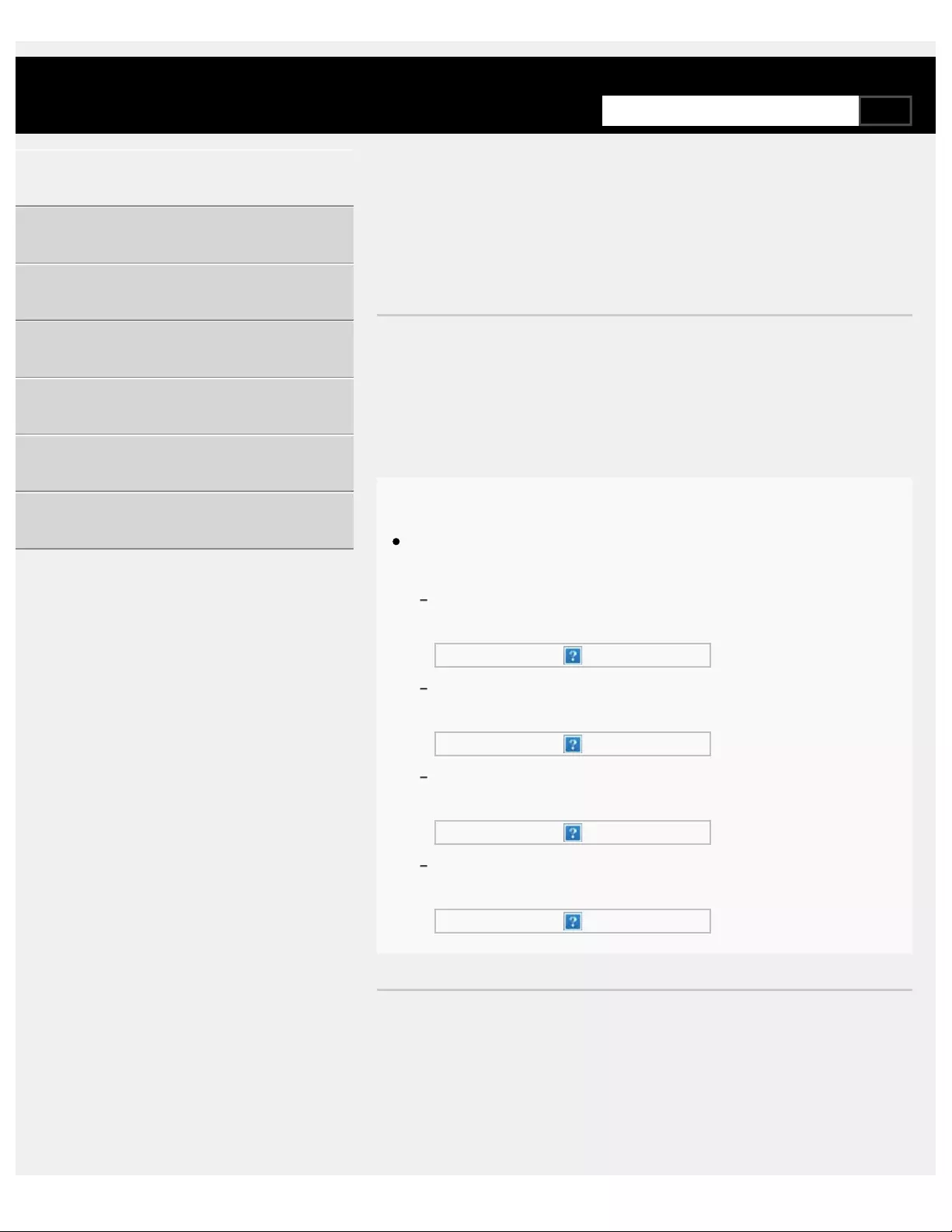
>Getting Started >Accessibility features
Print
Accessibility features
This TV has user assistive features such as a text-to-speech function for
on-screen text, zooming to make text easier to read, and subtitles.
Press the HOME button, then select [Settings] — [Accessibility] to
configure the user assistive features.
Hint
To use text-to-speech on the Help Guide, see the Help Guide in the
Sony support website using a computer or smartphone.
USA:
http://www.sony.com/tvsupport
Canada:
http://www.sony.ca/support
Brazil:
http://esupport.sony.com/BR/
Latin America:
http://esupport.sony.com/ES/LA/
>Getting Started >Accessibility features
Go to page top
Help Guide
Getting Started
Watching TV
Using the TV with Other Devices
Connecting to a Network
Settings
Troubleshooting
Index
C-785-100-13(1)
Copyright 2018 Sony Visual Products Inc.
190
SearchSearch

>Getting Started >Support Site
Print
Support Site
For the latest information and Online Help Guide, please visit the Sony
support website:
USA:
http://www.sony.com/tvsupport
Canada:
http://www.sony.ca/support
Brazil:
http://esupport.sony.com/BR/
Latin America:
http://esupport.sony.com/ES/LA/
>Getting Started >Support Site
Go to page top
Help Guide
Getting Started
Watching TV
Using the TV with Other Devices
Connecting to a Network
Settings
Troubleshooting
Index
C-785-100-13(1)
Copyright 2018 Sony Visual Products Inc.
191
SearchSearch

>Watching TV >Watching TV programs
Print
Watching TV programs
Using the program guide
Using interactive broadcast TV services
>Watching TV >Watching TV programs
Go to page top
Help Guide
Getting Started
Watching TV
Using the TV with Other Devices
Connecting to a Network
Settings
Troubleshooting
Index
C-785-100-13(1)
Copyright 2018 Sony Visual Products Inc.
192
SearchSearch

>Watching TV >Watching in 3D (3D models only)
Print
Watching in 3D (3D models only)
Understanding the basics of 3D TV (3D
models only)
Preparing your 3D glasses (3D models only)
Watching TV in 3D (3D models only)
>Watching TV >Watching in 3D (3D models only)
Go to page top
Help Guide
Getting Started
Watching TV
Using the TV with Other Devices
Connecting to a Network
Settings
Troubleshooting
Index
C-785-100-13(1)
Copyright 2018 Sony Visual Products Inc.
193
SearchSearch

>Using the TV with Other Devices >USB devices
Print
USB devices
Playing content stored on a USB device
Information about USB devices used for
storing photos and music
Supported files and formats
>Using the TV with Other Devices >USB devices
Go to page top
Help Guide
Getting Started
Watching TV
Using the TV with Other Devices
Connecting to a Network
Settings
Troubleshooting
Index
C-785-100-13(1)
Copyright 2018 Sony Visual Products Inc.
194
SearchSearch

>Using the TV with Other Devices >Blu-ray and DVD players
Print
Blu-ray and DVD players
Connecting a Blu-ray or DVD player
Watching Blu-ray and DVD discs
>Using the TV with Other Devices >Blu-ray and DVD players
Go to page top
Help Guide
Getting Started
Watching TV
Using the TV with Other Devices
Connecting to a Network
Settings
Troubleshooting
Index
C-785-100-13(1)
Copyright 2018 Sony Visual Products Inc.
195
SearchSearch

>Using the TV with Other Devices
>Set-top box (cable/satellite box) with an IR Blaster (IR Blaster compatible models
only)
Print
Set-top box (cable/satellite box) with
an IR Blaster (IR Blaster compatible
models only)
Connecting an IR Blaster (IR Blaster
compatible models only)
Setting up the IR Blaster to control the set-
top box (cable/satellite box) (IR Blaster
compatible models only)
>Using the TV with Other Devices
>Set-top box (cable/satellite box) with an IR Blaster (IR Blaster compatible models
only)
Go to page top
Help Guide
Getting Started
Watching TV
Using the TV with Other Devices
Connecting to a Network
Settings
Troubleshooting
Index
C-785-100-13(1)
Copyright 2018 Sony Visual Products Inc.
196
SearchSearch

>Using the TV with Other Devices >Smartphones and tablets
Print
Smartphones and tablets
Displaying the screen of a smartphone/tablet
on the TV using the Screen mirroring
function
>Using the TV with Other Devices >Smartphones and tablets
Go to page top
Help Guide
Getting Started
Watching TV
Using the TV with Other Devices
Connecting to a Network
Settings
Troubleshooting
Index
C-785-100-13(1)
Copyright 2018 Sony Visual Products Inc.
197
SearchSearch

>Using the TV with Other Devices
>Computers, cameras, and camcorders
Print
Computers, cameras, and
camcorders
Connecting a computer and viewing stored
content
Connecting a camera or camcorder and
viewing stored content
Computer video signal specifications
>Using the TV with Other Devices
>Computers, cameras, and camcorders
Go to page top
Help Guide
Getting Started
Watching TV
Using the TV with Other Devices
Connecting to a Network
Settings
Troubleshooting
Index
C-785-100-13(1)
Copyright 2018 Sony Visual Products Inc.
198
SearchSearch

>Using the TV with Other Devices >Audio system
Print
Audio system
Connecting an audio system
Adjusting audio system-related settings
>Using the TV with Other Devices >Audio system
Go to page top
Help Guide
Getting Started
Watching TV
Using the TV with Other Devices
Connecting to a Network
Settings
Troubleshooting
Index
C-785-100-13(1)
Copyright 2018 Sony Visual Products Inc.
199
SearchSearch

>Using the TV with Other Devices >Bluetooth devices
Print
Bluetooth devices
Connecting a Bluetooth device
Adjusting the AV sync setting
Supported Bluetooth profiles
>Using the TV with Other Devices >Bluetooth devices
Go to page top
Help Guide
Getting Started
Watching TV
Using the TV with Other Devices
Connecting to a Network
Settings
Troubleshooting
Index
C-785-100-13(1)
Copyright 2018 Sony Visual Products Inc.
200
SearchSearch

>Using the TV with Other Devices
>Sony wireless subwoofer (optional) (Sony wireless subwoofer supported models
only)
Print
Sony wireless subwoofer (optional)
(Sony wireless subwoofer supported
models only)
Connecting a wireless subwoofer (optional)
Adjusting wireless subwoofer-related
settings (optional)
>Using the TV with Other Devices
>Sony wireless subwoofer (optional) (Sony wireless subwoofer supported models
only)
Go to page top
Help Guide
Getting Started
Watching TV
Using the TV with Other Devices
Connecting to a Network
Settings
Troubleshooting
Index
C-785-100-13(1)
Copyright 2018 Sony Visual Products Inc.
201
SearchSearch

>Using the TV with Other Devices >BRAVIA Sync-compatible devices
Print
BRAVIA Sync-compatible devices
BRAVIA Sync overview
Using features available for BRAVIA Sync-
compatible devices
Adjusting BRAVIA Sync settings
>Using the TV with Other Devices >BRAVIA Sync-compatible devices
Go to page top
Help Guide
Getting Started
Watching TV
Using the TV with Other Devices
Connecting to a Network
Settings
Troubleshooting
Index
C-785-100-13(1)
Copyright 2018 Sony Visual Products Inc.
202
SearchSearch

>Using the TV with Other Devices
>Viewing pictures in 4K from compatible devices (4K models only)
Print
Viewing pictures in 4K from
compatible devices (4K models only)
Viewing pictures in 4K resolution (4K models
only)
Settings for viewing pictures in 4K resolution
with higher quality (4K models only)
>Using the TV with Other Devices
>Viewing pictures in 4K from compatible devices (4K models only)
Go to page top
Help Guide
Getting Started
Watching TV
Using the TV with Other Devices
Connecting to a Network
Settings
Troubleshooting
Index
C-785-100-13(1)
Copyright 2018 Sony Visual Products Inc.
203
SearchSearch
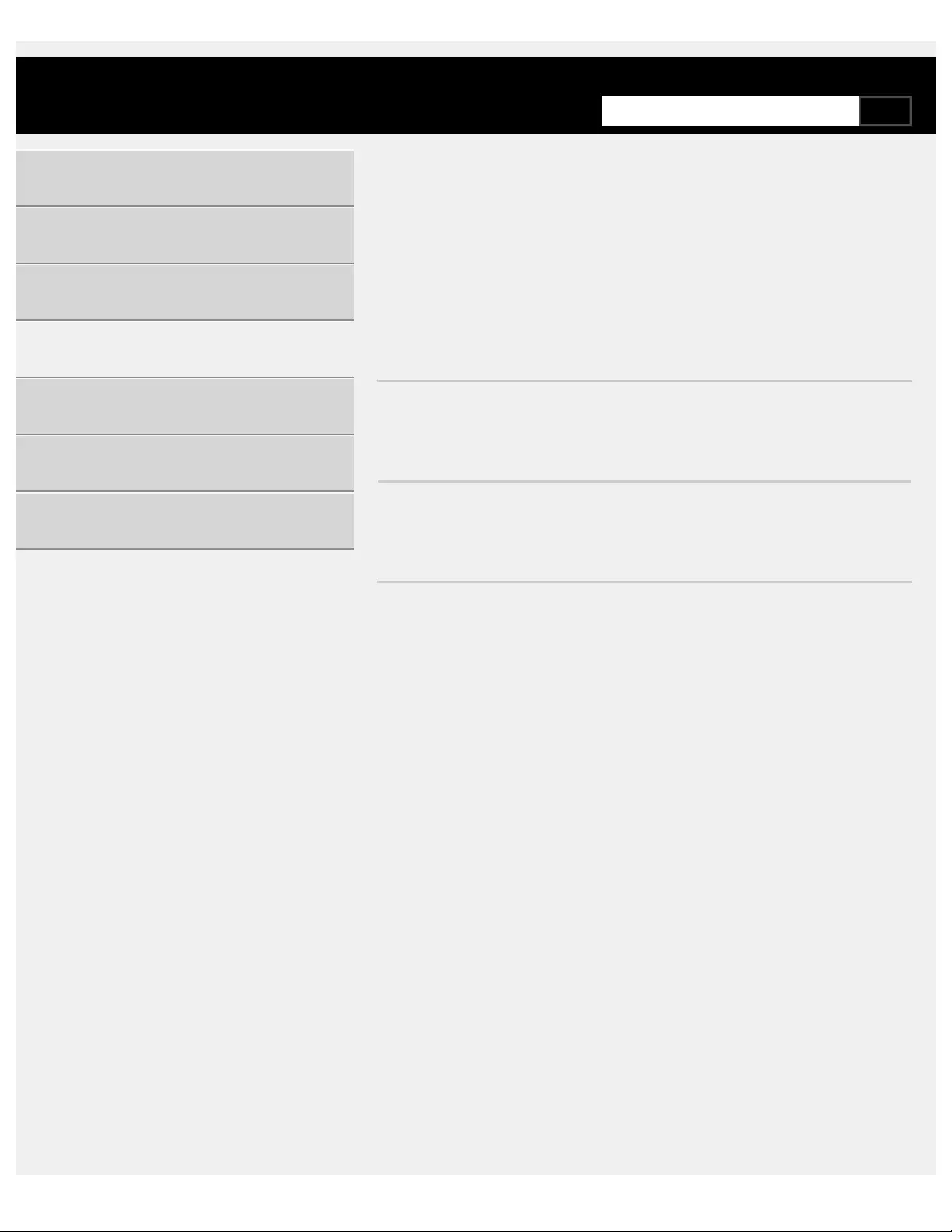
>Connecting to a Network
>Connecting to a network using a wireless connection
Print
Connecting to a network using a
wireless connection
Using Wi-Fi to connect the TV to your
network
Using Wi-Fi Direct to connect to the TV (no
wireless router required)
>Connecting to a Network
>Connecting to a network using a wireless connection
Go to page top
Help Guide
Getting Started
Watching TV
Using the TV with Other Devices
Connecting to a Network
Settings
Troubleshooting
Index
C-785-100-13(1)
Copyright 2018 Sony Visual Products Inc.
204
SearchSearch

>Connecting to a Network >Home network features
Print
Home network features
Adjusting home network settings
Playing content from a computer
Playing content from a media server
RVU statement (RVU compliant models
only)
>Connecting to a Network >Home network features
Go to page top
Help Guide
Getting Started
Watching TV
Using the TV with Other Devices
Connecting to a Network
Settings
Troubleshooting
Index
C-785-100-13(1)
Copyright 2018 Sony Visual Products Inc.
205
SearchSearch
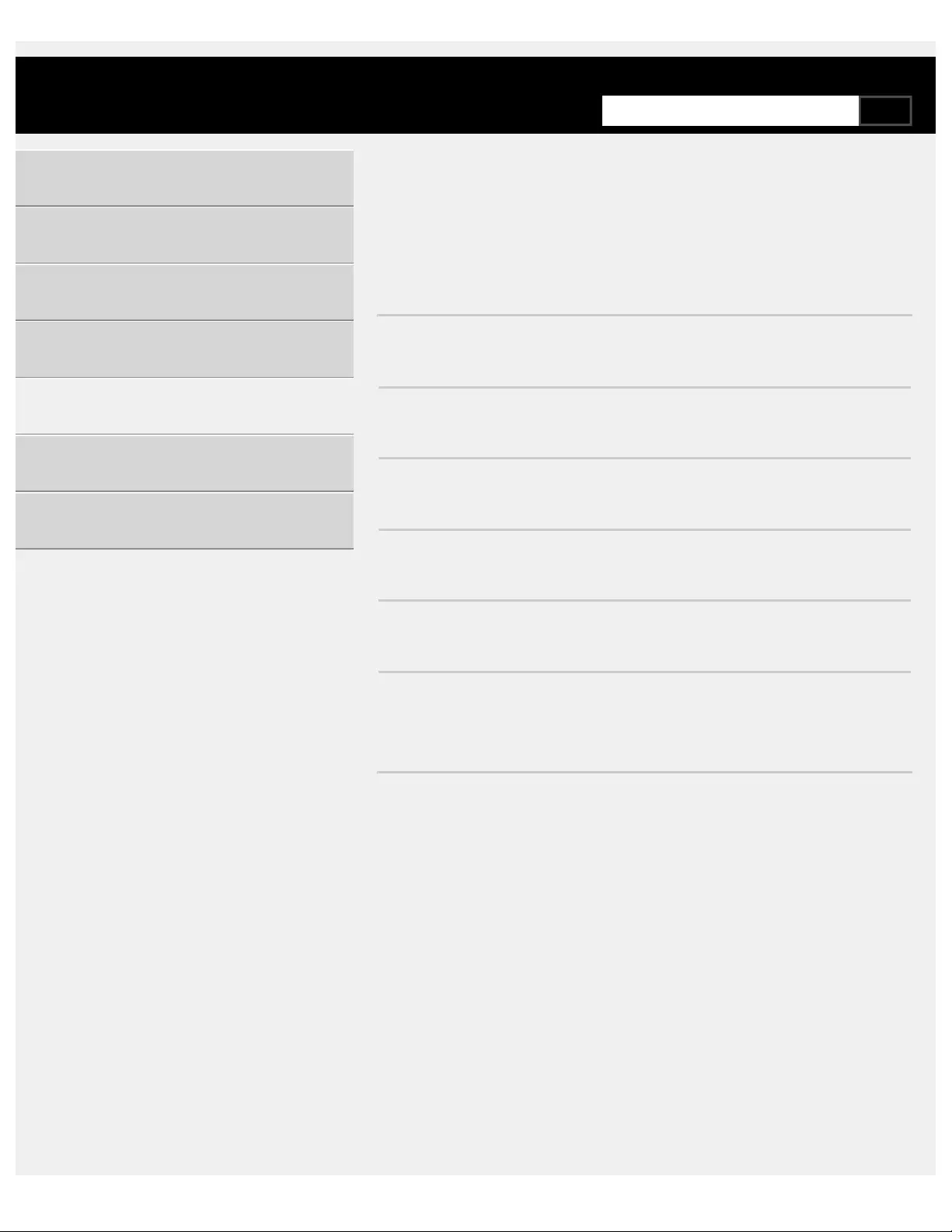
>Settings >Configuring the TV
Print
Configuring the TV
[TV]
[Network & Accessories]
[System Preferences]
[Personal]
[Accounts]
[Expert panel settings](only models
equipped with an OLED panel)
>Settings >Configuring the TV
Go to page top
Help Guide
Getting Started
Watching TV
Using the TV with Other Devices
Connecting to a Network
Settings
Troubleshooting
Index
C-785-100-13(1)
Copyright 2018 Sony Visual Products Inc.
206
SearchSearch
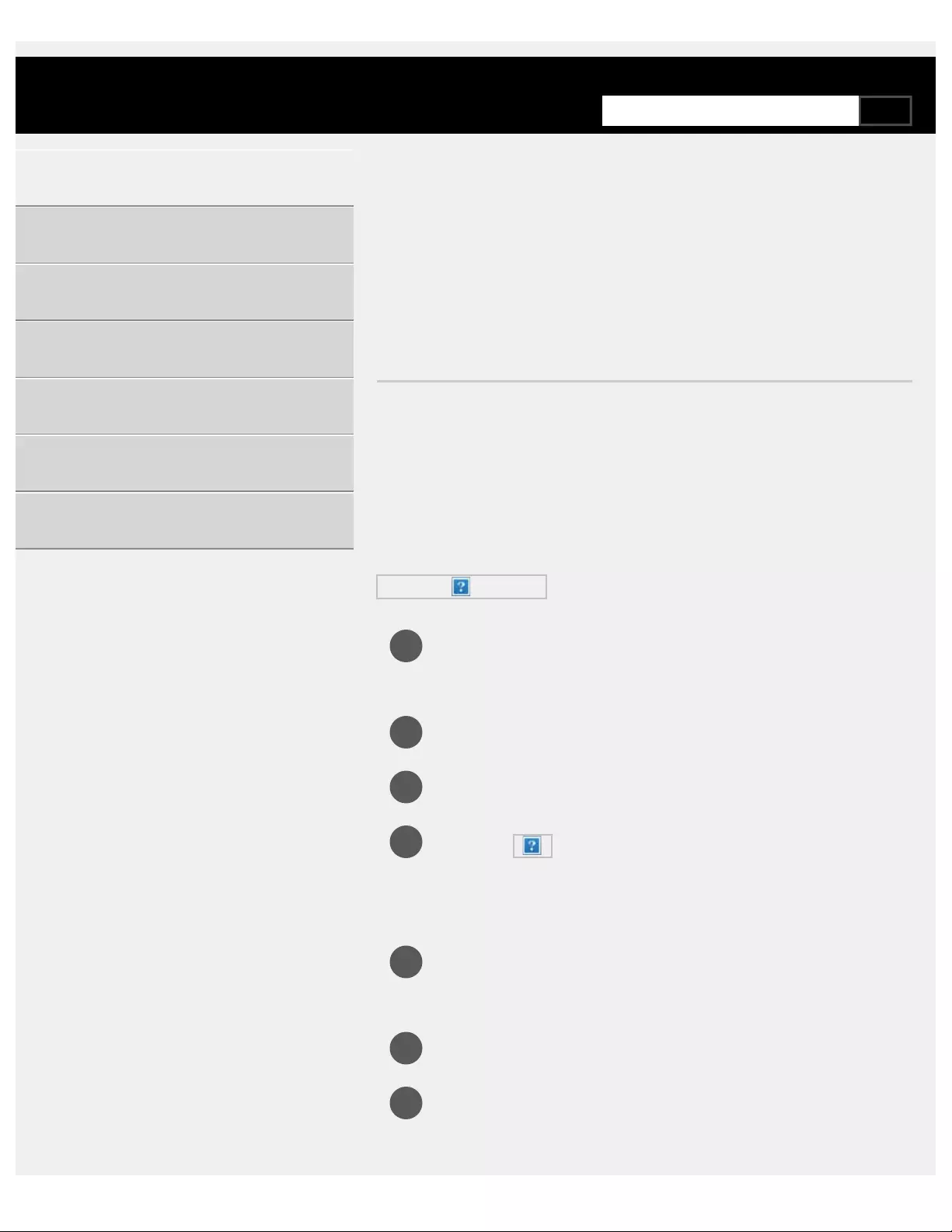
1
2
3
4
1
2
3
>Getting Started >Basic Operations
>Using the “Content Bar” (DISCOVER)
Print
Using the “Content Bar”
(DISCOVER)
This feature is available for TVs in which the included remote control has
a DISCOVER button.
You can use the “Content Bar” to search for various content such as TV
programs and Internet videos. The content displayed in the “Content Bar”
varies depending on your model/region/country.
Press the DISCOVER button.
The “Content Bar” is displayed at the bottom of the screen.
Move the focus up or down to select the desired category.
Move the focus left or right to select the desired item.
Press the button to launch the selected item.
To change the settings of this function
Press the DISCOVER button.
The “Content Bar” is displayed at the bottom of the screen.
Move the focus down to the [Settings] category.
Select the desired item to change the settings.
Available options
Help Guide
Getting Started
Watching TV
Using the TV with Other Devices
Connecting to a Network
Settings
Troubleshooting
Index
207
SearchSearch

[Show/Hide categories]
Select content categories to be shown in DISCOVER. You cannot hide
[Settings].
You can hide [Top Picks] depending on your TV model.
[Reorder categories]
Select a content category to reorder.
[Add channels to Favorites]
Add your favorite channels to DISCOVER.
[Add genre categories]
Add genres to create your own custom content category.
[Add keyword categories]
Add keywords to create your own custom content category.
[Display size]
Select the display size of the menu.
[Sort TV channels]
Select the type of TV program sorting.
Note
Some options may not be available depending on your
model/region/country.
>Getting Started >Basic Operations
>Using the “Content Bar” (DISCOVER)
Go to page top
C-785-100-13(1)
Copyright 2018 Sony Visual Products Inc.
208
Search

1
2
3
1
2
1
>Watching TV >Watching TV programs >Using the program guide
Print
Using the program guide
You can quickly find your preferred programs.
(This function is available only for digital broadcasts and depends on your
region/country/settings.)
Press the GUIDE button to display the digital program guide.
Select a program to watch.
The details of the program are displayed.
Select [View] to watch the program.
To switch the program guide
You can switch the program guide to [TV Selections] or [Genre Guide].
Some options may not be available depending on your
model/region/country.
Move the focus to the leftmost item, then move left again to
open the menu.
Select the desired program guide or list.
To use optional functions
While the program guide is displayed, press the ACTION
MENU button and then select the desired item.
>Watching TV >Watching TV programs >Using the program guide
Help Guide
Getting Started
Watching TV
Using the TV with Other Devices
Connecting to a Network
Settings
Troubleshooting
Index
209
SearchSearch

1
>Watching TV >Watching TV programs
>Using interactive broadcast TV services
Print
Using interactive broadcast TV
services
To use Ginga service (Ginga models only)
Ginga models have [Channel setup & Ginga] in [Settings] — [Channels].
Ginga (also known as DTVi) Interactivity provides extended programming
content information such as sports statistics, soap opera chapters and
characters, publicity, merchandising, weather information and news,
through high-quality digital text and graphics, along with advanced
options.
If available in your home, Ginga Interactivity also allows you to
communicate with the broadcaster through the return channel, in
scenarios such as polls, quizzes and games. These services are provided
by broadcasters.
(This function is only available for digital broadcasts and may not be
available in your region/country.)
Select a digital channel that provides Ginga features.
>Watching TV >Watching TV programs
>Using interactive broadcast TV services
Go to page top
Help Guide
Getting Started
Watching TV
Using the TV with Other Devices
Connecting to a Network
Settings
Troubleshooting
Index
C-785-100-13(1)
Copyright 2018 Sony Visual Products Inc.
211
SearchSearch

>Settings >Configuring the TV >[Personal]
Print
[Personal]
Press the HOME button, then select [Settings] — [Personal] — the
desired option.
Available options
[Location]
Configures the location settings to acquire the user location.
[Security & restrictions]
Configures the security settings such as passwords.
[Parental lock (Broadcast)]
Configures the parental lock settings for broadcasts and other items.
[Parental lock (Streaming channels)]
Configures the parental lock settings for streaming channels.
[Parental lock (Broadcast)] and [Parental lock (Streaming channels)]
may be displayed as [Parental lock] (one setting) depending on your
model.
>Settings >Configuring the TV >[Personal]
Go to page top
Help Guide
Getting Started
Watching TV
Using the TV with Other Devices
Connecting to a Network
Settings
Troubleshooting
Index
C-785-100-13(1)
Copyright 2018 Sony Visual Products Inc.
*
*
*
212
SearchSearch

>Settings >Configuring the TV >[System Preferences]
Print
[System Preferences]
Press the HOME button, then select [Settings] — [System Preferences]
— the desired option.
Available options
[Date & time]
Adjusts the current time.
[Language]
Selects the menu language.
[Keyboard]
Configures the settings of the on-screen keyboard.
[Search]
Configures the settings of the search function.
[Speech]
Configures the settings of speech-recognition feature.
[Accessibility]
Configures the settings of accessibility features and services for helping
users navigate their devices more easily.
[Region]
Sets your location to receive region-specific information.
(This option may not be available depending on your region/country.)
[Retail mode settings]
Enriches the display for shop front use by setting [Demo mode], etc.
[Picture adjustments lock]
Locks the picture adjustments to prevent them from being changed.
(This option may not be available depending on your region/country.)
Help Guide
Getting Started
Watching TV
Using the TV with Other Devices
Connecting to a Network
Settings
Troubleshooting
Index
*
*
213
SearchSearch

>Settings >Configuring the TV
>[Expert panel settings](only models equipped with an OLED panel)
Print
[Expert panel settings](only models
equipped with an OLED panel)
These options are available for models equipped with an OLED panel and
are used to prevent image retention.
If the same image is displayed repeatedly or for long periods of time,
image retention may occur.
The TV has two functions, [Pixel shift] and [Panel refresh], that are
designed to reduce image retention.
Press the HOME button, then select [Settings] — [Picture & Display] —
[Expert panel settings] — the desired option.
Available options
[Pixel shift]
Moves the displayed image at regular intervals to prevent image
retention. Under normal circumstances, use the TV with this option
enabled.
[Panel refresh]
Manually perform a panel refresh only when image retention is particularly
noticeable.
Note
Perform panel refresh only when image retention is particularly
noticeable. As a reference, perform it only once a year. Avoid
performing it more than once a year because it may affect the
usable life of the panel.
Help Guide
Getting Started
Watching TV
Using the TV with Other Devices
Connecting to a Network
Settings
Troubleshooting
Index
215
SearchSearch

Panel refresh takes about one hour to complete. A white line may
be displayed on the screen during the panel refresh. This is not a
malfunction of the TV.
Perform adjustments when the room temperature is between 10°C
(50°F) and 40°C (104°F). If the room temperature is outside this
range, the panel refresh may not complete.
>Settings >Configuring the TV
>[Expert panel settings](only models equipped with an OLED panel)
Go to page top
C-785-100-13(1)
Copyright 2018 Sony Visual Products Inc.
216
Search

1
2
>Getting Started >Remote control >Searching by voice
Print
Searching by voice
Remote controls that can perform Voice Search have a button
or button, and a built-in microphone. By speaking into the
microphone, you can search for various content.
Press the button or button.
The LED on the remote control will light up.
Speak into the microphone.
Speech examples may be displayed depending on your model.
Search results are displayed when you speak into the
microphone.
Hint
Depending on the search results, if you press on the
remote control, more search results will be displayed.
Screenshot example when there are more search results
When you cannot search using your voice
Register the remote control that has the button or
button to the TV again by pressing the HOME button and
selecting [Settings] — [Voice Remote Control]
Note
An Internet connection is required to use Voice search.
Help Guide
Getting Started
Watching TV
Using the TV with Other Devices
Connecting to a Network
Settings
Troubleshooting
Index
217
SearchSearch

The type of remote control supplied with the TV, and the availability
of a remote control with a built-in microphone varies depending on
your model/region/country. An optional remote control is available
in some models/regions/countries.
>Getting Started >Remote control >Searching by voice
Go to page top
C-785-100-13(1)
Copyright 2018 Sony Visual Products Inc.
218
Search

1
1
>Getting Started >Basic Operations
>Selecting devices that are connected to the TV
Print
Selecting devices that are connected
to the TV
To use devices that are connected to the TV such as a Blu-ray/DVD
player, or to watch TV programs after using such devices, you must
switch the input.
Press the INPUT button repeatedly to select the connected
device.
Hint
You can switch to TV broadcasting by simply pressing the TV
button on the remote control.
Switching from the Home Menu
Press the HOME button, then select the input source from
[Inputs].
>Getting Started >Basic Operations
>Selecting devices that are connected to the TV
Go to page top
Help Guide
Getting Started
Watching TV
Using the TV with Other Devices
Connecting to a Network
Settings
Troubleshooting
Index
C-785-100-13(1)
Copyright 2018 Sony Visual Products Inc.
219
SearchSearch

>Using the TV with Other Devices >BRAVIA Sync-compatible devices
>BRAVIA Sync overview
Print
BRAVIA Sync overview
If a BRAVIA Sync-compatible device (e.g., BD player, AV amplifier) is
connected with an HDMI cable, you can operate the device with the TV’s
remote control.
Related topics
Using features available for BRAVIA Sync-compatible devices
Adjusting BRAVIA Sync settings
>Using the TV with Other Devices >BRAVIA Sync-compatible devices
>BRAVIA Sync overview
Go to page top
Help Guide
Getting Started
Watching TV
Using the TV with Other Devices
Connecting to a Network
Settings
Troubleshooting
Index
C-785-100-13(1)
Copyright 2018 Sony Visual Products Inc.
220
SearchSearch

1
2
3
4
5
>Connecting to a Network
>Connecting to a network using a wireless connection
>Using Wi-Fi Direct to connect to the TV (no wireless router required)
Print
Using Wi-Fi Direct to connect to the
TV (no wireless router required)
You can connect a device to the TV wirelessly, without using a wireless
router, and then stream videos, photos, and music that is stored on your
device directly to the TV.
To enable [Wi Fi Direct], press the HOME button, then select
[Settings] — [Network] — [Wi Fi Direct] — [Wi Fi Direct].
Select [Wi Fi Direct settings].
Select the TV name displayed on the TV screen with the Wi-Fi
Direct device.
If the device does not support Wi-Fi Direct, select the [Show
Network (SSID)/Password].
Operate the Wi-Fi Direct/Wi-Fi device to connect with the TV.
Send content from the Wi-Fi Direct/Wi-Fi device to the TV.
For details, refer to the instruction manual of the device.
If the connection does not succeed
When the standby screen for the Wi-Fi Direct setting is displayed, select
[Show Network (SSID)/Password] and follow the on-screen instructions to
complete the set-up.
Help Guide
Getting Started
Watching TV
Using the TV with Other Devices
Connecting to a Network
Settings
Troubleshooting
Index
221
SearchSearch

To connect another device
Follow the steps above to connect devices. Up to 10 devices can be
connected at the same time. To connect another device when 10 devices
are already connected, disconnect an unnecessary device, then connect
the other device.
To change the name of the TV shown on the connected
device
Press the HOME button, then select [Settings] — [About] — [Device
name].
To list connected devices/deregister devices
Press the HOME button, then select [Settings] — [Network] — [Wi Fi
Direct] — [Advanced settings] — [Show device list/Delete].
To deregister a device, select the device in the list to delete, then press
the button. Then, select [Yes] in the confirmation display.
To deregister all devices, select [Delete all] in the list, then [Yes] in the
confirmation display.
To change the band setting (for experts)
When your TV is not connected wirelessly to a router, you can select the
wireless band for the Wi-Fi Direct function. Press the HOME button, then
select [Settings] — [Network] — [Wi Fi Direct] — [Advanced settings] —
[Band setting].
[Auto]
Normally use this option. It automatically selects an appropriate band for
the Wi-Fi Direct function.
[Auto (2.4GHz band)]
Use this option when connecting with devices that support 2.4GHz only.
This option may support more devices than other options.
[Auto (5GHz band)]
Use this option when connecting with devices that support 5GHz. This
option may improve video streaming quality.
222
Search

Note that when you select this option, the TV cannot connect with devices
that support 2.4GHz only.
[Manual]
Use this option to select a specific wireless channel.
Hint
For information about the supported wireless band of your device,
refer to the instruction manual of your device.
The 5GHz band may not be supported depending on your
region/country. If the 5GHz band is not supported, you can only use
[Auto] and [Manual].
Note
If the TV is connected to a wireless router at 5GHz:
The 5GHz wireless connection will be disconnected when
[Wi Fi Direct settings] is selected. While the connection is
disconnected, communication via Internet is stopped.
The connection will resume automatically after exiting from
[Wi Fi Direct settings].
The 5GHz band may not be supported depending on your
region/country.
Related topics
The TV cannot be found by a Wi-Fi Direct device.
>Connecting to a Network
>Connecting to a network using a wireless connection
>Using Wi-Fi Direct to connect to the TV (no wireless router required)
Go to page top
C-785-100-13(1)
Copyright 2018 Sony Visual Products Inc.
223
Search
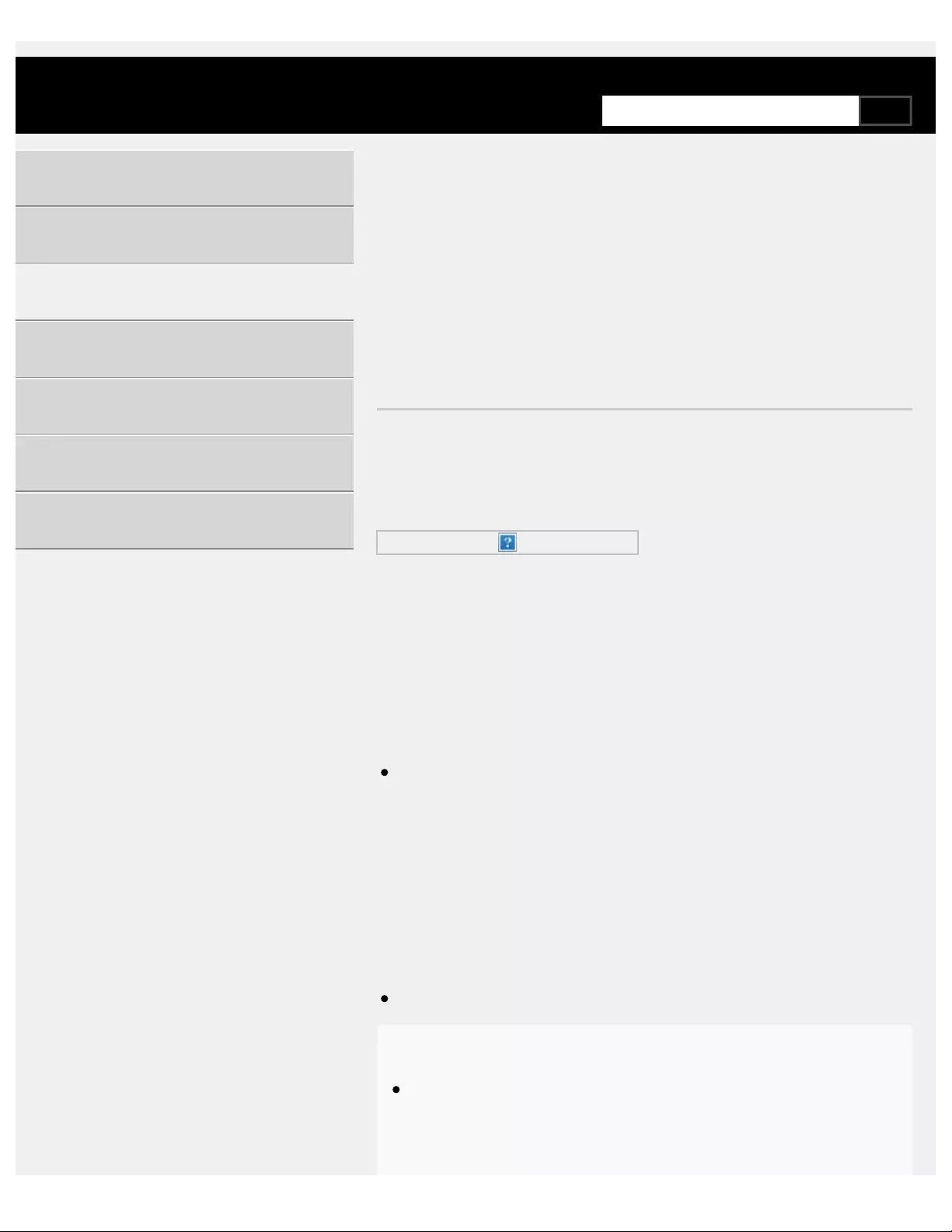
>Using the TV with Other Devices
>Computers, cameras, and camcorders
>Connecting a computer and viewing stored content
Print
Connecting a computer and viewing
stored content
To connect a computer
Use an HDMI cable to connect your computer to the TV.
(A) Computer
(B) HDMI cable (not supplied)
Be sure to use an authorized HIGH SPEED HDMI cable bearing the
HDMI logo.
To check the video signal specifications
Computer video signal specifications
To view content stored on a computer
After connecting the computer, press the HOME button, then select the
input the computer is connected to.
To check the supported file formats
Supported files and formats
Note
For optimum picture quality, we recommend that you set your
computer to output video signals according to one of the settings
listed in “Computer video signal specifications”.
Help Guide
Getting Started
Watching TV
Using the TV with Other Devices
Connecting to a Network
Settings
Troubleshooting
Index
*
*
224
SearchSearch

Depending on the connection status, the image may be blurred or
smeared. In this case, change the computer’s settings and select
another input signal from the “Computer video signal specifications”
list.
>Using the TV with Other Devices
>Computers, cameras, and camcorders
>Connecting a computer and viewing stored content
Go to page top
C-785-100-13(1)
Copyright 2018 Sony Visual Products Inc.
225
Search
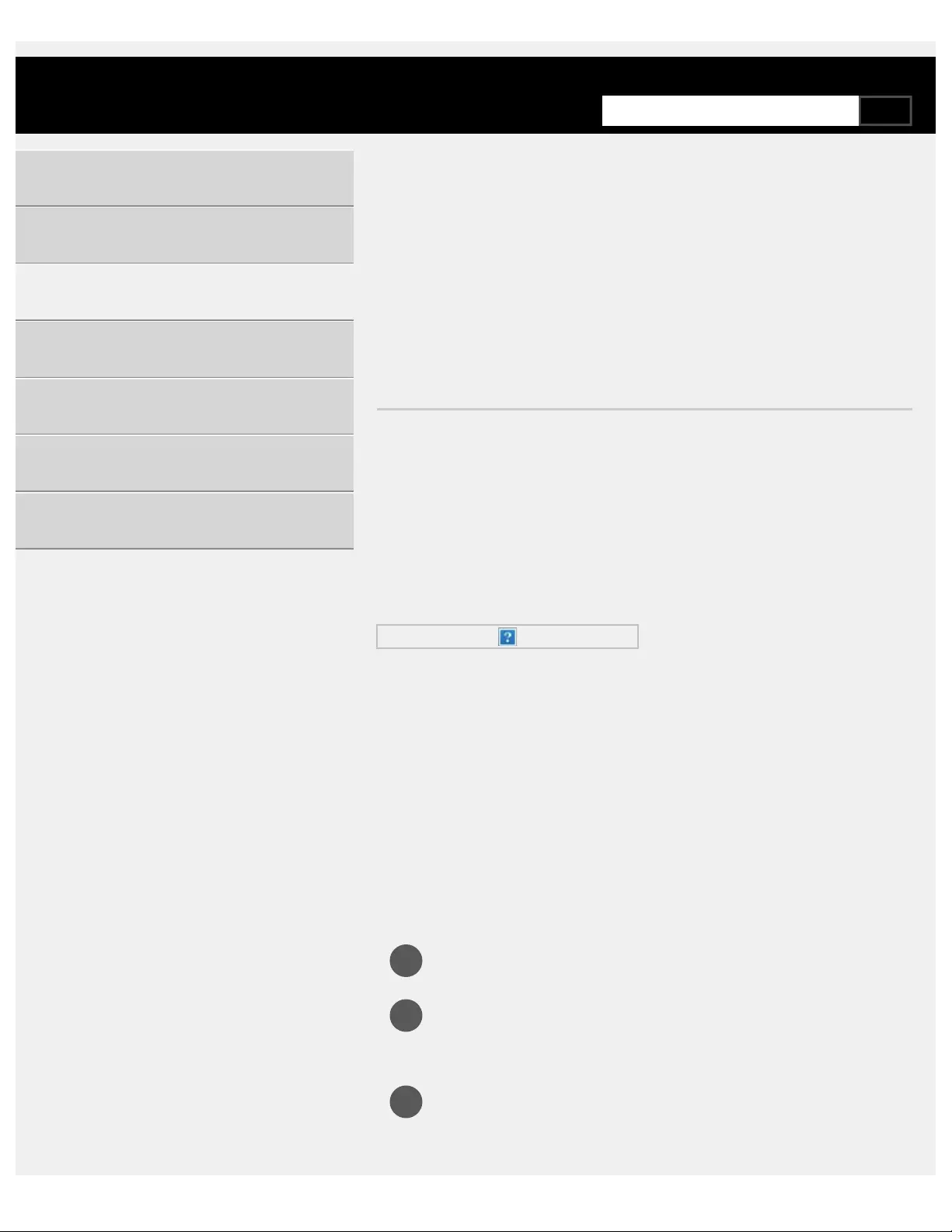
1
2
3
>Using the TV with Other Devices
>Computers, cameras, and camcorders
>Connecting a camera or camcorder and viewing stored content
Print
Connecting a camera or camcorder
and viewing stored content
To connect a camera or camcorder
Connect your Sony digital still camera or camcorder using an HDMI cable.
Use a cable that has an HDMI mini jack (socket) for the digital still
camera/camcorder end, and a standard HDMI jack (socket) for the TV
end.
(A) Digital still camera
(B) Camcorder
(C) HDMI cable (not supplied)
Be sure to use an authorized HIGH SPEED HDMI cable bearing the
HDMI logo.
To view content stored on a digital still
camera/camcorder
After connecting the digital still camera/camcorder, turn it on.
Press the INPUT button repeatedly to select the connected
digital still camera/camcorder.
Start playback on the connected digital still
camera/camcorder.
Help Guide
Getting Started
Watching TV
Using the TV with Other Devices
Connecting to a Network
Settings
Troubleshooting
Index
*
*
226
SearchSearch

To check the supported file formats
Supported files and formats
Hint
If you connect a BRAVIA Sync-compatible device, you can operate
it by simply using the TV’s remote control. Make sure that the
device is BRAVIA Sync-compatible. Some devices may not be
compatible with BRAVIA Sync even though they have an HDMI
jack (socket).
Related topics
BRAVIA Sync-compatible devices
>Using the TV with Other Devices
>Computers, cameras, and camcorders
>Connecting a camera or camcorder and viewing stored content
Go to page top
C-785-100-13(1)
Copyright 2018 Sony Visual Products Inc.
227
Search

>Using the TV with Other Devices >USB devices
>Supported files and formats
Print
Supported files and formats
Photos
Music
Videos
Audio sampling rates (for videos)
External subtitles
>Using the TV with Other Devices >USB devices
>Supported files and formats
Go to page top
Help Guide
Getting Started
Watching TV
Using the TV with Other Devices
Connecting to a Network
Settings
Troubleshooting
Index
C-785-100-13(1)
Copyright 2018 Sony Visual Products Inc.
228
SearchSearch

1
2
>Troubleshooting >Start here
>If a full reset (restart) of the TV is required
Print
If a full reset (restart) of the TV is
required
If you have trouble such as the picture not displaying on the screen or the
remote control not working, reset the TV with the following procedure. If
the problem persists, try the factory reset procedure below.
If an external USB device is connected to the TV, disconnect the USB
device from the TV before resetting.
Power Reset
Restart the TV with the remote control.
Press and hold the power button on the remote control for about 5
seconds until the “Power off” message is displayed.
The TV will turn off and then restart automatically after about one
minute.
If the TV does not turn on automatically, press the power button
on the remote control after 20 seconds.
Unplug the AC power cord (mains lead).
If the problem persists after step 1, unplug the TV power cord
(mains lead) from the electrical outlet and wait for 2 minutes (3
minutes for models equipped with an OLED panel). Then plug the
power cord (mains lead) back into the electrical outlet.
Hint
Your personal settings and data will not be lost after the TV restarts.
Help Guide
Getting Started
Watching TV
Using the TV with Other Devices
Connecting to a Network
Settings
Troubleshooting
Index
229
SearchSearch

1
2
Factory data reset
If the problem persists after a power reset, try a factory data reset.
Note
Performing a factory reset will delete all of the TV’s data and settings
(such as Wi-Fi and wired network setting information, Google account
and other login information, Google Play and other installed apps).
Press the HOME button, then select [Settings] — [Storage &
reset] — [Factory data reset].
Select [Erase everything].
If you have set a PIN code on your TV, you will be prompted to
input it when you select [Erase everything].
After the factory reset process completes successfully, the TV will
proceed into the Initial Setup wizard. You must agree to the
Google Terms of Service and Google Privacy Policy.
>Troubleshooting >Start here
>If a full reset (restart) of the TV is required
Go to page top
C-785-100-13(1)
Copyright 2018 Sony Visual Products Inc.
230
Search

>Getting Started >Remote control
>Functions of the remote control buttons >Upper buttons on the remote control
Print
Upper buttons on the remote control
The included remote control, as well as the arrangement of the buttons
and the button names, vary depending on your model/country/region.
INPUT
Display and select the input source.
(Google Assistant)/
(Microphone)
Use the Google Assistant (only on limited
region/country/language/TV model) or Voice
Search. (e.g., Search various content by voice.)
(TV standby)
Turn on or turn off the TV (standby mode).
SYNC MENU
Display the BRAVIA Sync Menu.
DIGITAL/ANALOG, ANT
Switch between digital and analog mode.
STB MENU
Display the connected set-top box (cable/satellite
box) menu after connecting and setting up the IR
Blaster.
Number Button
Use with the 0-9 buttons to select digital
channels.
DISPLAY
Display information about the
channel/program/input you are viewing.
EXIT, SAIR SALIR
Return to the previous screen or exit from the
menu. When an Interactive Application service is
available, press to exit from the service.
Google Play
Access the “Google Play” online service.
Help Guide
Getting Started
Watching TV
Using the TV with Other Devices
Connecting to a Network
Settings
Troubleshooting
Index
231
SearchSearch

NETFLIX (Only on limited region/country/TV
model)
Access the “Netflix” online service.
Related topics
Middle buttons on the remote control
Lower buttons on the remote control
>Getting Started >Remote control
>Functions of the remote control buttons >Upper buttons on the remote control
Go to page top
C-785-100-13(1)
Copyright 2018 Sony Visual Products Inc.
232
Search

>Getting Started >Remote control
>Functions of the remote control buttons
>Middle buttons on the remote control
Print
Middle buttons on the remote control
The included remote control, as well as the arrangement of the buttons
and the button names, vary depending on your model/country/region.
Color buttons
Execute corresponding function at that time.
ACTION MENU
Display a list of contextual functions.
GUIDE
Display the digital program guide.
APPS
Access various services and applications.
BACK
Return to the previous screen.
HOME
Display the TV Home Menu.
TV
Switch to a TV broadcast. Also display the TV
Menu Bar depending on your
model/region/country.
DISCOVER
Bring up the Content Bar to search for content.
/ / / / (Navigation D-Pad)
On screen menu navigation and selection.
Related topics
Upper buttons on the remote control
Lower buttons on the remote control
Help Guide
Getting Started
Watching TV
Using the TV with Other Devices
Connecting to a Network
Settings
Troubleshooting
Index
233
SearchSearch

>Getting Started >Remote control
>Functions of the remote control buttons >Lower buttons on the remote control
Print
Lower buttons on the remote control
The included remote control, as well as the arrangement of the buttons
and the button names, vary depending on your model/country/region.
VOL +/- (Volume)
Adjust the volume.
JUMP
Jump back and forth between two channels or
inputs. The TV alternates between the current
channel or input and the last channel or input that
was selected.
MUTING
Mute the sound. Press again to restore the
sound.
CH +/- (Channel)
Select the channel.
AUDIO
Change the language for the program currently
being viewed.
/ / / / /
/
Operate media contents on the TV and
connected BRAVIA Sync-compatible device.
SUBTITLE/CC
Turn subtitles on or off (when the feature is
available).
HELP
Display the Help menu. Help Guide can be
accessed from here.
WIDE
Change the screen format.
PIC OFF
Turn the picture off, while sound remains on.
Help Guide
Getting Started
Watching TV
Using the TV with Other Devices
Connecting to a Network
Settings
Troubleshooting
Index
235
SearchSearch

DISPLAY
Display information about the
channel/program/input you are viewing.
Related topics
Upper buttons on the remote control
Middle buttons on the remote control
>Getting Started >Remote control
>Functions of the remote control buttons >Lower buttons on the remote control
Go to page top
C-785-100-13(1)
Copyright 2018 Sony Visual Products Inc.
236
Search

>Getting Started >Basic Operations
>Changing the picture and sound quality to your preferences
Print
Changing the picture and sound
quality to your preferences
Adjusting the picture quality
“Picture adjustments” advanced settings
Adjusting the sound quality
“Sound adjustments” advanced settings
>Getting Started >Basic Operations
>Changing the picture and sound quality to your preferences
Go to page top
Help Guide
Getting Started
Watching TV
Using the TV with Other Devices
Connecting to a Network
Settings
Troubleshooting
Index
C-785-100-13(1)
Copyright 2018 Sony Visual Products Inc.
237
SearchSearch
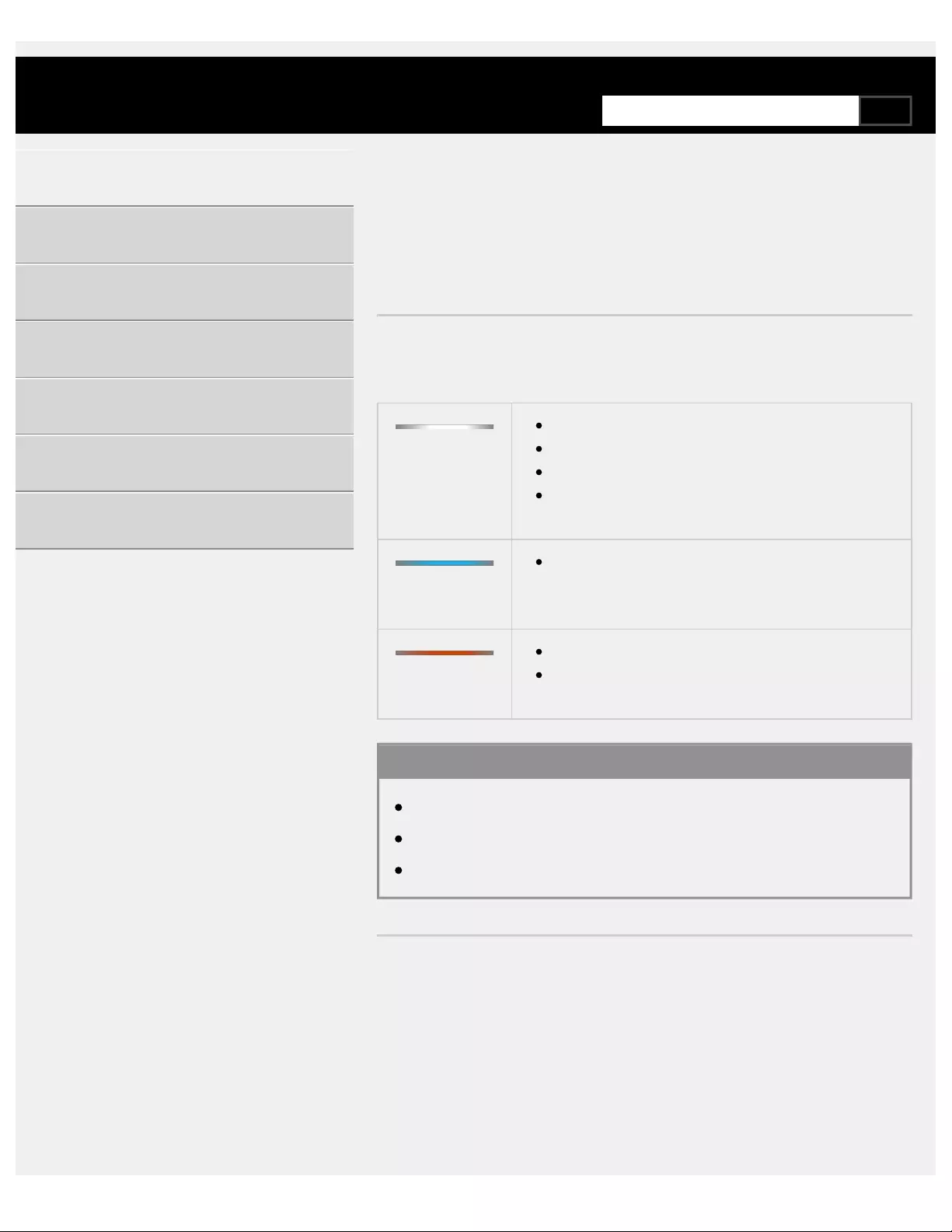
>Getting Started >Basic Operations >Illumination LED
Print
Illumination LED
You can identify the status of the TV by looking at how the illumination
LED lights up.
White “on” or
“blinking”
When the screen is off
When the TV is turning on
When receiving signals from the remote control
When updating the software
etc.
Cyan “blinking”
When a mobile device (smartphone, tablet, etc.) is
connecting to the TV on the home network
etc.
Amber “on”
When the on timer is set
When the sleep timer is set
etc.
Related topics
Home network features
Software updates
Setting a timer
>Getting Started >Basic Operations >Illumination LED
Go to page top
Help Guide
Getting Started
Watching TV
Using the TV with Other Devices
Connecting to a Network
Settings
Troubleshooting
Index
C-785-100-13(1)
Copyright 2018 Sony Visual Products Inc.
238
SearchSearch
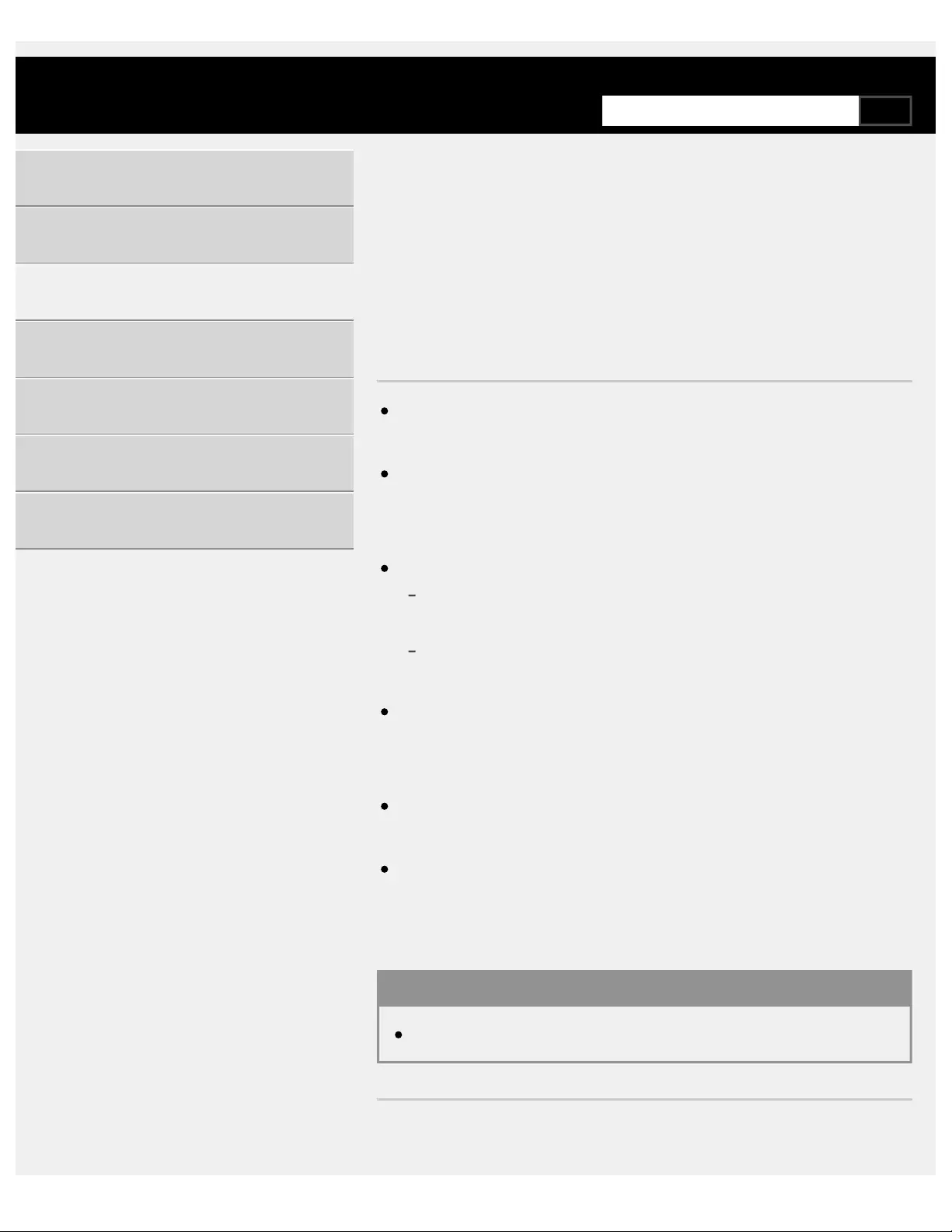
>Using the TV with Other Devices >USB devices
>Information about USB devices used for storing photos and music
Print
Information about USB devices used
for storing photos and music
The USB ports on the TV support FAT16, FAT32, exFAT, and NTFS
file systems.
When connecting a Sony digital still camera to the TV with a USB
cable, USB connection settings on your camera need to be set to
“Auto” or “Mass Storage” mode.
If your digital still camera does not work with your TV, try the following:
Set the USB connection settings on your camera to “Mass
Storage”.
Copy the files from the camera to a USB flash drive, then connect
the drive to the TV.
Some photos and movies may be magnified, resulting in low picture
quality. Depending on the size and aspect ratio, images may not be
displayed in full screen.
It may take a long time to display a photo, depending on the file or
settings.
In no event shall Sony be liable for recording failure or any damage or
loss of recorded contents caused or associated with the TV’s
malfunction, the USB device’s malfunction, or any other problem.
Related topics
Supported files and formats
>Using the TV with Other Devices >USB devices
>Information about USB devices used for storing photos and music
Help Guide
Getting Started
Watching TV
Using the TV with Other Devices
Connecting to a Network
Settings
Troubleshooting
Index
239
SearchSearch

>Troubleshooting >Connected devices
>What kind of devices can be connected using the Screen mirroring function?
Print
What kind of devices can be
connected using the Screen
mirroring function?
Wi Fi enabled devices, such as smartphones and tablets, that support
Miracast can be used to enjoy Screen mirroring on your BRAVIA TV.
Refer to the instruction manual of your Wi Fi device to find out if it
supports Miracast. BRAVIA TV complies with the Miracast
specification, but does not guarantee a successful connection with all
devices.
>Troubleshooting >Connected devices
>What kind of devices can be connected using the Screen mirroring function?
Go to page top
Help Guide
Getting Started
Watching TV
Using the TV with Other Devices
Connecting to a Network
Settings
Troubleshooting
Index
C-785-100-13(1)
Copyright 2018 Sony Visual Products Inc.
241
SearchSearch

>Getting Started >Basic Operations
>Changing the picture and sound quality to your preferences
>Adjusting the picture quality
Print
Adjusting the picture quality
You can configure various settings related to the TV display such as color
and brightness for picture quality, or screen size.
Press the HOME button, then select [Settings] — [TV] — [Picture &
Display] — the desired option.
You can configure the following major settings.
Picture adjustments
Adjust the picture settings such as Brightness, Color, and Hue.
Picture mode
Change the picture quality according to the content you are watching
such as movies or sports.
For details, refer to “Picture adjustments” advanced settings.
Auto picture mode
Automatically selects the picture mode based on the viewing content.
Brightness
Adjust the backlight to display the brightest whites and deepest blacks.
Color
Adjust the color saturation level.
Help Guide
Getting Started
Watching TV
Using the TV with Other Devices
Connecting to a Network
Settings
Troubleshooting
Index
242
SearchSearch

Light sensor
Optimize brightness according to ambient light.
Advanced settings
Access advanced picture enhancing options.
For more details, refer to “Picture adjustments” advanced settings.
Hint
You can also display [Picture adjustments] by pressing ACTION
MENU while watching TV.
Screen
Adjust the aspect ratio and viewable screen area.
Wide mode
Adjust the picture size.
Auto display area
Automatically adjusts wide mode based on the signal.
4:3 default
Automatic sizing for 4:3 pictures.
Auto display area
Automatically adjusts the viewable screen area based on the signal.
Display area
Adjust the viewable screen area.
Screen position
Adjust the vertical and horizontal screen position.
Vertical size
Stretch the picture vertically.
>Getting Started >Basic Operations
>Changing the picture and sound quality to your preferences
>Adjusting the picture quality
Go to page top
C-785-100-13(1)
243
Search
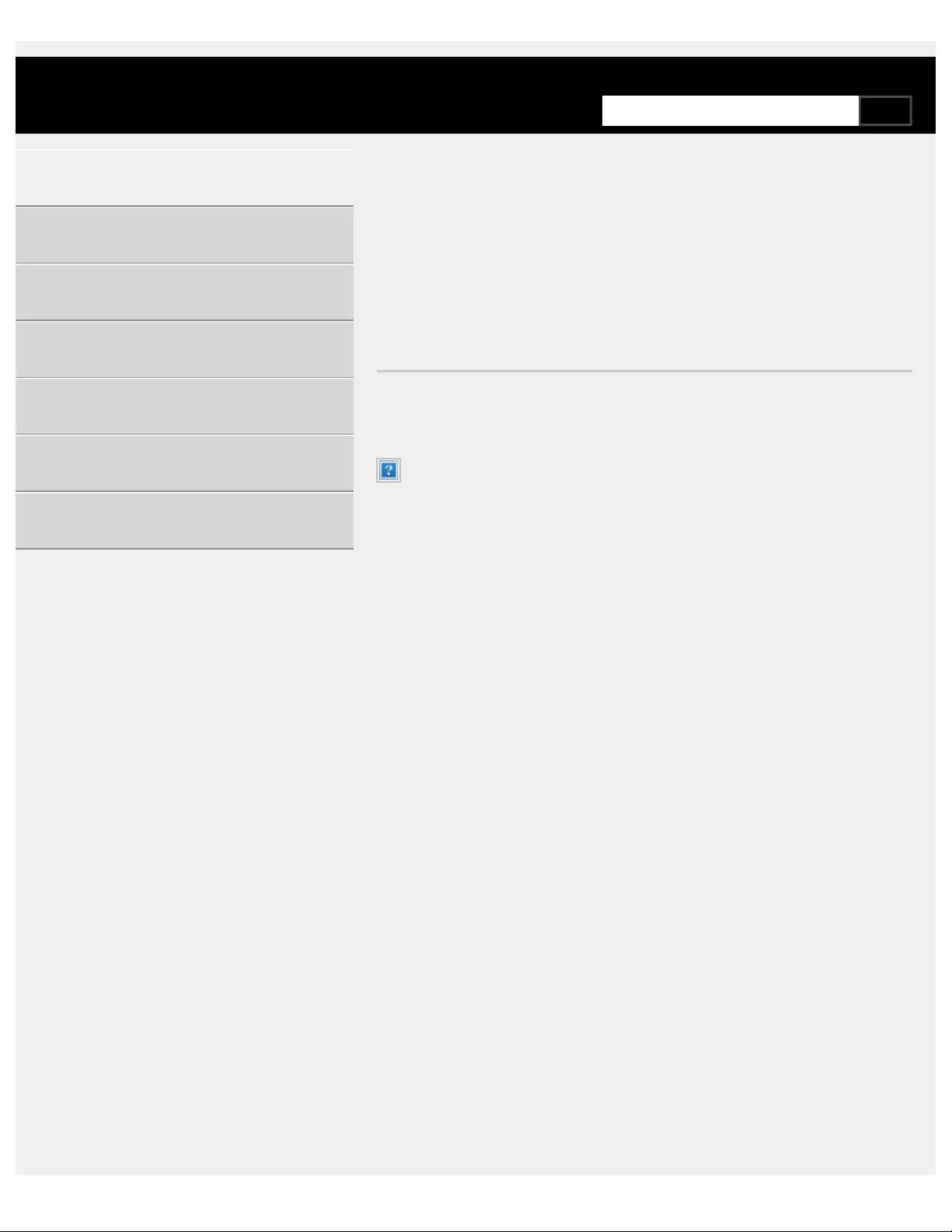
>Getting Started >Basic Operations
>Changing the picture and sound quality to your preferences
>Adjusting the sound quality
Print
Adjusting the sound quality
You can configure various settings related to the TV's sound such as
sound quality and sound mode.
Press the HOME button, then select [Settings] — [TV] — [Sound] — the
desired option.
You can configure the following major settings.
Sound adjustments
Adjust to experience the different sound effects.
For details, refer to “Sound adjustments” advanced settings.
Speakers
Select TV or external speakers.
Audio system prioritization
Output sound from BRAVIA Sync compatible external speakers if
detected when the TV is powered on.
Headphone/Audio out
Select usages of terminals.This setting is available only when [Speakers]
is set to [TV speakers].
Headphone speaker link
Switches the TV's speakers on/off when headphones are connected.
Home theater control
Turns your audio system on, and allows you to control it.
System sounds
Turn on/off the TV's operating sounds.
Help Guide
Getting Started
Watching TV
Using the TV with Other Devices
Connecting to a Network
Settings
Troubleshooting
Index
244
SearchSearch

Digital audio out
Configure the output method when outputting digital audio. This setting is
available only when [Speakers] is set to [TV speakers].
TV position
Choose optimal TV sound based on the position of your TV.
Hint
You can also display [Sound adjustments] by pressing ACTION
MENU while watching TV.
>Getting Started >Basic Operations
>Changing the picture and sound quality to your preferences
>Adjusting the sound quality
Go to page top
C-785-100-13(1)
Copyright 2018 Sony Visual Products Inc.
245
Search

>Troubleshooting >Start here >Self diagnostics
Print
Self diagnostics
Check if the TV is working properly.
Press the HOME button, then select [Help] — [Self diagnostics], or
[Help] — [Problem diagnosis] — [Self diagnostics].
[Self diagnostics] will start.
Hint
You can also check the following symptoms under [Help] or [Problem
diagnosis].
[Internet connectivity symptoms]
[External devices symptoms]
[Picture/Sound symptoms]
If the problem persists, try the following.
Reset (restart) the TV. For details, refer to If a full reset (restart) of the
TV is required.
Check and try Software updates.
Support Site
>Troubleshooting >Start here >Self diagnostics
Go to page top
Help Guide
Getting Started
Watching TV
Using the TV with Other Devices
Connecting to a Network
Settings
Troubleshooting
Index
C-785-100-13(1)
Copyright 2018 Sony Visual Products Inc.
246
SearchSearch

>Troubleshooting >Picture (quality)/screen
>Picture quality is not as good as viewed at the store.
Print
Picture quality is not as good as
viewed at the store.
Picture quality depends on the signal content.
The picture quality may improve if you change it in [Picture & Display]
under [Settings].
Related topics
[TV]
>Troubleshooting >Picture (quality)/screen
>Picture quality is not as good as viewed at the store.
Go to page top
Help Guide
Getting Started
Watching TV
Using the TV with Other Devices
Connecting to a Network
Settings
Troubleshooting
Index
C-785-100-13(1)
Copyright 2018 Sony Visual Products Inc.
247
SearchSearch

>Troubleshooting >Picture (quality)/screen >Distorted picture.
Print
Distorted picture.
Check the antenna/cable connection.
Keep the antenna/cable away from other connecting cables.
When installing an optional device, leave some space between the
device and the TV.
Press the ACTION MENU button, then select [Picture adjustments] —
[Advanced settings] — [Motion] — [Motionflow] — [Standard] or [Off].
(For [Motionflow] compatible models only)
[Motionflow] compatible models have [Motionflow] in [Settings] —
[Picture & Display] — [Picture adjustments] — [Advanced settings] —
[Motion].
Change the current setting of [CineMotion] to another setting.
Press the ACTION MENU button, then select [Picture adjustments] —
[Advanced settings] — [Motion] — [CineMotion].
Make sure that the antenna is connected using a high quality 75-ohm
coaxial cable.
Related topics
Ghosting or double images appear.
The screen flickers.
>Troubleshooting >Picture (quality)/screen >Distorted picture.
Go to page top
Help Guide
Getting Started
Watching TV
Using the TV with Other Devices
Connecting to a Network
Settings
Troubleshooting
Index
C-785-100-13(1)
Copyright 2018 Sony Visual Products Inc.
248
SearchSearch

>Troubleshooting >Picture (quality)/screen >The screen flickers.
Print
The screen flickers.
Press the ACTION MENU button, then select [Picture adjustments] —
[Advanced settings] — [Motion] — [Motionflow] — [Standard]. (For
[Motionflow] compatible models only)
[Motionflow] compatible models have [Motionflow] in [Settings] — [Picture
& Display] — [Picture adjustments] — [Advanced settings] — [Motion].
Related topics
Distorted picture.
>Troubleshooting >Picture (quality)/screen >The screen flickers.
Go to page top
Help Guide
Getting Started
Watching TV
Using the TV with Other Devices
Connecting to a Network
Settings
Troubleshooting
Index
C-785-100-13(1)
Copyright 2018 Sony Visual Products Inc.
249
SearchSearch

>Troubleshooting >Picture (quality)/screen
>No color/Dark picture/Color is not correct/Picture is too bright.
Print
No color/Dark picture/Color is not
correct/Picture is too bright.
Press the ACTION MENU button, then select [Picture adjustments] to
make adjustments.
Press the ACTION MENU button, then select [Picture adjustments] —
[Advanced settings] — [Reset].
If you set [Power saving] to [Low] or [High], the black level will be
enhanced. Press the HOME button, then select [Settings] — [Power]
— [Eco] — [Power saving].
Related topics
Dark screen. How to brighten the screen.
Color is not correct. How to adjust the color tone.
>Troubleshooting >Picture (quality)/screen
>No color/Dark picture/Color is not correct/Picture is too bright.
Go to page top
Help Guide
Getting Started
Watching TV
Using the TV with Other Devices
Connecting to a Network
Settings
Troubleshooting
Index
C-785-100-13(1)
Copyright 2018 Sony Visual Products Inc.
250
SearchSearch
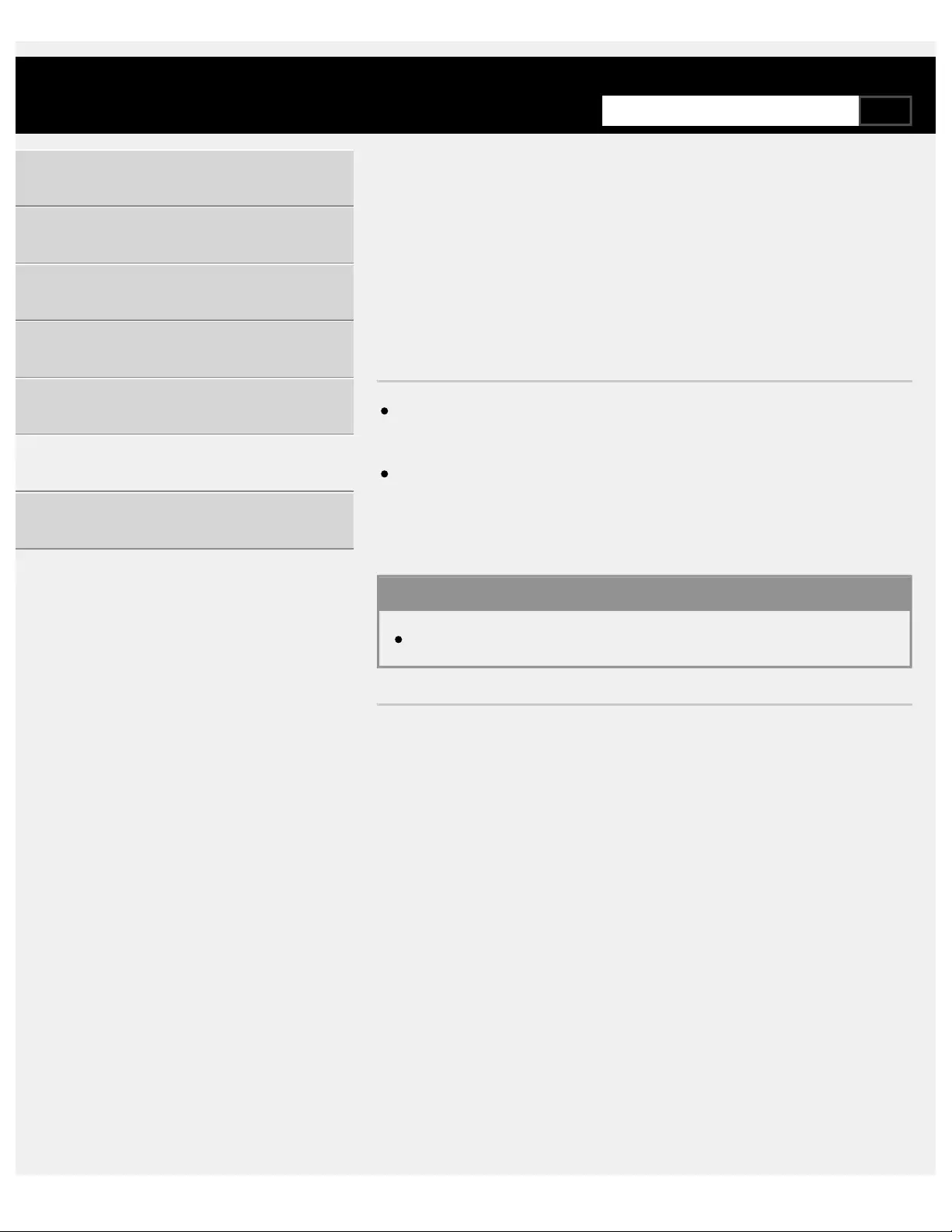
>Troubleshooting >Picture (quality)/screen
>Dark screen. How to brighten the screen.
Print
Dark screen. How to brighten the
screen.
Press the ACTION MENU button, select [Picture adjustments] —
[Advanced settings], and adjust [Brightness] or [Contrast].
Check the [Power saving] option setting in [Eco]. If it is [Low] or [High],
the screen darkens. Select [Power] — [Eco], and set [Power saving] to
[Off] to brighten the screen.
Related topics
No color/Dark picture/Color is not correct/Picture is too bright.
>Troubleshooting >Picture (quality)/screen
>Dark screen. How to brighten the screen.
Go to page top
Help Guide
Getting Started
Watching TV
Using the TV with Other Devices
Connecting to a Network
Settings
Troubleshooting
Index
C-785-100-13(1)
Copyright 2018 Sony Visual Products Inc.
251
SearchSearch

>Troubleshooting >Picture (quality)/screen
>Color is not correct. How to adjust the color tone.
Print
Color is not correct. How to adjust
the color tone.
Press the ACTION MENU button, select [Picture adjustments] —
[Advanced settings], and adjust [Hue] or [Color temperature].
To deepen the color tone, adjust [Color] or [Live Color]. Press the
ACTION MENU button, and then select [Picture adjustments] —
[Advanced settings].
Related topics
No color/Dark picture/Color is not correct/Picture is too bright.
>Troubleshooting >Picture (quality)/screen
>Color is not correct. How to adjust the color tone.
Go to page top
Help Guide
Getting Started
Watching TV
Using the TV with Other Devices
Connecting to a Network
Settings
Troubleshooting
Index
C-785-100-13(1)
Copyright 2018 Sony Visual Products Inc.
252
SearchSearch

>Troubleshooting >Picture (quality)/screen
>Screen format/wide mode changes automatically.
Print
Screen format/wide mode changes
automatically.
When changing the channel or video input, if [Auto wide] in [Screen] is
enabled, the current [Wide mode] setting is automatically changed
according to the input signal. To lock the [Wide mode] setting, disable
[Auto wide].
Related topics
Suddenly the picture becomes small.
>Troubleshooting >Picture (quality)/screen
>Screen format/wide mode changes automatically.
Go to page top
Help Guide
Getting Started
Watching TV
Using the TV with Other Devices
Connecting to a Network
Settings
Troubleshooting
Index
C-785-100-13(1)
Copyright 2018 Sony Visual Products Inc.
253
SearchSearch

>Troubleshooting >Picture (quality)/screen
>The screen suddenly changes to a video you do not recognize while watching TV.
Print
The screen suddenly changes to a
video you do not recognize while
watching TV.
In this case, the TV might be in demo mode. Try exiting demo mode.
Press the ACTION MENU button on the remote control and select
[Suspend Demo]. Then, press the HOME button on the remote control
and select [Settings] — [Retail mode settings]. Disable [Demo mode]
and [Picture reset mode].
>Troubleshooting >Picture (quality)/screen
>The screen suddenly changes to a video you do not recognize while watching TV.
Go to page top
Help Guide
Getting Started
Watching TV
Using the TV with Other Devices
Connecting to a Network
Settings
Troubleshooting
Index
C-785-100-13(1)
Copyright 2018 Sony Visual Products Inc.
254
SearchSearch

>Troubleshooting >Picture (quality)/screen
>Suddenly the picture becomes small.
Print
Suddenly the picture becomes small.
The picture becomes smaller during commercials due to the method
used by the provider to broadcast content. When HD content channels
switch to SD content (commercials), the picture may become small
with a black border.
[Auto wide] in [Screen] will not expand the picture while the content
switches since the content information is regulated by the channel
signal provider. You can manually change the [Wide mode] setting if
desired, which will remain in effect until you change the channel/input
or manually change the [Wide mode] setting again.
Related topics
Screen format/wide mode changes automatically.
>Troubleshooting >Picture (quality)/screen
>Suddenly the picture becomes small.
Go to page top
Help Guide
Getting Started
Watching TV
Using the TV with Other Devices
Connecting to a Network
Settings
Troubleshooting
Index
C-785-100-13(1)
Copyright 2018 Sony Visual Products Inc.
255
SearchSearch

>Troubleshooting >Picture (quality)/screen
>Black bands appear at the edges of the screen.
Print
Black bands appear at the edges of
the screen.
Some wide screen programs are filmed in aspect ratios that are
greater than 16:9 (this is especially common with theatrical releases).
Your TV will show these programs with black bands at the top and
bottom of the screen. For more details, check the documentation that
came with your DVD (or contact your program provider).
Programs in 4:3 aspect ratio will have bands on the left and right sides
of the screen.
Programs broadcasted in HD formats (720p and 1080i) with 4:3
content will commonly have black bands on the left and right sides of
the screen which are added by the broadcaster.
[Auto wide] in [Screen] will not expand the picture when the black
bands on the sides of the screen are added by the broadcaster. You
can manually set [Wide mode] to [Wide zoom] or [Zoom], which will
remain in effect until you change the channel/input or manually change
the [Wide mode] setting again.
Some cable and satellite set-top boxes can also control the size of the
picture. If you are using a set-top box, refer to the manufacturer of the
set-top box for more information.
>Troubleshooting >Picture (quality)/screen
>Black bands appear at the edges of the screen.
Go to page top
Help Guide
Getting Started
Watching TV
Using the TV with Other Devices
Connecting to a Network
Settings
Troubleshooting
Index
C-785-100-13(1)
256
SearchSearch

>Troubleshooting >Picture (quality)/screen
>A black box appears on the screen.
Print
A black box appears on the screen.
A text option is selected although no text is available. Check the
[Captions]/[Broadcast closed captions] settings in [Accessibility].
(Option name differs depending on your region/country.) You can
select a different option from the current option.
>Troubleshooting >Picture (quality)/screen
>A black box appears on the screen.
Go to page top
Help Guide
Getting Started
Watching TV
Using the TV with Other Devices
Connecting to a Network
Settings
Troubleshooting
Index
C-785-100-13(1)
Copyright 2018 Sony Visual Products Inc.
257
SearchSearch

>Troubleshooting >Picture (quality)/screen
>There are banners/tickers at the top or bottom of the screen.
Print
There are banners/tickers at the top
or bottom of the screen.
In this case, the TV might be in demo mode. Try exiting demo mode.
Press the ACTION MENU button on the remote control and select
[Suspend Demo]. Then, press the HOME button on the remote control
and select [Settings] — [Retail mode settings]. Disable [Demo mode]
and [Picture reset mode].
>Troubleshooting >Picture (quality)/screen
>There are banners/tickers at the top or bottom of the screen.
Go to page top
Help Guide
Getting Started
Watching TV
Using the TV with Other Devices
Connecting to a Network
Settings
Troubleshooting
Index
C-785-100-13(1)
Copyright 2018 Sony Visual Products Inc.
258
SearchSearch
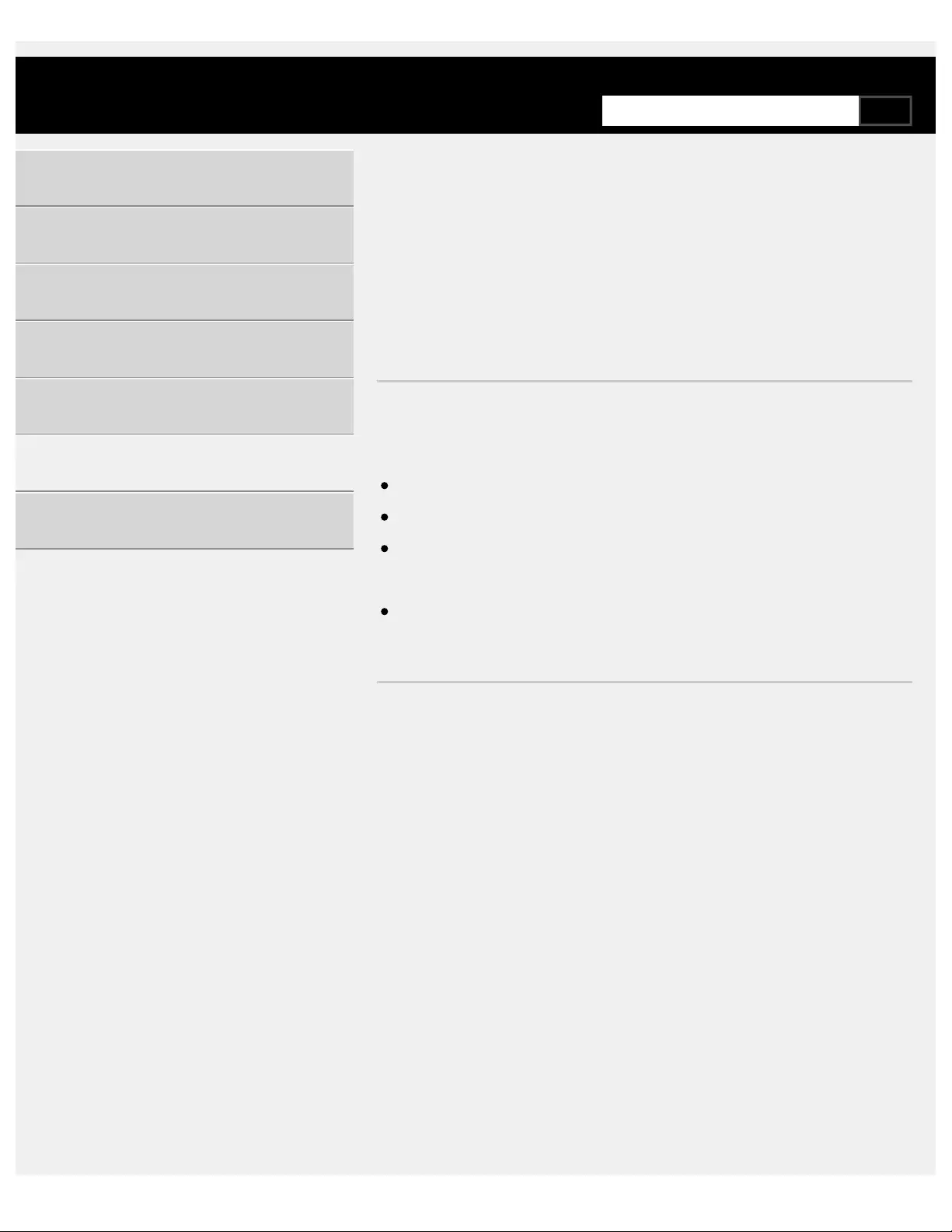
>Troubleshooting >Picture (quality)/screen
>High resolution HDR pictures are not displayed.
Print
High resolution HDR pictures are not
displayed.
The following are required to watch high resolution HDR pictures such as
4K (50p/60p).
Connect the 4K (50p/60p) playable device to HDMI IN 2/3.
Use a Premium High Speed HDMI Cable(s) that supports 18 Gbps.
Set [HDMI signal format] to [Enhanced format] by selecting [Settings]
— [External inputs] — [HDMI signal format] — [Enhanced format].
Check whether the connected device has the latest settings or
firmware.
>Troubleshooting >Picture (quality)/screen
>High resolution HDR pictures are not displayed.
Go to page top
Help Guide
Getting Started
Watching TV
Using the TV with Other Devices
Connecting to a Network
Settings
Troubleshooting
Index
C-785-100-13(1)
Copyright 2018 Sony Visual Products Inc.
259
SearchSearch

>Troubleshooting >Picture (quality)/screen
>3D pictures are not displayed. The 3D effect is weak. (3D models only)
Print
3D pictures are not displayed. The
3D effect is weak. (3D models only)
3D models have [3D settings] in [Settings] — [Picture & Display].
If two pictures are displayed side-by-side, press the ACTION MENU
button, then select [3D] — [3D display] — [3D (Side by Side)].
If two pictures are displayed one above the other, press the ACTION
MENU button, then select [3D] — [3D display] — [3D (Over-Under)].
If the [3D display] screen appears and 3D pictures are not displayed,
turn off the device that plays 3D content and turn it on again.
Perceived 3D effect may vary from person to person.
For 4K models
3D signal of 4K cannot be displayed.
For Passive 3D Glasses models, view the TV from the front on. The
3D effect may be less pronounced depending on the viewing position.
Adjust the viewing angle to the screen.
For Active 3D Glasses models
Be sure that there are no obstacles between the TV and the Active 3D
Glasses.
Replace the battery in the Active 3D Glasses.
Be sure that the Active 3D Glasses are powered on.
It is necessary to register your Active 3D Glasses to the TV before
use. To use the glasses with another TV, it is necessary to re-register.
Turn off the glasses before re-registering.
Wireless devices or microwave ovens may affect the communication
Help Guide
Getting Started
Watching TV
Using the TV with Other Devices
Connecting to a Network
Settings
Troubleshooting
Index
260
SearchSearch

between the 3D Glasses and the TV as the TV uses the 2.4GHz band.
In this case, try to register again.
If a device that is not 3D-compatible (such as a home theater system)
is connected between the TV and a 3D-compatible device, the TV will
not display 3D pictures. Connect the 3D-compatible device directly to
the TV via an authorized HIGH SPEED HDMI cable bearing the HDMI
logo.
Related topics
Understanding the basics of 3D TV (3D models only)
>Troubleshooting >Picture (quality)/screen
>3D pictures are not displayed. The 3D effect is weak. (3D models only)
Go to page top
C-785-100-13(1)
Copyright 2018 Sony Visual Products Inc.
261
Search

>Troubleshooting >Picture (quality)/screen
>Black bars appear on both sides of the screen when watching 3D pictures. (3D
models only)
Print
Black bars appear on both sides of
the screen when watching 3D
pictures. (3D models only)
3D models have [3D settings] in [Settings] — [Picture & Display].
Black bars appear on both sides of the screen in order to process 3D
signals when adjusting the depth of 3D pictures in [Settings] —
[Picture & Display] — [3D settings] — [3D depth adjustment].
>Troubleshooting >Picture (quality)/screen
>Black bars appear on both sides of the screen when watching 3D pictures. (3D
models only)
Go to page top
Help Guide
Getting Started
Watching TV
Using the TV with Other Devices
Connecting to a Network
Settings
Troubleshooting
Index
C-785-100-13(1)
Copyright 2018 Sony Visual Products Inc.
262
SearchSearch

>Troubleshooting >Picture (quality)/screen
>You cannot turn off 3D display while watching 3D content. (3D models only)
Print
You cannot turn off 3D display while
watching 3D content. (3D models
only)
3D models have [3D settings] in [Settings] — [Picture & Display].
For 3D content displayed with the 3D signal, 3D display cannot be
turned off on your TV. Turn 3D settings off on the connected device
(such as a Blu-ray player).
>Troubleshooting >Picture (quality)/screen
>You cannot turn off 3D display while watching 3D content. (3D models only)
Go to page top
Help Guide
Getting Started
Watching TV
Using the TV with Other Devices
Connecting to a Network
Settings
Troubleshooting
Index
C-785-100-13(1)
Copyright 2018 Sony Visual Products Inc.
263
SearchSearch

>Troubleshooting >Picture (quality)/screen
>The message [3D signal has been detected.] automatically appears when 3D
signal is detected. (3D models only)
Print
The message [3D signal has been
detected.] automatically appears
when 3D signal is detected. (3D
models only)
3D models have [3D settings] in [Settings] — [Picture & Display].
Deactivate the [3D signal notification] setting. Press the HOME button,
then select [Settings] — [Picture & Display] — [3D settings] — [3D
signal notification] — [Off].
>Troubleshooting >Picture (quality)/screen
>The message [3D signal has been detected.] automatically appears when 3D
signal is detected. (3D models only)
Go to page top
Help Guide
Getting Started
Watching TV
Using the TV with Other Devices
Connecting to a Network
Settings
Troubleshooting
Index
C-785-100-13(1)
Copyright 2018 Sony Visual Products Inc.
264
SearchSearch
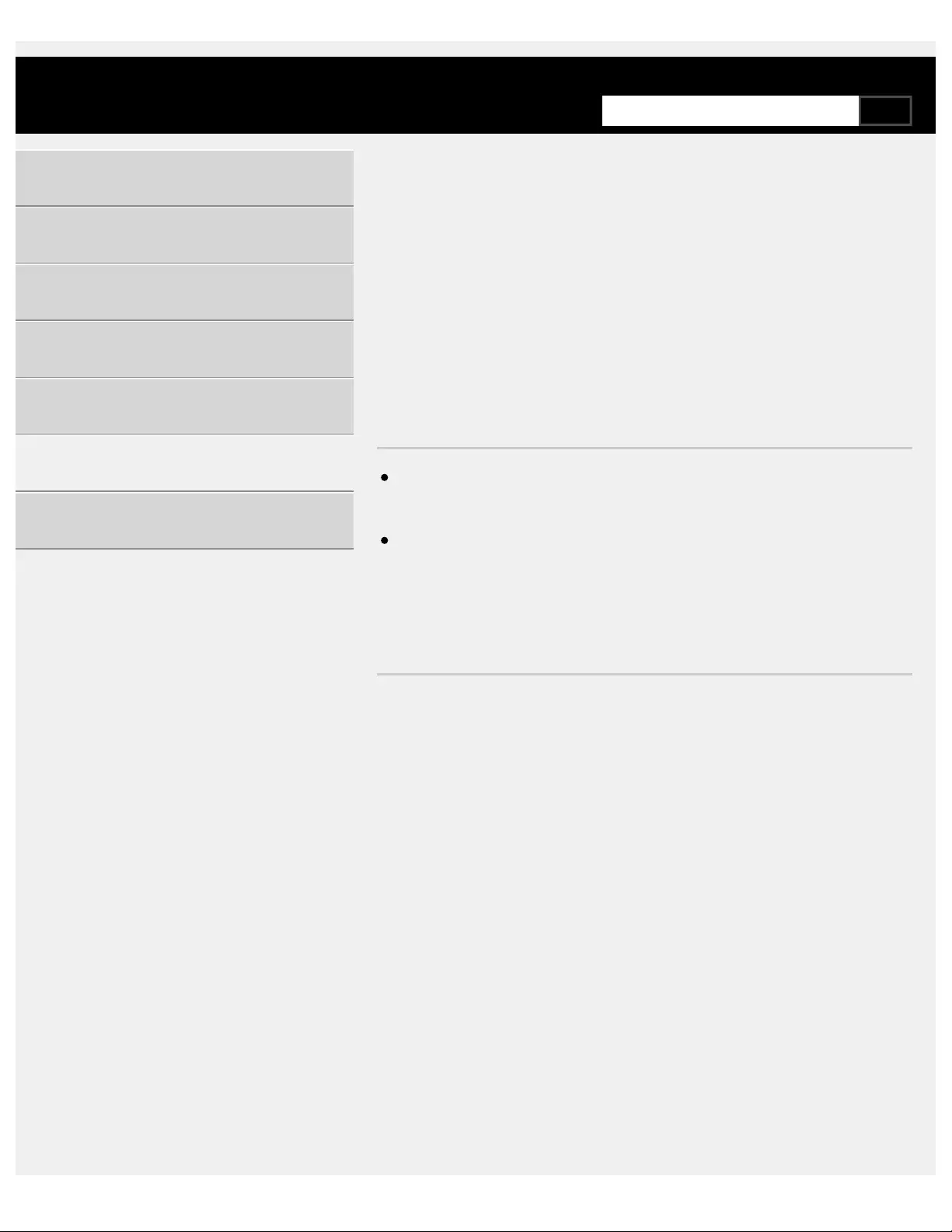
>Troubleshooting >Picture (quality)/screen
>A message about an app asking for permission to access a TV function is
displayed.
Print
A message about an app asking for
permission to access a TV function
is displayed.
Select whether to allow or deny the app access to the displayed
function.
You can check the list of app permissions categorized by TV function
and change permission settings for each app. Press the HOME button,
select [Settings] — [Apps] — [App permissions] — the desired TV
function.
>Troubleshooting >Picture (quality)/screen
>A message about an app asking for permission to access a TV function is
displayed.
Go to page top
Help Guide
Getting Started
Watching TV
Using the TV with Other Devices
Connecting to a Network
Settings
Troubleshooting
Index
C-785-100-13(1)
Copyright 2018 Sony Visual Products Inc.
265
SearchSearch
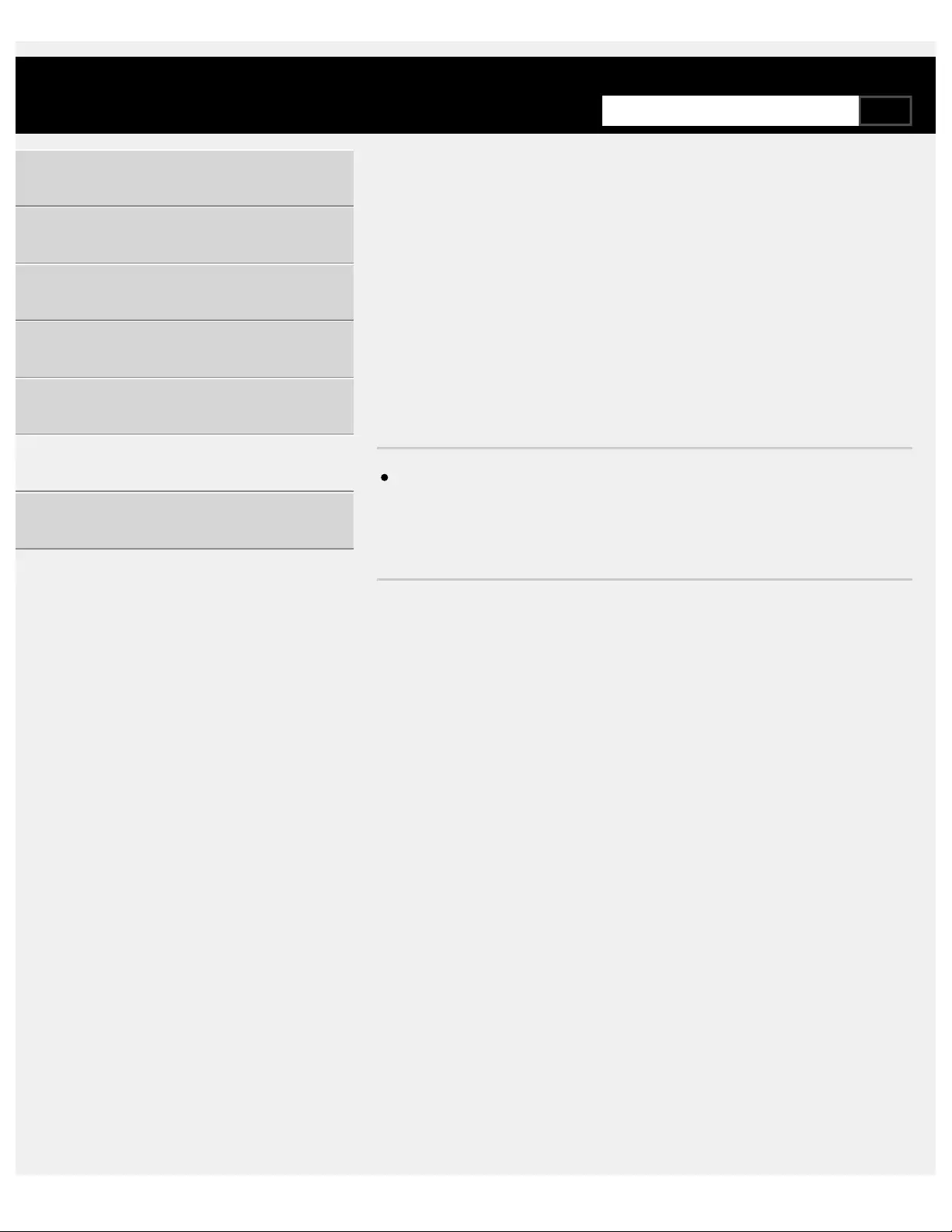
>Troubleshooting >Picture (quality)/screen
>The screen becomes darker after a certain period of time. (only models equipped
with an OLED panel)
Print
The screen becomes darker after a
certain period of time. (only models
equipped with an OLED panel)
If the whole image or part of the image remains still, the screen will
gradually become darker to reduce image retention. This is a feature
to protect the panel, and is not a malfunction.
>Troubleshooting >Picture (quality)/screen
>The screen becomes darker after a certain period of time. (only models equipped
with an OLED panel)
Go to page top
Help Guide
Getting Started
Watching TV
Using the TV with Other Devices
Connecting to a Network
Settings
Troubleshooting
Index
C-785-100-13(1)
Copyright 2018 Sony Visual Products Inc.
266
SearchSearch

>Troubleshooting >Picture (quality)/screen
>The message [Panel refresh did not finish] is displayed. (only models equipped
with an OLED panel)
Print
The message [Panel refresh did not
finish] is displayed. (only models
equipped with an OLED panel)
Panel refresh automatically runs after the TV has been used for a long
period of time to reduce image retention. If the TV is turned on, the AC
power cord (mains lead) is unplugged, or the ambient temperature falls
outside of the range between 10°C (50°F) and 40°C (104°F) during the
panel refresh, the process will not complete and this message will appear.
If panel refresh started automatically, it will restart when you turn off
the TV with the remote control.
If panel refresh was initiated manually, you must select it again.
>Troubleshooting >Picture (quality)/screen
>The message [Panel refresh did not finish] is displayed. (only models equipped
with an OLED panel)
Go to page top
Help Guide
Getting Started
Watching TV
Using the TV with Other Devices
Connecting to a Network
Settings
Troubleshooting
Index
C-785-100-13(1)
Copyright 2018 Sony Visual Products Inc.
267
SearchSearch
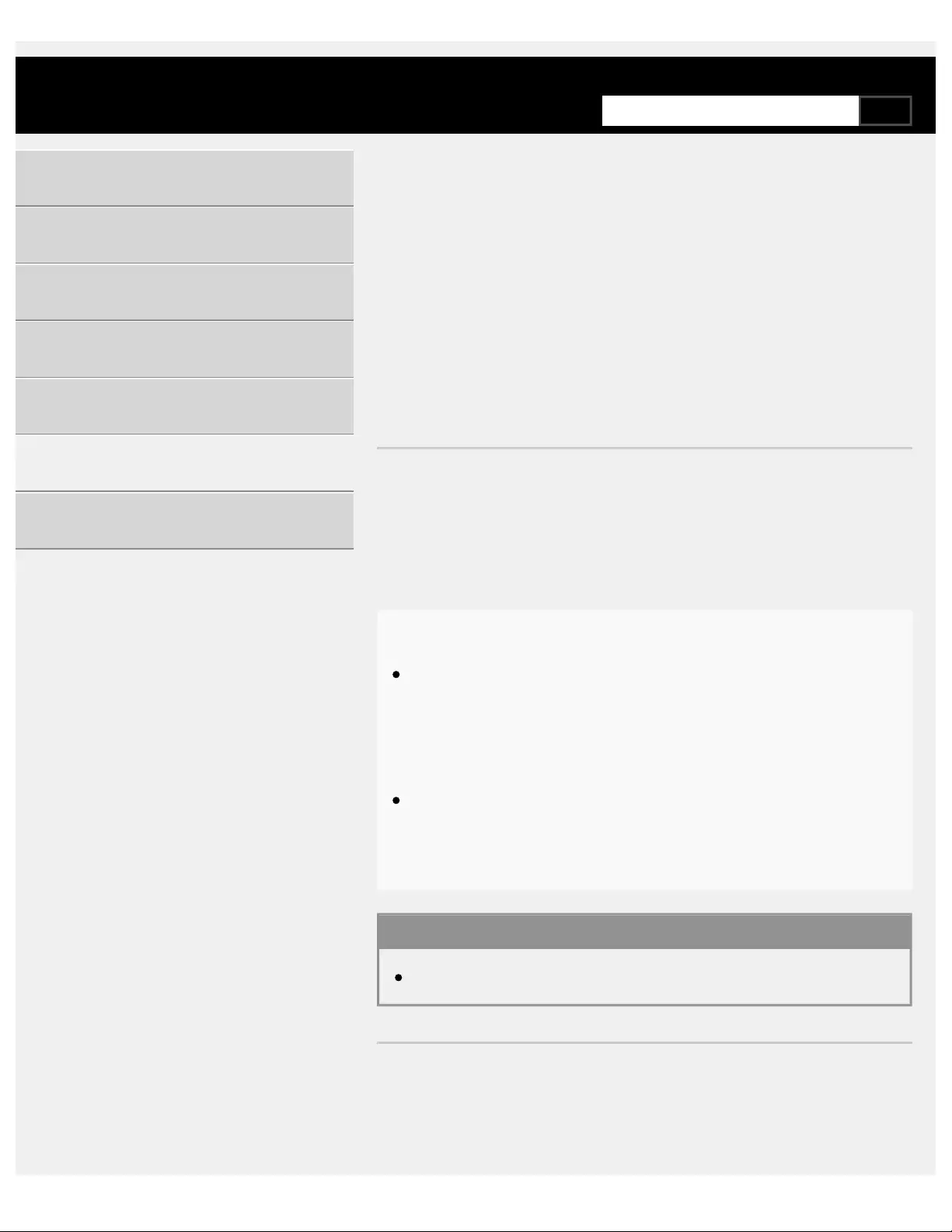
>Troubleshooting >Picture (quality)/screen
>You are concerned about an image retention. (only models equipped with an
OLED panel)
Print
You are concerned about an image
retention. (only models equipped
with an OLED panel)
If the same image is displayed repeatedly or for long periods of time,
image retention may occur.
To reduce image retention, we recommend that you turn off the TV
normally by pressing the power button on the remote control or TV.
Note
Manually perform panel refresh only when image retention is
particularly noticeable. As a reference, perform it only once a year.
Avoid performing it more than once a year because it may affect
the usable life of the panel.
Images that include clocks and bright colors easily cause image
retention. Avoid displaying these types of images for long periods
of time, otherwise image retention may occur.
Related topics
[Expert panel settings](only models equipped with an OLED panel)
>Troubleshooting >Picture (quality)/screen
>You are concerned about an image retention. (only models equipped with an
OLED panel)
Go to page top
Help Guide
Getting Started
Watching TV
Using the TV with Other Devices
Connecting to a Network
Settings
Troubleshooting
Index
268
SearchSearch

>Troubleshooting >Picture (quality)/screen
>A white line appears on the screen. (only models equipped with an OLED panel)
Print
A white line appears on the screen.
(only models equipped with an
OLED panel)
Panel refresh automatically runs after the TV has been used for a long
period of time to reduce image retention. Panel refresh starts after the
TV is turned off and takes about one hour to complete. A white line
may be displayed on the screen during the panel refresh. This is not a
malfunction of the TV.
>Troubleshooting >Picture (quality)/screen
>A white line appears on the screen. (only models equipped with an OLED panel)
Go to page top
Help Guide
Getting Started
Watching TV
Using the TV with Other Devices
Connecting to a Network
Settings
Troubleshooting
Index
C-785-100-13(1)
Copyright 2018 Sony Visual Products Inc.
269
SearchSearch

>Troubleshooting >Picture (quality)/screen
>Panel refresh does not complete. (only models equipped with an OLED panel)
Print
Panel refresh does not complete.
(only models equipped with an
OLED panel)
Panel refresh works when the room temperature is between 10°C
(50°F) and 40°C (104°F). If the room temperature falls outside of this
range during the panel refresh, the process does not finish and a
message is displayed. If the message is displayed, check the
temperature of the room.
>Troubleshooting >Picture (quality)/screen
>Panel refresh does not complete. (only models equipped with an OLED panel)
Go to page top
Help Guide
Getting Started
Watching TV
Using the TV with Other Devices
Connecting to a Network
Settings
Troubleshooting
Index
C-785-100-13(1)
Copyright 2018 Sony Visual Products Inc.
270
SearchSearch

>Troubleshooting >Broadcast reception
>Check these things first to troubleshoot your TV reception.
Print
Check these things first to
troubleshoot your TV reception.
Make sure that the antenna cable is firmly connected to the TV.
Make sure that the antenna cable is not loose or disconnected.
Make sure that the cable or cable connector of antenna is not
damaged.
>Troubleshooting >Broadcast reception
>Check these things first to troubleshoot your TV reception.
Go to page top
Help Guide
Getting Started
Watching TV
Using the TV with Other Devices
Connecting to a Network
Settings
Troubleshooting
Index
C-785-100-13(1)
Copyright 2018 Sony Visual Products Inc.
271
SearchSearch

>Troubleshooting >Broadcast reception
>Block noise or an error message appears and you cannot watch broadcasts.
Print
Block noise or an error message
appears and you cannot watch
broadcasts.
Make sure that the antenna cable is connected to the correct ports (at
the TV/connected devices/wall).
Make sure that the cable is not old or that the inside of the connector is
not short-circuited.
>Troubleshooting >Broadcast reception
>Block noise or an error message appears and you cannot watch broadcasts.
Go to page top
Help Guide
Getting Started
Watching TV
Using the TV with Other Devices
Connecting to a Network
Settings
Troubleshooting
Index
C-785-100-13(1)
Copyright 2018 Sony Visual Products Inc.
272
SearchSearch

>Troubleshooting >Broadcast reception
>Ghosting or double images appear.
Print
Ghosting or double images appear.
Check cable or antenna connections.
Check the antenna location and direction.
Press the ACTION MENU button, then select [Picture adjustments] —
[Advanced settings] — [Motion] — [Motionflow] — [Standard] or [Off].
(For [Motionflow] compatible models only)
[Motionflow] compatible models have [Motionflow] in [Settings] —
[Picture & Display] — [Picture adjustments] — [Advanced settings] —
[Motion].
Related topics
Distorted picture.
Check these things first to troubleshoot your TV reception.
>Troubleshooting >Broadcast reception
>Ghosting or double images appear.
Go to page top
Help Guide
Getting Started
Watching TV
Using the TV with Other Devices
Connecting to a Network
Settings
Troubleshooting
Index
C-785-100-13(1)
Copyright 2018 Sony Visual Products Inc.
273
SearchSearch

>Troubleshooting >Broadcast reception
>Only snow noise or a black picture appears on the screen.
Print
Only snow noise or a black picture
appears on the screen.
Check if auto tuning is performed.
Check if the antenna is broken or bent.
Check if the antenna has reached the end of its serviceable life (3-5
years for normal use, 1-2 years at a seaside location).
Related topics
Check these things first to troubleshoot your TV reception.
>Troubleshooting >Broadcast reception
>Only snow noise or a black picture appears on the screen.
Go to page top
Help Guide
Getting Started
Watching TV
Using the TV with Other Devices
Connecting to a Network
Settings
Troubleshooting
Index
C-785-100-13(1)
Copyright 2018 Sony Visual Products Inc.
274
SearchSearch

>Troubleshooting >Broadcast reception
>There is picture or sound noise when viewing an analog TV channel.
Print
There is picture or sound noise
when viewing an analog TV channel.
Check the [Analog channel adjustment] settings.
Press the HOME button, then select [Settings] — [Channels] —
[Channel setup] — [Cable/Antenna] — [Analog channel adjustment].
Perform [Fine tune] to obtain better picture and sound reception.
(Option name differs depending on your region/country.)
Set [Audio filter] to [Off], [Low] or [High] to improve sound for
analog reception.
Make sure that the antenna is connected using a high quality 75-ohm
coaxial cable.
Keep the antenna cable away from other connecting cables.
Related topics
Check these things first to troubleshoot your TV reception.
>Troubleshooting >Broadcast reception
>There is picture or sound noise when viewing an analog TV channel.
Go to page top
Help Guide
Getting Started
Watching TV
Using the TV with Other Devices
Connecting to a Network
Settings
Troubleshooting
Index
C-785-100-13(1)
Copyright 2018 Sony Visual Products Inc.
275
SearchSearch

>Troubleshooting >Broadcast reception >Some channels are blank.
Print
Some channels are blank.
The channel is for scrambled/subscription service only. Subscribe to a
pay TV service.
The channel is used only for data (no picture or sound).
Contact the broadcaster for transmission details.
Related topics
Check these things first to troubleshoot your TV reception.
>Troubleshooting >Broadcast reception >Some channels are blank.
Go to page top
Help Guide
Getting Started
Watching TV
Using the TV with Other Devices
Connecting to a Network
Settings
Troubleshooting
Index
C-785-100-13(1)
Copyright 2018 Sony Visual Products Inc.
276
SearchSearch
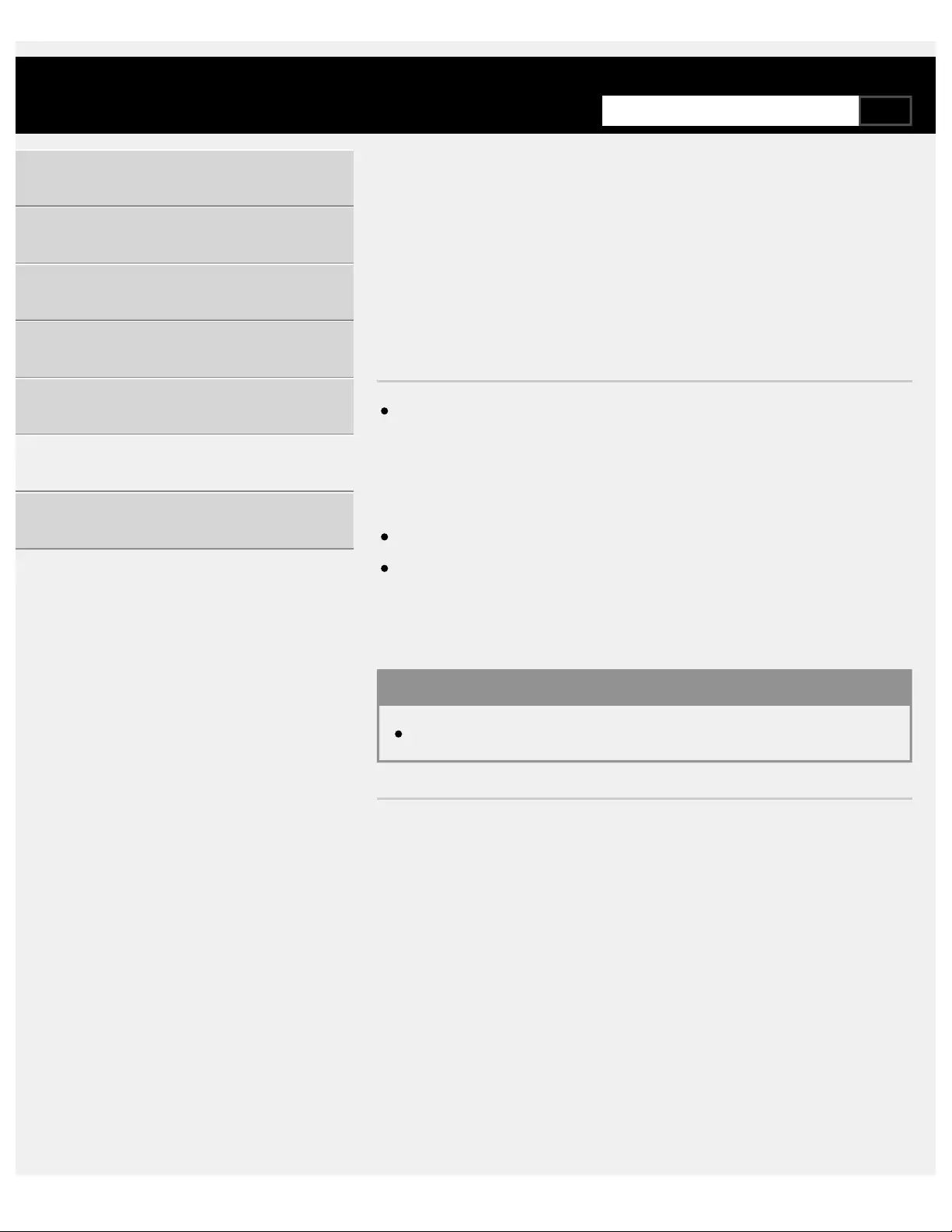
>Troubleshooting >Broadcast reception
>Poor reception or poor picture quality with digital broadcasts.
Print
Poor reception or poor picture
quality with digital broadcasts.
Change the position, direction and angle of the terrestrial television
antenna to maximize the antenna signal level. Make sure that the
direction of the antenna is not changed unintentionally (such as by
wind).
If you are using a TV signal booster, adjust its signal gain.
If equipment (such as a TV signal distributor) is connected between
the antenna and the TV, it may affect the TV reception. Directly
connect the antenna and the TV to check if the reception is improved.
Related topics
Check these things first to troubleshoot your TV reception.
>Troubleshooting >Broadcast reception
>Poor reception or poor picture quality with digital broadcasts.
Go to page top
Help Guide
Getting Started
Watching TV
Using the TV with Other Devices
Connecting to a Network
Settings
Troubleshooting
Index
C-785-100-13(1)
Copyright 2018 Sony Visual Products Inc.
277
SearchSearch
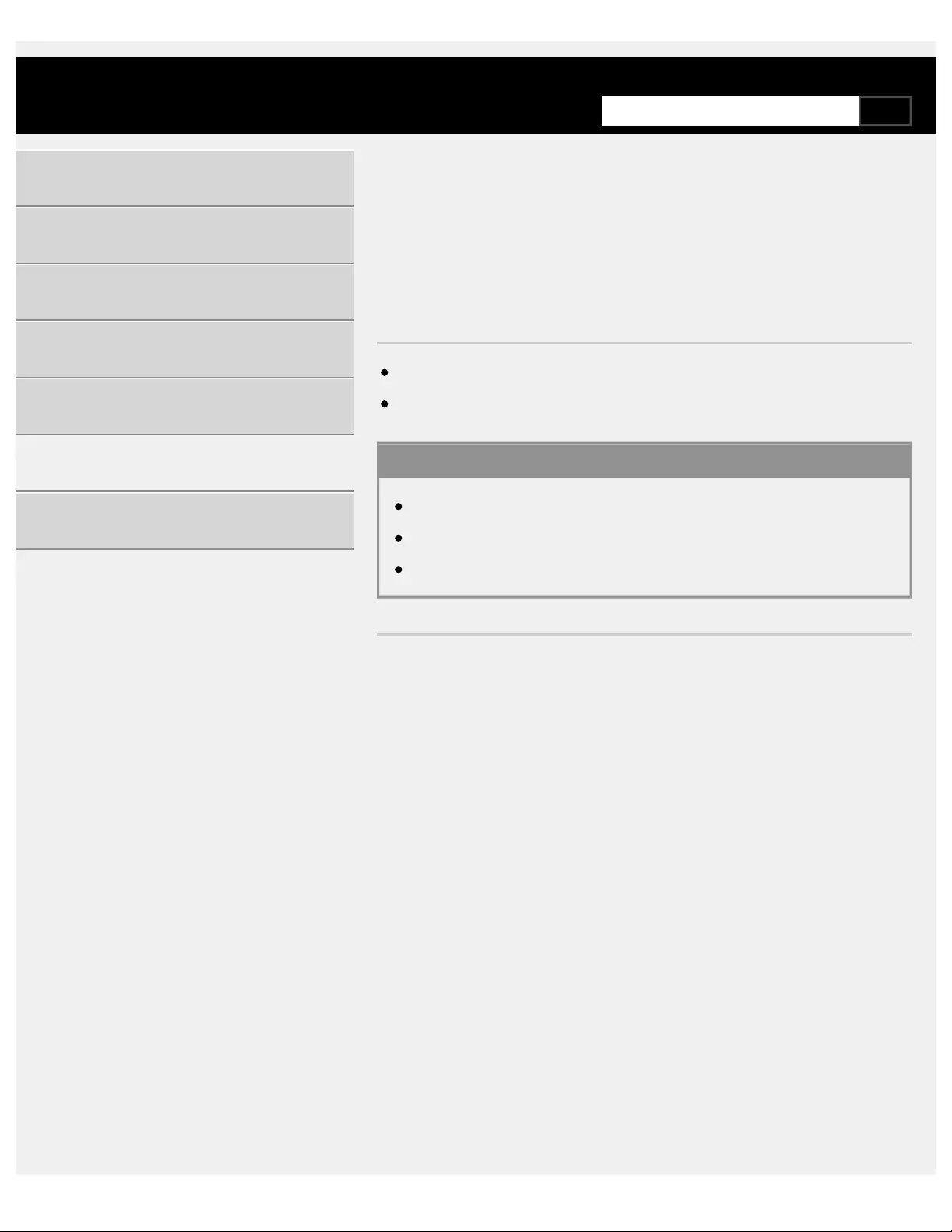
>Troubleshooting >Broadcast reception
>You cannot view digital channels.
Print
You cannot view digital channels.
Ask a local installer if digital transmissions are provided in your area.
Upgrade to a higher gain antenna.
Related topics
Check these things first to troubleshoot your TV reception.
You cannot receive or select channels.
Some digital cable channels are not displayed.
>Troubleshooting >Broadcast reception
>You cannot view digital channels.
Go to page top
Help Guide
Getting Started
Watching TV
Using the TV with Other Devices
Connecting to a Network
Settings
Troubleshooting
Index
C-785-100-13(1)
Copyright 2018 Sony Visual Products Inc.
278
SearchSearch

>Troubleshooting >Broadcast reception
>You cannot receive or select channels.
Print
You cannot receive or select
channels.
Perform [Auto program] to add receivable channels that are not
present in the TV memory.
Press the HOME button, then select [Settings] — [Channels] —
[Channel setup] — [Cable/Antenna] — [Auto program].
Check that [Signal type] is set correctly.
Press the HOME button, then select [Settings] — [Channels] —
[Channel setup] — [Cable/Antenna] — [Signal type].
[Cable]
Set to receive and select cable channels.
[Antenna]
Set to receive and select antenna channels.
Related topics
Some channels are blank.
You cannot view digital channels.
Some digital cable channels are not displayed.
>Troubleshooting >Broadcast reception
>You cannot receive or select channels.
Go to page top
Help Guide
Getting Started
Watching TV
Using the TV with Other Devices
Connecting to a Network
Settings
Troubleshooting
Index
C-785-100-13(1)
279
SearchSearch
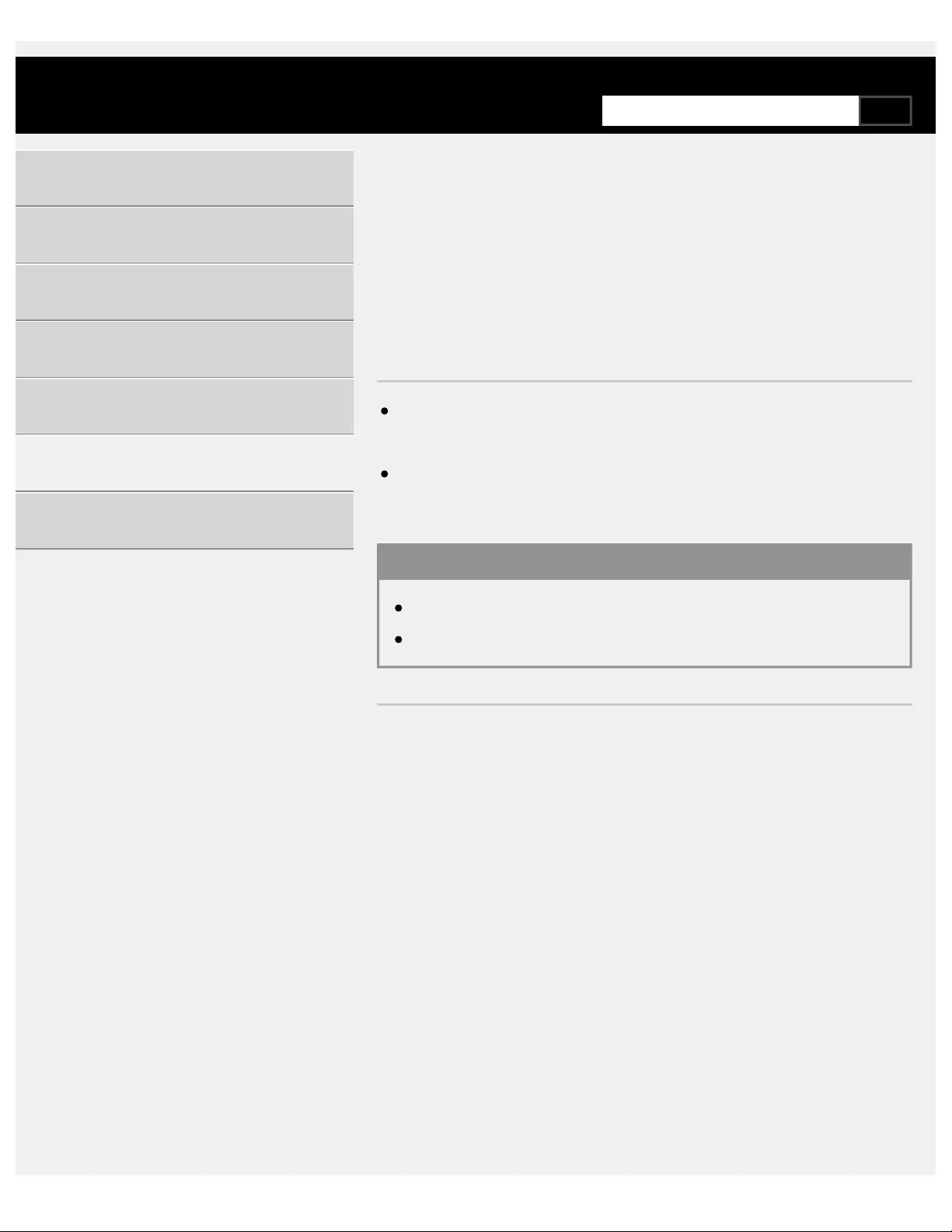
>Troubleshooting >Broadcast reception
>Some digital cable channels are not displayed.
Print
Some digital cable channels are not
displayed.
Certain cable companies have limitations on the broadcast of digital
cable channels. Check with your cable company for more information.
The digital cable channel may be set to [Hidden] in [Show/Hide
channels].
Related topics
Check these things first to troubleshoot your TV reception.
You cannot view digital channels.
>Troubleshooting >Broadcast reception
>Some digital cable channels are not displayed.
Go to page top
Help Guide
Getting Started
Watching TV
Using the TV with Other Devices
Connecting to a Network
Settings
Troubleshooting
Index
C-785-100-13(1)
Copyright 2018 Sony Visual Products Inc.
280
SearchSearch
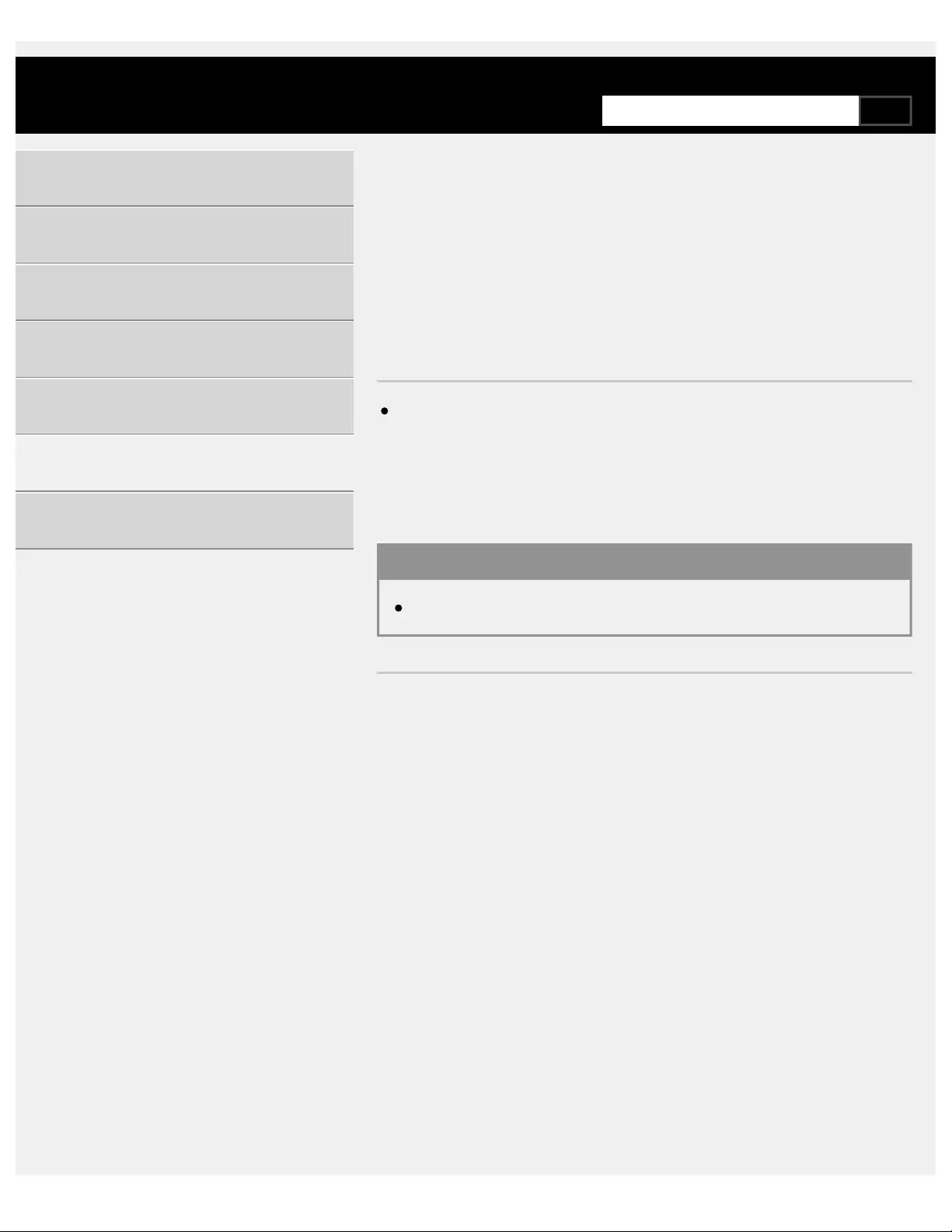
>Troubleshooting >Broadcast reception
>Broadcast HD formats have poor quality.
Print
Broadcast HD formats have poor
quality.
Content and signal quality are regulated by the signal provider. Many
HD channels and content are actually upscaled versions of standard-
definition broadcasts. The picture is affected by the quality of the
signal received, which varies between channel and program.
Related topics
Check these things first to troubleshoot your TV reception.
>Troubleshooting >Broadcast reception
>Broadcast HD formats have poor quality.
Go to page top
Help Guide
Getting Started
Watching TV
Using the TV with Other Devices
Connecting to a Network
Settings
Troubleshooting
Index
C-785-100-13(1)
Copyright 2018 Sony Visual Products Inc.
281
SearchSearch

>Troubleshooting >Sound >No sound but good picture.
Print
No sound but good picture.
Check the volume control.
Press MUTING or VOL + button to cancel muting.
Press the ACTION MENU button, then select [Speakers] — [TV
speakers].
If it is set to [Audio system], the TV speakers only output key tones or
system sounds.
Related topics
No audio or low audio with a home theater system.
>Troubleshooting >Sound >No sound but good picture.
Go to page top
Help Guide
Getting Started
Watching TV
Using the TV with Other Devices
Connecting to a Network
Settings
Troubleshooting
Index
C-785-100-13(1)
Copyright 2018 Sony Visual Products Inc.
282
SearchSearch

>Troubleshooting >Sound >Audio noise.
Print
Audio noise.
Make sure that the antenna is connected using a high quality 75-ohm
coaxial cable.
Keep the antenna cable away from other connecting cables.
To avoid TV interference, make sure to use an undamaged antenna
cable.
Related topics
Distorted sound.
>Troubleshooting >Sound >Audio noise.
Go to page top
Help Guide
Getting Started
Watching TV
Using the TV with Other Devices
Connecting to a Network
Settings
Troubleshooting
Index
C-785-100-13(1)
Copyright 2018 Sony Visual Products Inc.
283
SearchSearch

>Troubleshooting >Sound
>No audio or low audio with a home theater system.
Print
No audio or low audio with a home
theater system.
Press the ACTION MENU button, then select [Speakers] — [Audio
system].
Set [Headphone/Audio out] to [Audio out (Fixed)] in the [Sound]
setting.
If the audio system is not compatible with Dolby Digital or DTS, set
[Settings] — [Sound] — [Digital audio out] to [PCM].
Depending on your model, if [Speakers] is set to [TV speakers] and
[Hi Res upscaling (DSEE HX)] is set to [Auto], DIGITAL AUDIO OUT
(OPTICAL) is muted.
Set [Digital audio out volume] to Max in the [Sound] setting.
When using HDMI input with Super Audio CD or DVD-Audio, DIGITAL
AUDIO OUT (OPTICAL) may not provide an audio signal.
Related topics
Audio noise.
Connecting an audio system
>Troubleshooting >Sound
>No audio or low audio with a home theater system.
Go to page top
Help Guide
Getting Started
Watching TV
Using the TV with Other Devices
Connecting to a Network
Settings
Troubleshooting
Index
C-785-100-13(1)
Copyright 2018 Sony Visual Products Inc.
284
SearchSearch
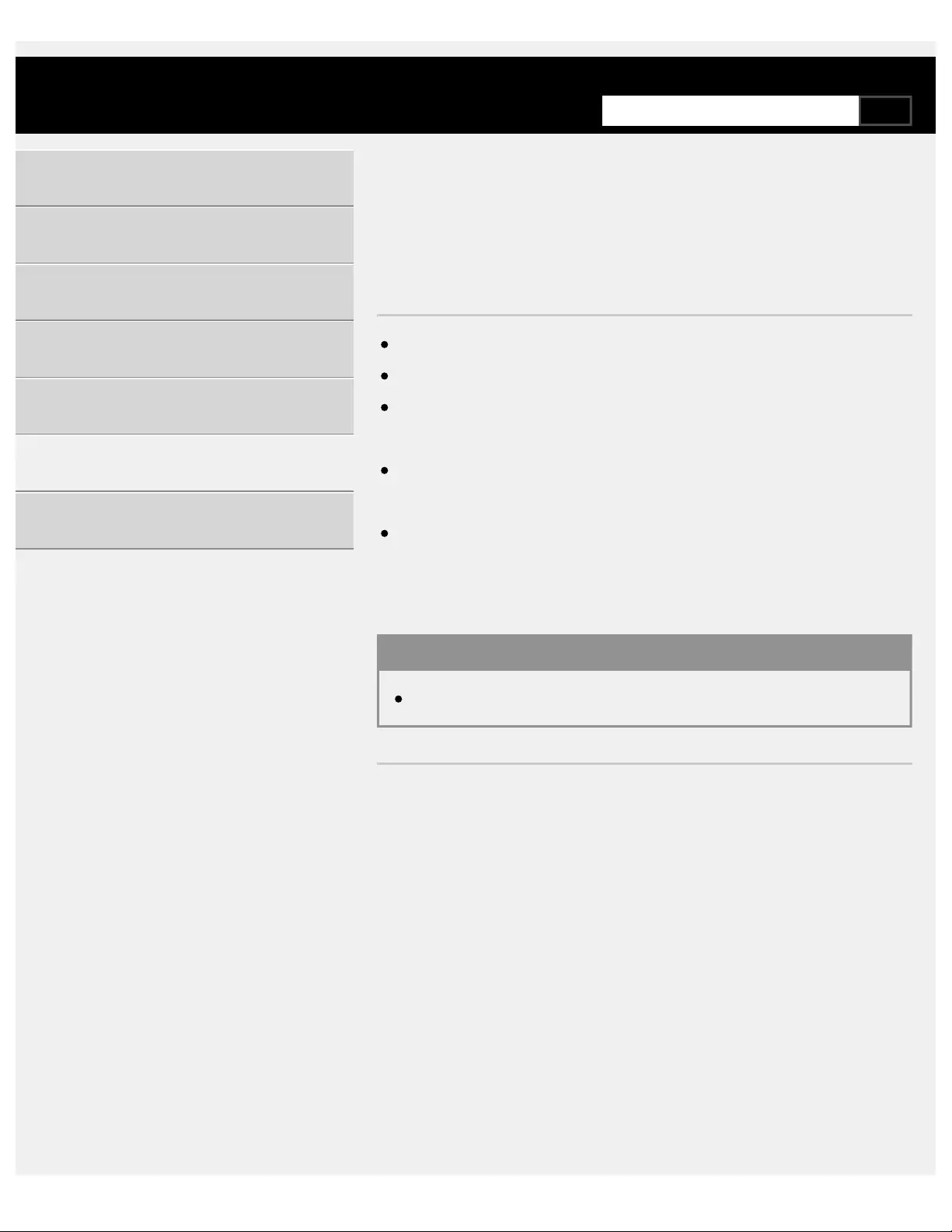
>Troubleshooting >Sound >Distorted sound.
Print
Distorted sound.
Check the antenna/cable connection.
Keep the antenna/cable away from other connecting cables.
Keep the TV away from electrical noise sources such as cars, hair-
dryers, Wi-Fi units, mobile phones, or optical devices.
When installing an optional device, leave some space between the
device and TV.
Set [Audio filter] to [Low] or [High] to improve sound for analog
reception. ([Audio filter] may not be available depending on your
region/country.)
Related topics
Audio noise.
>Troubleshooting >Sound >Distorted sound.
Go to page top
Help Guide
Getting Started
Watching TV
Using the TV with Other Devices
Connecting to a Network
Settings
Troubleshooting
Index
C-785-100-13(1)
Copyright 2018 Sony Visual Products Inc.
285
SearchSearch

>Troubleshooting >Sound
>Headphone/Bluetooth audio device volume cannot be adjusted.
Print
Headphone/Bluetooth audio device
volume cannot be adjusted.
If you cannot adjust the headphone or Bluetooth audio device volume
with the VOL +/- buttons, press the ACTION MENU button and select
[Headphone volume]/[Bluetooth volume].
Bluetooth A2DP-supported models that can use Bluetooth audio devices
have [A/V sync] in [Settings] — [Sound].
>Troubleshooting >Sound
>Headphone/Bluetooth audio device volume cannot be adjusted.
Go to page top
Help Guide
Getting Started
Watching TV
Using the TV with Other Devices
Connecting to a Network
Settings
Troubleshooting
Index
C-785-100-13(1)
Copyright 2018 Sony Visual Products Inc.
286
SearchSearch

>Troubleshooting >Sound
>You want to output sound from both the headphones/Bluetooth audio device and
the TV speakers.
Print
You want to output sound from both
the headphones/Bluetooth audio
device and the TV speakers.
The setting method varies depending on whether the TV is an A2DP-
supported model.
Bluetooth A2DP-supported models that can use Bluetooth audio devices
have [A/V sync] in [Settings] — [Sound].
If the TV is not an A2DP-supported model ([A/V sync] not
available)
Press the HOME button, then select [Settings] — [Sound] —
[Headphone speaker link] — [Speakers on].
Bluetooth audio devices such as Bluetooth headphones cannot be used.
If the TV is an A2DP-supported model ([A/V sync] available)
To enable [Audio to both TV speakers & other device], press the
HOME button, then select [Settings] — [Sound] — [Audio to both TV
speakers & other device].
>Troubleshooting >Sound
>You want to output sound from both the headphones/Bluetooth audio device and
the TV speakers.
Go to page top
Help Guide
Getting Started
Watching TV
Using the TV with Other Devices
Connecting to a Network
Settings
Troubleshooting
Index
287
SearchSearch
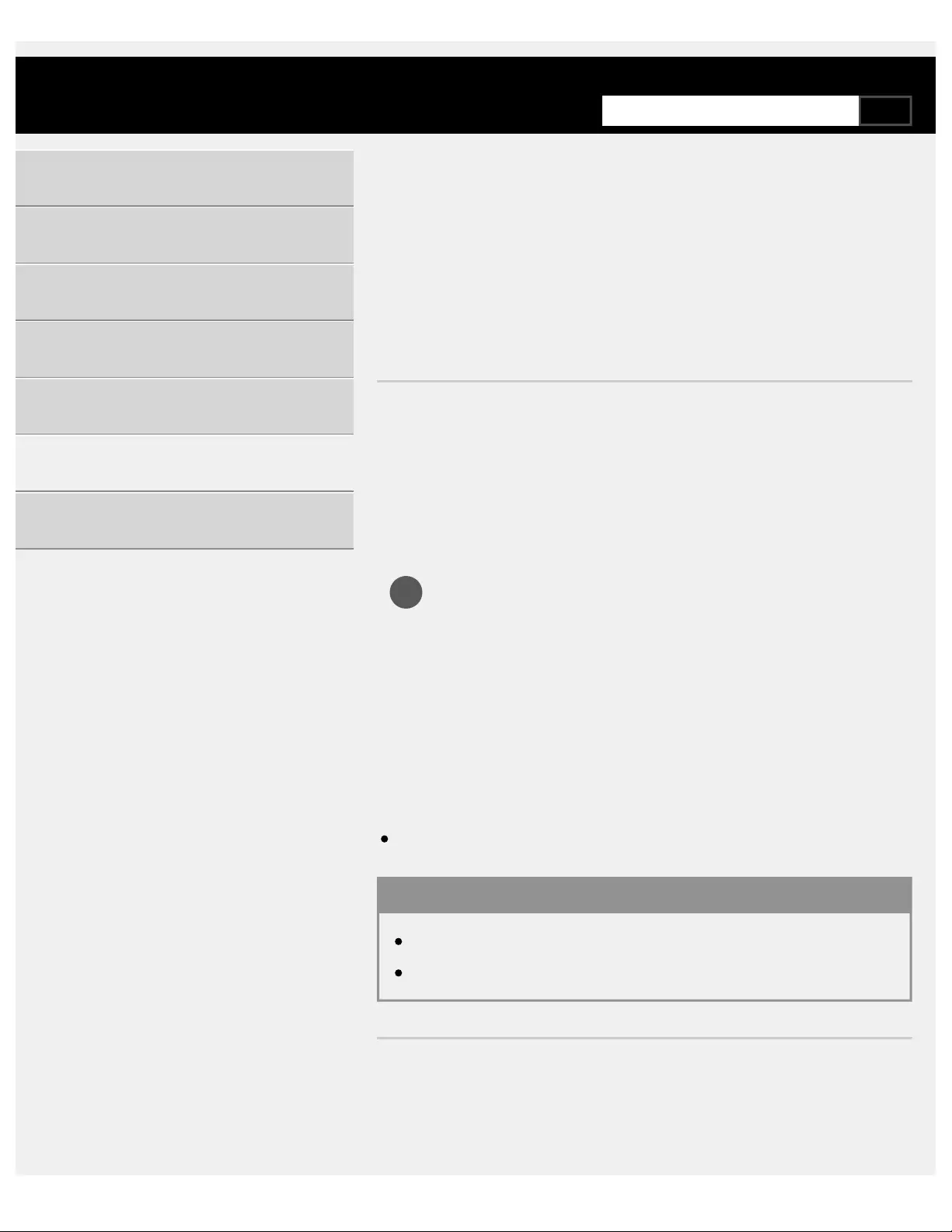
1
>Troubleshooting >Sound
>You are concerned about a delay between the picture and sound.
Print
You are concerned about a delay
between the picture and sound.
If a Bluetooth audio device is connected
The picture and sound do not match because the sound is delayed due to
the properties of Bluetooth. You can adjust the output timing of the picture
and sound with the A/V sync setting.
To enable [A/V sync], press the HOME button, then select
[Settings] — [Sound] — [A/V sync].
If a specific audio system is connected with
an HDMI cable
You can adjust the output timing of the picture and sound. For details
about supported models, refer to the support site.
Support Site
Related topics
Adjusting the AV sync setting
Adjusting audio system-related settings
>Troubleshooting >Sound
>You are concerned about a delay between the picture and sound.
Go to page top
Help Guide
Getting Started
Watching TV
Using the TV with Other Devices
Connecting to a Network
Settings
Troubleshooting
Index
288
SearchSearch
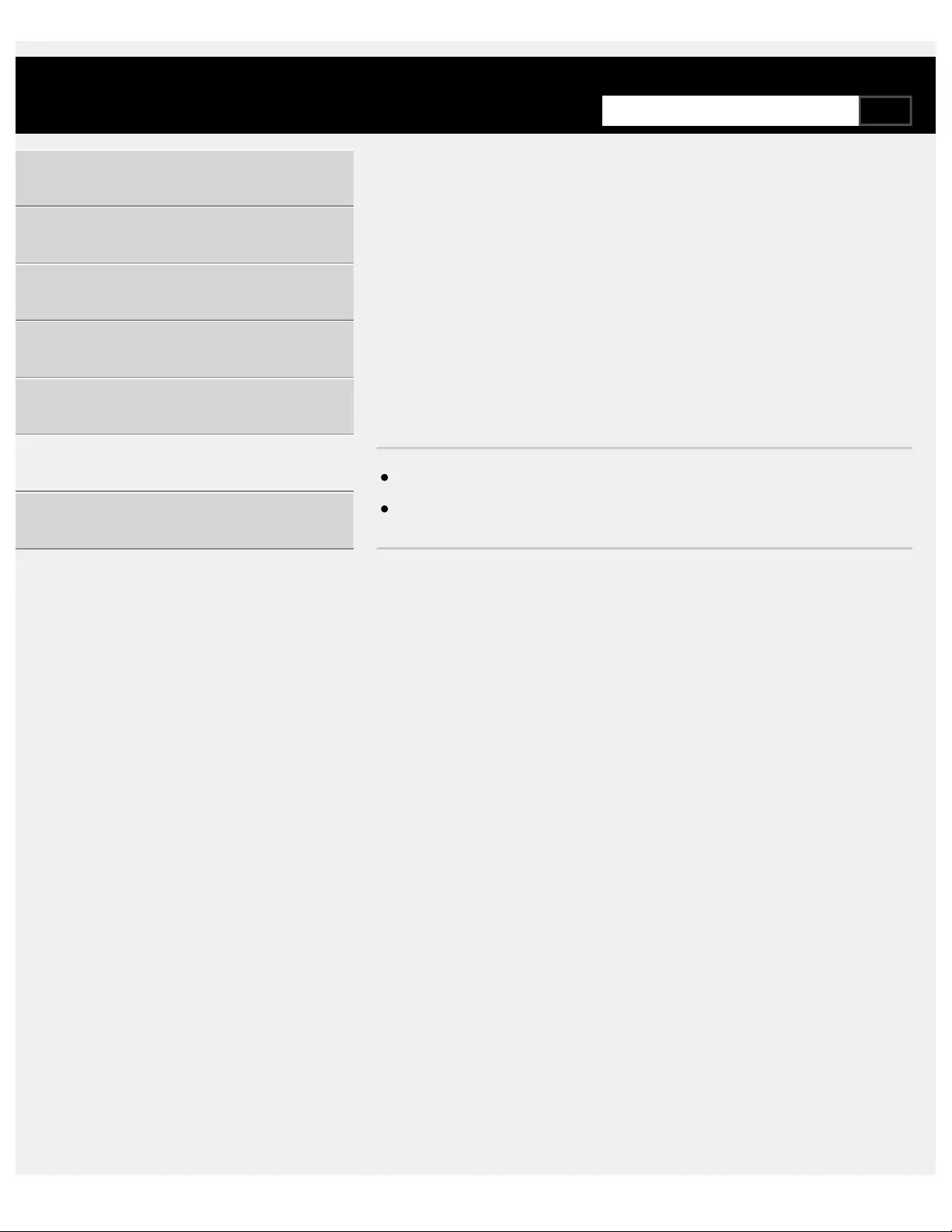
>Troubleshooting >Network (Internet/home)/apps
>The network name (SSID) of the wireless router to which you want to connect is
not displayed.
Print
The network name (SSID) of the
wireless router to which you want to
connect is not displayed.
Reset the wireless router.
Select [[Manual entry]] to enter a network name (SSID).
>Troubleshooting >Network (Internet/home)/apps
>The network name (SSID) of the wireless router to which you want to connect is
not displayed.
Go to page top
Help Guide
Getting Started
Watching TV
Using the TV with Other Devices
Connecting to a Network
Settings
Troubleshooting
Index
C-785-100-13(1)
Copyright 2018 Sony Visual Products Inc.
289
SearchSearch

>Troubleshooting >Network (Internet/home)/apps
>Sometimes video streaming quality is poor.
Print
Sometimes video streaming quality
is poor.
Quality depends on the original video provided by the video content
provider and your connection bandwidth.
The wireless network connection quality varies depending on the
distance or obstacles (e.g., wall) between the TV and the wireless
router, environmental interference, and the quality of the wireless
router. In this case, use a wired connection for the Internet, or try the
5GHz band.
The 5GHz band may not be supported depending on your
region/country. If the 5GHz band is not supported, the TV can only
connect to a wireless router using the 2.4GHz band.
Related topics
Connecting to a network using a LAN cable
Using Wi-Fi to connect the TV to your network
>Troubleshooting >Network (Internet/home)/apps
>Sometimes video streaming quality is poor.
Go to page top
Help Guide
Getting Started
Watching TV
Using the TV with Other Devices
Connecting to a Network
Settings
Troubleshooting
Index
C-785-100-13(1)
Copyright 2018 Sony Visual Products Inc.
290
SearchSearch
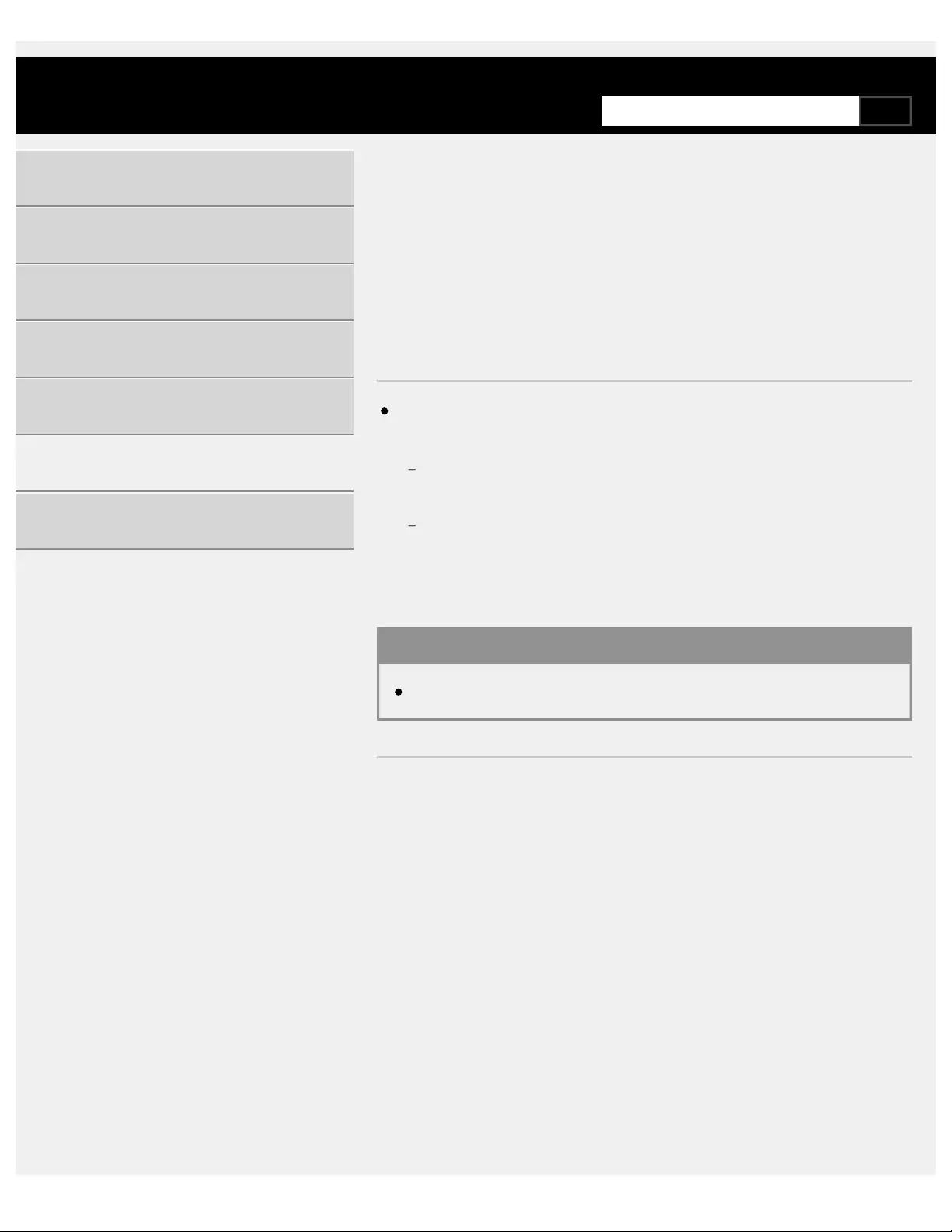
>Troubleshooting >Network (Internet/home)/apps
>Wi-Fi connection is lost or intermittent.
Print
Wi-Fi connection is lost or
intermittent.
Check the installation location of the TV and wireless router. Signal
condition may be affected by the following :
Other wireless devices, microwaves, fluorescent lights, etc., are
placed nearby.
There are floors or walls between the wireless router and TV.
If the problem persists even after checking the above, try using a wired
LAN connection.
Related topics
Using Wi-Fi to connect the TV to your network
>Troubleshooting >Network (Internet/home)/apps
>Wi-Fi connection is lost or intermittent.
Go to page top
Help Guide
Getting Started
Watching TV
Using the TV with Other Devices
Connecting to a Network
Settings
Troubleshooting
Index
C-785-100-13(1)
Copyright 2018 Sony Visual Products Inc.
291
SearchSearch
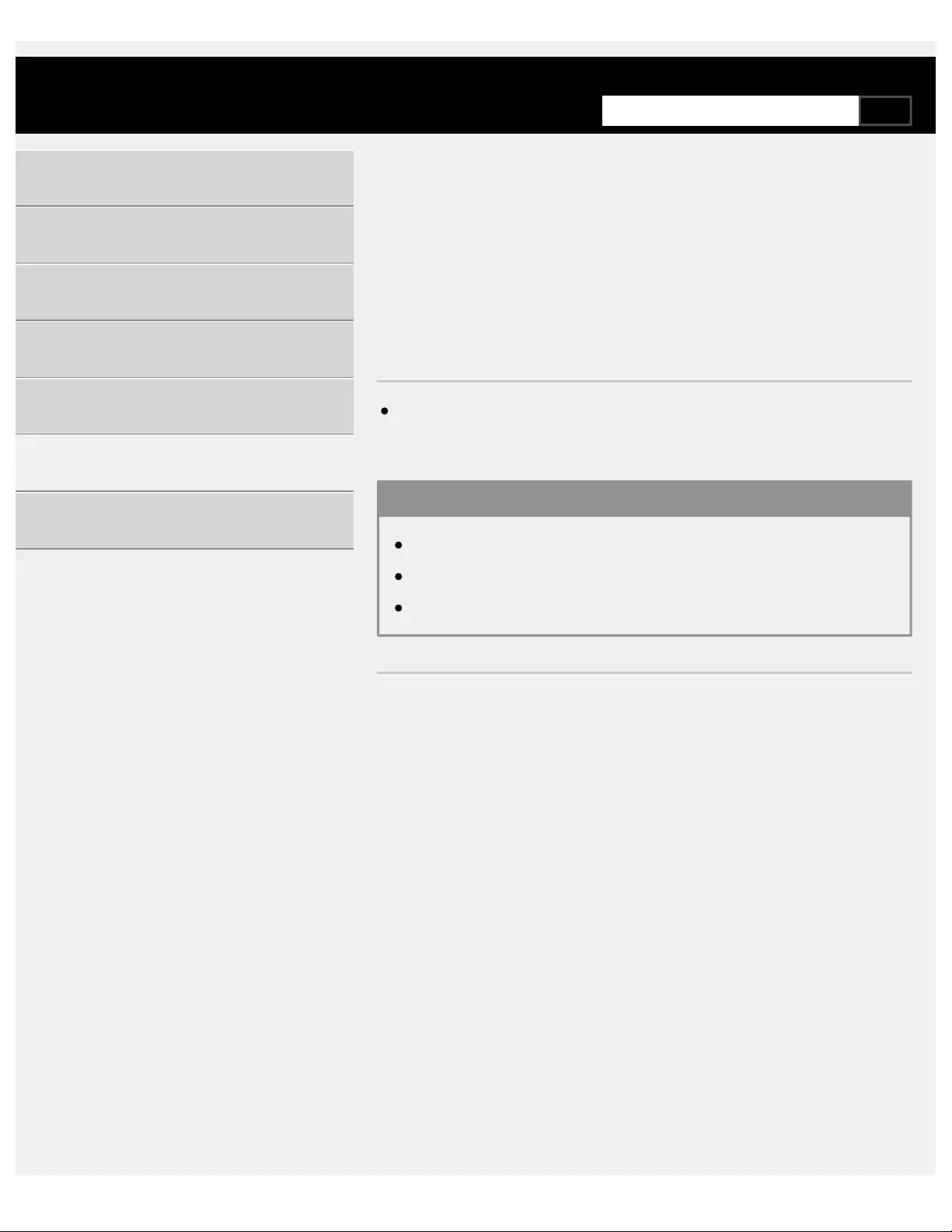
>Troubleshooting >Network (Internet/home)/apps
>Certain Internet video content displays a loss of detail.
Print
Certain Internet video content
displays a loss of detail.
Video quality and picture size depend on broadband speed and
delivery by video content providers.
Related topics
Connecting to a network using a LAN cable
Using Wi-Fi to connect the TV to your network
Sometimes video streaming quality is poor.
>Troubleshooting >Network (Internet/home)/apps
>Certain Internet video content displays a loss of detail.
Go to page top
Help Guide
Getting Started
Watching TV
Using the TV with Other Devices
Connecting to a Network
Settings
Troubleshooting
Index
C-785-100-13(1)
Copyright 2018 Sony Visual Products Inc.
292
SearchSearch

>Troubleshooting >Network (Internet/home)/apps
>Good picture quality but no sound on Internet video content.
Print
Good picture quality but no sound on
Internet video content.
Quality depends on the original content provided by the video content
provider and your connection bandwidth.
Due to the nature of Internet video, not all videos will contain sound.
Related topics
Connecting to a network using a LAN cable
Using Wi-Fi to connect the TV to your network
>Troubleshooting >Network (Internet/home)/apps
>Good picture quality but no sound on Internet video content.
Go to page top
Help Guide
Getting Started
Watching TV
Using the TV with Other Devices
Connecting to a Network
Settings
Troubleshooting
Index
C-785-100-13(1)
Copyright 2018 Sony Visual Products Inc.
293
SearchSearch

>Troubleshooting >Network (Internet/home)/apps
>Apps are inaccessible.
Print
Apps are inaccessible.
Check that the LAN cable or AC power cord (mains lead) of the
router/modem has been connected properly.
Your router/modem must be set in advance to connect to the
Internet. Contact your Internet service provider for router/modem
settings.
Try using apps later. The app content provider’s server may be out of
service.
Related topics
Connecting to a network using a LAN cable
Using Wi-Fi to connect the TV to your network
>Troubleshooting >Network (Internet/home)/apps
>Apps are inaccessible.
Go to page top
Help Guide
Getting Started
Watching TV
Using the TV with Other Devices
Connecting to a Network
Settings
Troubleshooting
Index
C-785-100-13(1)
Copyright 2018 Sony Visual Products Inc.
*
*
294
SearchSearch
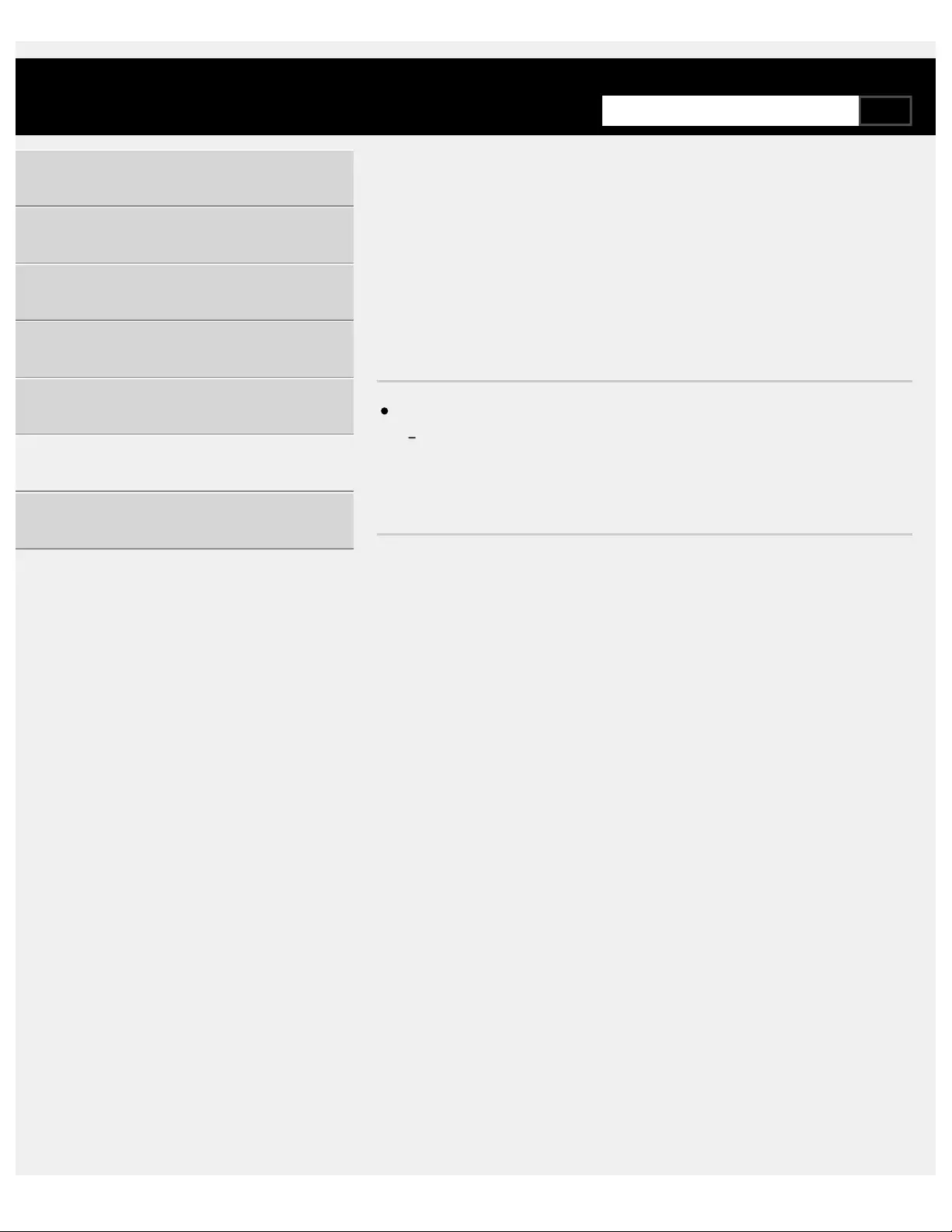
>Troubleshooting >Network (Internet/home)/apps
>The TV cannot access the Internet when IPv6 is set.
Print
The TV cannot access the Internet
when IPv6 is set.
IPv6 may not be supported, in which case set IPv6 to off.
Press the HOME button, then select [Settings] — [Network] —
[Advanced settings] — [IPv6 setup]/[IPv6]*.
*The setting displayed varies depending on your model.
>Troubleshooting >Network (Internet/home)/apps
>The TV cannot access the Internet when IPv6 is set.
Go to page top
Help Guide
Getting Started
Watching TV
Using the TV with Other Devices
Connecting to a Network
Settings
Troubleshooting
Index
C-785-100-13(1)
Copyright 2018 Sony Visual Products Inc.
295
SearchSearch

>Troubleshooting >Network (Internet/home)/apps
>Your TV cannot connect to the server.
Print
Your TV cannot connect to the
server.
Check the LAN cable or wireless connection to your server and your
TV.
Check if your network is properly configured on your TV.
Check your LAN cable/wireless connection or your server. The TV
may have lost connection with the server.
Perform [Server diagnostics] to check if your media server is properly
communicating with the TV. Press the HOME button, then select
[Settings] — [Network] — [Home network] — [Server diagnostics].
Related topics
Home network features
A message appears stating that the TV cannot connect to your
network.
>Troubleshooting >Network (Internet/home)/apps
>Your TV cannot connect to the server.
Go to page top
Help Guide
Getting Started
Watching TV
Using the TV with Other Devices
Connecting to a Network
Settings
Troubleshooting
Index
C-785-100-13(1)
Copyright 2018 Sony Visual Products Inc.
296
SearchSearch

>Troubleshooting >Network (Internet/home)/apps
>A message appears stating that the TV cannot connect to your network.
Print
A message appears stating that the
TV cannot connect to your network.
Check the current network settings and perform [Check Connection].
Press the HOME button, then select [Settings] — [Network] —
[Advanced settings] — [Network status] — [Check Connection].
Check your network connections and/or server’s instruction manual for
connection information, or contact the person who set up the network
(network administrator).
Reconfigure your network settings by pressing the HOME button, then
select [Settings] — [Network] — [Network setup].
If the LAN cable is connected to an active server and the TV has
acquired an IP address, check your server’s connections and
configurations. Press the HOME button, then select [Settings] —
[Network] — [Advanced settings] — [Network status].
Related topics
Your TV cannot connect to the server.
>Troubleshooting >Network (Internet/home)/apps
>A message appears stating that the TV cannot connect to your network.
Go to page top
Help Guide
Getting Started
Watching TV
Using the TV with Other Devices
Connecting to a Network
Settings
Troubleshooting
Index
C-785-100-13(1)
Copyright 2018 Sony Visual Products Inc.
297
SearchSearch

>Troubleshooting >Network (Internet/home)/apps
>You can connect to the Internet, but not to Google services.
Print
You can connect to the Internet, but
not to Google services.
The date and time settings of this TV may be incorrect. Depending on
the app such as Google Play or YouTube, you may not be able to
connect to Google services if the time is incorrect.
Press the HOME button, then select [Settings] — [Date & time] —
[Automatic date & time] — [Use network time] to automatically adjust
the time through the network.
>Troubleshooting >Network (Internet/home)/apps
>You can connect to the Internet, but not to Google services.
Go to page top
Help Guide
Getting Started
Watching TV
Using the TV with Other Devices
Connecting to a Network
Settings
Troubleshooting
Index
C-785-100-13(1)
Copyright 2018 Sony Visual Products Inc.
298
SearchSearch
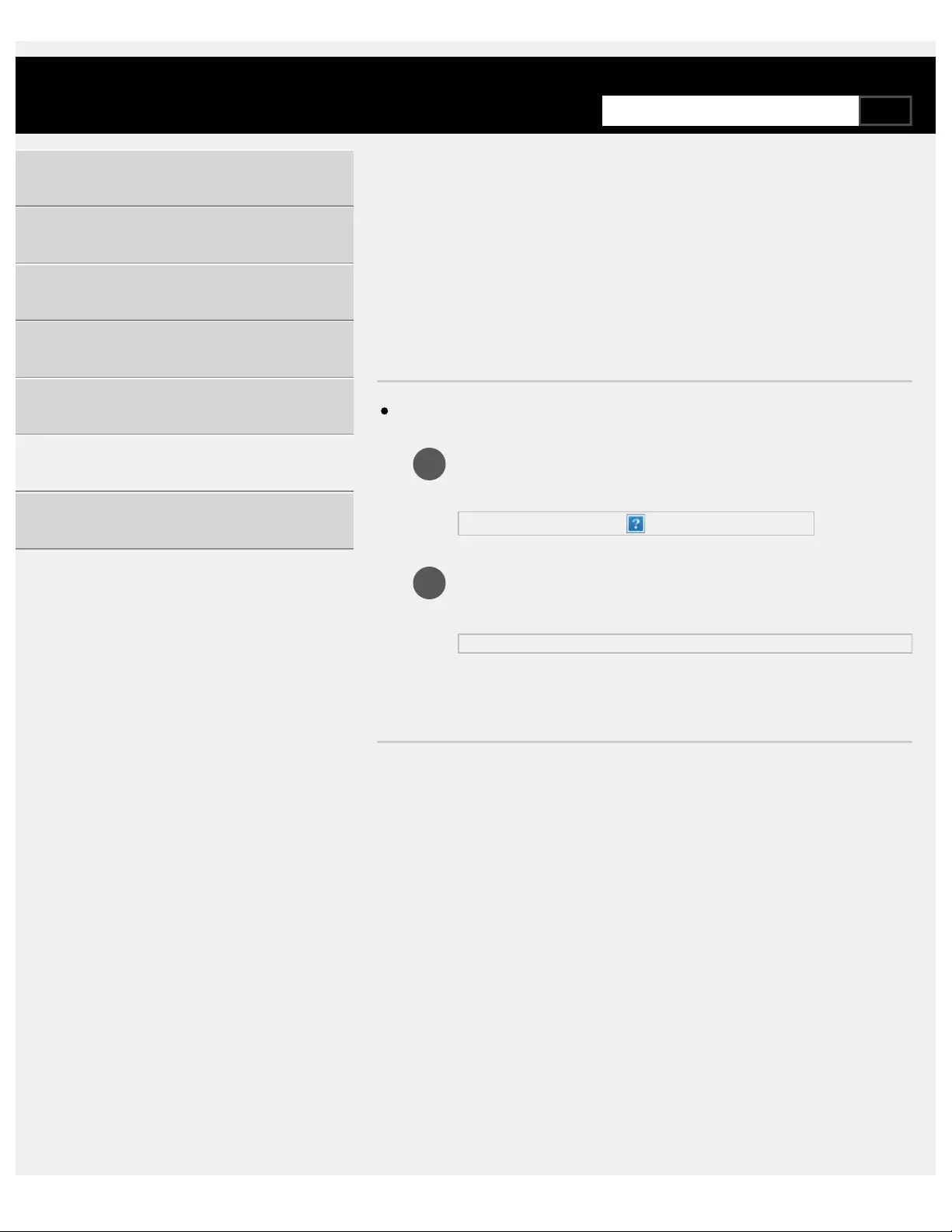
1
2
>Troubleshooting >Remote control/accessories
>You cannot turn the Active 3D Glasses on. (3D models only)
Print
You cannot turn the Active 3D
Glasses on. (3D models only)
Replace the battery. (Applies only to TDG-BT400A/BT500A.)
Press the unlock button with the tip of a pen, etc., and take
out the battery case.
Replace the battery with a new one. After that, be sure to
insert the battery case until it locks in place again.
(A) CR2025 (-) side
>Troubleshooting >Remote control/accessories
>You cannot turn the Active 3D Glasses on. (3D models only)
Go to page top
Help Guide
Getting Started
Watching TV
Using the TV with Other Devices
Connecting to a Network
Settings
Troubleshooting
Index
C-785-100-13(1)
Copyright 2018 Sony Visual Products Inc.
299
SearchSearch
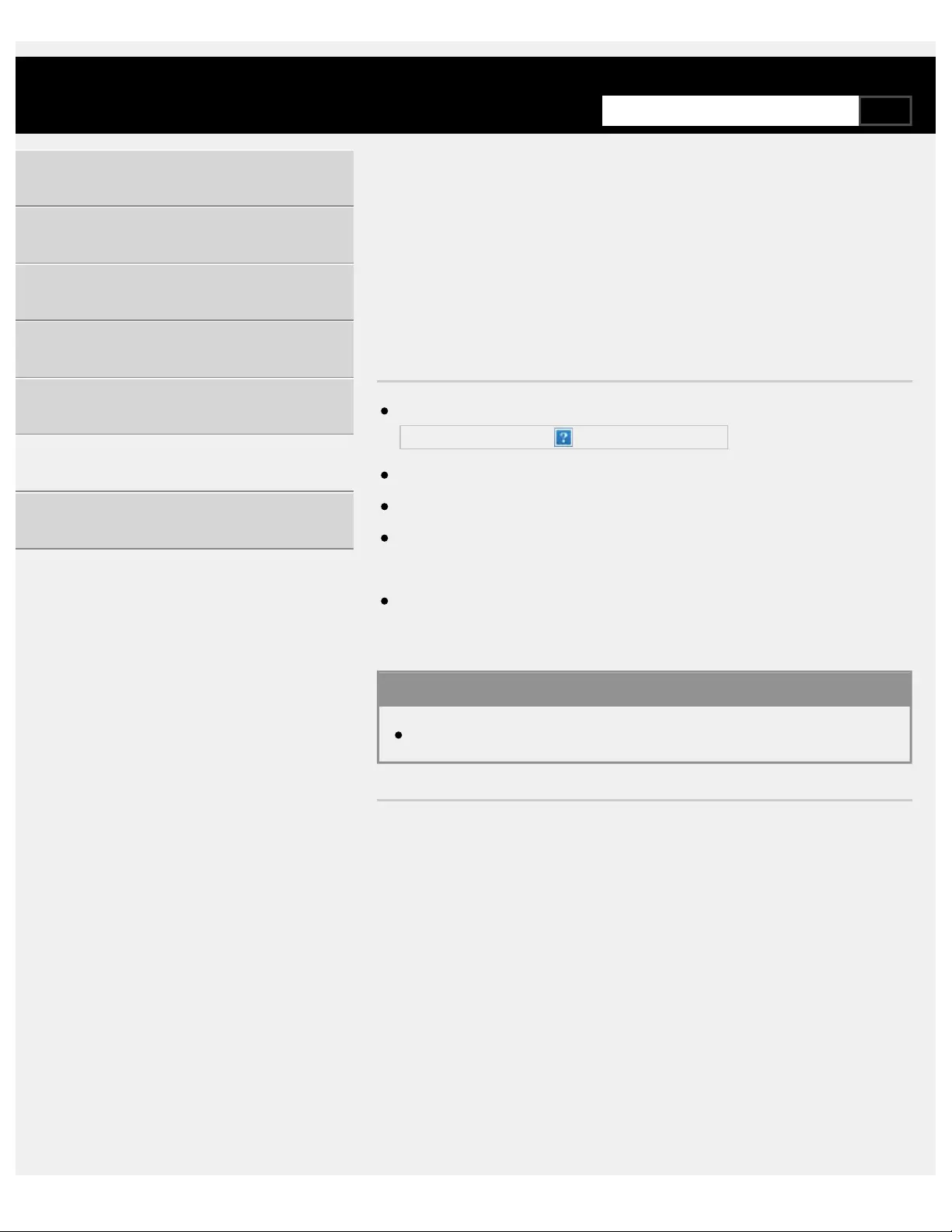
>Troubleshooting >Remote control/accessories
>The LED indicator on the Active 3D Glasses blinks. (3D models only)
Print
The LED indicator on the Active 3D
Glasses blinks. (3D models only)
Lights up for 3 seconds: Indicates when turning on the glasses.
Blinks every 2 seconds: Indicates the glasses are powered on.
Blinks 3 times: Indicates the glasses have been powered off.
Blinks green and yellow alternately: Indicates the glasses have started
the registration process.
Blinks 3 times every 2 seconds: Indicates the battery capacity is
almost running out. Replace the battery.
Related topics
You cannot turn the Active 3D Glasses on. (3D models only)
>Troubleshooting >Remote control/accessories
>The LED indicator on the Active 3D Glasses blinks. (3D models only)
Go to page top
Help Guide
Getting Started
Watching TV
Using the TV with Other Devices
Connecting to a Network
Settings
Troubleshooting
Index
C-785-100-13(1)
Copyright 2018 Sony Visual Products Inc.
300
SearchSearch
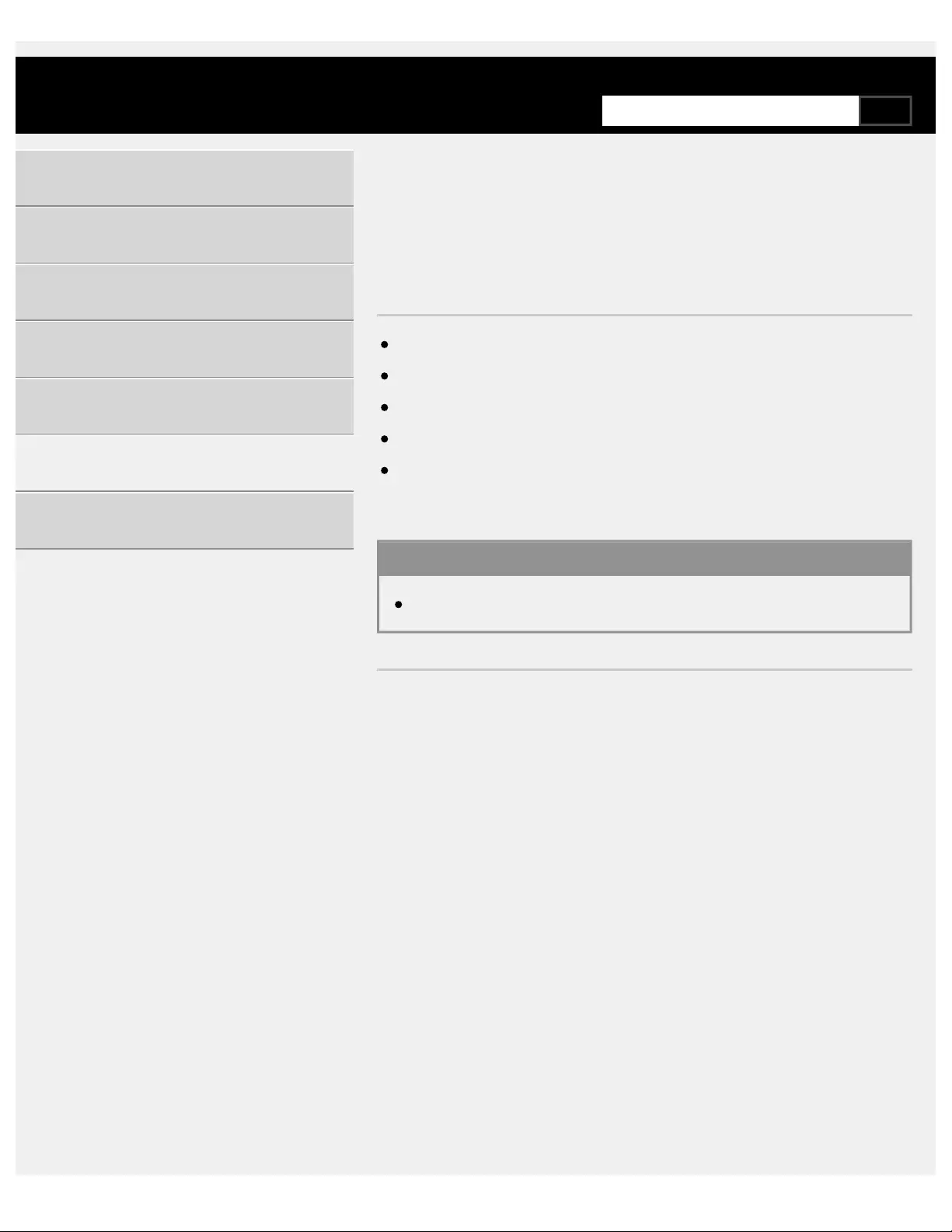
>Troubleshooting >Power >The TV turns off automatically.
Print
The TV turns off automatically.
The screen may have been turned off due to [Sleep timer] settings.
Check the [Duration] setting of [Timer].
Check if [Idle TV standby] in [Eco] is activated.
The screen may have been turned off due to [Screen saver] settings.
(Except for Brazilian models) Check if [Auto shut-off] in [Eco] is
activated.
Related topics
Setting a timer
>Troubleshooting >Power >The TV turns off automatically.
Go to page top
Help Guide
Getting Started
Watching TV
Using the TV with Other Devices
Connecting to a Network
Settings
Troubleshooting
Index
C-785-100-13(1)
Copyright 2018 Sony Visual Products Inc.
301
SearchSearch

>Troubleshooting >Power >The TV turns on automatically.
Print
The TV turns on automatically.
Check if [Timer] is activated.
Disable the [TV auto power on] setting in [BRAVIA Sync settings].
Related topics
BRAVIA Sync-compatible devices
Setting a timer
>Troubleshooting >Power >The TV turns on automatically.
Go to page top
Help Guide
Getting Started
Watching TV
Using the TV with Other Devices
Connecting to a Network
Settings
Troubleshooting
Index
C-785-100-13(1)
Copyright 2018 Sony Visual Products Inc.
302
SearchSearch

>Troubleshooting >Power
>After turning on the TV, it turns off immediately.
Print
After turning on the TV, it turns off
immediately.
In this case, the TV might be in picture reset mode. When picture reset
mode is enabled, the TV turns off about 10 minutes after it is turned on,
and then turns on again to reduce image retention. This is not a
malfunction of the TV.
Turn on the TV again using the remote control and disable picture reset
mode.
Press the HOME button on the remote control and select [Settings] —
[Retail mode settings]. Disable [Picture reset mode].
>Troubleshooting >Power
>After turning on the TV, it turns off immediately.
Go to page top
Help Guide
Getting Started
Watching TV
Using the TV with Other Devices
Connecting to a Network
Settings
Troubleshooting
Index
C-785-100-13(1)
Copyright 2018 Sony Visual Products Inc.
303
SearchSearch

>Troubleshooting >Power >The TV does not turn on.
Print
The TV does not turn on.
Perform the procedures in the order below until the problem is solved.
1. Check if the TV turns on with the remote
control.
Point the remote control at the sensor on the front of the TV and press the
power button on the remote control.
Check if the TV turns on or if the illumination LED lights up.
If the illumination LED lights up but the TV does not turn on, try resetting
(restarting) the TV.
If a full reset (restart) of the TV is required
2. Check if the TV turns on with the power
button on the TV.
Press the power button on the TV and check if the TV turns on. The
power button is on the side or back of the TV.
For details, refer to the Reference Guide of the TV.
If the TV turns on with this procedure, there may be a problem with the
remote control. Refer to the following topic.
The remote control does not operate.
3. Unplug the AC power cord (mains lead)
and wait for 2 minutes (3 minutes for
models equipped with an OLED panel).
Unplug the TV power cord (mains lead) from the electrical outlet and wait
for 2 minutes (3 minutes for models equipped with an OLED panel). Then
Help Guide
Getting Started
Watching TV
Using the TV with Other Devices
Connecting to a Network
Settings
Troubleshooting
Index
304
SearchSearch

plug the power cord (mains lead) back into the electrical outlet. After 20
seconds, press the power button on the remote control or TV.
Hint
When you unplug the TV and plug it in again, the TV may not be
able to turn on for a while, even if you press the power button on
the remote control or TV. This is because it takes time to initialize
the system. Wait for about 10 to 20 seconds, then try again.
Related topics
The remote control does not operate.
If a full reset (restart) of the TV is required
>Troubleshooting >Power >The TV does not turn on.
Go to page top
C-785-100-13(1)
Copyright 2018 Sony Visual Products Inc.
305
Search
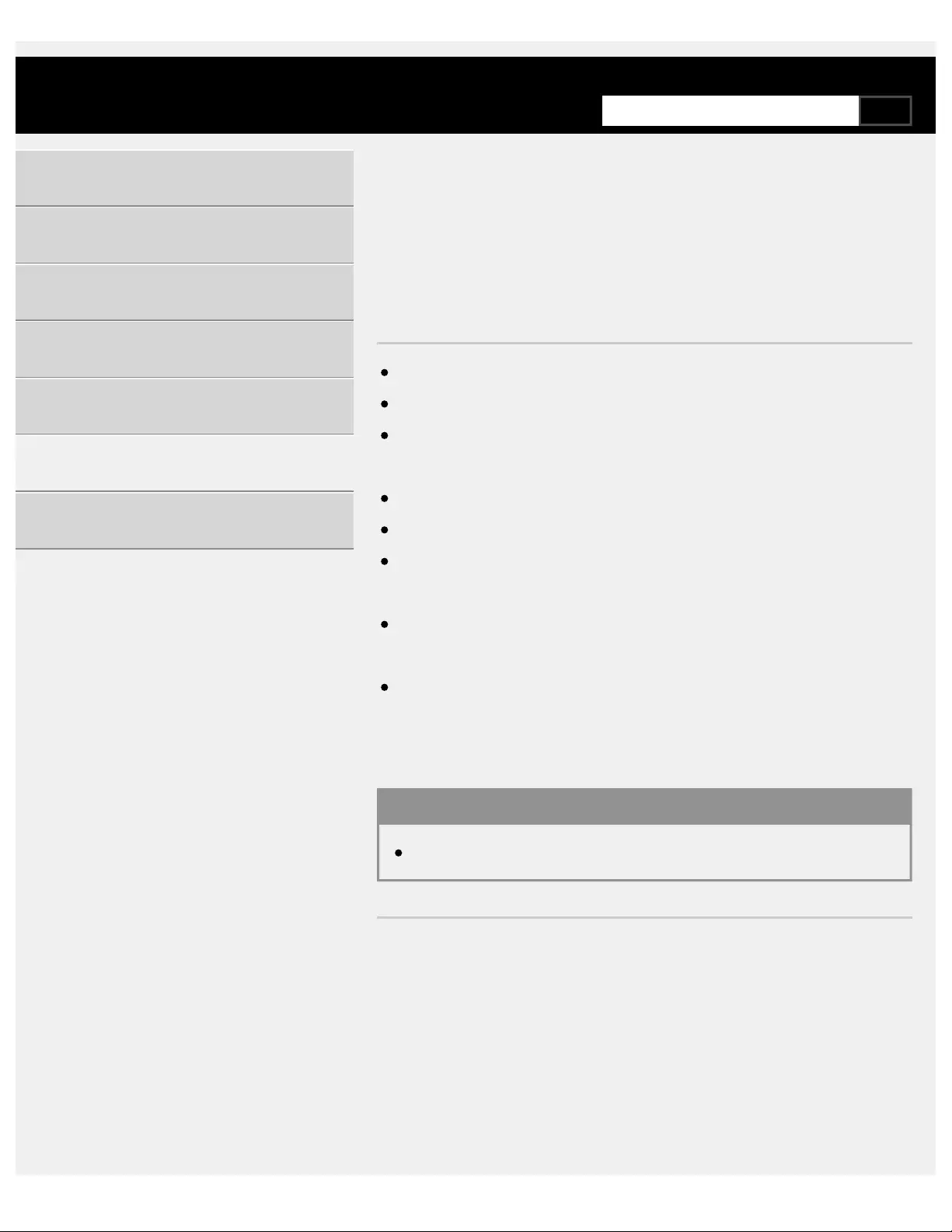
>Troubleshooting >Connected devices
>No picture from a connected device.
Print
No picture from a connected device.
Turn the connected device on.
Check the cable connection between the device and TV.
Press the INPUT button to display the list of inputs, then select the
desired input
Correctly insert the USB device.
Make sure that the USB device has been properly formatted.
Operation is not guaranteed for all USB devices. Also, operations differ
depending on the USB device features or the video files being played.
If the connected device is connected to HDMI IN 2 or 3, connect it to
HDMI IN 1 or 4.
Change the HDMI signal format of the HDMI input that does not
display a picture to standard format. Press the HOME button, then
select [Settings] — [External inputs] — [HDMI signal format].
Related topics
Using the TV with Other Devices
>Troubleshooting >Connected devices
>No picture from a connected device.
Go to page top
Help Guide
Getting Started
Watching TV
Using the TV with Other Devices
Connecting to a Network
Settings
Troubleshooting
Index
C-785-100-13(1)
Copyright 2018 Sony Visual Products Inc.
306
SearchSearch

>Troubleshooting >Connected devices
>You cannot select a connected device in the Home Menu.
Print
You cannot select a connected
device in the Home Menu.
Check the cable connection.
Related topics
Using the TV with Other Devices
>Troubleshooting >Connected devices
>You cannot select a connected device in the Home Menu.
Go to page top
Help Guide
Getting Started
Watching TV
Using the TV with Other Devices
Connecting to a Network
Settings
Troubleshooting
Index
C-785-100-13(1)
Copyright 2018 Sony Visual Products Inc.
307
SearchSearch

>Troubleshooting >Connected devices
>Certain programs on digital sources display a loss of detail.
Print
Certain programs on digital sources
display a loss of detail.
Less detail than usual or artifacts (small blocks, dots or pixelation) may
appear on the screen, due to the digital compression of the source
content used by certain digital broadcasts and DVDs. The degree of
visible artifacts depends on the clarity and resolution of the TV.
>Troubleshooting >Connected devices
>Certain programs on digital sources display a loss of detail.
Go to page top
Help Guide
Getting Started
Watching TV
Using the TV with Other Devices
Connecting to a Network
Settings
Troubleshooting
Index
C-785-100-13(1)
Copyright 2018 Sony Visual Products Inc.
308
SearchSearch

>Troubleshooting >Connected devices
>Photo images or folders take time to display.
Print
Photo images or folders take time to
display.
Depending on the image dimension, file size, and number of files in a
folder, some photo images or folders take time to display.
Each time a USB device is connected to the TV, it may take up to a
couple of minutes for the photos to display.
Related topics
No picture from a connected device.
>Troubleshooting >Connected devices
>Photo images or folders take time to display.
Go to page top
Help Guide
Getting Started
Watching TV
Using the TV with Other Devices
Connecting to a Network
Settings
Troubleshooting
Index
C-785-100-13(1)
Copyright 2018 Sony Visual Products Inc.
309
SearchSearch
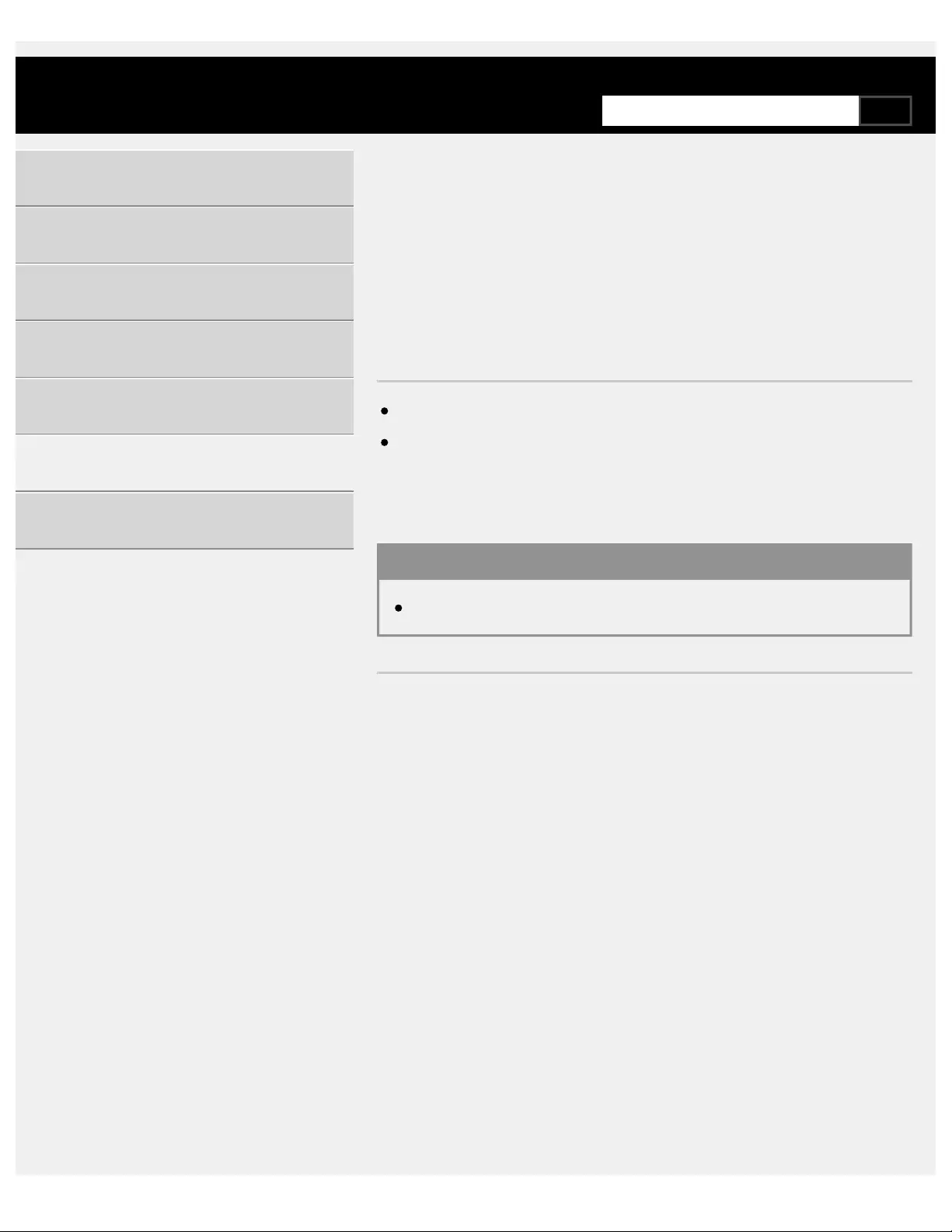
>Troubleshooting >Connected devices
>You cannot find a connected BRAVIA Sync HDMI device.
Print
You cannot find a connected
BRAVIA Sync HDMI device.
Check that your device is BRAVIA Sync-compatible.
Make sure that [Control for HDMI] is set up on the BRAVIA Sync-
compatible device and [BRAVIA Sync settings] — [BRAVIA Sync
control] is set up on the TV.
Related topics
BRAVIA Sync-compatible devices
>Troubleshooting >Connected devices
>You cannot find a connected BRAVIA Sync HDMI device.
Go to page top
Help Guide
Getting Started
Watching TV
Using the TV with Other Devices
Connecting to a Network
Settings
Troubleshooting
Index
C-785-100-13(1)
Copyright 2018 Sony Visual Products Inc.
310
SearchSearch

>Troubleshooting >Connected devices
>The STB MENU button on the remote control does not work.
Print
The STB MENU button on the
remote control does not work.
This feature is available for TVs in which the included remote control has
an STB MENU button.
IR Blaster compatible models have [IR Blaster setup] in [Settings] —
[External inputs].
To use the STB MENU button, connect and set up the IR Blaster (for
models supplied with an IR Blaster). Connect the IR Blaster, press the
HOME button, then select [Settings] — [External inputs] — [IR Blaster
setup]. (IR Blaster compatible models may not be available depending
on your model/country.)
Related topics
An external device (such as a set-top box or AV receiver) cannot
be controlled via the IR Blaster. (IR Blaster compatible models
only)
>Troubleshooting >Connected devices
>The STB MENU button on the remote control does not work.
Go to page top
Help Guide
Getting Started
Watching TV
Using the TV with Other Devices
Connecting to a Network
Settings
Troubleshooting
Index
C-785-100-13(1)
Copyright 2018 Sony Visual Products Inc.
311
SearchSearch
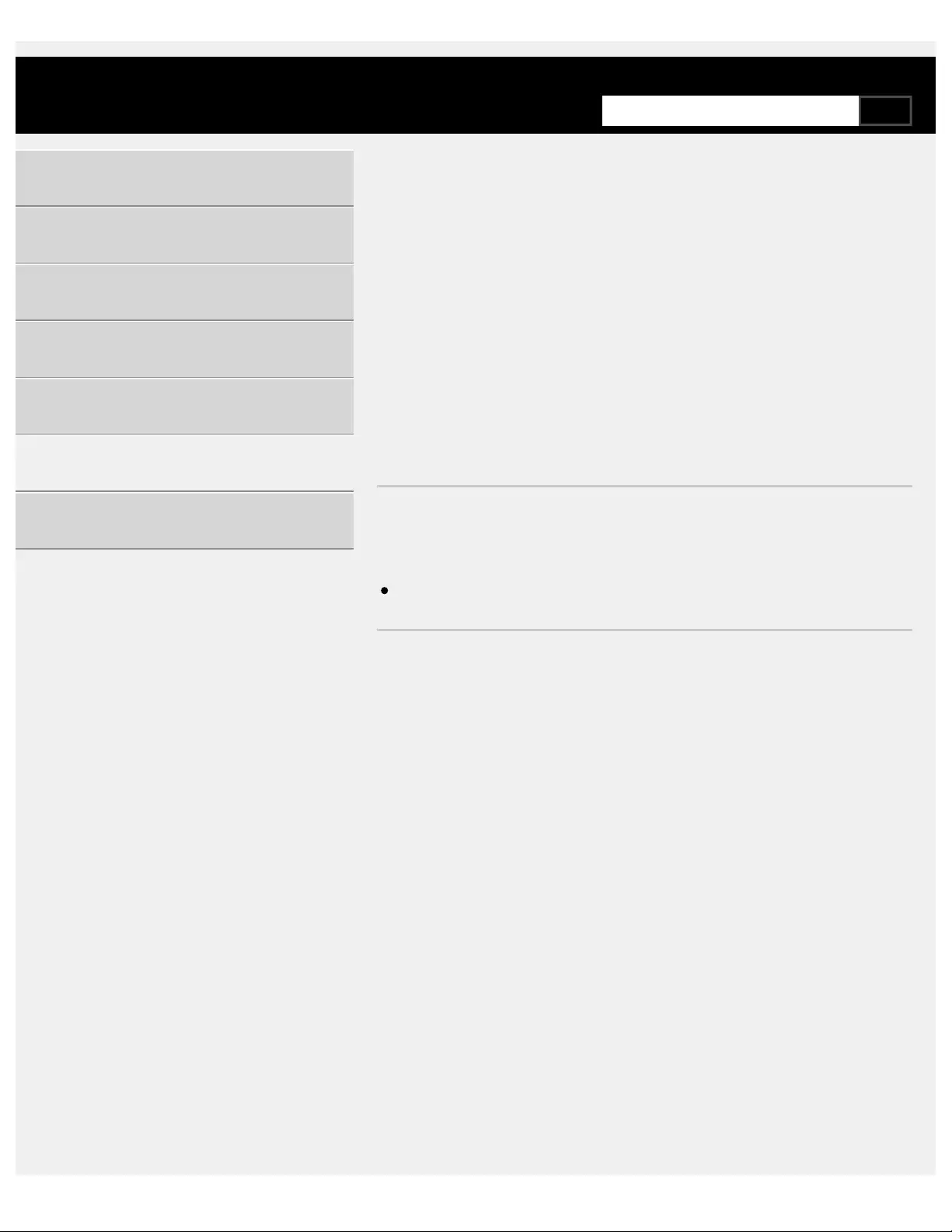
>Troubleshooting >Connected devices
>You cannot turn off the set-top box (cable/satellite box) using the TV's remote
control through the IR Blaster function.
Print
You cannot turn off the set-top box
(cable/satellite box) using the TV's
remote control through the IR
Blaster function.
IR Blaster compatible models have [IR Blaster setup] in [Settings] —
[External inputs].
Press the ACTION MENU button, then select [Power (STB)] in [Menu].
>Troubleshooting >Connected devices
>You cannot turn off the set-top box (cable/satellite box) using the TV's remote
control through the IR Blaster function.
Go to page top
Help Guide
Getting Started
Watching TV
Using the TV with Other Devices
Connecting to a Network
Settings
Troubleshooting
Index
C-785-100-13(1)
Copyright 2018 Sony Visual Products Inc.
312
SearchSearch
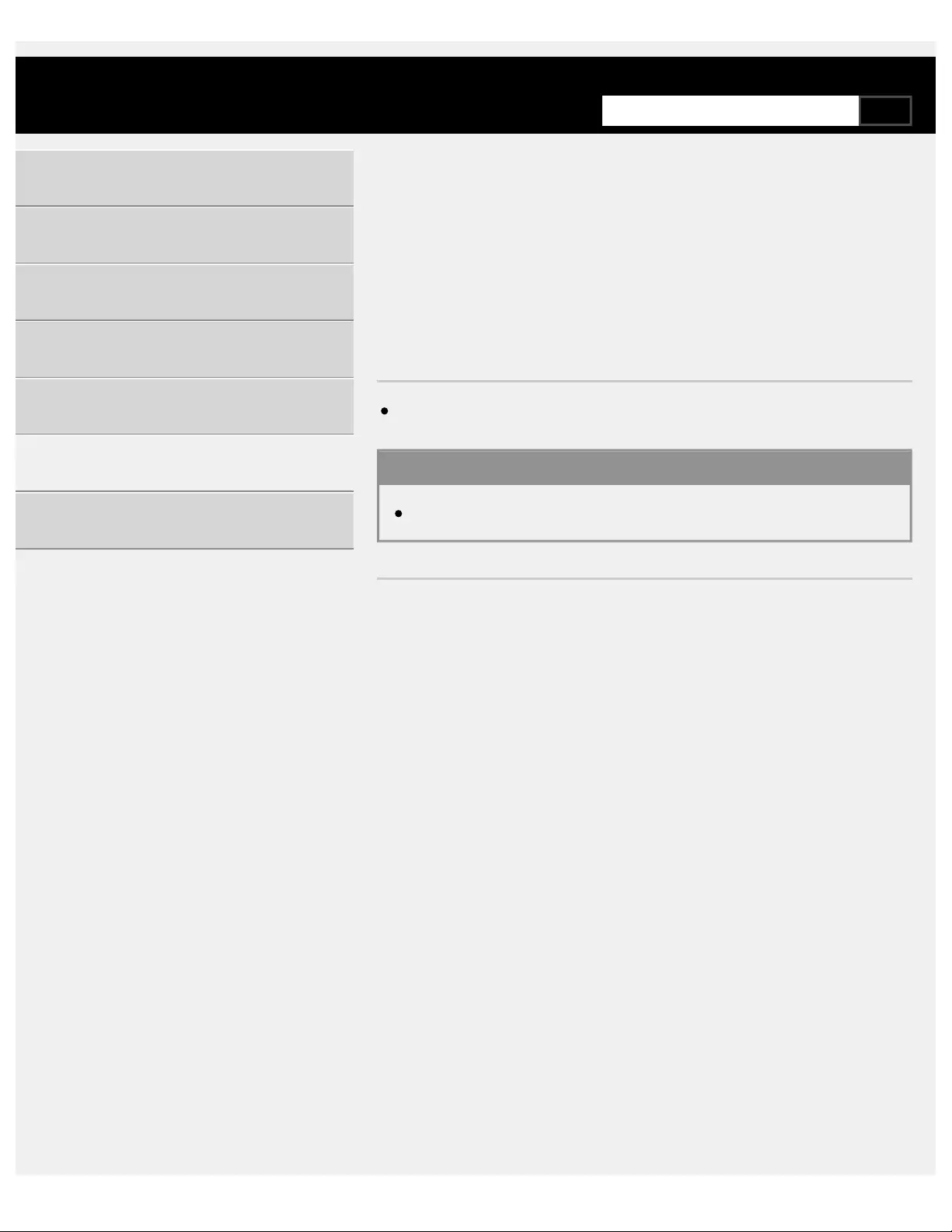
>Troubleshooting >Connected devices
>You cannot control a second AV receiver.
Print
You cannot control a second AV
receiver.
Only one BRAVIA Sync-compatible AV receiver can be used.
Related topics
BRAVIA Sync-compatible devices
>Troubleshooting >Connected devices
>You cannot control a second AV receiver.
Go to page top
Help Guide
Getting Started
Watching TV
Using the TV with Other Devices
Connecting to a Network
Settings
Troubleshooting
Index
C-785-100-13(1)
Copyright 2018 Sony Visual Products Inc.
313
SearchSearch

>Troubleshooting >Connected devices
>An external device (such as a set-top box or AV receiver) cannot be controlled via
the IR Blaster. (IR Blaster compatible models only)
Print
An external device (such as a set-
top box or AV receiver) cannot be
controlled via the IR Blaster. (IR
Blaster compatible models only)
IR Blaster compatible models have [IR Blaster setup] in [Settings] —
[External inputs].
Make sure that the IR Blaster is correctly set up and the IR transmitter
is located near the IR receiver of the external device.
Make sure that your TV supports the external device.
If you press and hold a button on the remote control, the operation
may not be transmitted. Instead, press the button repeatedly.
Some external devices may not respond to some buttons on the
“Action Menu”.
(Except for Brazilian models) The IR Blaster may not be set properly.
To set the IR Blaster, press the HOME button, then select [Settings] —
[External inputs] — [IR Blaster setup].
Related topics
Connecting an IR Blaster (IR Blaster compatible models only)
>Troubleshooting >Connected devices
>An external device (such as a set-top box or AV receiver) cannot be controlled via
the IR Blaster. (IR Blaster compatible models only)
Go to page top
Help Guide
Getting Started
Watching TV
Using the TV with Other Devices
Connecting to a Network
Settings
Troubleshooting
Index
314
SearchSearch

>Troubleshooting >Connected devices
>Some media files in the USB device or server are not displayed.
Print
Some media files in the USB device
or server are not displayed.
Unsupported files may not be displayed.
All the folders/files may not be displayed depending on the system
status.
Related topics
Supported files and formats
>Troubleshooting >Connected devices
>Some media files in the USB device or server are not displayed.
Go to page top
Help Guide
Getting Started
Watching TV
Using the TV with Other Devices
Connecting to a Network
Settings
Troubleshooting
Index
C-785-100-13(1)
Copyright 2018 Sony Visual Products Inc.
315
SearchSearch
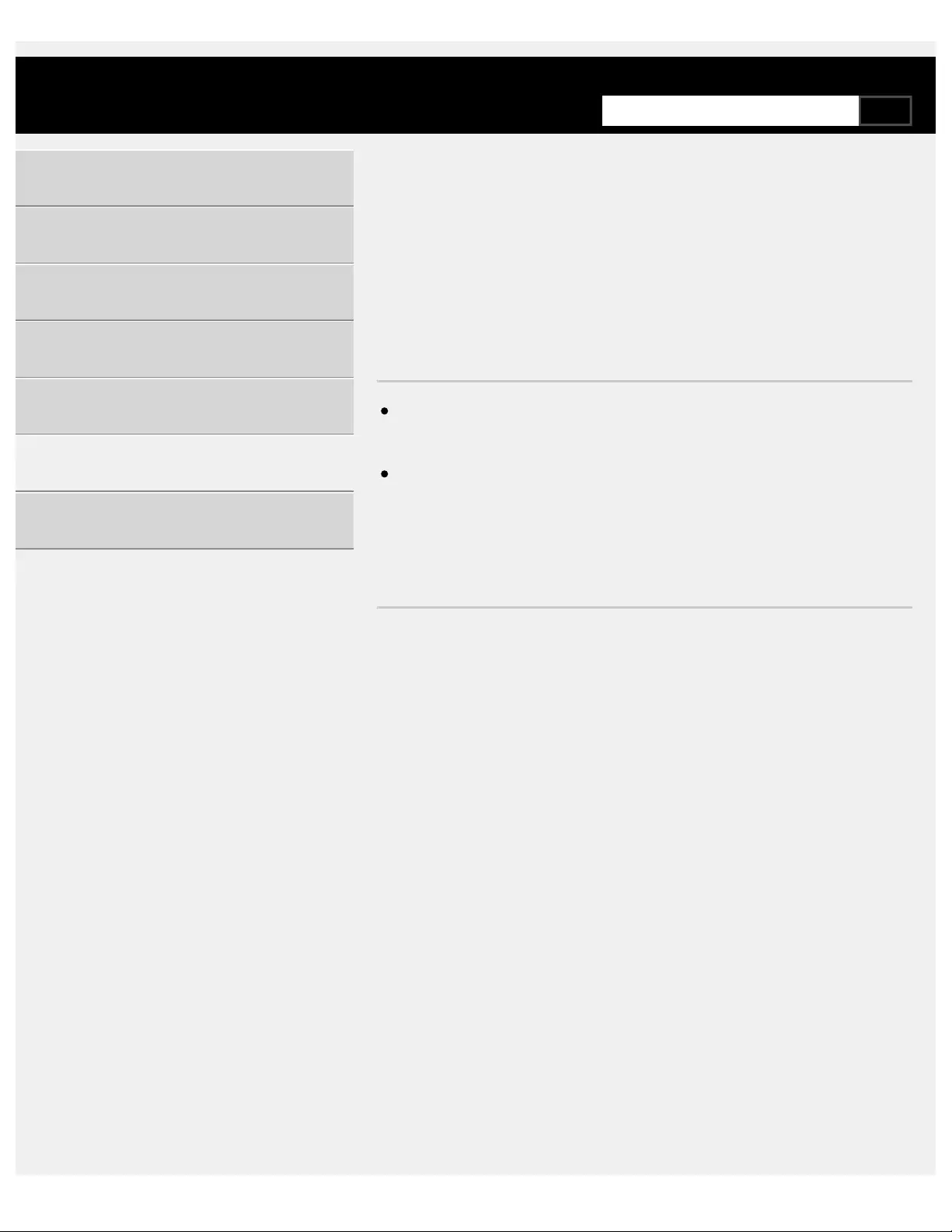
>Troubleshooting >Connected devices
>The TV cannot be found by a Wi-Fi Direct device.
Print
The TV cannot be found by a Wi-Fi
Direct device.
Enable [Wi Fi Direct]. Press the HOME button, then select [Settings]
— [Network] — [Wi Fi Direct] — [Wi Fi Direct].
If the TV cannot be found even though [Wi Fi Direct] is enabled, set
[Band setting] to [Auto (2.4GHz band)]. Press the HOME button, then
select [Settings] — [Network] — [Wi Fi Direct] — [Advanced settings]
— [Band setting] — [Auto (2.4GHz band)].
>Troubleshooting >Connected devices
>The TV cannot be found by a Wi-Fi Direct device.
Go to page top
Help Guide
Getting Started
Watching TV
Using the TV with Other Devices
Connecting to a Network
Settings
Troubleshooting
Index
C-785-100-13(1)
Copyright 2018 Sony Visual Products Inc.
316
SearchSearch

>Troubleshooting >Connected devices
>Operation cuts out, or a device does not work.
Print
Operation cuts out, or a device does
not work.
Check if the device is turned on.
Replace the batteries of the device.
Re-register the device.
Bluetooth devices use the 2.4GHz band, therefore communication
speed may deteriorate or cut out occasionally due to wireless LAN
interference.
If household electric appliances (e.g., microwaves or mobile devices)
are placed nearby, radio wave interference is more likely to happen.
The TV or device may not work on a metal rack due to wireless
communication interference.
For usable communication distances between the TV and other
devices, refer to the instruction manuals of the devices.
When multiple Bluetooth devices are connected to the TV, the quality
of Bluetooth communication may deteriorate.
Related topics
Bluetooth devices
>Troubleshooting >Connected devices
>Operation cuts out, or a device does not work.
Go to page top
Help Guide
Getting Started
Watching TV
Using the TV with Other Devices
Connecting to a Network
Settings
Troubleshooting
Index
C-785-100-13(1)
317
SearchSearch
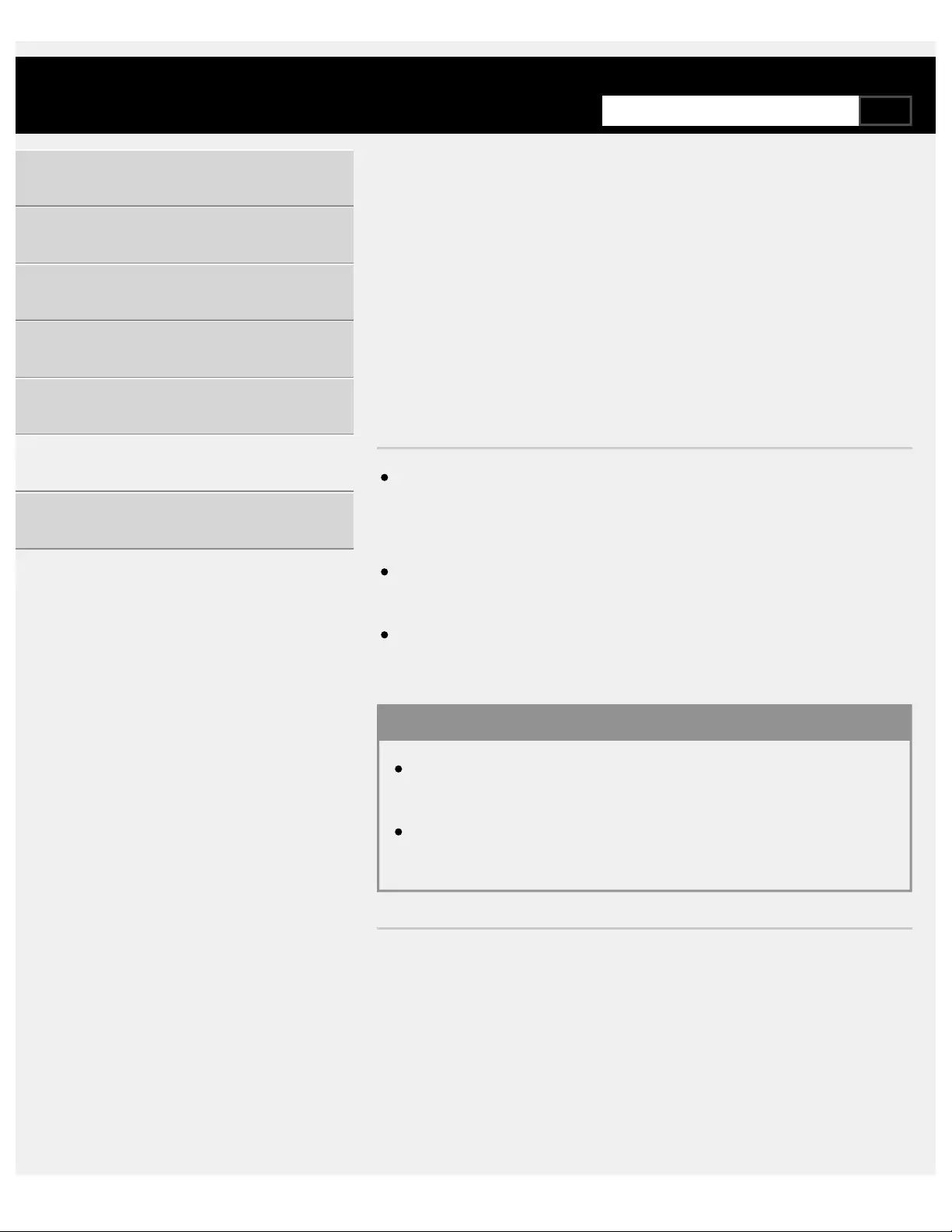
>Troubleshooting >Connected devices
>The TV cannot connect to a Miracast device or Screen mirroring compatible
device.
Print
The TV cannot connect to a Miracast
device or Screen mirroring
compatible device.
If connecting a Miracast device (e.g., laptop) fails, press the HOME
button, then select [Screen mirroring] to show the standby screen for
the Screen mirroring function and try to connect again.
If you are using Screen mirroring with another device, turn off Screen
mirroring first and try again.
If your device does not support 5GHz and you set the [Band setting]
option to [Auto (5GHz band)], try changing it to [Auto].
Related topics
Displaying the screen of a smartphone/tablet on the TV using the
Screen mirroring function
What kind of devices can be connected using the Screen mirroring
function?
>Troubleshooting >Connected devices
>The TV cannot connect to a Miracast device or Screen mirroring compatible
device.
Go to page top
Help Guide
Getting Started
Watching TV
Using the TV with Other Devices
Connecting to a Network
Settings
Troubleshooting
Index
C-785-100-13(1)
Copyright 2018 Sony Visual Products Inc.
318
SearchSearch
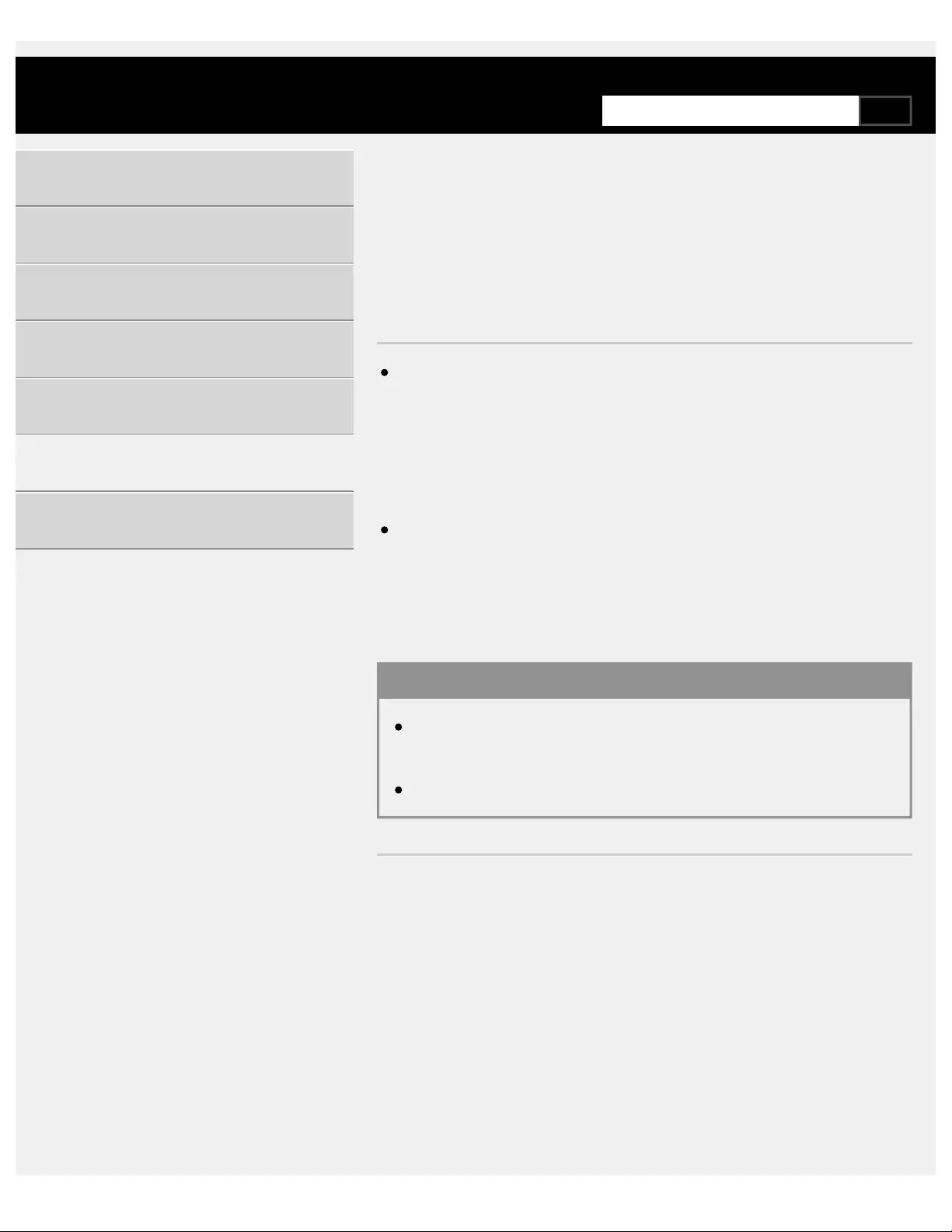
>Troubleshooting >Connected devices
>Video or sound sometimes cuts out.
Print
Video or sound sometimes cuts out.
Devices emitting radio waves, such as other wireless LAN devices or
microwave ovens, may interfere with the Screen mirroring function
using wireless LAN. Keep the TV or Sony Screen mirroring compatible
devices (e.g., some models of Xperia) away from such devices, or turn
them off if possible.
Communication speed may change according to the distance or
obstacles between devices, device configuration, radio wave condition,
line congestion or the device you use. Communication may cut out due
to the radio wave condition.
Related topics
Displaying the screen of a smartphone/tablet on the TV using the
Screen mirroring function
Using Wi-Fi to connect the TV to your network
>Troubleshooting >Connected devices
>Video or sound sometimes cuts out.
Go to page top
Help Guide
Getting Started
Watching TV
Using the TV with Other Devices
Connecting to a Network
Settings
Troubleshooting
Index
C-785-100-13(1)
Copyright 2018 Sony Visual Products Inc.
319
SearchSearch

>Troubleshooting >Connected devices
>Some paid content cannot be played.
Print
Some paid content cannot be
played.
The source device needs to meet HDCP (High-bandwidth Digital
Content Protection) 2.0/2.1/2.2 standards.
Some pay contents may not be displayed via a source device which
does not meet HDCP 2.0/2.1/2.2 standards.
>Troubleshooting >Connected devices
>Some paid content cannot be played.
Go to page top
Help Guide
Getting Started
Watching TV
Using the TV with Other Devices
Connecting to a Network
Settings
Troubleshooting
Index
C-785-100-13(1)
Copyright 2018 Sony Visual Products Inc.
320
SearchSearch

>Troubleshooting >Illumination LED
>The illumination LED sometimes lights up.
Print
The illumination LED sometimes
lights up.
The illumination LED lights up at various times such as during software
updates.
Refer to Illumination LED for details.
>Troubleshooting >Illumination LED
>The illumination LED sometimes lights up.
Go to page top
Help Guide
Getting Started
Watching TV
Using the TV with Other Devices
Connecting to a Network
Settings
Troubleshooting
Index
C-785-100-13(1)
Copyright 2018 Sony Visual Products Inc.
321
SearchSearch
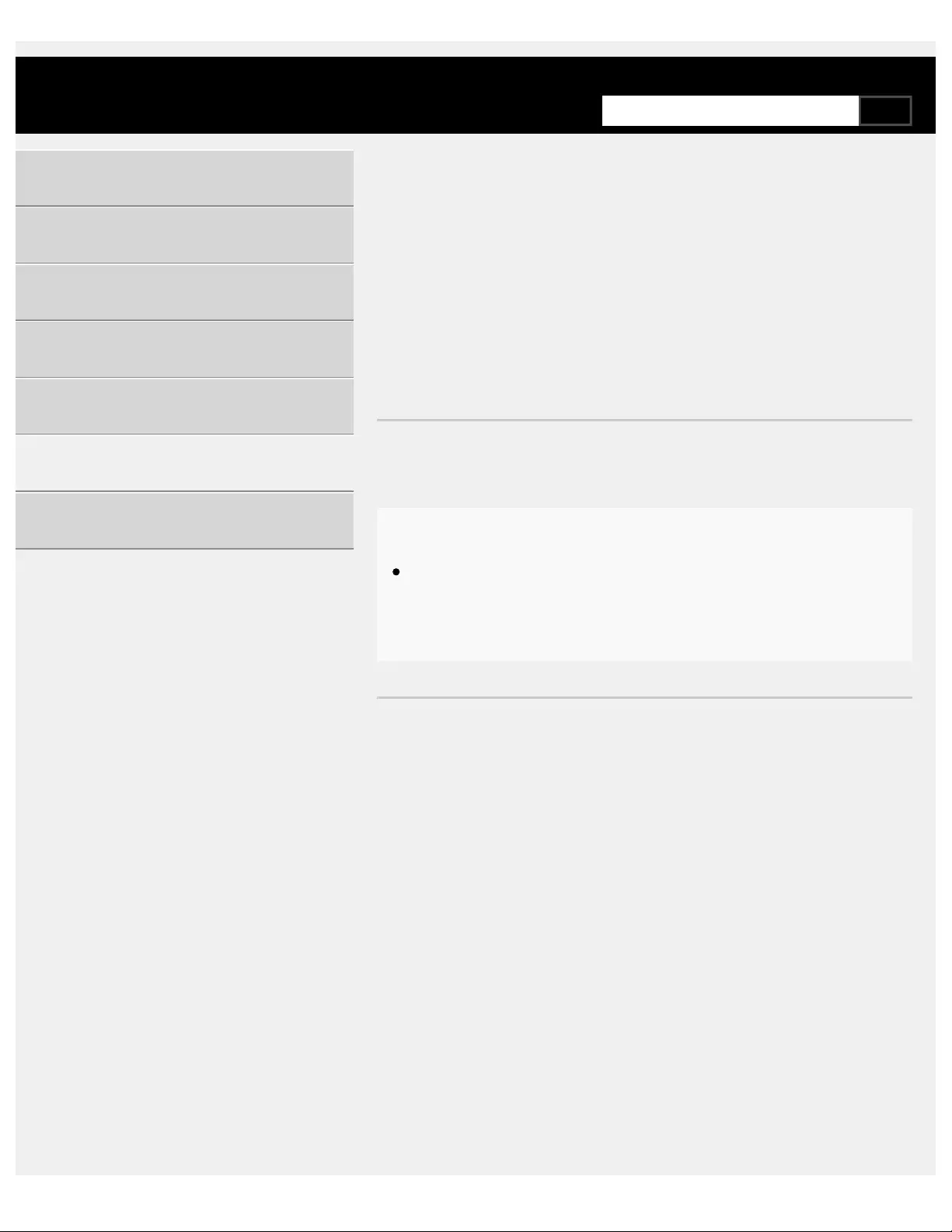
>Troubleshooting >Illumination LED
>You want to disable the illumination LED so that it does not light up or blink.
Print
You want to disable the illumination
LED so that it does not light up or
blink.
You can turn it off. Press the HOME button, then select [Settings] —
[Illumination LED] — [Off].
Note
We recommend that you do not change this setting under normal
circumstances because you will be unable to identify whether the
TV is on or off, or a timer is set.
>Troubleshooting >Illumination LED
>You want to disable the illumination LED so that it does not light up or blink.
Go to page top
Help Guide
Getting Started
Watching TV
Using the TV with Other Devices
Connecting to a Network
Settings
Troubleshooting
Index
C-785-100-13(1)
Copyright 2018 Sony Visual Products Inc.
322
SearchSearch
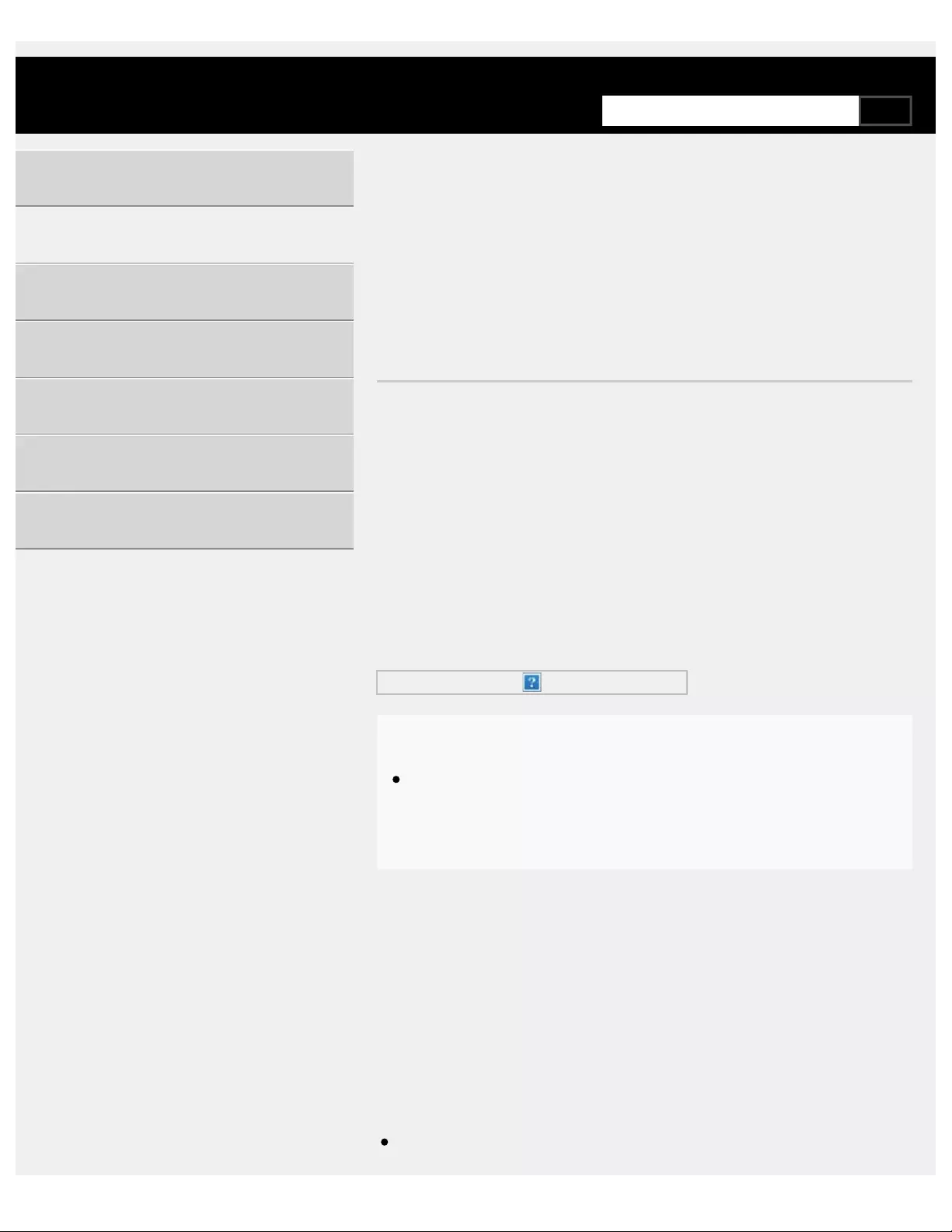
>Watching TV >Watching in 3D (3D models only)
>Understanding the basics of 3D TV (3D models only)
Print
Understanding the basics of 3D TV
(3D models only)
3D models have [3D settings] in [Settings] — [Picture & Display].
Recommended viewing distance for a 3D
image
If the viewing distance is not appropriate, a double image may appear. Sit
at a distance of at least 3 times the height of the screen away from the
TV. For the best viewing experience, we recommend that you sit directly
in front of the TV.
Hint
There are two types of 3D Glasses: Passive and Active. Refer to
the specifications in the Reference Guide to see which type of 3D
Glasses the TV supports.
TV and Active 3D Glasses communication
range
Active 3D glasses communicate with the TV to show you images in 3D.
Your viewing position needs to be within the proper range. See the
following diagrams. The working distance depends on obstacles (people,
metal, walls, etc.) and/or electromagnetic interference.
Overhead view
Help Guide
Getting Started
Watching TV
Using the TV with Other Devices
Connecting to a Network
Settings
Troubleshooting
Index
323
SearchSearch

(A) 120°
(B) 1-6 m (3-20 ft.)
Side view
(A) 45°
(B) 1-6 m (3-20 ft.)
(C) 30°
Note
Recommended viewing angle and distance may vary depending on
the TV’s location and room conditions.
Caring for your glasses
Wipe the glasses gently with a soft cloth.
Stubborn stains may be removed with a cloth slightly moistened with a
solution of mild soap and warm water.
If using a chemically pretreated cloth, be sure to follow the instructions
provided on the package.
Never use strong solvents such as a thinner, alcohol, or benzene for
cleaning.
Related topics
Preparing your 3D glasses (3D models only)
Watching TV in 3D (3D models only)
>Watching TV >Watching in 3D (3D models only)
>Understanding the basics of 3D TV (3D models only)
Go to page top
C-785-100-13(1)
Copyright 2018 Sony Visual Products Inc.
324
Search
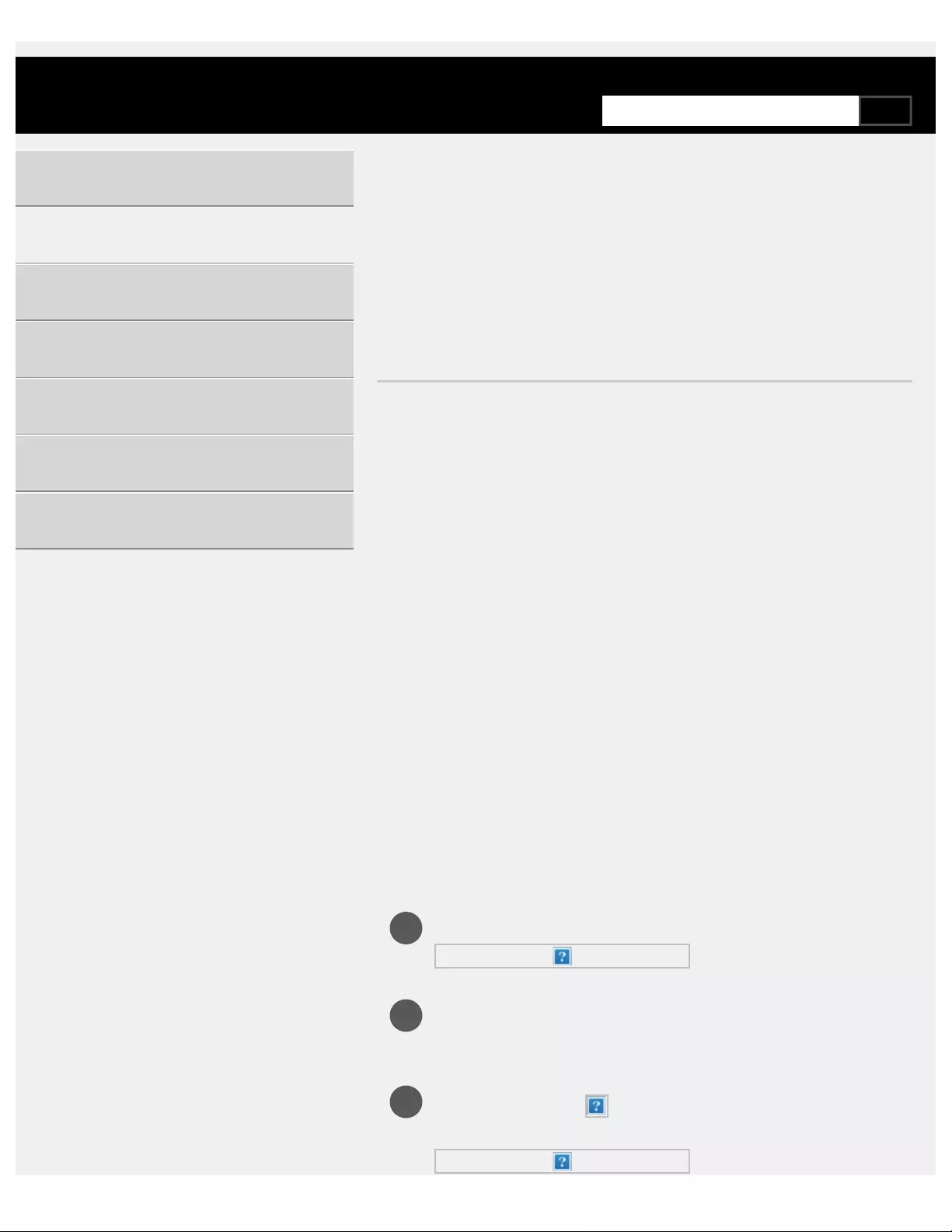
1
2
3
>Watching TV >Watching in 3D (3D models only)
>Preparing your 3D glasses (3D models only)
Print
Preparing your 3D glasses (3D
models only)
3D models have [3D settings] in [Settings] — [Picture & Display].
There are two types of 3D Glasses: Passive and Active. Refer to the
specifications in the Reference Guide to see which type of 3D Glasses
the TV supports.
For Passive 3D Glasses
If Passive 3D Glasses are supplied with your TV, use them. If no glasses
are supplied, purchase a pair of Passive 3D Glasses, model TDG-500P.
You can watch in 3D by just putting the Passive 3D Glasses on.
For Active 3D Glasses
If Active 3D Glasses are supplied with your TV, use them. If no glasses
are supplied, purchase a pair of Active 3D Glasses, model TDG-BT500A.
Before using the Active 3D Glasses for the first time, you need to register
them to your TV. Follow the steps below.
Remove the battery’s insulation sheet.
Turn the TV on, then hold the glasses within 50 cm (1.6 ft.) of
the TV.
Press and hold the (Power) button/indicator on the glasses
for 2 seconds.
Help Guide
Getting Started
Watching TV
Using the TV with Other Devices
Connecting to a Network
Settings
Troubleshooting
Index
325
SearchSearch

4
The Active 3D Glasses turn on and registration starts (the
(Power) button/indicator blinks green and yellow). When
registration is finished, a message appears in the TV screen
for 5 seconds, and the indicator lights up in green for 3
seconds.
If registration fails, the Active 3D Glasses will turn off
automatically. In this case, repeat the procedure above.
Put the Active 3D Glasses on.
From the next time, you can use the Active 3D Glasses by just turning
them on. To turn them off, press and hold the (Power) button/indicator
on the glasses for 2 seconds. To turn them on again, press the
(Power) button/indicator.
Hint
To use the Active 3D Glasses with another TV, you need to register
the glasses to that TV. Perform the procedure above from Step 2.
Related topics
Understanding the basics of 3D TV (3D models only)
Watching TV in 3D (3D models only)
Remote control/accessories
>Watching TV >Watching in 3D (3D models only)
>Preparing your 3D glasses (3D models only)
Go to page top
C-785-100-13(1)
Copyright 2018 Sony Visual Products Inc.
326
Search
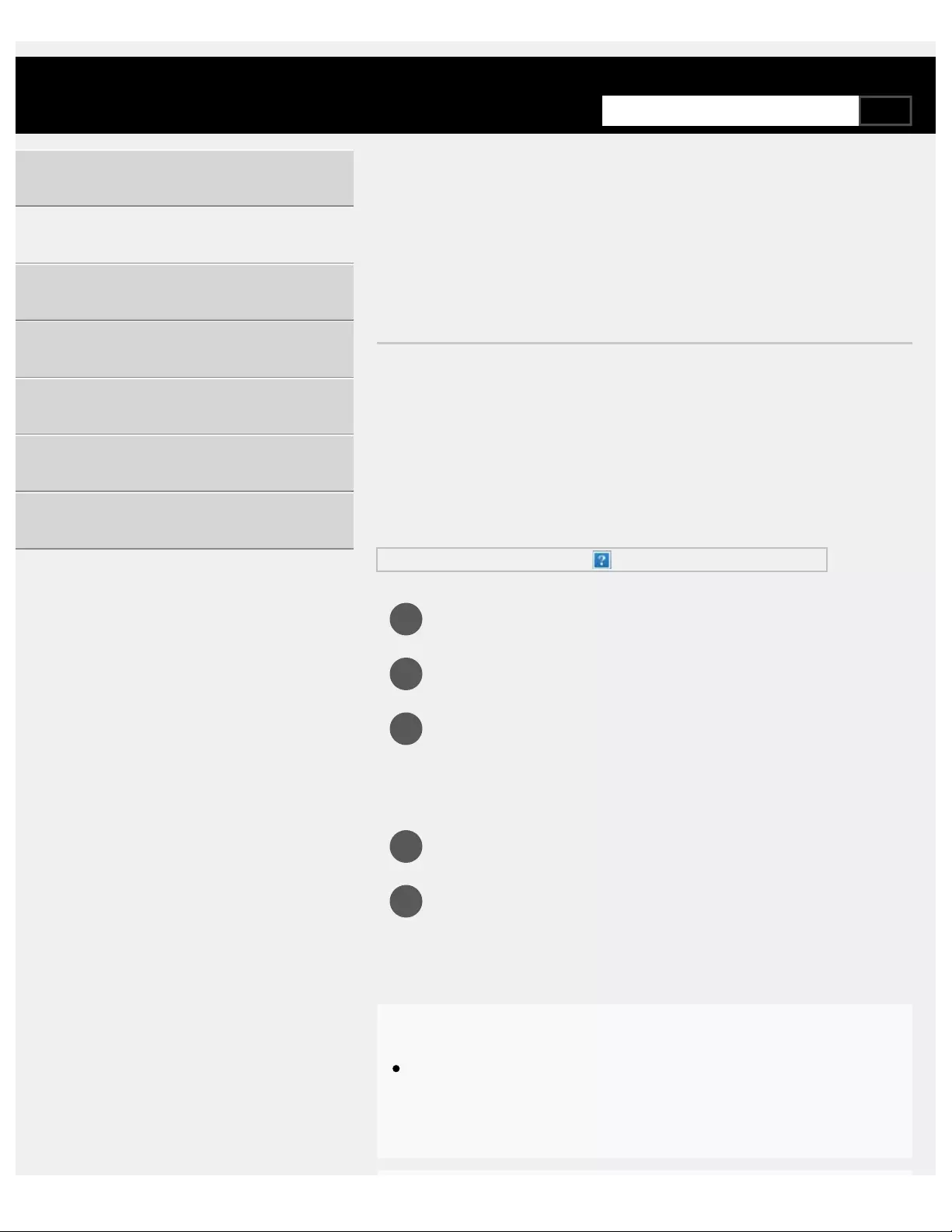
1
2
3
4
5
>Watching TV >Watching in 3D (3D models only)
>Watching TV in 3D (3D models only)
Print
Watching TV in 3D (3D models only)
3D models have [3D settings] in [Settings] — [Picture & Display].
You can experience powerful 3D entertainment, such as stereoscopic 3D
games and 3D Blu-ray Discs.
To watch in 3D, connect a 3D-compatible device directly to the TV via an
authorized HIGH SPEED HDMI cable bearing the HDMI logo.
Prepare the 3D Glasses.
Display the 3D content on the TV screen.
Put the 3D Glasses on.
You should now be able to watch 3D images. If no 3D effect
is achieved, perform the following steps.
Press the ACTION MENU button, then select [3D].
Select the [3D display] mode to suit the displayed content.
Depending on the input signal or format, [3D
(Side by Side)]/[3D (Over-Under)] may not be selectable.
Hint
In addition to the [3D display] mode, you can use various 3D
options in [3D settings]. Press the HOME button, then select
[Settings] — [Picture & Display] — [3D settings].
Help Guide
Getting Started
Watching TV
Using the TV with Other Devices
Connecting to a Network
Settings
Troubleshooting
Index
327
SearchSearch

Note
The 3D effect may be less pronounced if the ambient temperature
is low.
If [Motionflow] in [Picture adjustments] is set to something other
than [Off], the process to minimize screen flicker may affect the
smooth movement of the picture. In this case, press the ACTION
MENU button, then select [Picture adjustments] — [Advanced
settings] — [Motionflow] — [Off]. (For [Motionflow] compatible
models only.)
[Motionflow] compatible models have [Motionflow] in [Settings] —
[Picture & Display] — [Picture adjustments] — [Advanced settings]
— [Motion].
Related topics
Preparing your 3D glasses (3D models only)
Remote control/accessories
>Watching TV >Watching in 3D (3D models only)
>Watching TV in 3D (3D models only)
Go to page top
C-785-100-13(1)
Copyright 2018 Sony Visual Products Inc.
328
Search

>Using the TV with Other Devices >Blu-ray and DVD players
>Connecting a Blu-ray or DVD player
Print
Connecting a Blu-ray or DVD player
Connect a Blu-ray/DVD player to the TV.
HDMI connection
For optimum picture quality, we recommend connecting your player to the
TV using an HDMI cable. If your Blu-ray/DVD player has an HDMI jack
(socket), connect it using an HDMI cable.
(A) Blu-ray/DVD player
(B) HDMI cable (not supplied)
Be sure to use an authorized HIGH SPEED HDMI cable bearing the
HDMI logo.
If the device has a DVI jack (socket), connect it to the HDMI (with
AUDIO IN) port through a DVI - HDMI adaptor interface (not supplied),
and connect the device’s audio out jacks (sockets) to HDMI 3 AUDIO
IN / HDMI 1 AUDIO IN.
Availability depends on your model/region/country. Refer to the
Reference Guide to check if your TV supports HDMI 3 AUDIO IN /
HDMI 1 AUDIO IN.
Component video connection
Availability depends on your model/region/country.
If your Blu-ray/DVD player has component video jacks (sockets), connect
them to the TV using a component video cable and an audio cable.
Help Guide
Getting Started
Watching TV
Using the TV with Other Devices
Connecting to a Network
Settings
Troubleshooting
Index
*
*
329
SearchSearch

(A) Blu-ray/DVD player
(B) Component video cable (not supplied)
(C) Audio cable (not supplied)
For models supplied with a Mini Plug Component Adapter
Use the supplied Mini Plug Component Adapter to connect to the TV as
follows.
(A) Blu-ray/DVD player
(B) Mini Plug Component Adapter (supplied)
(C) Component video cable (not supplied)
(D) Audio cable (not supplied)
Note
When the Mini Plug Component Adapter (supplied) is connected to
the TV, the yellow composite jack (socket) is recognized as a
component jack (socket). When connecting using a composite
cable, make sure you remove the Mini Plug Component Adapter.
Composite connection
Availability depends on your model/region/country.
If your Blu-ray/DVD player has composite jacks (sockets), connect them
using a composite video/audio cable.
(A) Blu-ray/DVD player
(B) Composite video/audio cable (not supplied)
If using an Analog Extension cable
Availability depends on your model/region/country.
(A) Blu-ray/DVD player
(B) Analog Extension cable (supplied)*
330
Search

(C) RCA Cable (not supplied)
Whether the Analog Extension cable is supplied depends on your
model/region/country.
Related topics
Watching Blu-ray and DVD discs
>Using the TV with Other Devices >Blu-ray and DVD players
>Connecting a Blu-ray or DVD player
Go to page top
C-785-100-13(1)
Copyright 2018 Sony Visual Products Inc.
*
331
Search

1
2
3
>Using the TV with Other Devices >Blu-ray and DVD players
>Watching Blu-ray and DVD discs
Print
Watching Blu-ray and DVD discs
You can watch content from Blu-ray/DVD discs or other content
supported by your player on the TV.
Turn on the connected Blu-ray/DVD player.
Press the INPUT button repeatedly to select the connected
Blu-ray/DVD player.
Start playback on the connected Blu-ray/DVD player.
Hint
If you connect a BRAVIA Sync-compatible device with HDMI
connection, you can operate it by simply using the TV’s remote
control.
Related topics
Connecting a Blu-ray or DVD player
BRAVIA Sync-compatible devices
>Using the TV with Other Devices >Blu-ray and DVD players
>Watching Blu-ray and DVD discs
Go to page top
Help Guide
Getting Started
Watching TV
Using the TV with Other Devices
Connecting to a Network
Settings
Troubleshooting
Index
C-785-100-13(1)
332
SearchSearch

>Using the TV with Other Devices
>
Set-top box (cable/satellite box) with an IR Blaster (IR Blaster compatible models
only)
>Connecting an IR Blaster (IR Blaster compatible models only)
Print
Connecting an IR Blaster (IR Blaster
compatible models only)
IR Blaster compatible models have [IR Blaster setup] in [Settings] —
[External inputs].
The IR Blaster allows you to operate a set-top box (cable/satellite box)
that is connected to the TV, with the TV’s remote control.
(IR Blaster compatible models may not be available depending on your
model/country.)
(A) Set-top box (cable/satellite box)
(B) IR Blaster cable
(C) IR Blaster jack (socket)
Note
Make sure that the IR Blaster is correctly set up and the IR
transmitter is located near the IR receiver of the external device.
Make sure that your TV supports the external device.
Related topics
An external device (such as a set-top box or AV receiver) cannot
be controlled via the IR Blaster. (IR Blaster compatible models
only)
Help Guide
Getting Started
Watching TV
Using the TV with Other Devices
Connecting to a Network
Settings
Troubleshooting
Index
333
SearchSearch

1
2
>Using the TV with Other Devices
>
Set-top box (cable/satellite box) with an IR Blaster (IR Blaster compatible models
only)
>Setting up the IR Blaster to control the set-top box (cable/satellite box) (IR Blaster
compatible models only)
Print
Setting up the IR Blaster to control
the set-top box (cable/satellite box)
(IR Blaster compatible models only)
Peforming [Set-top box control setup] in [IR Blaster setup] allows you to
operate a cable/satellite box from the menu displayed by pressing the
ACTION MENU button on the remote control. If the remote control also
has the STB MENU button, you can press it to use the remote control for
cable/satellite box operations such as displaying the cable/satellite box
menu.
Press the HOME button, then select [Settings] — [External
inputs] — [IR Blaster setup] — [Set-top box control setup].
Follow the on-screen instructions.
Hint
The IR Blaster can operate an AV receiver. To set up an AV
receiver, press the HOME button, then select [Settings] — [External
inputs] — [IR Blaster setup] — [AV receiver control setup].
If the AV receiver is a BRAVIA Sync-compatible device, an IR
Blaster is not needed.
Note
Help Guide
Getting Started
Watching TV
Using the TV with Other Devices
Connecting to a Network
Settings
Troubleshooting
Index
335
SearchSearch

Some external devices may not respond to some items in the
“Action Menu”.
If you press and hold a button on the remote control, the operation
may not be transmitted. Instead, press the button repeatedly.
Related topics
Connecting an IR Blaster (IR Blaster compatible models only)
An external device (such as a set-top box or AV receiver) cannot
be controlled via the IR Blaster. (IR Blaster compatible models
only)
>Using the TV with Other Devices
>
Set-top box (cable/satellite box) with an IR Blaster (IR Blaster compatible models
only)
>Setting up the IR Blaster to control the set-top box (cable/satellite box) (IR Blaster
compatible models only)
Go to page top
C-785-100-13(1)
Copyright 2018 Sony Visual Products Inc.
336
Search
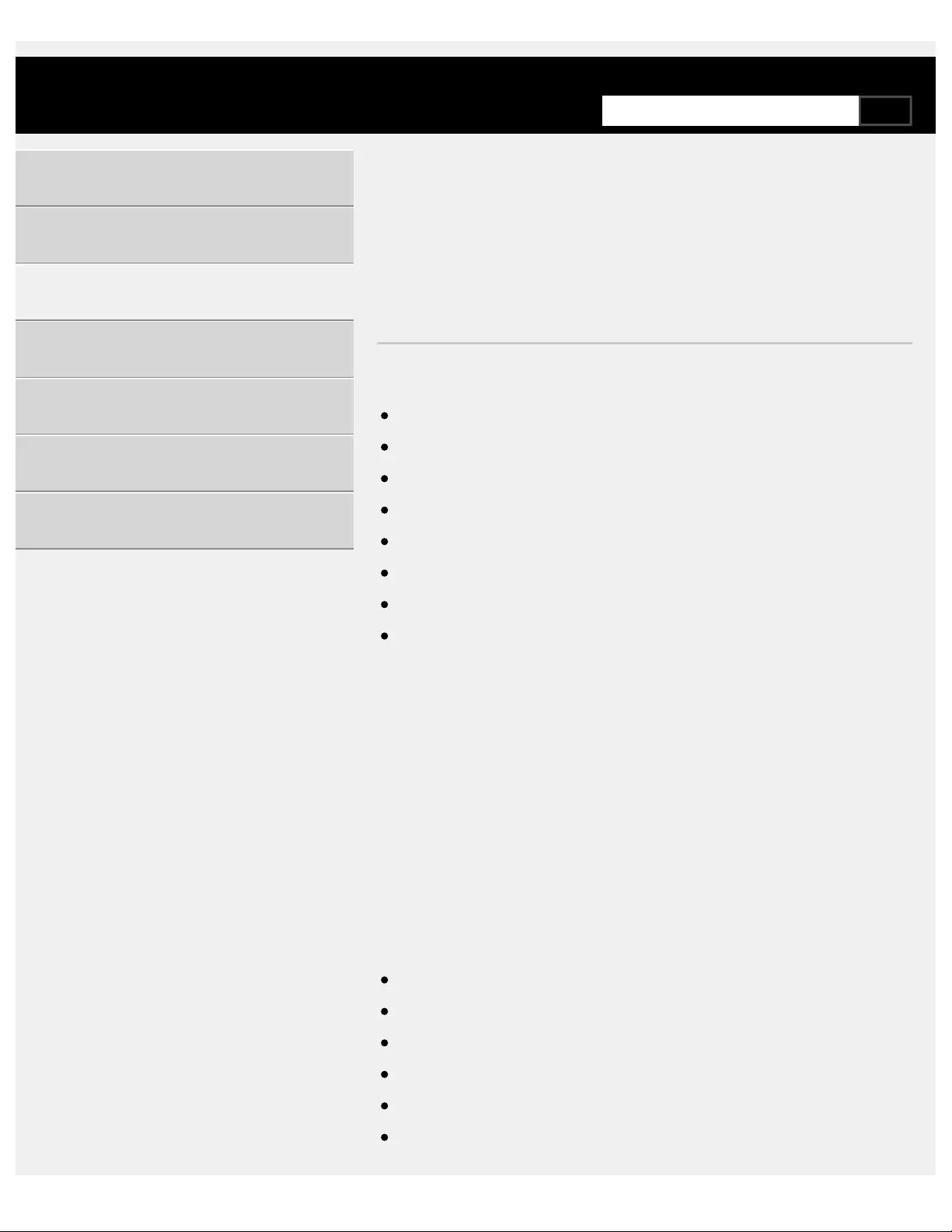
>Using the TV with Other Devices
>Computers, cameras, and camcorders >Computer video signal specifications
Print
Computer video signal specifications
(Resolution, Horizontal frequency/Vertical frequency)
640 x 480, 31.5 kHz/60 Hz
800 x 600, 37.9 kHz/60 Hz
1024 x 768, 48.4 kHz/60 Hz
1152 x 864, 67.5 kHz/75 Hz (2K Full HD models or 4K models only)
1280 x 1024, 64.0 kHz/60 Hz (2K Full HD models or 4K models only)
1600 x 900, 56.0 kHz/60 Hz (2K Full HD models or 4K models only)
1680 x 1050, 65.3 kHz/60 Hz (2K Full HD models or 4K models only)
1920 x 1080, 67.5 kHz/60 Hz (2K Full HD models or 4K models only)
1080p timing, when applied to the HDMI input, will be treated as video
timing and not computer timing. This will affect the [Screen] settings in
[Picture & Display]. To view computer content, set [Wide mode] to [Full],
and [Display area] to [Full pixel](2K models) or [+1](4K models). ([Display
area] is configurable only when [Auto display area] is disabled.)
Other video input signals
The following video formats can be displayed depending on specifications
of your computer.
480p, 480i
576p , 576i
720/24p
720p/30Hz, 720p/50Hz , 720p/60Hz
1080i/50Hz , 1080i/60Hz
1080/24p
Help Guide
Getting Started
Watching TV
Using the TV with Other Devices
Connecting to a Network
Settings
Troubleshooting
Index
*
*
*1 *1
*1
*1
*1
337
SearchSearch

1080p/30Hz, 1080p/50Hz , 1080p/60Hz
3840 x 2160p/24Hz, 3840 x 2160p/25Hz , 3840 x 2160p/30Hz (4K
models only)
3840 x 2160p/50Hz , 3840 x 2160p/60Hz (4K models only)
4096 x 2160p/24Hz (4K models only)
4096 x 2160p/50Hz , 4096 x 2160p/60Hz (4K models only)
Not supported depending on your region/country.
When 4096 x 2160p is input and [Wide mode] is set to [Normal], the
resolution is displayed as 3840 x 2160p.
To display 4096 x 2160p, set [Wide mode] setting to [Full 1] or [Full 2].
Supported only by HDMI 2/3 depending on your model.
Note
1920 x 1080/60 Hz output may not be available, depending on your
computer. Even if 1920 x 1080/60 Hz output is selected, the actual
output signal may differ. In this case, change the computer’s
settings, then set your computer to use a different video signal.
>Using the TV with Other Devices
>Computers, cameras, and camcorders >Computer video signal specifications
Go to page top
C-785-100-13(1)
Copyright 2018 Sony Visual Products Inc.
*1
*1*3 *3
*2
*1*2*3 *2*3
*1
*2
*3
338
Search

>Using the TV with Other Devices >Audio system
>Connecting an audio system
Print
Connecting an audio system
See the illustrations below to connect an audio system such as an AV
receiver or sound bar. After finishing the connection, configure the audio
settings to play TV sound through the audio system (refer to the related
topic link at the bottom of this page).
To connect an ARC capable audio system
using an HDMI cable
If your audio system features HDMI output jacks (sockets), you can
connect the TV to your audio system using an HDMI cable.
(A) AV receiver or sound bar
(B) HDMI cable (not supplied)
Be sure to use an authorized HIGH SPEED HDMI cable bearing the
HDMI logo.
Hint
When connecting a BRAVIA Sync-compatible digital audio system
with Audio Return Channel (ARC) technology, connect it to the
HDMI IN jack (socket) labeled with the “ARC” mark with an HDMI
cable. However, if connecting a system that is not BRAVIA Sync-
compatible or Audio Return Channel capable, you must also
connect the TV to the audio system using the DIGITAL AUDIO
OUT (OPTICAL) jack (socket).
See the instruction manual of the audio system for details on
connecting other devices and for set-up. If the audio system is not
Help Guide
Getting Started
Watching TV
Using the TV with Other Devices
Connecting to a Network
Settings
Troubleshooting
Index
*
*
339
SearchSearch

compatible with Dolby Digital or DTS, set [Settings] — [Sound] —
[Digital audio out] to [PCM].
Note
The location of the HDMI port that supports ARC varies depending
on your model. Refer to the Reference Guide.
To connect an audio system that is not
ARC capable using an optical audio cable
You can connect the TV’s audio output to an audio system using an
optical audio cable.
(A) AV receiver or Sound bar
(B) Optical audio cable (not supplied)
Hint
See the instruction manual of the audio system for details on
connecting other devices and for set-up. If the audio system is not
compatible with Dolby Digital or DTS, set [Settings] — [Sound] —
[Digital audio out] to [PCM].
To connect an audio system using an audio
cable
You can connect the TV’s audio output to an audio system using a stereo
to RCA analog audio cable.
(A) AV receiver or Sound bar
(B) Audio cable (not supplied)
Hint
See the instruction manual of the audio system for details on
connecting other devices and for the set-up. If the audio system is
not compatible with Dolby Digital or DTS, set [Settings] — [Sound]
340
Search

1
2
1
2
>Using the TV with Other Devices >Audio system
>Adjusting audio system-related settings
Print
Adjusting audio system-related
settings
When using the HDMI connection or optical
audio connection
After connecting the TV to your audio system, press the
ACTION MENU button, then select [Speakers] — [Audio
system].
Turn on the connected audio system, then adjust the volume.
If you connect a BRAVIA Sync-compatible device with an
HDMI connection, you can operate it by simply using the
TV’s remote control.
Note
You need to configure the [Digital audio out] settings according to
your audio system. Press the HOME button, then select [Settings]
— [Sound] — [Digital audio out].
When using the audio cable connection
After connecting the TV to your audio system, press the HOME
button, then select [Settings] — [Sound] —
[Headphone/Audio out] — [Audio out (Fixed)].
Turn on the connected audio system, then adjust the volume.
Help Guide
Getting Started
Watching TV
Using the TV with Other Devices
Connecting to a Network
Settings
Troubleshooting
Index
342
SearchSearch

Hint
When using an external audio system, the audio out of the TV can
be operated using the TV’s remote control if [Headphone/Audio out]
is set to [Audio out (Variable)]. Press the HOME button, then select
[Settings] — [Sound] — [Headphone/Audio out] — [Audio out
(Variable)].
When connecting a subwoofer, press the HOME button, then select
[Settings] — [Sound] — [Headphone/Audio out] — [Subwoofer].
If a specific audio system is connected with an HDMI cable, you
can adjust the output timing of the picture and sound.
Adjusting the AV sync setting
For details about supported models, refer to the support site.
Support Site
Related topics
Connecting an audio system
No sound but good picture.
No audio or low audio with a home theater system.
>Using the TV with Other Devices >Audio system
>Adjusting audio system-related settings
Go to page top
C-785-100-13(1)
Copyright 2018 Sony Visual Products Inc.
343
Search
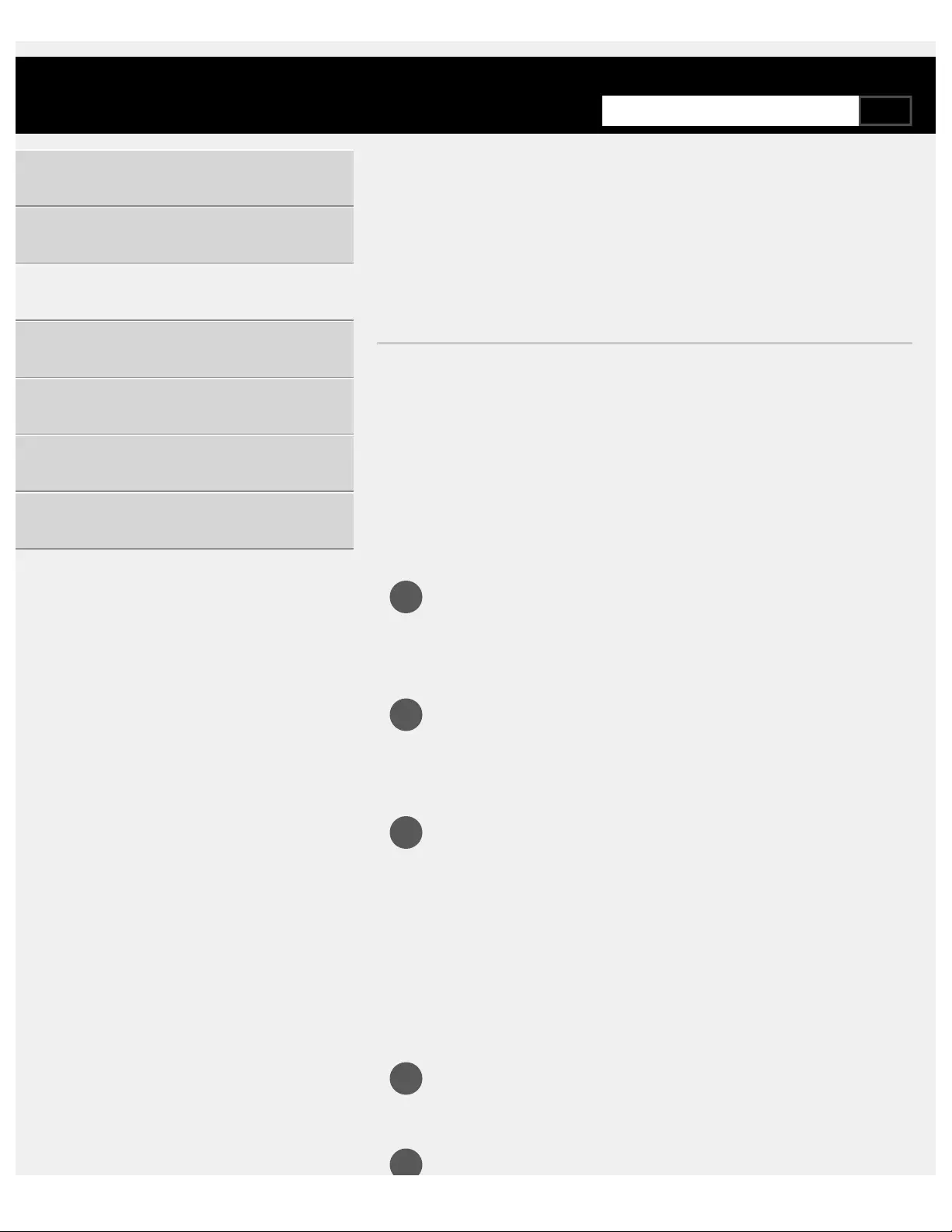
1
2
3
1
2
>Using the TV with Other Devices >Bluetooth devices
>Connecting a Bluetooth device
Print
Connecting a Bluetooth device
To pair the TV with a Bluetooth device
Only for Bluetooth A2DP-supported models that can use Bluetooth audio
devices such as headphones or speakers.
Bluetooth A2DP-supported models that can use Bluetooth audio devices
have [A/V sync] in [Settings] — [Sound].
Turn the Bluetooth device on and put it in pairing mode.
To put your Bluetooth device in pairing mode, refer to the
instruction manual of the device.
Press the HOME button, then select [Settings] — [Bluetooth
settings] — [Add device] to put the TV in pairing mode.
A list of available Bluetooth devices will be displayed.
Select the desired device from the list, then follow the on-
screen instructions.
If you are prompted to enter a passcode, refer to the
instruction manual of the device.
After pairing is completed, the device connects to the TV.
To connect to a paired Bluetooth device
Press the HOME button, then select [Settings] — [Bluetooth
settings].
Select a paired but unconnected device from the list.
Help Guide
Getting Started
Watching TV
Using the TV with Other Devices
Connecting to a Network
Settings
Troubleshooting
Index
344
SearchSearch
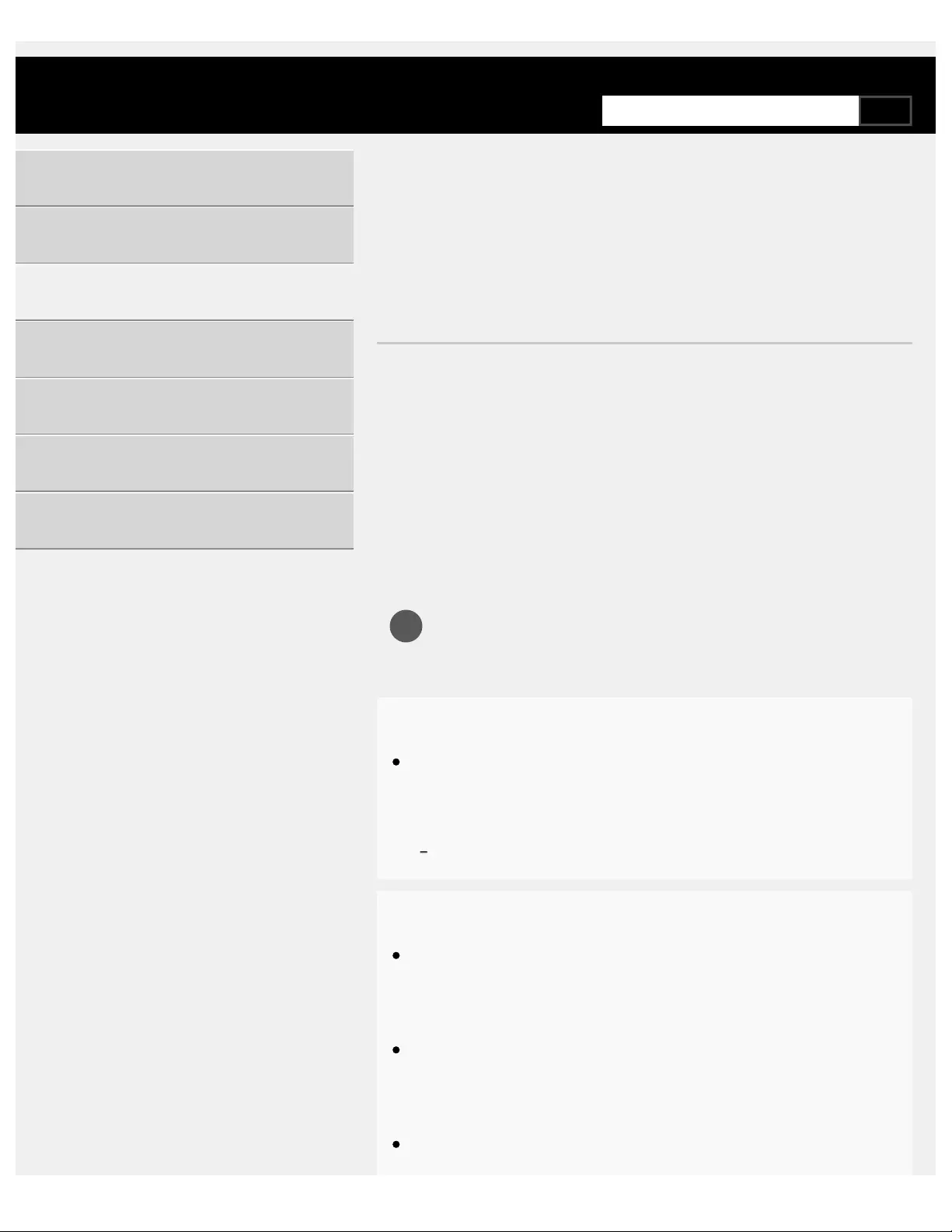
1
>Using the TV with Other Devices >Bluetooth devices
>Adjusting the AV sync setting
Print
Adjusting the AV sync setting
If a Bluetooth audio device is connected, there may be a delay between
the picture and sound due to the properties of Bluetooth. You can adjust
the delay between the picture and sound with the A/V sync setting. (Only
for Bluetooth A2DP-supported models that can use Bluetooth audio
devices.)
Bluetooth A2DP-supported models that can use Bluetooth audio devices
have [A/V sync] in [Settings] — [Sound].
Press the HOME button, then select [Settings] — [Sound] —
[A/V sync] — the desired option.
Hint
You can also adjust the output timing of the picture and sound if a
specific audio system is connected with an HDMI cable. For details
about supported models, refer to the support site.
Support Site
Note
Depending on the connected Bluetooth audio device, the picture
and sound may not match even when the [A/V sync] setting is set
to [On] or [Auto].
To prevent the TV from displaying a black screen immediately after
turning it on when a sound bar is connected wirelessly (Bluetooth),
set the [A/V sync] setting to [On].
If [Picture mode] is set to one of the options below, the output
Help Guide
Getting Started
Watching TV
Using the TV with Other Devices
Connecting to a Network
Settings
Troubleshooting
Index
346
SearchSearch

timing of the picture and sound is not adjusted even when the [A/V
sync] setting is set to [Auto].
[Game]
[Graphics]
[Photo Vivid]
[Photo Standard]
[Photo Custom]
To adjust [A/V sync] when in any of these modes, select [On].
The responsiveness of the TV while playing video games may feel
slower due to the [A/V sync] setting adding a delay to the output
timing of the picture. For games that are dependant on response
time, we recommend that you use the TV speakers or a sound bar
with a wired (HDMI cable/optical digital cable) connection.
>Using the TV with Other Devices >Bluetooth devices
>Adjusting the AV sync setting
Go to page top
C-785-100-13(1)
Copyright 2018 Sony Visual Products Inc.
347
Search
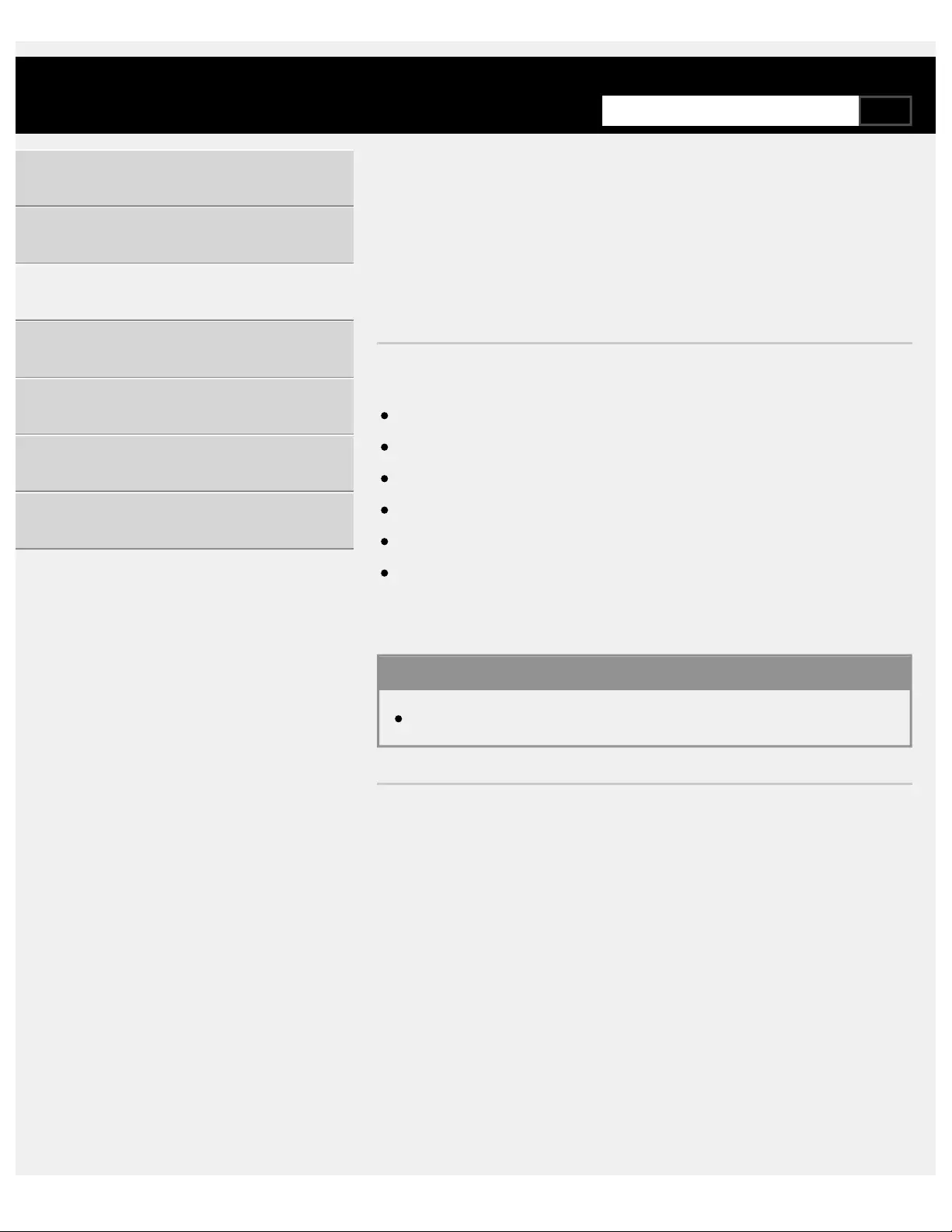
>Using the TV with Other Devices >Bluetooth devices
>Supported Bluetooth profiles
Print
Supported Bluetooth profiles
The TV supports the following profiles:
HID (Human Interface Device Profile)
HOGP (HID over GATT Profile)
A2DP (Advanced Audio Distribution Profile)
AVRCP (Audio/Video Remote Control Profile)
3DSP (3D Synchronization Profile)
SPP (Serial Port Profile)
Available depending on your model/region/country.
Related topics
Connecting a Bluetooth device
>Using the TV with Other Devices >Bluetooth devices
>Supported Bluetooth profiles
Go to page top
Help Guide
Getting Started
Watching TV
Using the TV with Other Devices
Connecting to a Network
Settings
Troubleshooting
Index
C-785-100-13(1)
Copyright 2018 Sony Visual Products Inc.
*
*
*
*
348
SearchSearch
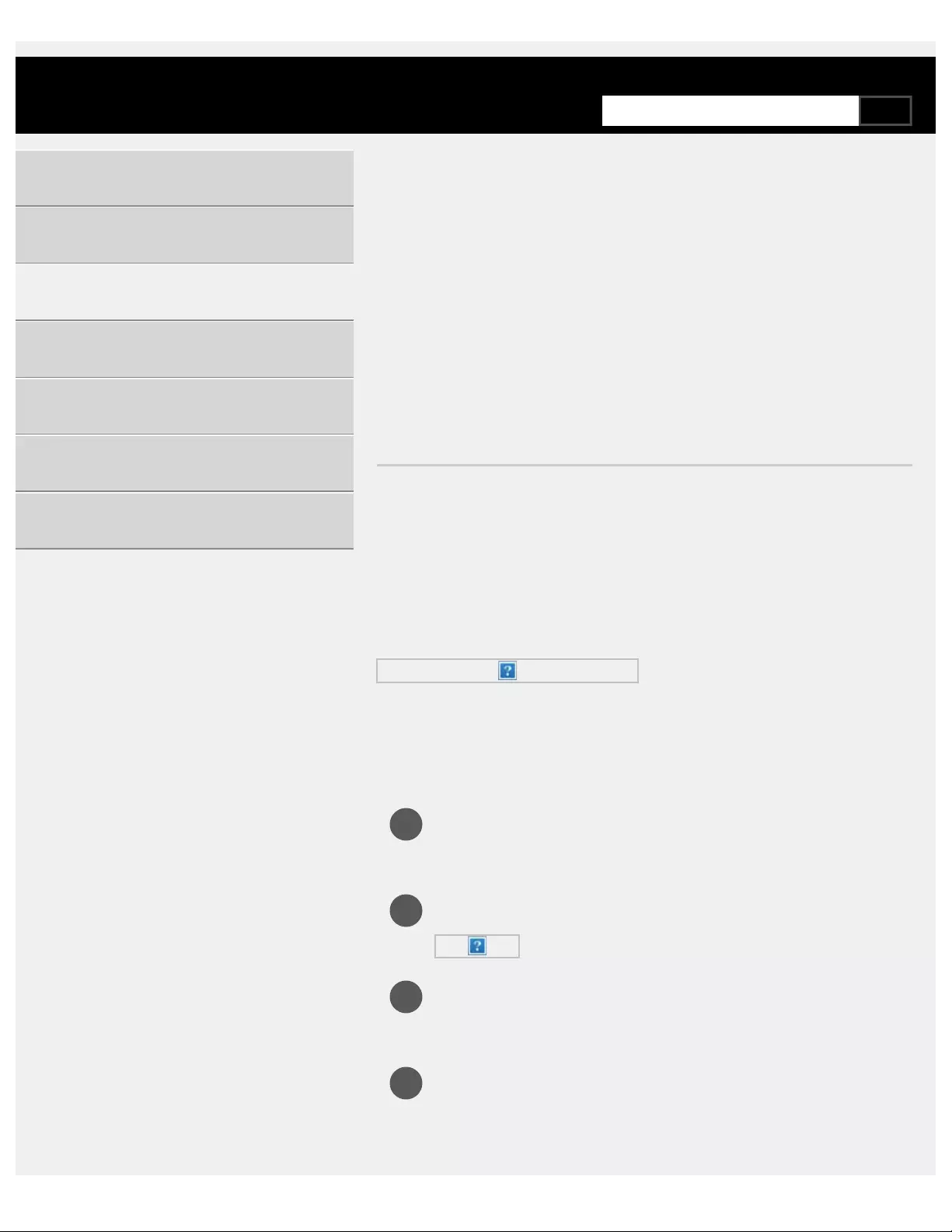
1
2
3
4
>Using the TV with Other Devices
>
Sony wireless subwoofer (optional) (Sony wireless subwoofer supported models
only)
>Connecting a wireless subwoofer (optional)
Print
Connecting a wireless subwoofer
(optional)
You can use the optional Wireless Subwoofer SWF-BR100 to extend the
bass response of the TV’s sound.
The availability of this feature depends on your model/region/country.
TVs that support the Wireless Subwoofer indicate “SWF-BR100” in the
specifications section of the Reference Guide.
(A) Wireless Transceiver
(B) Wireless Subwoofer SWF-BR100
(C) Audio cable
Connect the audio cable (supplied) to the Wireless
Transceiver.
Connect the other end of the audio cable to the AUDIO OUT /
jack (socket) of the TV.
Connect the Wireless Transceiver to the USB port of the TV.
[Headphone/Audio out] is automatically set to [Subwoofer].
Position the Wireless Subwoofer and connect it to the AC
power.
We recommend that the Wireless Subwoofer be placed as
Help Guide
Getting Started
Watching TV
Using the TV with Other Devices
Connecting to a Network
Settings
Troubleshooting
Index
349
SearchSearch

close as possible to the TV.
Hint
When the Wireless Transceiver is disconnected, [Headphone/Audio
out] is automatically restored to its original setting.
For details on how to set up the Wireless Subwoofer, refer to the
instruction manual supplied with the Wireless Subwoofer.
Related topics
Adjusting wireless subwoofer-related settings (optional)
>Using the TV with Other Devices
>
Sony wireless subwoofer (optional) (Sony wireless subwoofer supported models
only)
>Connecting a wireless subwoofer (optional)
Go to page top
C-785-100-13(1)
Copyright 2018 Sony Visual Products Inc.
350
Search

1
>Using the TV with Other Devices
>
Sony wireless subwoofer (optional) (Sony wireless subwoofer supported models
only)
>Adjusting wireless subwoofer-related settings (optional)
Print
Adjusting wireless subwoofer-related
settings (optional)
Sony wireless subwoofer supported models have [Wireless Subwoofer
power] in [Settings] — [Sound] — [Sound adjustments].
The sound settings of the Wireless Subwoofer have already been set to
the recommended values for your TV. Follow the instructions below to
change the settings to suit your preferences.
Press the HOME button, then select [Settings] — [Sound] —
[Sound adjustments] — [Advanced settings] — [Sound mode
related] — [Wireless Subwoofer].
Available Options
[Wireless Subwoofer level]
Adjusts the volume level of the Wireless Subwoofer.
[Cut off frequency (50-200Hz)]
Adjusts the cutoff frequency of the Wireless Subwoofer. All frequencies
below the cutoff frequency are output to the Wireless Subwoofer.
[Phase]
Sets the phase polarity. Select the setting to suit your preference.
[Wireless Subwoofer sync]
Adjusts the time lag of the Wireless Subwoofer sound. If the sound
produced by the Wireless Subwoofer is too late, use [+]; if it is too early,
Help Guide
Getting Started
Watching TV
Using the TV with Other Devices
Connecting to a Network
Settings
Troubleshooting
Index
351
SearchSearch

1
use [-].
[Reset Wireless Subwoofer settings]
Resets the Wireless Subwoofer settings to their initial values.
To set the power control method of the Wireless Subwoofer
Press the HOME button, then select [Settings] — [Sound] —
[Sound adjustments] — [Wireless Subwoofer power].
Related topics
Connecting a wireless subwoofer (optional)
>Using the TV with Other Devices
>
Sony wireless subwoofer (optional) (Sony wireless subwoofer supported models
only)
>Adjusting wireless subwoofer-related settings (optional)
Go to page top
C-785-100-13(1)
Copyright 2018 Sony Visual Products Inc.
352
Search

>Using the TV with Other Devices >BRAVIA Sync-compatible devices
>Using features available for BRAVIA Sync-compatible devices
Print
Using features available for BRAVIA
Sync-compatible devices
The [Sync Menu] is primarily used to operate BRAVIA Sync-compatible
devices from the TV.
Press the ACTION MENU button, and select [Sync Menu].
Blu-ray/DVD player
Automatically turns the Blu-ray/DVD player on and switches the input
to the Blu-ray/DVD player when you select it from the Home Menu or
Sync Menu.
Automatically turns the TV on and switches the input to the connected
Blu-ray/DVD player when the Blu-ray/DVD player starts to play.
Automatically turns the connected Blu-ray/DVD player off when you
turn the TV off.
Controls menu operation ( / / / buttons),
playback (e.g., button), and channel selection of the connected
Blu-ray/DVD player through the TV’s remote control.
AV amplifier
Automatically turns the connected AV amplifier on and switches the
sound output from the TV speaker to the audio system when you turn
the TV on. This function is only available if you have previously used
the AV amplifier to output the TV’s sound.
Automatically switches the sound output to the AV amplifier by turning
the AV amplifier on when the TV is turned on.
Automatically turns the connected AV amplifier off when you turn the
Help Guide
Getting Started
Watching TV
Using the TV with Other Devices
Connecting to a Network
Settings
Troubleshooting
Index
353
SearchSearch
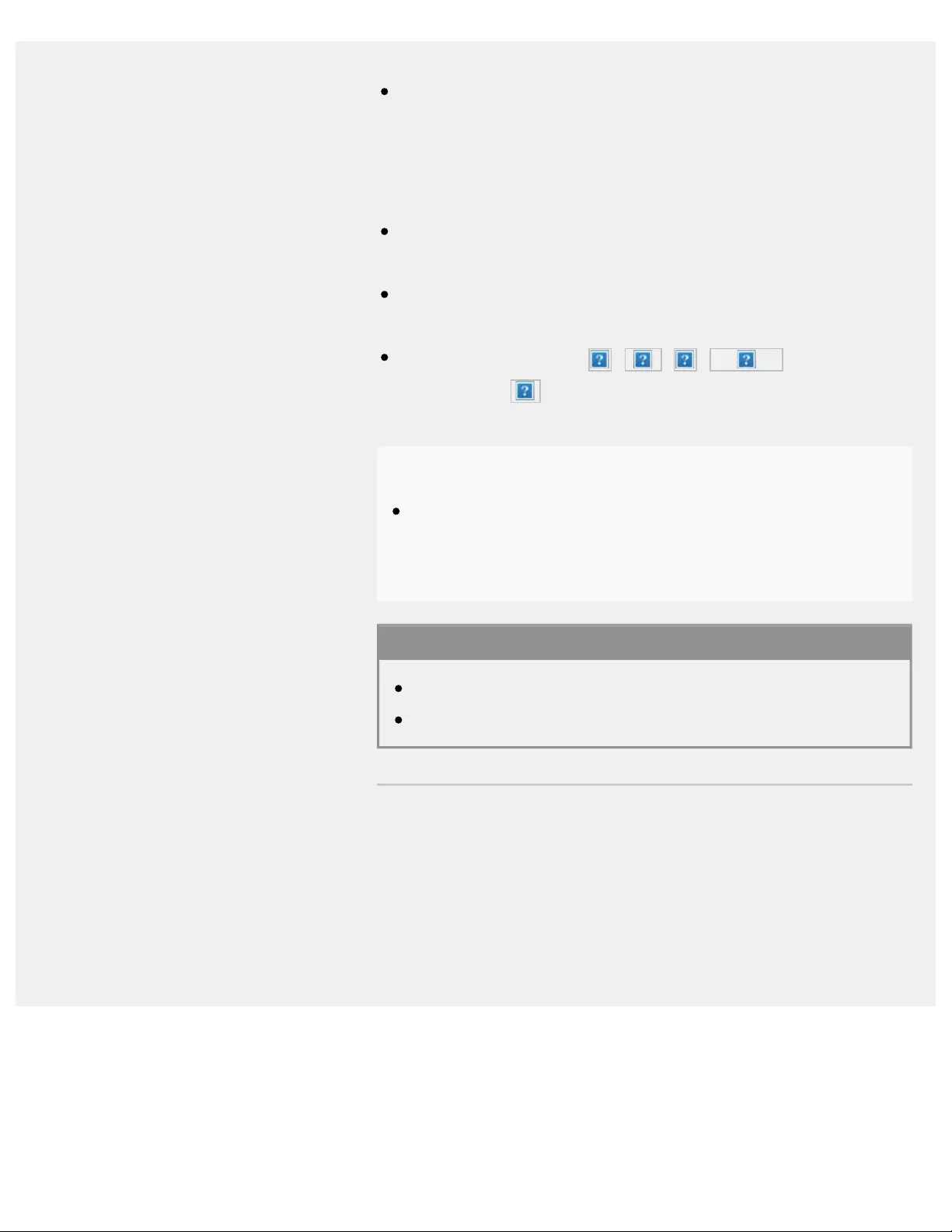
TV off.
Adjusts the volume (VOL +/– buttons) and mutes the sound (MUTING
button) of the connected AV amplifier through the TV’s remote control.
Video camera
Automatically turns the TV on and switches the input to the connected
video camera when the camera is turned on.
Automatically turns the connected video camera off when you turn the
TV off.
Controls menu operation ( / / / buttons),
playback (e.g., button) of the connected video camera through the
TV’s remote control.
Note
“BRAVIA Sync control” (BRAVIA Sync) is only available for
connected BRAVIA Sync-compatible devices that have the BRAVIA
Sync logo.
Related topics
BRAVIA Sync overview
Adjusting BRAVIA Sync settings
>Using the TV with Other Devices >BRAVIA Sync-compatible devices
>Using features available for BRAVIA Sync-compatible devices
Go to page top
C-785-100-13(1)
Copyright 2018 Sony Visual Products Inc.
354
Search

1
2
3
>Using the TV with Other Devices >BRAVIA Sync-compatible devices
>Adjusting BRAVIA Sync settings
Print
Adjusting BRAVIA Sync settings
Turn on the connected device.
To enable [BRAVIA Sync control], press the HOME button,
then select [Settings] — [External inputs] — [BRAVIA Sync
settings] — [BRAVIA Sync control].
Activate BRAVIA Sync on the connected device.
When a specific Sony BRAVIA Sync-compatible device is
connected and powered on and [BRAVIA Sync control] is
enabled, BRAVIA Sync is automatically activated on that
device. For details, refer to the instruction manual of the
connected device.
Available options
Available options are shown below. (Options vary depending on your
model/region/country.)
[Device auto power off]
If disabled, the connected device does not turn off automatically when the
TV is turned off.
[TV auto power on]
If disabled, the TV does not turn on automatically when the connected
device is turned on.
[BRAVIA Sync device list]
Displays the BRAVIA Sync device list.
[Device control keys]
Help Guide
Getting Started
Watching TV
Using the TV with Other Devices
Connecting to a Network
Settings
Troubleshooting
Index
355
SearchSearch
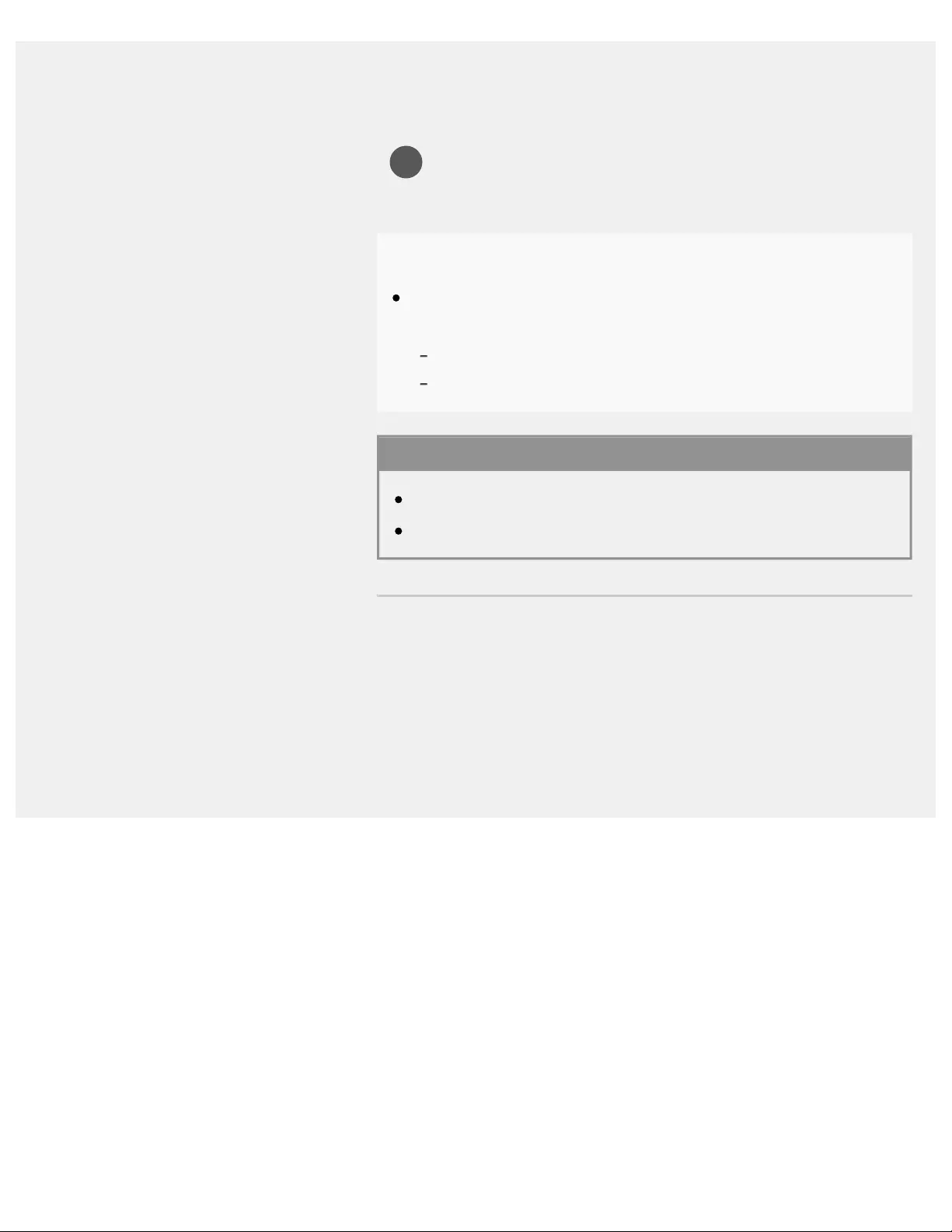
1
Allows you to set buttons to control an HDMI connected device.
To use the Sync Menu
Press the SYNC MENU button, then select the desired item in
the Sync Menu.
Hint
If you press the SYNC MENU button, the promotion screen is
displayed in the following situations:
An HDMI device is not connected.
[BRAVIA Sync control] is disabled.
Related topics
BRAVIA Sync overview
Using features available for BRAVIA Sync-compatible devices
>Using the TV with Other Devices >BRAVIA Sync-compatible devices
>Adjusting BRAVIA Sync settings
Go to page top
C-785-100-13(1)
Copyright 2018 Sony Visual Products Inc.
356
Search

1
2
>Using the TV with Other Devices
>Viewing pictures in 4K from compatible devices (4K models only)
>Viewing pictures in 4K resolution (4K models only)
Print
Viewing pictures in 4K resolution (4K
models only)
A picture with a 4K or higher resolution can be displayed in 4K resolution
(3840×2160). You can connect a digital still camera/camcorder that
supports HDMI 4K output to HDMI IN of the TV to display high resolution
photos stored on the camera. You can also display high resolution photos
stored in connected USB devices or your home network.
The availability of this function depends on your region/country.
(A) Digital still camera
(B) Camcorder
(C) USB device
(D) Network device
To view pictures stored on a USB device or network device
in 4K resolution
Connect the USB device or network device to the TV.
Press the HOME button, then select [Album] — the USB
device, server, or preset folder containing the file to play —
the folder or file from the list.
If you select a folder, select the file.
To view pictures stored on a digital still camera/camcorder
Help Guide
Getting Started
Watching TV
Using the TV with Other Devices
Connecting to a Network
Settings
Troubleshooting
Index
357
SearchSearch
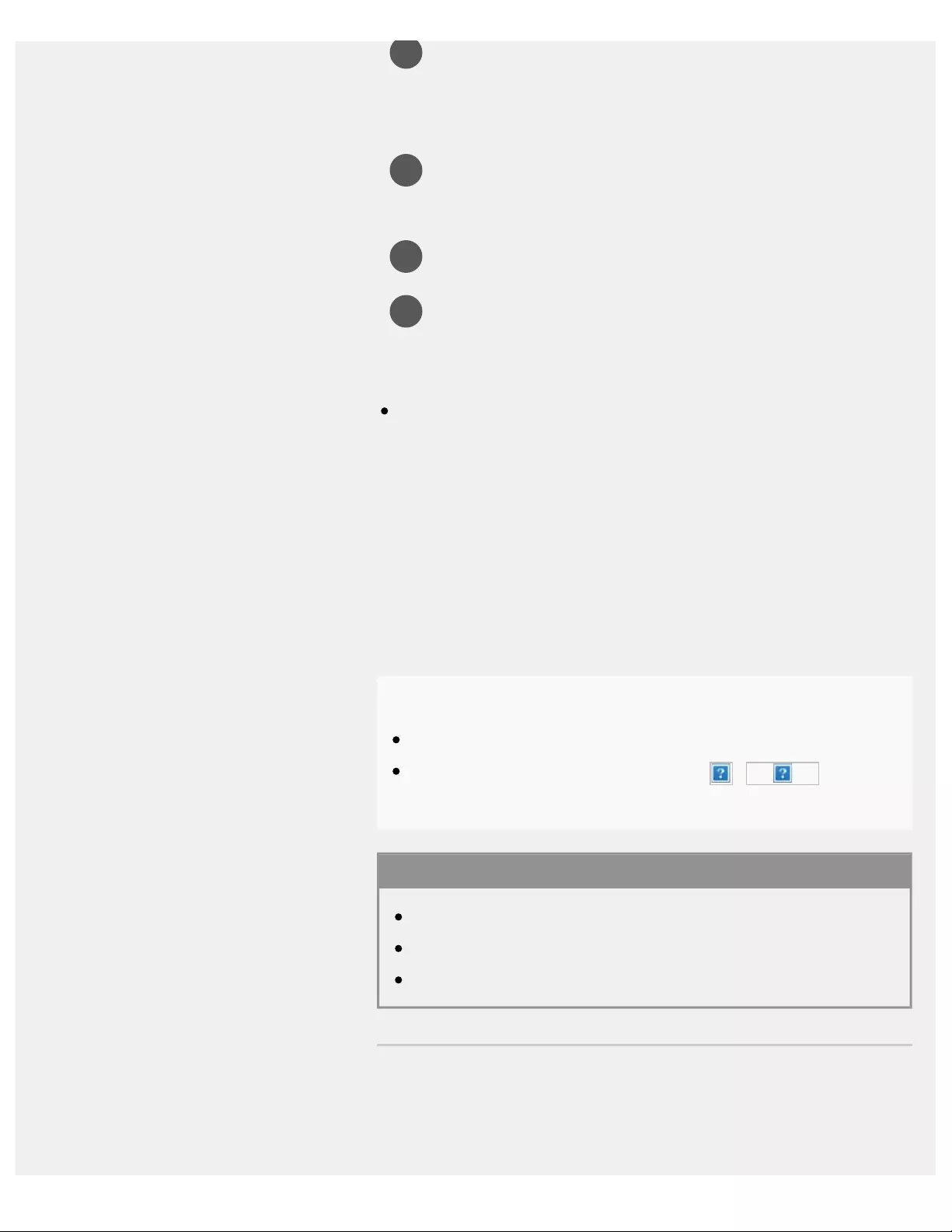
1
2
3
4
Connect a digital still camera or camcorder that supports
HDMI output to the HDMI IN jack (socket) of the TV, using an
HDMI cable.
Press the INPUT button repeatedly to select the connected
device.
Set the connected device to 4K output.
Start playback on the connected device.
To check the supported file formats
Supported files and formats
To view pictures in 4K resolution with higher quality
You can set the HDMI signal format to [Enhanced format] to view pictures
in 4K resolution with higher quality.
For information about Enhanced format or changing the settings, refer to
the Settings for viewing pictures in 4K resolution with higher quality (4K
models only) page.
Note
A 3D picture cannot be displayed.
If you change the picture by pressing the / buttons, it
may take time to display.
Related topics
Computers, cameras, and camcorders
USB devices
Connecting to a Network
>Using the TV with Other Devices
>Viewing pictures in 4K from compatible devices (4K models only)
>Viewing pictures in 4K resolution (4K models only)
Go to page top
358
Search

C-785-100-13(1)
Copyright 2018 Sony Visual Products Inc.
359
Search

>Using the TV with Other Devices
>Viewing pictures in 4K from compatible devices (4K models only)
>Settings for viewing pictures in 4K resolution with higher quality (4K models only)
Print
Settings for viewing pictures in 4K
resolution with higher quality (4K
models only)
When you display the High-Quality 4K format with the HDMI input, set
[HDMI signal format] in [External inputs].
HDMI signal format
To change the HDMI signal format setting, press the HOME button, then
select [Settings] — [External inputs] — [HDMI signal format].
Standard format
Standard HDMI format for normal use.
Enhanced format (HDMI IN 2/3 only)
High-Quality HDMI format . Set only when using capable devices.
HDR included (HDR models only). HDR models have [HDR mode] in
[Settings] — [Picture & Display] — [Picture adjustments] — [Advanced
settings] — [Video options].
4K 60p 4:2:0 10bit, 4:4:4:, 4:2:2 etc.
Note
When using [Enhanced format], picture and sound may not be
output correctly. In this case, connect the device to an HDMI IN that
is in [Standard format], or change the HDMI signal format of HDMI
IN to [Standard format].
Set to [Enhanced format] only when using compatible devices.
Help Guide
Getting Started
Watching TV
Using the TV with Other Devices
Connecting to a Network
Settings
Troubleshooting
Index
*1
*1*2
*1
*2
360
SearchSearch

When you watch 4K picture with High-Quality, use a Premium High
Speed HDMI Cable(s) that supports speeds of 18 Gbps. For details
on a Premium High Speed HDMI Cable(s) that supports 18 Gbps,
refer to the cable specifications.
In some models, the HDMI signal format of HDMI IN 2 and 3
changes at the same time.
Related topics
Viewing pictures in 4K resolution (4K models only)
>Using the TV with Other Devices
>Viewing pictures in 4K from compatible devices (4K models only)
>Settings for viewing pictures in 4K resolution with higher quality (4K models only)
Go to page top
C-785-100-13(1)
Copyright 2018 Sony Visual Products Inc.
361
Search

>Connecting to a Network >Home network features
>Adjusting home network settings
Print
Adjusting home network settings
You can adjust the following home network settings.
To check the server connection
Press the HOME button, then select [Settings] — [Network] — [Home
network] — [Server diagnostics] — follow the on-screen instructions to
perform diagnostics.
To use the renderer function
Press the HOME button, then select [Settings] — [Network] — [Home
network] — [Renderer] — the desired option.
[Renderer]
Enable the renderer function.
You can play photo/music/video files in a controller (e.g., digital still
camera) on the TV screen by operating the device directly.
[Renderer access control]
Select [Auto access permission] to access the TV automatically when
a controller accesses the TV for the first time.
Select [Custom settings] to change the access permission settings of
each controller.
To use the remote device
Press the HOME button, then select [Settings] — [Network] — [Remote
device settings] — the desired option.
[Control remotely]
Help Guide
Getting Started
Watching TV
Using the TV with Other Devices
Connecting to a Network
Settings
Troubleshooting
Index
362
SearchSearch

Enable operation of the TV from a registered device.
[Deregister remote device]
Deregister a device to disable operation of the TV from that device.
>Connecting to a Network >Home network features
>Adjusting home network settings
Go to page top
C-785-100-13(1)
Copyright 2018 Sony Visual Products Inc.
363
Search

1
2
>Connecting to a Network >Home network features
>Playing content from a computer
Print
Playing content from a computer
If you connect the TV to a home network via a router, you can enjoy
content (photo/music/video files) stored on a network device located in
another room.
(A) Computer (Server)
(B) Router
(C) Modem
(D) Internet
Connect the TV to your home network.
Press the HOME button, then select [Album], [Video], or
[Music] — the server containing the file to play — the folder
or file from the list.
If you select a folder, select the desired file.
Playback starts.
To check the supported file formats
Supported files and formats
Note
Depending on the file, playback may not be possible even when
using the supported formats.
Related topics
Help Guide
Getting Started
Watching TV
Using the TV with Other Devices
Connecting to a Network
Settings
Troubleshooting
Index
364
SearchSearch

1
2
>Connecting to a Network >Home network features
>Playing content from a media server
Print
Playing content from a media server
If you connect the TV to a home network via a router, you can play
photo/music/video files in a controller (e.g., digital still camera) on the TV
screen by operating the controller directly. The controller should also be
renderer-compatible.
(A) Digital still camera (Controller)
(B) Router
(C) Modem
(D) Internet
Connect the TV to your home network.
Operate the controller to start playing the content on the TV
screen.
Related topics
Adjusting home network settings
>Connecting to a Network >Home network features
>Playing content from a media server
Go to page top
Help Guide
Getting Started
Watching TV
Using the TV with Other Devices
Connecting to a Network
Settings
Troubleshooting
Index
C-785-100-13(1)
Copyright 2018 Sony Visual Products Inc.
366
SearchSearch

>Connecting to a Network >Home network features
>RVU statement (RVU compliant models only)
Print
RVU statement (RVU compliant
models only)
RVU compliant models have [RVU] in [Settings] — [External inputs] —
[Manage inputs].
Your TV is equipped with RVU technology which may allow it to connect
to compatible satellite receivers over your home network without the need
for a dedicated box. Contact your satellite provider for additional
information.
>Connecting to a Network >Home network features
>RVU statement (RVU compliant models only)
Go to page top
Help Guide
Getting Started
Watching TV
Using the TV with Other Devices
Connecting to a Network
Settings
Troubleshooting
Index
C-785-100-13(1)
Copyright 2018 Sony Visual Products Inc.
367
SearchSearch

>Settings >Configuring the TV >[Accounts]
Print
[Accounts]
Press the HOME button, then select [Settings] — [Accounts] — the
desired option.
[Google]
Syncs the registered Google account or removes the account.
[Add account]
Adds various service accounts such as Google accounts and Sony
Entertainment Network (SEN) accounts. You can add multiple Google
accounts and switch between them depending on the app.
>Settings >Configuring the TV >[Accounts]
Go to page top
Help Guide
Getting Started
Watching TV
Using the TV with Other Devices
Connecting to a Network
Settings
Troubleshooting
Index
C-785-100-13(1)
Copyright 2018 Sony Visual Products Inc.
368
SearchSearch
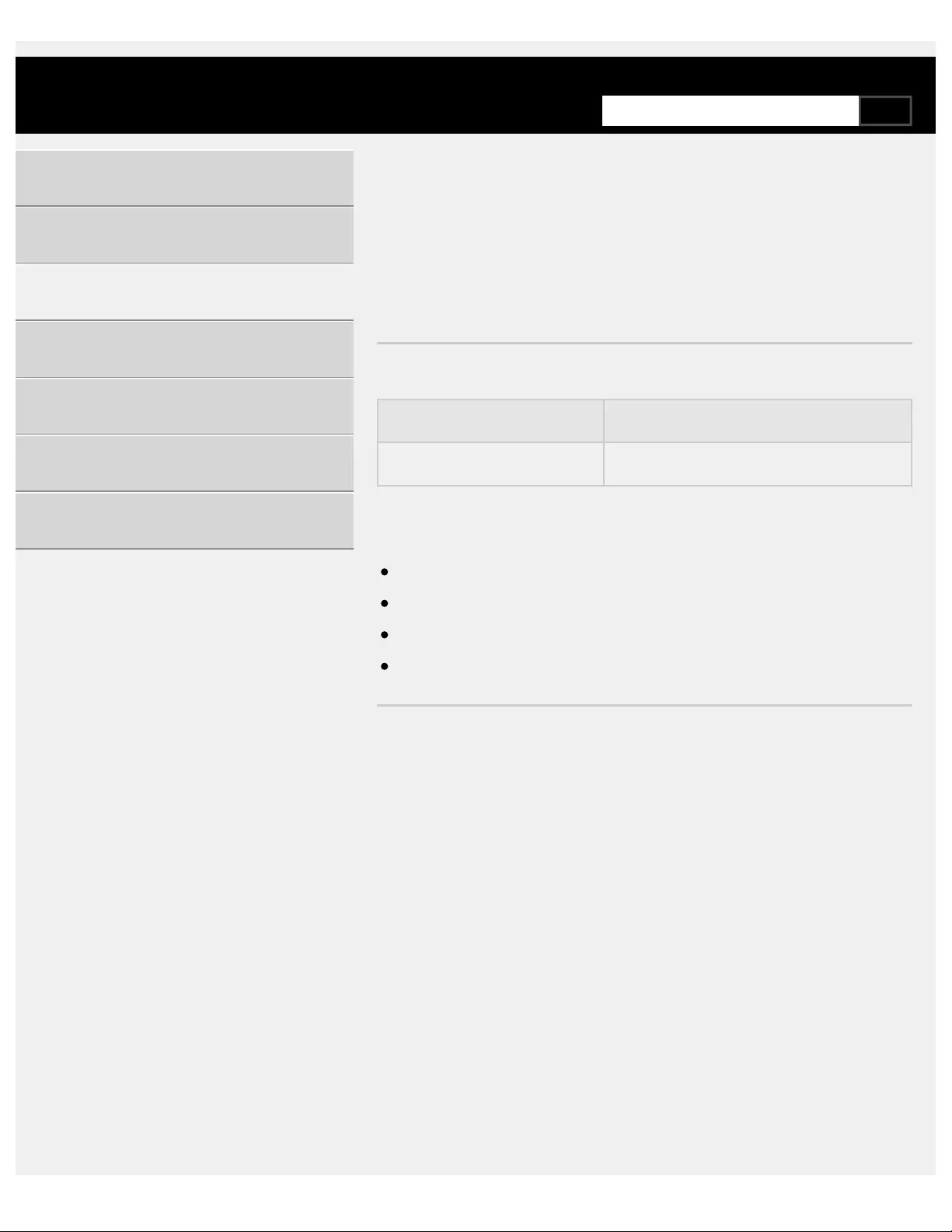
>Using the TV with Other Devices >USB devices
>Supported files and formats >Photos
Print
Photos
Use case : USB / Home Network
File Format Extension
JPEG *.jpg / *.jpe / *.jpeg
Other supported files and formats
Music
Videos
Audio sampling rates (for videos)
External subtitles
>Using the TV with Other Devices >USB devices
>Supported files and formats >Photos
Go to page top
Help Guide
Getting Started
Watching TV
Using the TV with Other Devices
Connecting to a Network
Settings
Troubleshooting
Index
C-785-100-13(1)
Copyright 2018 Sony Visual Products Inc.
369
SearchSearch

>Using the TV with Other Devices >USB devices
>Supported files and formats >Music
Print
Music
Use case : USB / Home Network
mp4
Extension: *.mp4 / *.m4a
Description Sampling Rate
AAC-LC 16k / 22.05k / 24k / 32k / 44.1k / 48k
HE-AAC v1 / v2 24k / 32k / 44.1k / 48k
3gpp
Extension: *.3gp / *.3g2
Description Sampling Rate
AAC-LC 16k / 22.05k / 24k / 32k / 44.1k / 48k
HE-AAC v1 / v2 24k / 32k / 44.1k / 48k
Asf
Extension: *.wma
Description Sampling Rate
WMA9 Standard 8k / 11.025k / 16k / 22.05k / 32k / 44.1k / 48k
Help Guide
Getting Started
Watching TV
Using the TV with Other Devices
Connecting to a Network
Settings
Troubleshooting
Index
370
SearchSearch

Other
Description Sampling Rate
LPCM 32k / 44.1k / 48k
Extension: *.mp3
Description Sampling Rate
MP1L1 / MP1L2 / MP1L3 / MP2L1 / MP2L2 32k / 44.1k / 48k
MP2L3 16k / 22.05k / 24k
MP2.5L3 8k / 11.025k / 12k
Extension: *.wav
Description Sampling Rate
WAV 32k / 44.1k / 48k / 88.2k / 96k / 176.4k / 192k
Extension: *.flac
Description Sampling Rate
FLAC 16k / 22.05k / 32k / 44.1k / 48k / 88.2k / 96k / 176.4k / 192k
The use case of LPCM is Home Network only.
The use case of WAV is 2ch only.
Other supported files and formats
Photos
Videos
Audio sampling rates (for videos)
External subtitles
>Using the TV with Other Devices >USB devices
>Supported files and formats >Music
Go to page top
*1
*2
*1
*2
371
Search
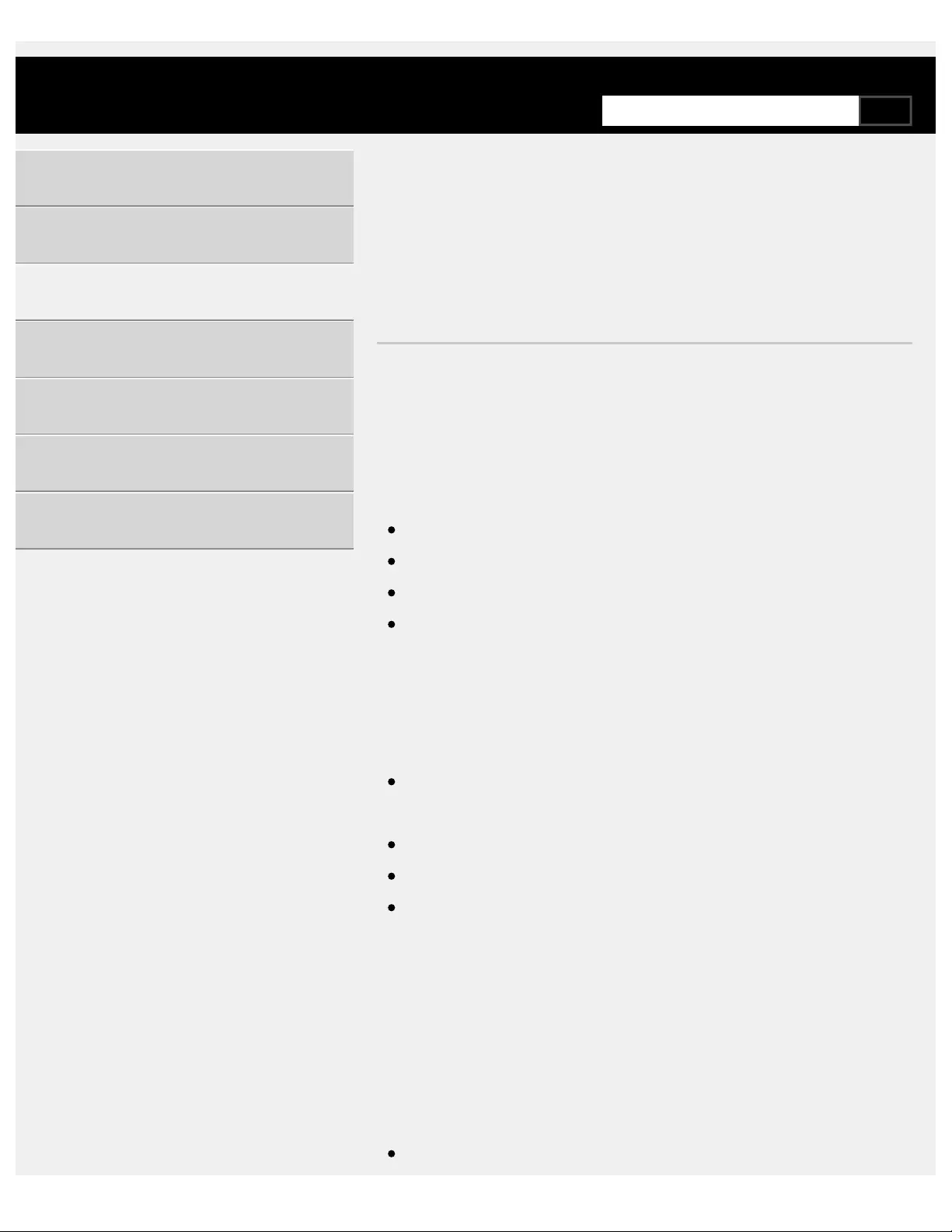
>Using the TV with Other Devices >USB devices
>Supported files and formats >Videos
Print
Videos
Use case : USB / Home Network
MPEG1 (*.mpg / *.mpe / *.mpeg)
Subtitle Type : External
Video Codec (Profile@Level):MPEG1
Audio Codec:MPEG1L2
Max. / Min. Resolution:1920x1080 / QCIF (176x144)
Max. Frame Rate:1920x1080@30fps / 1280x720@60fps
MPEG2PS (*.mpg / *.mpe / *.mpeg)
Subtitle Type : External
Video Codec (Profile@Level):MPEG2 MP@HL, MP@H14L,
MP@ML
Audio Codec:MPEG1L1 / MPEG1L2 / LPCM / AC3
Max. / Min. Resolution:1920x1080 / QCIF (176x144)
Max. Frame Rate:1920x1080@30fps / 1280x720@60fps
MPEG2TS
Extension : *.m2t
Subtitle Type : Internal (Except for Brazilian models) / - (For Brazilian
models only)
Video Codec (Profile@Level):MPEG2 MP@HL, MP@H14L,
Help Guide
Getting Started
Watching TV
Using the TV with Other Devices
Connecting to a Network
Settings
Troubleshooting
Index
372
SearchSearch

MP@ML
Audio Codec:MPEG1L1 / MPEG1L2 / AAC-LC / HE-AAC v1 / HE-
AAC v2 / AC3 / E-AC3
Max. / Min. Resolution:1920x1080 / QCIF (176x144)
Max. Frame Rate:1920x1080@30fps / 1280x720@60fps
Extension : *.m2ts / *.mts
Subtitle Type : -
Video Codec (Profile@Level):AVC / H.264 BP@L3, MP@L4.2,
HP@L4.2
Audio Codec:MPEG1L1 / MPEG1L2 / AAC-LC / HE-AAC v1 / HE-
AAC v2 / AC3 / E-AC3
Max. / Min. Resolution:1920x1080 / QCIF (176x144)
Max. Frame Rate:1920x1080@60fps
MP4 (*.mp4): For 2K models
Subtitle Type : External
Video Codec (Profile@Level):AVC / H.264 BP@L3, MP@L4.2,
HP@L4.2
Audio Codec:AAC-LC / HE-AAC v1 / HE-AAC v2 / AC3 / E-AC3 /
MPEG1L1 / MPEG1L2
Max. / Min. Resolution:1920x1080 / QCIF (176x144)
Max. Frame Rate:1920x1080@120fps
Video Codec (Profile@Level):MPEG4 SP@L6, ASP@L5,
ACEP@L4
Audio Codec:AAC-LC / HE-AAC v1 / HE-AAC v2 / AC3 / E-AC3 /
MPEG1L1 / MPEG1L2
Max. / Min. Resolution:1920x1080 / QCIF (176x144)
Max. Frame Rate:1920x1080@30fps / 1280x720@60fps
MP4 (*.mp4): For 4K models
Subtitle Type : External
Video Codec (Profile@Level)
:AVC / H.264 BP@L3, MP@L4.2,
373
Search

HP@L4.2
Audio Codec:AAC-LC / HE-AAC v1 / HE-AAC v2 / AC3 / E-AC3 /
MPEG1L1 / MPEG1L2
Max. / Min. Resolution:1920x1080 / QCIF (176x144)
Max. Frame Rate:1920x1080@120fps
Video Codec (Profile@Level):MPEG4 SP@L6, ASP@L5,
ACEP@L4
Audio Codec:AAC-LC / HE-AAC v1 / HE-AAC v2 / AC3 / E-AC3 /
MPEG1L1 / MPEG1L2
Max. / Min. Resolution:1920x1080 / QCIF (176x144)
Max. Frame Rate:1920x1080@30fps / 1280x720@60fps
Video Codec (Profile@Level):AVC / H.264 BP@L5.2, MP@L5.2,
HP@L5.2
Audio Codec:AAC-LC / HE-AAC v1 / HE-AAC v2 / AC3 / E-AC3 /
LPCM
Max. / Min. Resolution:3840x2160 / QCIF (176x144)
Max. Frame Rate:3840x2160@60p / 1920x1080@120fps
Video Codec (Profile@Level):HEVC / H.265 MP@L5.1,
Main10@L5.1
Audio Codec:AAC-LC / HE-AAC v1 / HE-AAC v2 / AC3 / E-AC3
Max. / Min. Resolution:3840x2160 / QCIF (176x144)
Max. Frame Rate:3840x2160@60p
This line includes the XAVC S format use case. The maximum
supported bitrate for XAVC S is 100 Mbps.
avi (*.avi)
Subtitle Type : External
Video Codec (Profile@Level):Xvid
Audio Codec:MPEG1L1 / MPEG1L2 / MPEG1L3 / AC3 / E-AC3
Max. / Min. Resolution:1920x1080 / QCIF (176x144)
Max. Frame Rate:1920x1080@30fps / 1280x720@60fps
Video Codec (Profile@Level):Motion JPEG
*1
*1
374
Search

Audio Codec:μ-LAW / PCM (U8) / PCM (S16LE)
Max. / Min. Resolution:1280x720 / QCIF (176x144)
Max. Frame Rate:1280x720@30fps
Asf (*.asf / *.wmv)
Subtitle Type : External
Video Codec (Profile@Level):VC1 AP@L3, MP@HL, SP@ML
Audio Codec:WMA9 Standard
Max. / Min. Resolution:1920x1080 / QCIF (176x144)
Max. Frame Rate:1920x1080@30fps / 1280x720@60fps
MKV (*.mkv): For 2K models
Subtitle Type : Internal / External
Video Codec (Profile@Level):Xvid
Audio Codec:DTS core / AC3 / AAC-LC / E-AC3 / HE-AAC v1 / HE-
AAC v2 / MPEG1L1 / MPEG1L2 / Vorbis
Max. / Min. Resolution:1920x1080 / QCIF (176x144)
Max. Frame Rate:1920x1080@30fps / 1280x720@60fps
Video Codec (Profile@Level):AVC / H.264 BP@L3, MP@L4.2,
HP@L4.2
Audio Codec:DTS core / AC3 / AAC-LC / E-AC3 / HE-AAC v1 / HE-
AAC v2 / MPEG1L1 / MPEG1L2 / Vorbis
Max. / Min. Resolution:1920x1080 / QCIF (176x144)
Max. Frame Rate:1920x1080@60fps
Video Codec (Profile@Level):MPEG4 SP@L6, ASP@L5,
ACEP@L4
Audio Codec:DTS core / AC3 / AAC-LC / E-AC3 / HE-AAC v1 / HE-
AAC v2 / MPEG1L1 / MPEG1L2 / Vorbis
Max. / Min. Resolution:1920x1080 / QCIF (176x144)
Max. Frame Rate:1920x1080@30fps / 1280x720@60fps
Video Codec (Profile@Level):VP8
Audio Codec:DTS core / AC3 / AAC-LC / E-AC3 / HE-AAC v1 / HE-
375
Search

AAC v2 / MPEG1L1 / MPEG1L2 / Vorbis
Max. / Min. Resolution:1920x1080 / QCIF (176x144)
Max. Frame Rate:1920x1080@30fps / 1280x720@60fps
MKV (*.mkv): For 4K models
Subtitle Type : Internal / External
Video Codec (Profile@Level):Xvid
Audio Codec:DTS core / AC3 / AAC-LC / E-AC3 / HE-AAC v1 / HE-
AAC v2 / MPEG1L1 / MPEG1L2 / Vorbis
Max. / Min. Resolution:1920x1080 / QCIF (176x144)
Max. Frame Rate:1920x1080@30fps / 1280x720@60fps
Video Codec (Profile@Level):AVC / H.264 BP@L3, MP@L4.2,
HP@L4.2
Audio Codec:DTS core / AC3 / AAC-LC / E-AC3 / HE-AAC v1 / HE-
AAC v2 / MPEG1L1 / MPEG1L2 / Vorbis
Max. / Min. Resolution:1920x1080 / QCIF (176x144)
Max. Frame Rate:1920x1080@60fps
Video Codec (Profile@Level):MPEG4 SP@L6, ASP@L5,
ACEP@L4
Audio Codec:DTS core / AC3 / AAC-LC / E-AC3 / HE-AAC v1 / HE-
AAC v2 / MPEG1L1 / MPEG1L2 / Vorbis
Max. / Min. Resolution:1920x1080 / QCIF (176x144)
Max. Frame Rate:1920x1080@30fps / 1280x720@60fps
Video Codec (Profile@Level):VP8
Audio Codec:DTS core / AC3 / AAC-LC / E-AC3 / HE-AAC v1 / HE-
AAC v2 / MPEG1L1 / MPEG1L2 / Vorbis
Max. / Min. Resolution:1920x1080 / QCIF (176x144)
Max. Frame Rate:1920x1080@30fps / 1280x720@60fps
Video Codec (Profile@Level):AVC / H.264 BP@L5.2, MP@L5.2,
HP@L5.2
Audio Codec:DTS core / AC3 / AAC-LC / E-AC3 / HE-AAC v1 / HE-
AAC v2
Max. / Min. Resolution
:
3840x2160 / QCIF (176x144)
376
Search

Max. Frame Rate:3840x2160@60p
Video Codec (Profile@Level):HEVC / H.265 MP@L5.1,
Main10@L5.1
Audio Codec:DTS core / AC3 / AAC-LC / E-AC3 / HE-AAC v1 / HE-
AAC v2
Max. / Min. Resolution:3840x2160 / QCIF (176x144)
Max. Frame Rate:3840x2160@60p
3gpp (*.3gp / *.3g2)
Subtitle Type : External
Video Codec (Profile@Level):MPEG4 SP@L6, ASP@L5,
ACEP@L4
Audio Codec:AAC-LC / HE-AAC v1 / HE-AAC v2 / AC3 / E-AC3 /
MPEG1L1 / MPEG1L2
Max. / Min. Resolution:1920x1080 / QCIF (176x144)
Max. Frame Rate:1920x1080@30fps / 1280x720@60fps
Video Codec (Profile@Level):AVC / H.264 BP@L3, MP@L4.2,
HP@L4.2
Audio Codec:AAC-LC / HE-AAC v1 / HE-AAC v2 / AC3 / E-AC3 /
MPEG1L1 / MPEG1L2
Max. / Min. Resolution:1920x1080 / QCIF (176x144)
Max. Frame Rate:1920x1080@60fps
MOV (*.mov)
Subtitle Type : External
Video Codec (Profile@Level):AVC / H.264 BP@L3, MP@L4.2,
HP@L4.2
Audio Codec:AAC-LC / HE-AAC v1 / HE-AAC v2 / AC3 / E-AC3 /
MPEG1L1 / MPEG1L2 / μ-LAW / PCM (U8) / PCM (S16BE) / PCM
(S16LE)
Max. / Min. Resolution:1920x1080 / QCIF (176x144)
Max. Frame Rate:1920x1080@60fps
377
Search

Video Codec (Profile@Level):MPEG4 SP@L6, ASP@L5,
ACEP@L4
Audio Codec:AAC-LC / HE-AAC v1 / HE-AAC v2 / AC3 / E-AC3 /
MPEG1L1 / MPEG1L2 / μ-LAW / PCM (U8) / PCM (S16BE) / PCM
(S16LE)
Max. / Min. Resolution:1920x1080 / QCIF (176x144)
Max. Frame Rate:1920x1080@30fps / 1280x720@60fps
Video Codec (Profile@Level):Motion JPEG
Audio Codec:AAC-LC / HE-AAC v1 / HE-AAC v2 / AC3 / E-AC3 /
MPEG1L1 / MPEG1L2 / μ-LAW / PCM (U8) / PCM (S16BE) / PCM
(S16LE)
Max. / Min. Resolution:1280x720 / QCIF (176x144)
Max. Frame Rate:1280x720@30fps
WebM (*.webm)
Subtitle Type : Internal / External
Video Codec (Profile@Level):VP8
Audio Codec:Vorbis
Max. / Min. Resolution:1920x1080 / QCIF (176x144)
Max. Frame Rate:1920x1080@30fps / 1280x720@60fps
Other supported files and formats
Photos
Music
Audio sampling rates (for videos)
External subtitles
>Using the TV with Other Devices >USB devices
>Supported files and formats >Videos
Go to page top
C-785-100-13(1)
Copyright 2018 Sony Visual Products Inc.
378
Search

>Using the TV with Other Devices >USB devices
>Supported files and formats >Audio sampling rates (for videos)
Print
Audio sampling rates (for videos)
Audio Codec Sampling Rate
LPCM 44.1k / 48k
MPEG1L1 / MPEG1L2 32k / 44.1k / 48k
MPEG1L3 32k / 44.1k / 48k
AAC-LC 16k / 22.05k / 24k / 32k / 44.1k / 48k
HE-AAC v1 / v2 24k / 32k / 44.1k / 48k
AC3 32k / 44.1k / 48k
E-AC3 32k / 44.1k / 48k
Vorbis 8k / 11.025k / 16k / 22.05k / 32k / 44.1k / 48k
WMA9 8k / 11.025k / 16k / 22.05k / 32k / 44.1k / 48k
DTS core 32k / 44.1k / 48k
μ-LAW 8k
PCM (U8) 8k
PCM (S16LE) 11.025k / 16k / 44.1k
PCM (S16BE) 11.025k / 16k / 44.1k
Other supported files and formats
Photos
Music
Videos
Help Guide
Getting Started
Watching TV
Using the TV with Other Devices
Connecting to a Network
Settings
Troubleshooting
Index
379
SearchSearch

>Using the TV with Other Devices >USB devices
>Supported files and formats >External subtitles
Print
External subtitles
Use case : USB
File Format Extension
SubStation Alpha *.ass / *.ssa
SubRip *.srt
MicroDVD *.sub / *.txt
SubViewer *.sub
SAMI *.smi
Other supported files and formats
Photos
Music
Videos
Audio sampling rates (for videos)
>Using the TV with Other Devices >USB devices
>Supported files and formats >External subtitles
Go to page top
Help Guide
Getting Started
Watching TV
Using the TV with Other Devices
Connecting to a Network
Settings
Troubleshooting
Index
C-785-100-13(1)
Copyright 2018 Sony Visual Products Inc.
381
SearchSearch
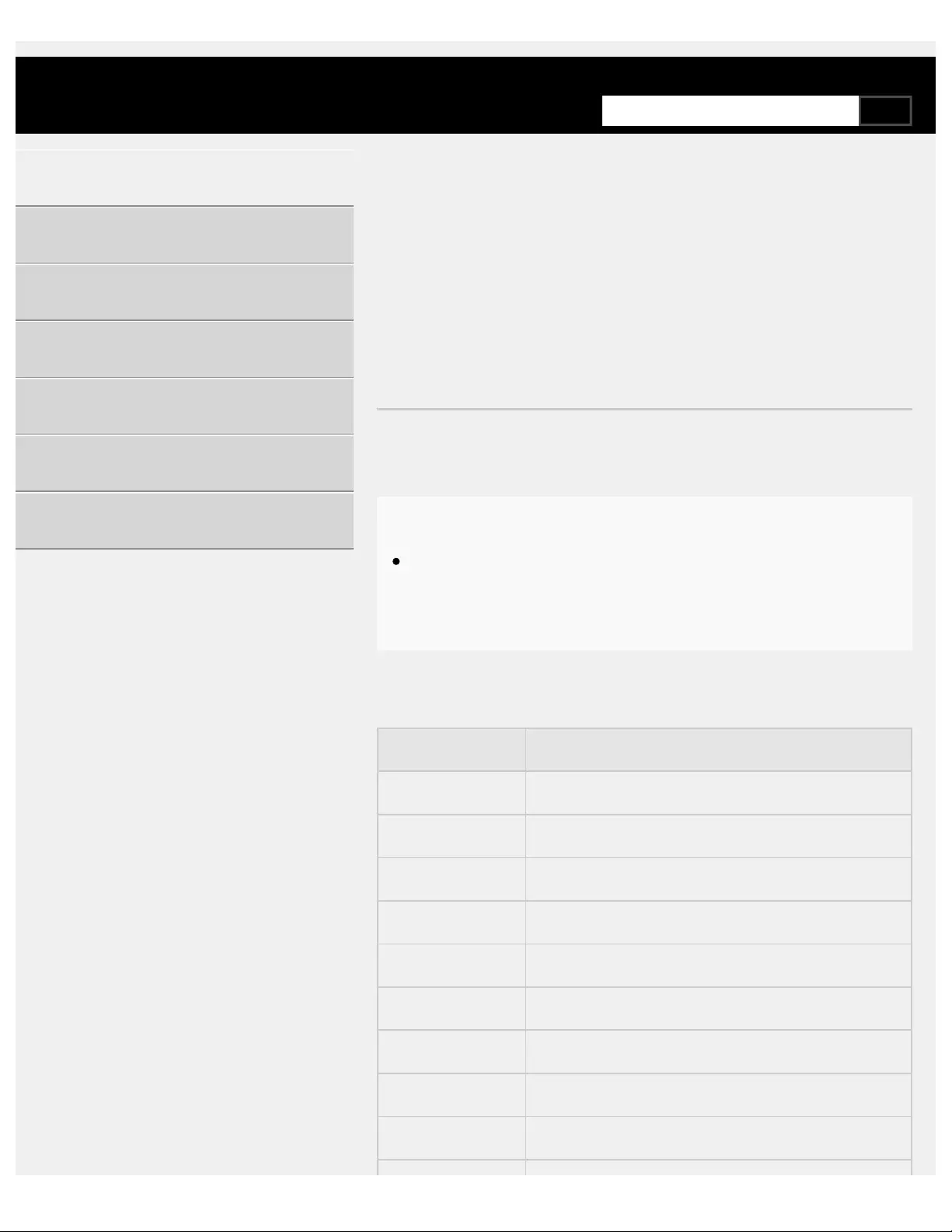
>Getting Started >Basic Operations
>Changing the picture and sound quality to your preferences
>“Picture adjustments” advanced settings
Print
“Picture adjustments” advanced
settings
This page introduces various settings for the features you can configure in
[Picture mode] and [Advanced settings].
Note
The actual display may vary or some settings may not be available
depending on your model/country/region and the content you are
watching.
Picture mode
Setting Description
Vivid Picture with enhanced edges and contrast.
Standard Suitable picture for basic home use.
Custom Customize picture settings.
Cinema pro Suitable picture for film based content.
Cinema home Suitable picture for watching movies at home.
Sports Suitable picture for watching sports.
Animation Suitable picture for watching animation.
Photo Vivid Picture with enhanced edges and contrast.
Photo Standard Suitable picture for basic home use.
Help Guide
Getting Started
Watching TV
Using the TV with Other Devices
Connecting to a Network
Settings
Troubleshooting
Index
382
SearchSearch

Photo Custom Customize picture settings.
Game Suitable picture for playing video games.
Graphics Suitable picture for watching tables and characters.
HDR Video Optimized for viewing HDR (High Dynamic Range)
videos.
Advanced settings
[Brightness] settings
Setting Description
Brightness Adjust the luminance level of the screen.
Contrast Adjust the picture white level.
Gamma Adjust the light and dark balance. Brighten or darken the
brightness between white and black.
Black level Adjust the picture black level.
Black adjust Enhance the black in images for stronger contrast.
Adv. contrast
enhancer
Automatically adjusts the contrast based on picture
brightness.
Auto local
dimming
Optimizes contrast by adjusting brightness in individual
sections of the screen.
X tended
Dynamic
Range
Adjust peak luminance for the brightest whites and
blackest blacks.
Peak
luminance
Adjust peak luminance for the brightest whites.
[Color] settings
Setting Description
Color Adjust the color saturation level.
Hue Adjust the green and red tones.
Color temperature Adjust the color temperature.
383
Search

Adv. color temperature Adjust the color temperature in detail.
Live Color Improve the vividness of colors.
[Clarity] settings
Setting Description
Sharpness Adjust the picture detail.
Reality
Creation
Adjusts fineness and noise for realistic picture.
If you select Manual, you can adjust Resolution.
Mastered in
4K
Optimizes picture quality for Blu ray discs mastered in 4K.
Applies to 1080/24p signals only.
Random
noise
reduction
Reduce repetitive random noise.
Digital noise
reduction
Reduce video compression noise.
Smooth
gradation
Create smooth gradations to reduce false contours on flat
surfaces.
[Motion] settings
Setting Description
Motionflow Refines moving images. Increases the number of image
frames to display videos smoothly.
CineMotion Optimizes picture quality based on video content, such as
movies and computer graphics. Smoothly reproduces the
motion of filmed images (images recorded at 24 frames per
second) such as movies.
LED
Motion
mode
Refines moving images.
[Video options] settings
Setting Description
HDR mode Picture that is suitable for a High Dynamic Range
384
Search

signal.
HDMI video
range
Select the signal range for HDMI input.
Color space Change the color reproduction range.
[Reset] settings
Setting Description
Reset Return all picture settings to factory default.
Related topics
Adjusting the picture quality
>Getting Started >Basic Operations
>Changing the picture and sound quality to your preferences
>“Picture adjustments” advanced settings
Go to page top
C-785-100-13(1)
Copyright 2018 Sony Visual Products Inc.
385
Search

>Getting Started >Basic Operations
>Changing the picture and sound quality to your preferences
>“Sound adjustments” advanced settings
Print
“Sound adjustments” advanced
settings
This page introduces various settings for the features you can configure in
[Sound adjustments].
Note
The actual display may vary or some settings may not be available
depending on your model/country/region and the connected device.
Setting Description
ClearAudio+ Achieves the best sound quality by applying a
well balanced combination of digital signal processing
technologies. Disable this setting when outputting audio from
both the TV and audio system through digital audio output.
Sound
mode
Sets various sound qualities. For details, refer to “[Sound
mode] settings” below.
Hi Res
upscaling
(DSEE HX)
Upscales existing sound source to near hi-resolution sound
quality with DSEE HX. Disable this setting when outputting
audio from both the TV and audio system through digital
audio output.
Surround Virtually reproduce realistic surround sound.
Sound
restoration
(DSEE)
Reproduces natural spatial sound by restoring high
frequencies and small sound often lost during digital
compression.
Voice Zoom Emphasize voice or ambient audio.
Night Clear sound at a low volume level.
Help Guide
Getting Started
Watching TV
Using the TV with Other Devices
Connecting to a Network
Settings
Troubleshooting
Index
386
SearchSearch

Wireless
Subwoofer
power
When set to [Auto], Wireless Subwoofer automatically turns
on when the TV is powered on.
Advanced
settings
Access advanced sound enhancing options. For details,
refer to “[Advanced settings]” below.
[Sound mode] settings
Setting Description
Standard Optimize sound quality for general content.
Dialog Suitable for spoken dialog.
Cinema Optimize surround sound suitable for movies.
Music Lets you experience dynamic and clear sound, like that of a
concert.
Sports Simulates the larger space of a stadium or other venue.
[Advanced settings]
Setting Description
Common Adjust [Advanced auto volume], [Balance], and [Digital audio out
volume].
Input
related
Adjust [Volume offset], [Dolby Dynamic Range], [MPEG audio
level], [HE AAC Dynamic Range], and [HE AAC audio level]
Sound
mode
related
Adjust [Surround effect], [Equalizer], and [Wireless Subwoofer].
Reset Return all sound settings to factory default.
Related topics
Adjusting the sound quality
>Getting Started >Basic Operations
>Changing the picture and sound quality to your preferences
387
Search















